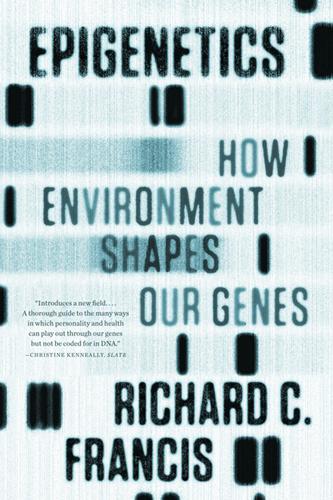
Epigenetics: How Environment Shapes Our Genes
by
Richard C. Francis
Published 14 May 2012
Why Epigenetic Inheritance Was Not Supposed to Occur For years, it was thought that true epigenetic inheritance was impossible. During the process of making sperm and eggs, all epigenetic marks were thought to be removed during a process called epigenetic reprogramming.16 Any epigenetic attachments that survived this process are removed during a new round of reprogramming soon after fertilization. Hence each new generation starts with a clean epigenetic slate. Recently, however, it has been demonstrated that epigenetic reprogramming does not wipe out every epigenetic mark. Some epigenetic changes, including those induced by environmental factors, are not erased; they are transmitted to the next generation.
…
And this epimutation has been stable, inherited in a quasi-Mendelian manner, for many years.25 Transgenerational Epigenetic Effects Epigenetic inheritance, such as occurs at the agouti locus and in A. thalinia, is but one form of what I will call a “transgenerational epigenetic effect,” by which I mean an epigenetic effect transmitted from parent to offspring and beyond.26 This broader category includes the social inheritance of the stress response in mice and other forms of nongenetic inheritance that have an epigenetic component. To qualify as epigenetic inheritance in the strict sense, though, the epigenetic attachment, or mark, must pass through the epigenetic reprogramming process intact.
…
This demethylation results in a host of abnormal gene activities, one consequence of which is unbridled cell proliferation. It is this global demethylation, not any particular mutation, which is the hallmark of cancer. This is good news, because unlike mutations epigenetic changes are reversible. The goal of much medical epigenetics is to find ways to reverse pathological epigenetic events. Many see in epigenetics the potential for a medical revolution. Another active area of epigenetic research concerns the fetal environment. Al and Bo are less different epigenetically than non-twin brothers because they shared similar environments throughout their lives. This is especially true of the environment they experienced in the womb.
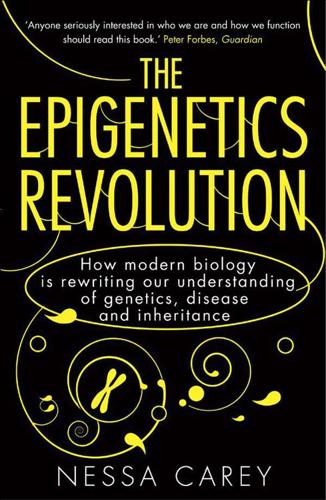
Epigenetics Revolution: How Modern Biology Is Rewriting Our Understanding of Genetics, Disease and Inheritance
by
Nessa Carey
Published 31 Aug 2011
They are all examples of epigenetics. Epigenetics is the new discipline that is revolutionising biology. Whenever two genetically identical individuals are non-identical in some way we can measure, this is called epigenetics. When a change in environment has biological consequences that last long after the event itself has vanished into distant memory, we are seeing an epigenetic effect in action. Epigenetic phenomena can be seen all around us, every day. Scientists have identified many examples of epigenetics, just like the ones described above, for many years. When scientists talk about epigenetics they are referring to all the cases where the genetic code alone isn’t enough to describe what’s happening – there must be something else going on as well.
…
The DNMTs are examples of epigenetic ‘writers’ – enzymes that create the epigenetic code. Most of the time these enzymes will only add a methyl group to a C that is followed by a G. C followed by G is known as CpG. This CpG methylation is an epigenetic modification, which is also known as an epigenetic mark. The chemical group is ‘stuck onto’ DNA but doesn’t actually alter the underlying genetic sequence. The C has been decorated rather than changed. Given that the modification is so small, it’s perhaps surprising that it will come up over and over again in this book, and in any discussion of epigenetics. This is because methylation of DNA has profound effects on how genes are expressed, and ultimately on cellular, tissue and whole-body functions.
…
The MLL2 protein is an epigenetic writer that adds methyl groups to a specific lysine amino acid at position 4 on histone H3. Patients with this mutation are unable to write their epigenetic code properly, and this leads to their symptoms. Human diseases can also be caused by mutations in enzymes that remove epigenetic modifications, i.e. ‘erasers’ of the epigenetic code. Mutations in a gene called PHF8, which removes methyl groups from a lysine at position 20 on histone H3, cause a syndrome of mental retardation and cleft palate12. In these cases, the patient’s cells put epigenetic modifications on without problems, but don’t remove them properly.
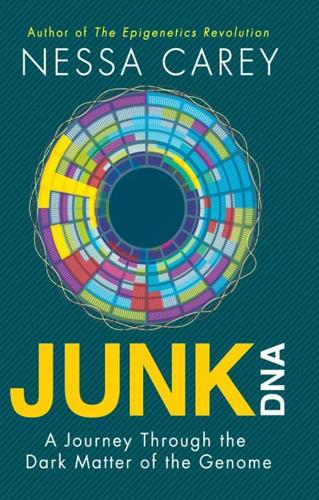
Junk DNA: A Journey Through the Dark Matter of the Genome
by
Nessa Carey
Published 5 Mar 2015
It certainly seems to involve the epigenetic system again, resulting in the deposition of repressive epigenetic modifications on the protein-coding genes. If key epigenetic genes such as the major repressor that we met in Chapter 9 are knocked out in developing embryos, some of the imprinted genes that would normally be switched off are expressed.6 It’s not just restricted to the major repressor either, as knockout of other epigenetic genes that establish repressive histone modifications has similar effects.7,8 This demonstrates the importance of the epigenetic system in carrying out the instructions of the long non-coding RNA.
…
The repressive modifications attract other proteins, which bind and repress the gene even further. This control by the major repressor epigenetic enzyme is frequently used to control genes that code for other epigenetic enzymes. Often, these will be genes that have the opposite effect to the major repressor, i.e. they tend to turn genes on. The overall effect is that the major repressor has a strong influence on general patterns of gene expression.3 It represses genes directly, but also indirectly by preventing expression of epigenetic enzymes that normally switch other genes on. An epigenetic double-punch. Usually this is a completely normal part of the control of gene expression that happens in our cells, and the system is doing exactly what it’s supposed to, making sure that all the complex cellular pathways run in an integrated fashion.
…
Perhaps it’s no surprise that it’s the one whose cross-talk with the epigenetic system has been shown most clearly. As Xist spreads along the X chromosome it attracts other proteins. Many of these are epigenetic enzymes that add chemical modifications to either the DNA or the histone protein. They include the major repressor of histones, and also the enzymes that add methyl groups to DNA.13 The epigenetic modifications they produce strengthen the shutdown of genes and ultimately lead to hyper-compaction of the inactive X chromosome, and the formation of the Barr Body that we encountered in Chapter 7 (see page 84). It may seem puzzling that the epigenetic modifications always get re-established on the correct X chromosome after cell division.

Lifespan: Why We Age—and Why We Don't Have To
by
David A. Sinclair
and
Matthew D. Laplante
Published 9 Sep 2019
Sirtuins, for example, are enzymes that use NAD to remove acetyl chemical groups from histones. EPIGENETIC: Refers to changes to a cell’s gene expression that do not involve altering its DNA code. Instead the DNA and the histones that the DNA is wrapped around are “tagged” with removable chemical signals (see Demethylation and deacetylation). Epigenetic marks tell other proteins where and when to read the DNA, comparable to sticking a note that says “Skip” onto a page of a book. A reader will ignore the page, but the book itself has not been changed. EPIGENETIC DRIFT AND EPIGENETIC NOISE: Alterations to the epigenome that take place with age due to changes in methylation, often related to an individual’s exposure to environmental factors.
…
Today, analog information is more commonly referred to as the epigenome, meaning traits that are heritable that aren’t transmitted by genetic means. The term epigenetics was first coined in 1942 by Conrad H. Waddington, a British developmental biologist, while working at Cambridge University. In the past decade, the meaning of the word epigenetics has expanded into other areas of biology that have less to do with heredity—including embryonic development, gene switch networks, and chemical modifications of DNA-packaging proteins—much to the chagrin of orthodox geneticists in my department at Harvard Medical School. In the same way that genetic information is stored as DNA, epigenetic information is stored in a structure called chromatin.
…
We know that emerging research strongly suggests they could have a similar, if not duplicative, effect on human health. We also know that the way it does this, in terms of the epigenetic landscape, is by creating the right level of stress—just enough to push our longevity genes into action to suppress epigenetic changes to maintain the youthful program. In doing so, NMN and other vitality molecules, including metformin and rapamycin, reduce the buildup of informational noise that causes aging, thus restoring the program. How do they do this? We are still working to understand how epigenetic noise is dampened at a molecular level, but we know in principle how it works. When we give silencing proteins such as sirtuins a boost, they can maintain the youthful epigenome even with DNA damage occurring, like the long-lived yeast cells with extra copies of the SIR2 gene.
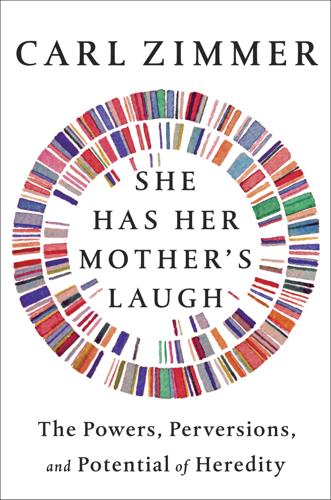
She Has Her Mother's Laugh
by
Carl Zimmer
Published 29 May 2018
It’s even possible that the way scientists search for epigenetic change may trick them into seeing it where none exists. Perhaps the epigenetic clock is not produced by cells changing their epigenetic marks, for example. Perhaps some types of cells become more common as we get older, and those cells have different epigenetic marks than the cells more common in youth. These uncertainties have not scared off scientists from studying epigenetics, however. The stakes are just too high. By cracking the epigenetic code, researchers may discover a link between nurture and nature. And if we can rewrite that code, we may be able to treat diseases by altering the way our genes work
…
The following year, the same oak will produce a new batch of stem cells at its branch tips that will grow into flowers and sex cells. It will keep doing so for centuries. In other words, there’s plenty of time—and plenty of cell divisions—for the epigenetic patterns in red oaks to change before their somatic cells turn into germ cells. And since plants don’t reset their epigenetic marks in germ cells the way animals do, there’s an opportunity for a new red oak tree to inherit new epigenetic marks from its parents. There’s another important difference between animal epigenetics and plant epigenetics. Even though plants cover their genes with the same methyl groups, they use different molecules to apply them. Martienssen and other researchers have discovered that plants do so by producing small RNA molecules, each of which can home in on specific segments of DNA.
…
When a team of researchers in the Netherlands read the study, they quickly tested out the epigenetic clock with samples of blood they had collected from Dutch soldiers. They could accurately guess the soldiers’ ages to within a few months. As provocative as such studies are, it’s still far from clear whether the epigenetic clock matters much. The same uncertainty hovers over studies on how negative experiences can trigger epigenetic changes in the brain and the body. These studies tend to be small, and sometimes when other scientists replicate them, they fail to see the same results. It’s even possible that the way scientists search for epigenetic change may trick them into seeing it where none exists.

Ageless: The New Science of Getting Older Without Getting Old
by
Andrew Steele
Published 24 Dec 2020
The next step was to study people whose epigenetic age differs from their chronological age. Say you were actually 50 but your epigenetic age was 53, you’d be said to have an epigenetic ‘age acceleration’ of three years. Multiple studies have now shown that epigenetic age acceleration is bad news – people with an epigenetic age beyond their years die sooner. Happily, the converse is also true – it’s possible to be biologically younger than your calendar age, too, and thereby healthier and at less risk of death. The morbid precision of epigenetic clocks either suggests that epigenetic changes are a cause of ageing, or at least that they are a window through which to understand how our bodies get biologically older with time. 5.
…
The first line of evidence for this rejuvenation is the epigenetic clock, the freakishly accurate predictor of biological age based on epigenetic marks on your DNA we met in Chapter 4. Steve Horvath actually found this in the 2013 paper where he announced his clock. Having established that it worked over many different types of tissue, he made one final test of its predictive power: he used it to calculate the epigenetic age of both embryonic stem cells – ‘naturally’ young cells isolated from a human embryo just a few days after sperm met egg – and iPSCs, derived from cells obtained from adults. The embryonic cells had an epigenetic age close to zero, which makes sense.
…
The adult cells used to make the iPSCs had a normal epigenetic age corresponding to that of their donor, which also makes sense. But the iPSCs themselves were epigenetically zero years old – their biological clock had been reset, making them indistinguishable from their embryonic counterparts. Experiments since have doubled down on this finding: fully functional iPSCs have been successfully derived from people as old as 114, and the cells have an epigenetic age of zero whether the donor was a young adult or a centenarian. Even better, differentiating these iPSCs into specific cell types leaves their epigenetic youthfulness intact.
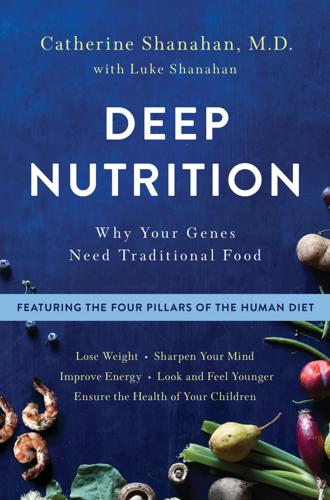
Deep Nutrition: Why Your Genes Need Traditional Food
by
Catherine Shanahan M. D.
Published 2 Jan 2017
In the section titled “What Makes DNA Forget” in Chapter 2, I touched upon the idea that an optimal nutritional environment is required to ensure the accurate transcription of genetic material and communication of epigenetic bookmarking, and how a pro-oxidative, pro-inflammatory diet can sabotage this delicate operation in ways that can lead to mutation and alter normal growth. There I focused on mistakes made in epigenetic programming, what you could call de novo epigenetic abnormalities. The same prerequisites that support proper epigenetic data communication, I submit, apply equally to the proper transcription of genetic data. A FOUR-STEP PATH TO UNDERSTANDING AND PREVENTING AUTISM 1.
…
This is also the first book to discuss health across generations. Because of a new science called epigenetics, it will no longer make sense to consider our health purely on the personal level. When we think of our health, we think of our own bodies, as in “I feel good,” “I like my weight,” “I’m doing fine.” Epigenetics is teaching us that our genes can be healthy or sick, just like we can. And if our genes are healthy when we have children, that health is imparted to them. If our genes are ailing, then that illness can be inherited as well. Because epigenetics allows us to consider health in the context of a longer timeline, we are now able to understand how what we eat as parents can change everything about our children, even the way they look.
…
While the project’s supporters described our chromosomes as static chunks of information that could be easily (and safely) manipulated, a new field of science, called epigenetics, had already proved this fundamental assumption wrong. Epigenetics helps us understand that the genome is more like a dynamic, living being—growing, learning, and adapting constantly. You may have heard that most disease is due to random mutations, or “bad” genes. But epigenetics tells us otherwise. If you need glasses or get cancer or age faster than you should, you very well may have perfectly normal genes. What’s gone wrong is how they function, what scientists call genetic expression.
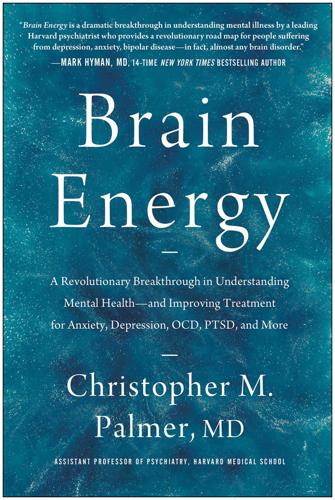
Brain Energy: A Revolutionary Breakthrough in Understanding Mental Health--And Improving Treatment for Anxiety, Depression, OCD, PTSD, and More
by
Christopher M. Palmer Md
Published 15 Nov 2022
In addition to methylation and histones, there are many other factors that are involved in epigenetics. More and more are being discovered every year. They include factors like micro-RNAs, hormones, neuropeptides, and others. This field quickly becomes confusing and overwhelming, as there are so many factors that are involved in the epigenetic control of our DNA. However, if you take a step back and look at the field from a broader perspective, things become less confusing. What influences epigenetics? What triggers all these different factors to change gene expression? Almost all of them revolve around metabolism and mitochondria. Factors thought to influence epigenetics include diet, exercise, drug and alcohol use, hormones, light exposure, and sleep—all related to metabolism and mitochondria (as you will soon learn).
…
As a specific example, smokers tend to have less DNA methylation of the AHRR gene compared to nonsmokers.11 However, if they stop smoking, this change in methylation is reversible. In the end, it’s important to think about epigenetics as metabolic blueprints for cells. Epigenetics simply reflect the gene patterns that allow cells to do their best to survive and cope with their environments. However, if they get stuck in a maladaptive pattern or if the appropriate signals aren’t being sent, that can become problematic. Recall that mitochondria are regulators of epigenetics. They influence gene expression through levels of ROS, levels of glucose and amino acids, and levels of ATP. Also recall that mitochondria appear to control the expression of essentially all genes for a cell.
…
This line of research continues to this day, but what it clearly demonstrates is that epigenetics appears to be playing a significant role in the transmission of mental disorders from parents to children, and even grandchildren. What Genetics and Epigenetics Can Tell Us About Causes—and Treatment Although some have been disappointed with our inability to find specific genes related to mental disorders, at the end of the day, I believe it’s a good thing. We now know that there are usually not “abnormal” genes that cause mental illness. It’s much more likely that the transmission of mental illness from parents to children takes place through epigenetic mechanisms. The hopeful aspect of this insight is that most of these epigenetic mechanisms are known to be reversible!
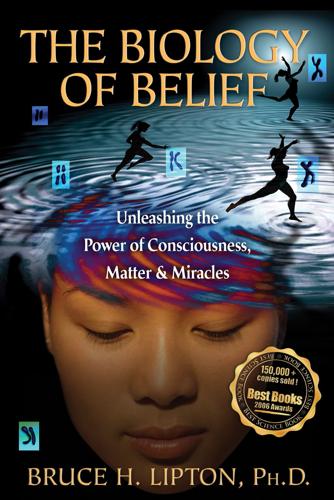
The Biology of Belief: Unleashing the Power of Consciousness, Matter & Miracles
by
Bruce H. Lipton
Published 1 Jan 2005
Males have often been accused of thinking with their gonads, so it’s not entirely surprising that science has inadvertently confused the nucleus with the cell’s brain! Epigenetics: The New Science of Self-Empowerment Genes-as-destiny theorists have obviously ignored hundred-year old science about enucleated cells, but they cannot ignore new research that undermines their belief in genetic determinism. While the Human Genome Project was making headlines, a group of scientists were inaugurating a new, revolutionary field in biology called epigenetics. The science of epigenetics, which literally means “control above genetics,” profoundly changes our understanding of how life is controlled. (Pray 2004; Silverman 2004) In the last decade, epigenetic research has established that DNA blueprints passed down through genes are not set in concrete at birth.
…
Second, the new science of Epigenetics, which literally means “control above the genes,” has completely upended our conventional understanding of genetic control. Epigenetics is the science of how environmental signals select, modify, and regulate gene activity. This new awareness reveals that our genes are constantly being remodeled in response to life experiences. Which again emphasizes that our perceptions of life shape our biology. Months after this book was first published, an article in one of the most prestigious journals, Nature, revealed exciting new epigenetic insights on how the environment controls gene activity in stem cells, which coincidently is the same subject and conclusion I offer in Chapter 2.
…
By adjusting the dials, you can alter the appearance of the pattern on the screen, while not actually changing the original broadcast pattern. This is precisely the role of regulatory proteins. Studies of protein synthesis reveal that epigenetic “dials” can create 2,000 or more variations of proteins from the same gene blueprint. (Bray 2003; Schmuker, et al, 2000) In this epigenetic analogy, the test pattern on the screen represents the protein backbone pattern encoded by a gene. While the TV’s controls can change the appearance of the pattern (B and C), they do not change the original pattern of the broadcast (i.e., the gene). Epigenetic control modifies the read-out of a gene without changing the DNA code. Parental Life Experiences Shape Their Children’s Genetic Character We now know that the environmentally influenced fine-tuning described above can be passed from generation to generation.
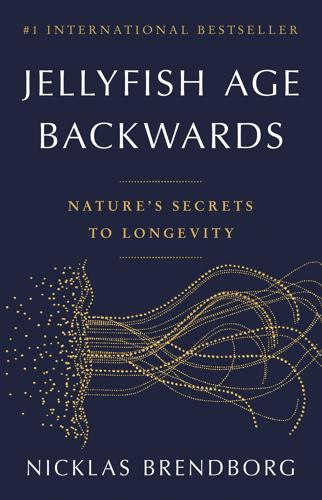
Jellyfish Age Backwards: Nature's Secrets to Longevity
by
Nicklas Brendborg
Published 17 Jan 2023
In 2013, the German-American scientist Steve Horvath presented a new biological clock that beats telomere-shortening, along with pretty much everything else we have. This new biological clock is often called ‘the epigenetic clock’, and the way it works is a little complicated. But let’s give it a shot. As the name implies, the epigenetic clock is based on something called epigenetics. You can think of epigenetics as a control system inside your cells. Remember, all your cells (except red blood cells) have all of your DNA – the entire genetic recipe for making you. But for the most part, your cells only need a tiny fraction of the recipe at any given time.
…
This becomes a hazard when genes involved in growth are activated even though we finished growing long ago, because this growth promotion can stimulate the growth of cancers. Despite this neat story, Steve Horvath has proved that epigenetic changes later in life are not random after all. They keep following a specific pattern, almost as if the developmental programme continues. Programmed ageing? In order to remain sane, scientists have resolved to call this pattern ‘quasiprogrammed’. Whatever the reason, though, the predictability of epigenetic changes can be used to determine the biological age of a cell. The epigenetic clock uses a particular epigenetic ‘tag’ called methylation which is used to turn genes off. Scientists measure the amount of methylation in specific genetic places and because the age-related changes follow a pattern, they can use statistics to determine biological age with high accuracy.
…
Some genes are only needed during early development, some are needed to become a certain type of cell, and some are useful for growing up and becoming a mature adult. However, at that point, we would then expect our epigenetics to stay relatively set. After all, once you’ve become an adult, the programme has successfully run to completion. But surprisingly, epigenetic changes keep happening, even later in life. Scientists used to believe this was simply due to cellular machinery getting faulty with age. They imagined cells slowly losing control and ending up putting essentially random tags on genes. To support this, most of the age-related epigenetic changes are loss of the ability to turn genes off effectively. This becomes a hazard when genes involved in growth are activated even though we finished growing long ago, because this growth promotion can stimulate the growth of cancers.
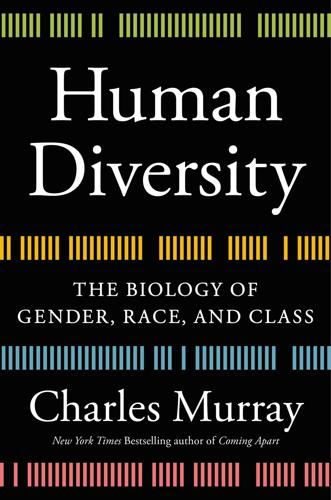
Human Diversity: The Biology of Gender, Race, and Class
by
Charles Murray
Published 28 Jan 2020
“There’s two rounds of epigenetic programming that basically prevent any epigenetic marks from being transmitted from one generation to the next,” she told The Scientist. “People don’t seem to appreciate this.”85 Bernhard Horsthemke, director of the Institut für Humangenetik at the University of Duisburg-Essen, has expressed the problems at greater length by putting together a “roadmap to proving transgenerational epigenetic inheritance.” I’ve consigned it to a note because it is long and technical—but that’s my point.[86] The accounts of the transgenerational epigenetic effects of famines and the Holocaust that have gotten so much press ignore all of these methodological problems.
…
It was made famous by Kuhn (2012): 150. 76. Greally (2015). 77. Kevin Mitchell, “The Trouble with Epigenetics (Part 1),” Wiring the Brain, January 7, 2013, wiringthebrain.com; Kevin Mitchell, “The Trouble with Epigenetics (Part 2),” Wiring the Brain, January 14, 2013. 78. Kevin Mitchell, “Grandma’s Trauma—A Critical Appraisal of the Evidence for Transgenerational Epigenetic Inheritance in Humans,” Wiring the Brain, May 29, 2018, wiringthebrain.com. 79. Jill Escher, “No Convincing Evidence? A Response to Kevin Mitchell’s Reckless Attack on Epigenetic Inheritance,” Germline Exposures, July 18, 2018, germlineexposures.org. 80.
…
“But You’re Ignoring Epigenetics!” Raise the topic of genes’ role in affecting human behavior, and chances are good that someone is going to tell you that you’re hopelessly behind the times. Epigenetics has proved that alterations in the environment can change our genes, and therefore traditional beliefs about inborn characteristics are outdated and irrelevant. It’s no surprise that this view is so widespread. Respectable media have been reporting it for years. Time magazine explained “Why Your DNA Isn’t Your Destiny” back in 2010, with the subtitle “The new field of epigenetics is showing how your environment and your choices can influence your genetic code—and that of your kids.”57 In 2013, Discover magazine told us that “the genome has long been known as the blueprint of life, but the epigenome is life’s Etch A Sketch: Shake it hard enough, and you can wipe clean the family curse.”58 The New York Review of Books weighed in with “Epigenetics: The Evolution Revolution” in its issue of June 7, 2018.
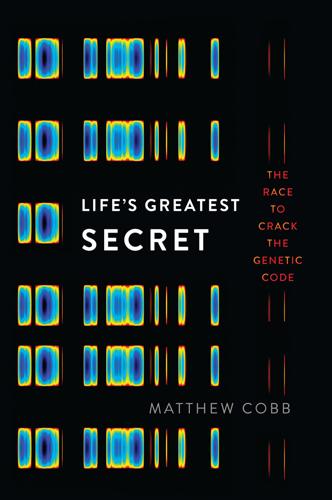
Life's Greatest Secret: The Race to Crack the Genetic Code
by
Matthew Cobb
Published 6 Jul 2015
Other molecules can have long-lasting effects down the generations, so for example if the nematode worm C. elegans becomes resistant to a virus, that resistance can be transmitted for several generations through the presence of small protective RNA molecules in the sperm cells; these molecules are directly involved in resistance to the virus, not in gene regulation.32 Even in plants there are limits to the significance of the inheritance of epigenetic factors. First, the environment can only alter gene regulation: there is no evidence that it can lead to any direct alteration of the genetic code. Second, for the moment, despite some tantalising hints that DNA methylation may be involved in a plant’s response to bacterial infection, there is not one clear example of an epigenetically based adaptation that is of a character that increases the fitness of the organism.33 However, epigenetic manipulation may have important consequences for plant breeding in the future. In the laboratory plant Arabidopsis, heritable epigenetic factors have been found to affect flowering time and root length, and can be subject to artificial selection.
…
This kind of phenomenon is often described as an ‘epigenetic’ effect, even where no effect on genes has been demonstrated. Strictly speaking, ‘epigenetic’ refers to any way in which the genetic code is modulated on its route from DNA sequence in a cell into an expressed character; that is, how genes are regulated.20 However, the term is increasingly being used primarily to describe rare cases in which changes in gene regulation are transmitted down the generations. Journalists, philosophers and scientists have claimed that transgenerational epigenetics radically alters our understanding of inheritance and evolution, and even marks ‘victory over the genes’ as the German magazine Der Spiegel put it in 2010.21 The truth is somewhat less dramatic.
…
Journalists, philosophers and scientists have claimed that transgenerational epigenetics radically alters our understanding of inheritance and evolution, and even marks ‘victory over the genes’ as the German magazine Der Spiegel put it in 2010.21 The truth is somewhat less dramatic. In their most widespread form, epigenetic effects explain how genes are turned off and on in our cells, enabling each specific cell type to appear, allowing a complex organism with various kinds of tissues to develop from a single-celled embryo – precisely the mystery highlighted by Jacob and Monod when they discovered the first example of a regulator gene. In other words, epigenetic effects, whether they are transgenerational or occur in a single organism, are examples of gene regulation.* Epigenetic regulation often involves the activity of small RNA molecules, which are produced by genes in complex regulatory networks.22 One of the most widely studied forms of epigenetic control is the placing of epigenetic marks on genes, which occurs when the cell adds a methyl group (CH3) onto a cytosine base of a DNA sequence.
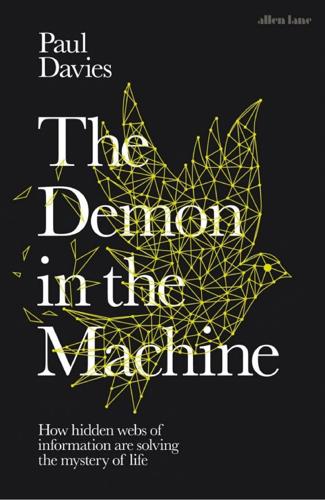
The Demon in the Machine: How Hidden Webs of Information Are Finally Solving the Mystery of Life
by
Paul Davies
Published 31 Jan 2019
If a female donkey is crossed with a male horse, the result is a hinny. Mules and hinnies are genetically identical but very different-looking animals: they are epigenetically distinct, and so they must carry epigenetic determinants that depend on the sex of their parents. Other examples have been discovered where genes from the parents are imprinted with epigenetic molecular marks that manage to get into the germ cells and survive the reproductive process. Moreover, botanists know many cases where epigenetic changes accumulated during a plant’s life are passed on to the next and subsequent generations. Even in humans some studies have uncovered hints of something similar.
…
How does a deer’s head know its antler has a notch half a metre away from it, and how do cells at the scalp store a map of the branching structure so as to note exactly where the notch was? Weird! In the magic puzzle box of life, epigenetic inheritance is one of the more puzzling bits of magic. Box 10: Epigenetic inheritance Like the proverbial farmer’s wife, the German evolutionary biologist August Weismann cut off the tails of mice over many generations, but he never succeeded in producing a tailless mouse – a blow to Lamarck’s theory of evolution by the inheritance of acquired characteristics. However, the recent surge in the study of epigenetics is painting a more nuanced picture. Within the body, a cell’s type is conserved when the cell divides: if, say, a liver cell replicates, it makes two liver cells, not a liver cell and a skin cell.
…
So the epigenetic markers (for example, methylation patterns) that determine gene expression (‘Thou shalt be a liver cell’) will be passed on to the daughter cells. But what about epigenetic changes passed from one generation of the whole organism to the next, for example, from mother to son? That is a very different matter; if it occurred, it would strike at the very basis of Darwinian evolution. There is not supposed to be any mechanism for changes to an organism’s body to get into its germ line (sperm and eggs) and affect its offspring. Nevertheless, evidence for intergenerational epigenetic inheritance has long been staring biologists in the face.
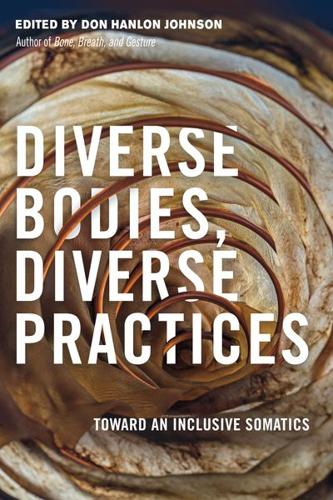
Diverse Bodies, Diverse Practices: Toward an Inclusive Somatics
by
Don Hanlon Johnson
Published 10 Sep 2018
Despite now clear definitive genetic evidence to the contrary (though ambiguous with two theories positing placeholders for genes), the idea that someone can be born gay has essentially lacked scientific proof. This leads people to epigenetics, which assumes the causality to exist in the influence of the environment on gene expression or suppression.16 16 Epigenetics is the process by which patterns of gene expression are modified in a mitotically heritable manner by mechanisms that do not involve DNA mutation. Carrie Deans and Keith Maggert, Genetics, 2015. Genetic Theory and Epigenetics The intersection of the body and environment comes together in epigenetic theory—the expression or non-expression of genetic material based on environmental influences.
…
and questions of lineage, 161–165 who decides group membership, 175–178 black people books authored by prominent, 229 on double consciousness in the U.S. of, 186 blackness, identifying with, 176–177 blessings (iré), cowry shell divination, 47–48 blue, as color of the West, 55 bodily practices. see also Japanese society, bodily practices as alienation from authentic self, 203–204 body as authentic self in, 204 constriction and release in, 82–83 rarely valued as theme of academic study, 202 somatics as new field of, 204–208 body accessing in somatic practice, 189 in autism. see autistic embodiment Babaylan and decolonizing of, 191 beginning of embodiment, 252–253 and body politic, 12–16 derivation of word, 10 and environment in epigenetics, 257–259 impact of life on gay men, 262–264 as interconnected process, 133–135 learning how to hold e, 243 as process, 133 reframing as resource and teacher, 86 returning to African ways of embodiment, 244 soma-cultural perspective on. see balance, seeking via 5Rhythms somatics and the social, 201–204 white people and safety of, 237–240 working with other autistics, 116 body politic, and body, 12–16 body practices, social change and, 9–12 body privilege, in gay community, 267–268 Bodynamics, reservoir theory, 268 bonsai tree metaphor, gay men, 254–255, 275 borderlands body and body politic, 12–16 democratic sensibility, 5–9 disoriented and vulnerable wanderers in, 4 from division to creation, 1–3 making bodies and social change, 9–12 shared suffering, 3–5 somatics, 16–19 Bowen, Bill, 265 Bowlby, John, 56 bracketing, mental vs. bodily, 206 brain causing dyspraxia in autistics, 96–97 cortical neurons in autistic, 91 epigenetic research on, 259 neuroplasticity of autistic, 106–107 in protogay child, 261–262 Brainspotting, pattern theory, 266 bullying childhood experiences of racism via, 232–233 most autistic children subjected to, 102 preventing by learning aikido, 106 Bureau of Indian Affairs (BIA), AIAN nations eligibility for benefits, 26 C Cabbage Patch doll, 166–167 California Institute of Integral Studies (CIIS), 82–83 Call of the Wild (London), 255 caregivers, attachment to our, 56 cathexis point, reservoir theory, 268–269 Catholic imperialism, 185–186, 187–189 Catholicism, red color in, 51 celibacy, Gandhi’s pleas for, 13 centering, and autistic students/clients, 116–117 chachayotes (ankle rattles), Danza Azteca, 52 Chang, Iris, 213–214 chant (oli), Hula Kahiko traditions, 60–61 chaos, rhythm of 5Rhythms and, 36–37 defined, 31 leads to catharsis, then to lyrical, 37–38 somatic sense of self, 40–42 Chemsex, 270 children, South as direction of, 64–66 Chinese-American civil movement, 213–214 CIIS (California Institute of Integral Studies), 82–83 clients, autistic, 116–117 closing the Gap, 145–147 cognition, autistic neurobiology and, 90 collective Gap, 135–139 collective wounding, depression, 144–145 colonialism colonization in Philippines, 184–189 decolonization in Philippines. see decolonization, somatics of Gandhi on purging body of effects of, 13 Gandhi’s analysis of, 15–16 hiding Lukimi practices during, 45 integrating oppression into somatics, 184 coming out process breaking free as gay man, 255 how gay men come into being, 257 increasing resiliency via, 274 Coming to America movie, 244 communal organization, 5–8 community breaking free as gay man and, 256 creating new social order, 2–3 double consciousness from loss of, 187 gay man expressing embodiment in, 274 joining Soul Sistah Circle, 172 complexity theory, Edgar Morin, 263 Connections (Roth), 41 consecrated beaded necklace/flag (eleke), Lukimi, 48–49 constriction, and release, 82–84 constructionist worldview, 21 containment, direction of west and, 56 cooperative communal organization, 5–8 Core Energetics, reservoir theory, 268 cortical neurons, autistic brain, 91 cowry shell divination (diloggun reading), 45–46 cowry shell diviner (oriate), 47–48 creation,, from division to, 1–3 creativity, difference essential to, 1–2 Crutcher, Terrance (killing of), 172 cultivation, narratives of in this book, 12 cycle of inquiry, somatic sense of self, 40–41 D dance of 5Rhythms. see 5Rhythms practice asking permission of ancestors to, 60–61 of autistic embodiment, 99–100, 103, 110–111, 114 between body and world, 133 changing bodily practice of, 9 feeling in sync with external universe, 50 freedom via, 25 with the Gap, 123–126, 135–139, 146–147 healing divided mind and body, 17, 25 as process of lifelong learning, 23 shaping infant into adult, 11 West African. see West African dance danzante, Danza Azteca and, 52–53 de-armoring, autistics, 117 decolonization, somatics of accessing depth through Babaylan, 189–192 accessing length through Bahala Na, 194–196 accessing width through Kapwa, 192–194 collective dignity, collective responsibility, 196–197 DeGruy, Joy, 87, 235 de-historicizing the body, 210–212, 213 democracy creating inclusive social order, 5–6 European Enlightenment subordinated, 7–8 in fifth-century BCE Greece, 6 long struggle of, 6–7 nurturing individual/collective healing, 8–9 welfare of others in, 7 depression from childhood abuses, 259 family lineage of, 144 in gap between wounding/healing, 124–125 as individual and collective, 144–145 isolation in, 143–144 toying with death in, 130–131 despair, kapwa as anchor for deep, 194 determination in face of uncertainty (bahala na), 195–196 Dewey, John, 8–9 DiAngelo, Robin, 153–154 difference, essential to creativity, 1–2 dignity, collective, 196–197 diloggun reading (cowry shell divination), 45–46 diversity autism and human neurodiversity, 90 creating new out of, 2 soma-cultural perspective on, 21–22 division, to creation from, 1–3 DNA markers, passing trauma through epigenetic, 235, 236 dolls, in biracial childhood, 166–167 double consciousness of black people in U.S., 186 of Filipinos after generations of colonialism, 187 drugs, influence on gay somatic life, 269–270 drums, 244–245 Du Bois, W.E.B., 186, 191, 229 dual attention cultivating mindful presence, 107 quality of expansiveness in, 109 work with autistic students and clients, 117 Duncan, Isadora, 206 dununba (largest dun), 244 dununfola (player of drums), 245 dununs (three drums), 244 dyspraxia in autistic individuals, 96–97 neuroplasticity supplanting, 107 shaming young autistics for lack of physical aptitude, 103 E Ealom, Tayla. see social wounds/personal transformation Earth direction of South as element of, 64 rhythm of flowing and Mother, 33–34 East, direction of the, 51–53 Eastern philosophy, mind-body issue in, 11 ebbo prescriptions, cowry shell divination, 48–49 Ebonics, 234 ecstasy, in sexual experiences/expression, 36–37 efun (used in ceremony for protection), 60 elders, North as direction of, 59 Eleggua, as living energy in Lakimi, 49 eleke (consecrated beaded necklace/flag), Lukimi practice, 48–49 Emancipation Proclamation, 222 embodiment autistic. see autistic embodiment gay men and therapeutic, 271–276 gay men seek to explain their, 257 reawakening for gay men, 255 relationship of protogay boy to, 261 EMDR (Eye Movement Desensitization and Reprocessing), pattern theory, 266 Emergent Strategy (Brown), 80, 84 emotion, ethnic origin and, 152 empire, oppression of, 184 engagement, somatic sense of self, 40–41 ennvrkvpv (in the middle) sexual orientation, 28 Enriquez, Virgilio, 189, 195 environment autistic embodiment and, 115 and body in epigenetics, 257–259 embodied experience shaped by, 230 expanding/contracting and, 81–84 gay men profoundly shaped by, 255 molded into different shapes by our, 275 White people’s social, 153 whole body interaction with, 131–132 epigenetics genetic theory and, 257–259 how gay men come into being, 257 passing trauma through DNA markers, 235, 236 physical environment and, 269 Erotic Mind (Morin), 272 Europe, Reich addressing social devastation in, 13–14 European Enlightenment, 7–8, 10 expansiveness as quality of akido, 109 working with other autistics, 117 experience characteristics of, 207–208 disconnection of thought and, 206 environment shapes our embodied, 230 as a flow, 207 learning from history, 208–210 nature of autistic, 90–91 peace education grounded in, 208–210 trauma manifests in embodied, 236 unexamined framework of bodily, 206 Worldwork field dynamics and, 212–213 Experiencing and the Creation of Meaning (Gendlin), 206–208 experiential psychology, 212–216 external experience (labas), kapwa and, 194 eye contact, autistics and, 95–96 Eye Movement Desensitization and Reprocessing (EMDR), pattern theory, 266 F fable-like story (patakí), cowry shell divination, 47 fallow field concept, rhythm of stillness, 38–39 family origins, biracial child, 161–162 fascism, Reich’s analysis of, 14–16 Faye, Oumou, 245 field dynamics, Worldwork, 212–213 flowers, South as direction of, 64 flowing, rhythm of 5Rhythms and, 32–34 defined, 31 exploring somatic sense of self, 40–42 For Harriet, online community, 175 Foster, Kimberley, 175 Francis-Ecoffey, Stephanie. see black and white: biracial in America freedom letting go of chaos for, 38 requires body practices, 14 Freudian psychology U.S. colonial rule in Philippines and, 186–187 Wilhelm Reich shaped by, 14 Fukuma, Yoshiaki, 208–209 G Gandhi, Mohandas, 12–16 Gap closing, 145–147 collective, 135–139 definition of, 123 and I, 123–134 structuring, 139–143 gay coming out as, 33 what it means to be, 22–23 gay men, somatic psychotherapy and beginning of embodiment, 252–253 beginning to work with, 253–257 bibliography, 276–282 coming into being, 257–265 genetic theory and epigenetics, 257–259 how I got here, 251–252 overview of, 249–250 physical psychoeducation, 265–266 protogay boy, 260–261 protogay child, 261–265 revisiting epigenetics, 269–271 somatic theory, 266–269 therapeutic embodiment and, 271–276 Gendlin, Eugene, 61, 131–132, 206–208 genetic theory, and epigenetics, 257–259 The Great Turning, awaits us, 146 Greece, democracy in in fifth-century BCE, 6 grief colonialism and undigested, 188 exploring using rhythm of staccato, 35 healing by turning slowly towards wound, 146–147 from impacts of racism, 122, 139, 144–145 kapwa as anchor for deep, 194 living in white supremacist culture and, 170–172 role of Babaylan in guidance through, 190 as turning point in healing process, 3, 190 Griffin, Susan, 6–7, 202, 210 guilt creating personhood without, 183 of having caused pain to others, 79 undoing fat hatred in order to process, 81 Gutierrez, Francisca, 65 Gutiérrez.
…
There has been a long and ongoing discussion about the origins and validity of homosexuality as a genetic and naturally occurring phenomenon.18 Theories from both the nature and nurture domains have continuously striven to ascribe gayness to a single causative factor as opposed to a more complex source in which multiple factors in relationship are responsible for homosexuality and its theoretical natural place in genetic difference—in other words, epigenetic factors.19 The neurobiology of sexuality and orientation is still a young science, with theories ranging from the effects of prenatal hormonal disturbances to the influence of number of siblings and other epigenetic changes, and studies remain inconclusive as to any single causative agent.20 A number of researchers have conjectured that homosexuality occurs through a process termed “canalized sexual development.”21 A simple way to state the theory is that it takes a quantity of genetic material and environmental factors to collectively create a threshold point, after which the genes are then channeled into a phenotypical sexual orientation.
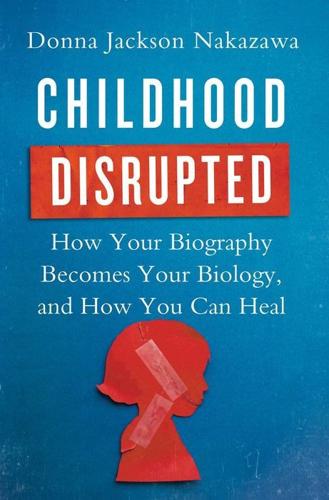
Childhood Disrupted: How Your Biography Becomes Your Biology, and How You Can Heal
by
Donna Jackson Nakazawa
Published 6 Jul 2015
“Early stress causes changes in the brain that reset the immune system so that either you no longer respond to stress or you respond in an exacerbated way and can’t shut off that stress response,” she says. This change to our lifelong stress response happens through a process known as epigenetics. Epigenetic changes occur when early environmental influences both good (nurturing caregivers, a healthy diet, clean air and water) and bad (stressful conditions, poor diet, infections, or harmful chemicals) permanently alter which genes become active in the body. These epigenetic shifts take place due to a process called gene methylation. McCarthy explains, “Our DNA is not just sitting there. It’s wrapped up very tightly and coated in protected proteins, which together make up the chromosome.
…
And no matter what happened to us when we were young. “The beauty of epigenetics is that it’s reversible, and the beauty of the brain is that it’s plastic,” says McCarthy. “There are many ways that we can immuno-rehabilitate the brain to overcome early negative epigenetic changes so that we can respond normally to both pleasure and pain. The brain can restore itself.” We can heal those early scars to get back to who it is we really are, who we might have been had we not faced so much adversity in the first place. But to do that, we first have to understand why we may be more prone to epigenetic changes than others in the first place, even though we are no less capable of epigenetic reversal and change.
…
In other words, when a child is young and his brain: I’ve based this description of Michael Meaney’s gene methylation theory on that provided in an article by Paul Tough, “The Poverty Clinic,” The New Yorker (March 21, 2011), 25–30. For more on how childhood adversity is associated with epigenetic alterations in the promoters of several genes in hippocampal neurons, see B. Labonté, M. Suderman, G. Maussion, et al., “Genome-Wide Epigenetic Regulation by Early Life Trauma,” Archives of General Psychiatry 69, no. 7 (July 2012), 722–31. Kaufman found significant differences in epigenetic markers: N. Weder. H. Zhang, K. Jensen, et al., “Child Abuse, Depression, and Methylation in Genes Involved with Stress, Neural Plasticity, and Brain Circuitry,” Journal of the American Academy of Child and Adolescent Psychiatry 53, no. 4 (April 2014), 417–24.e5.
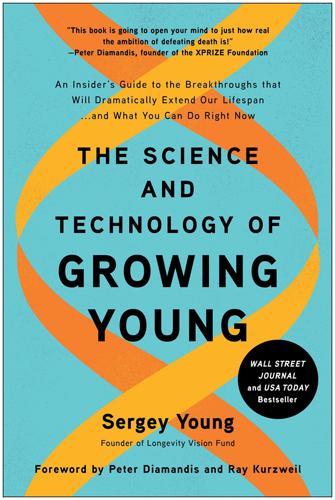
The Science and Technology of Growing Young: An Insider's Guide to the Breakthroughs That Will Dramatically Extend Our Lifespan . . . And What You Can Do Right Now
by
Sergey Young
Published 23 Aug 2021
Zoghbi and Arthur L. Beaudet, “Epigenetics and Human Disease,” Cold Spring Harbor perspectives in biology 8, no. 2 (2016), https://doi.org/10.1101/cshperspect.a019497. 19Greenwood Genetic Center, “GGC Launches Episign, a Novel Clinical Test for Epigenetic Changes,” American Association for the Advancement of Science, last modified April 1, 2019, https://www.eurekalert.org/pub_releases/2018-08/esoc-sfh082318.php. 20“Epigenetics Diagnostic Market Size Worth $21.7 Billion by 2026,” Grand View Research, last modified April, 2019, https://www.grandviewresearch.com/press-release/global-epigenetics-diagnostic-market. 21Robin M.
…
Epigenetic changes often emerge before genetic changes and are often extremely accurate predictors of disease.18 Of more than fifteen thousand women who took part in a landmark study in 2018, epigenetic testing delivered an astonishing 100 percent success rate in diagnosing cervical cancer, as early as five years before the women developed it! Hereditary diseases like Kabuki syndrome and many others also stand to benefit from epigenetic diagnostics. They produce unique methylation patterns that can be identified more quickly and certainly through epigenetic diagnostics than by other methods.19 What is particularly interesting about the epigenome as it relates to healthspan and aging is that whereas the genome is fixed, the epigenome changes in response to things like nutrition, disease, stress, sleep, and pharmaceuticals.
…
death(s) accidental due to diagnostic errors fear of and meaning in life old age as cause of premature (see also increasing your lifespan) preventable causes of psychological age and risk of telemedicine in preventing de Cabo, Rafael deep learning Deep Longevity deep neural networks (DNN) de Grey, Aubrey de Keizer, Peter de la Zerda, Adam DeLisi, Charles DeSilva, Ashanthi Deuel, Thomas Dexcomm diagnosis access to accuracy of current practices for early by telemedicine diagnostic devices in Internet of Body near-future DIY devices new DIY developments for wearable diagnostics based on “omes,” and current paradigm of diagnosis data at center of epigenetic genetic with Internet of Body liquid biopsy near future DIY diagnostics new DIY technology developments noninvasive and affordable using microbiome Diamandis, Peter diet and foods caloric restriction in preventing/treating disease sugar in Discovery DNA DNAFit DNA testing DNN clocks Doudna, Jennifer drugs. see pharmaceutical interventions E economic disparity economics, genetic engineering and education eGenesis Emerson, Ralph Waldo Emmanuel, Ezekiel Emotiv Engineered Arts Enterome entropy epigenetic clocks epigenetic diagnostics epigenome ethical concerns with immortality potential for evolutionary conflict question of free will reshaping of social constructs wealth inequality eukaryotes Eversense evolutionary conflict exercise/physical activity EXi EXO Imaging extreme longevity common reaction to forms of logical case for oneness of man and machine for technical immortality for technical inevitability of F Facebook Fahy, Greg family unit Far Horizon of Longevity (200 plus years). see also individual topics future technologies morality of immortality fear Feelreal Fernandez, Eduardo Ferrazzi, Keith fetal monitors Feynman, Richard Fitbit Flatiron Health FOXO-4 Frankl, Viktor Freenome free radical theory of aging free will Freud, Sigmund future technologies. see also extreme longevity G Gates, Bill GED Match Gelsinger, Jesse gene editing gene (genetic) engineering altering genes inside body cells background of complex questions surrounding CRISPR in gene editing in ending cancer future of of longevity genes questions surrounding Generative Tensorial Reinforcement Learning (GENTRL) gene sequencing gene therapy genetic diagnostics genome altering Human Genome Project instability of in precision medicine for reversing cell aging sequencing Ghandi, Mahatma Gilbert, Walter Gilead Sciences goal alignment Gobel, David Gomez, Bernardéta Google Gore, Adrian government gratitude Gray, Victoria Greger, Michael Griffin, Dana Grossman, Terry Gulshan, Varun Gurdon, Sir John B.
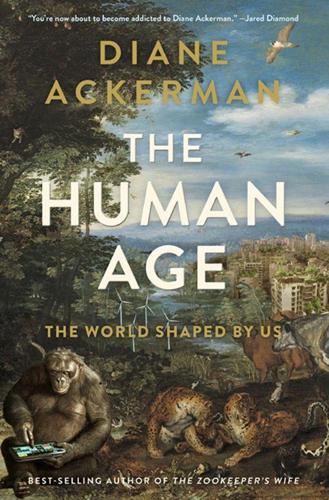
The Human Age: The World Shaped by Us
by
Diane Ackerman
Published 9 Sep 2014
Scientists have begun developing drugs such as azacitidine (given to patients with certain blood disorders) capable of silencing bum genes and spurring on healing ones. Many illnesses, such as ALS and autism, appear to be epigenetic, which puts them within reach. Three different types of epigenetic drug therapy are being actively investigated for schizophrenia, bipolar disorder, and other major psychoses. The FDA has already approved several epigenetic drugs, and in 2008 the National Institutes of Health (NIH) declared epigenetics “central” to biology and committed $190 million to understanding “how and when epigenetic processes control genes.” The Human Genome Project, completed in 2003, rightly celebrated as a wonder of human ingenuity, had only twenty-five thousand genes to map.
…
There’s also a moral, social, and political lesson: while humanitarian programs may seem nonessential, an extravagance of resources and spirit we can’t afford, epigenetics teaches us that, on the contrary, poor education, violence, hunger, and poverty leave scars on one generation after another in a way that ultimately affects the future health and well-being of whole societies. What happens to war-torn soldiers and civilians during and after battle leaves epigenetic traces to wound future generations, adding to a country’s problems, even in peacetime. The same is true of natural disasters, and we’ve seen plenty of both of late. Who knows what epigenetic aftermath will result? Genetic engineering may seem like a diabolical threat to us as a species, and we do need scrupulous oversight and control of such life forms. But the political and environmental choices we make—those with epigenetic repercussions—are equally powerful engines of change, ones we can often identify and fine-tune.
…
How and why this evolutionary sidestep happens is the focus of epigenetics, a new science that puts all the old-fashioned college debates about nature or nurture on the Anthropocene scrap heap of outmoded ideas. It also lays a heavier burden on the shoulders of would-be parents. Apparently, it’s never too soon to begin worrying about the health of your grandchildren. The implications are staggering. Up until now, inheritance was a tale told by DNA; it lay exclusively in the genes. In the watch-how-you-step, deep-nurture world of epigenetics, proteins tag DNA by coiling around it, pythonlike, squeezing some genes tighter and loosening others, in the process switching them on or off, or leaving them on but turning the volume up or dialing it down to a whisper.
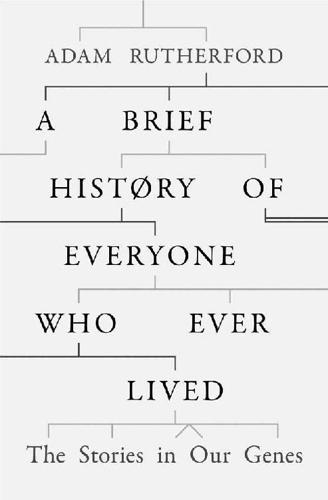
A Brief History of Everyone Who Ever Lived
by
Adam Rutherford
Published 7 Sep 2016
New Age gurus and gullible journalists cite epigenetics as a way of changing your life, under the false supposition that genes are destiny, and epigenetic changes brought on by lifestyle choices such as meditation ‘allows us almost unlimited influence on our fate’, to quote the supreme New Age guru, Deepak Chopra. I suppose that really depends on what you mean by ‘fate’. If you are fated to digest your lunch, then yes, epigenetics will play a key part. If you are destined to go to sleep tonight, your epigenetic tagging will change accordingly. There will be other, perhaps less trivial epigenetic modifications during your life. Methyl tagging can affect genes that are involved in cancers, and indeed drugs are being developed that reverse epigenetic tagging in order to reactivate erroneously muted genes. All these things are important parts of biology that deserve proper scientific scrutiny in the years to come.
…
Women have two X chromosomes, but only really need one. So, in every cell, one X – selected randomly – is permanently labelled with epigenetic methyl tags, which effectively redacts the whole chromosome. Many individual genes are modulated like this too, and many corresponding traits are dependent on this system. Rat mothers lick their pups, and those that are licked less have measurably higher stress levels, which correlates with less epigenetic tagging on genes associated with stress. Some breeds of mice can be given foods that alter epigenetic expression of a gene that is involved in their coat colour, which also has the knock-on effect of making them heavier and more prone to cancer.
…
It was not startling that so many of the survivors had so many health problems, but the fact that their children did too was a surprise. In mammals, epigenetic modifications tend to get reset each generation, but some, very limited, rare epigenetic tags appear to be passed down from parent to child, at least for a couple of generations. We’ve seen a handful of these in mice, even fewer in humans. In rats, learnt behaviours such as fear or stress can be passed on to their children, and subsequently to grandchildren, also by proposed epigenetic mechanisms. This means, as far as scientists can tell, that DNA methylation of certain genes occurs in the mothers, is not reset as we would expect and persists after conception of their pups.
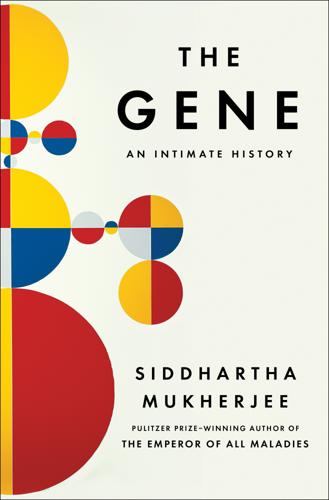
The Gene: An Intimate History
by
Siddhartha Mukherjee
Published 16 May 2016
That mark could not live in the sequence of genes themselves, but had to be etched above them: it had to be epigenetic. Gurdon returned to Waddington’s question: What if every cell carries an imprint of its history and its identity in its genome—a form of cellular memory? Gurdon had visualized an epigenetic mark in an abstract sense, but he hadn’t physically seen such an imprint on the frog genome. In 1961, Mary Lyon, a former student of Waddington’s, found a visible example of an epigenetic change in an animal cell. The daughter of a civil servant and a schoolteacher, Lyon began her graduate work with the famously cantankerous Ron Fisher in Cambridge, but soon fled to Edinburgh to finish her degree, and then to a laboratory in the quiet English village of Harwell, twenty miles from Oxford, to launch her own research group.
…
Historical memory was thus transformed into cellular memory. A note of caution: epigenetics is also on the verge of transforming into a dangerous idea. Epigenetic modifications of genes can certainly superpose historical and environmental information on cells and genomes—but this capacity is limited, idiosyncratic, and unpredictable: a parent with an experience of starvation produces children with obesity and overnourishment, while a father with the experience of tuberculosis, say, does not produce a child with an altered response to tuberculosis. Most epigenetic “memories” are the consequence of ancient evolutionary pathways, and cannot be confused with our longing to affix desirable legacies on our children.
…
The ellipses and punctuation marks denote the introns, the intergenic regions, and regulatory sequences. The boldface and capitalized letters and the underlined words are epigenetic marks appended to the genome to impose a final layer of meaning. This was the reason that Gurdon, despite all his experimental ministrations, had rarely been able to coax an adult intestinal cell backward in developmental time to become an embryonic cell and then a full-fledged frog: the genome of the intestinal cell had been tagged with too many epigenetic “notes” for it to be easily erased and transformed into the genome of an embryo. Like human memories that persist despite attempts to alter them, the chemical scribbles overwritten on the genome can be changed—but not easily.
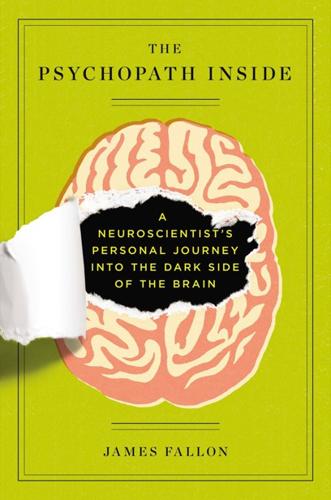
The Psychopath Inside: A Neuroscientist's Personal Journey Into the Dark Side of the Brain
by
James Fallon
Published 30 Oct 2013
Some of these effects are dependent on whether the ancestor was male or female, since certain genes are “imprinted” on either the paternal or maternal side of the family. The epigenetic tag is one of many alterations to the genetic code that can be induced by environmental stressors. This is one of the core mechanisms underlying the interaction of nature and nurture. While there have been numerous recent studies on the role of epigenetic interactions on metabolism, cancer, and susceptibility to infectious and immune diseases, it is also a key to understanding some psychiatric disorders, from schizophrenia to psychopathy.
…
Normally the transcribed message from the DNA to the RNA would be translated into the protein, here the mature and sensical sentences “That that is, is. That that is not, is not. Is that it? It is.” But environmental stressors can induce epigenetic tags to be added on to some of the original genetic DNA, so that the punctuation, the spacing of the words, the text formatting in general, can be altered to produce a slightly different meaning: “That that is, is. That that is not, is not. Is that it? It is?” Same words, same sequence, but a final question mark added changes the thrust of the message. This slight “epigenetic” change to the sentence’s intended “genetic” meaning is different from an actual mutation. In a mutation, the actual spelling of the sentence is changed, either by inserting a letter (or more) or deleting an existing letter.
…
In a similar sense, the genome is the book you inherited at birth, the epigenome is the way you read that book. Another way of looking at the epigenome function is to consider the new car you buy from the dealer. All that original hardware is like your genome, while alterations you might make to soup it up, give it some more pep, or, for your daughter, slow it down, are like the epigenetic modifications. Epigenetic alterations are one of several reasons why identical twins are not identical. Even with identical raw genetic codes, differences in early environment, whether overly stressful or more positively enriching, can change their behaviors down the line as teenagers and adults. Identical twins can also have different numbers of the same genes inherited from one parent or another, and this can also alter how the identical twins look and behave.
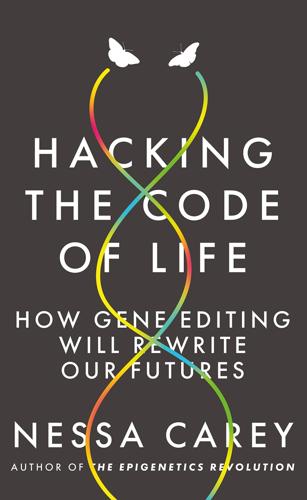
Hacking the Code of Life: How Gene Editing Will Rewrite Our Futures
by
Nessa Carey
Published 7 Mar 2019
A lot of the work the researchers carried out involved finding the regions where such wholesale loss of genetic and epigenetic information was tolerable. A much more elegant approach would be to use the new gene editing technologies to alter the epigenetic information, while leaving the native DNA sequence intact. Although still in its infancy, this field is already making progress and in the next few years we will probably see substantial improvements to our understanding of the precise impact of a whole range of epigenetic modifications on the genome, and its interaction with the environment.10 This doesn’t mean that we are likely to see a similar use of gene editing happening in human IVF, to create babies from single-sex couples.
…
He provided preliminary evidence that this ‘something else’ is a set of chemical additions to DNA, which are referred to as epigenetic modifications. At certain key positions in the genome, DNA is differentially tagged with these modifications, depending on whether the copy was inherited from the egg or the sperm. Having the right balance of these is critical. In the experimental situation where there were two eggs or two sperm, this balance was wrong and it adversely affected the development of the embryo.8 These epigenetic modifications don’t have the same role in non-mammalian species, which is one of the reasons why Komodo dragons and other parthenogenetic organisms are able to reproduce without any input from sperm.
…
They were able to remove specific regions from the mouse genome, which would normally carry the additional epigenetic information. Depending on the regions they deleted, they were able to produce live mice which had two mothers or two fathers.9 The pups with two genetic mothers were even able to mature and have offspring of their own, but the pups with two fathers didn’t survive to adulthood. Although the results were startling, the approach used was fairly blunt. Gene editing was employed to remove quite large areas of the genome, which usually carry critical epigenetic information. A lot of the work the researchers carried out involved finding the regions where such wholesale loss of genetic and epigenetic information was tolerable.
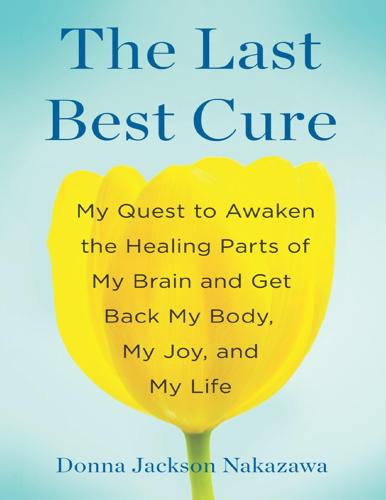
The Last Best Cure: My Quest to Awaken the Healing Parts of My Brain and Get Back My Body, My Joy, a Nd My Life
by
Donna Jackson Nakazawa
Published 21 Feb 2013
McCarthy conducts research into how epigenetics impacts nuances of behavior and mental health. The good news, she reminds me, is that the brain is an epigenetically privileged place not just in terms of creating negative changes, but positive ones as well. “Our brains are malleable,” she reassures me. “Scientists are now of the mind that DNA methylation can come and go. And it may be that the reason why approaches such as meditation and mindfulness have such power is that they undo bad epigenetics or even induce new, good epigenetics.” I like that. Our current behavior can rewrite our epigenetic future. We can do something about the impact our ACEs have had on us, even decades after the fact, and begin to amend our biological glitches, no matter what caused them.
…
Growing scientific consensus tells us that efforts to meditate and retrain the brain might help to rewrite bad epigenetics and even induce new, better epigenetics. Undo the damage of gene methylation, or what some scientists now term our “DNA memories.” The sensitivity hypothesis, when viewed alongside ACE research, suggests that perhaps those who are most likely to end up facing chronic adult health issues as the result of ACEs are also those who are best able to turn their bad epigenetics into good epigenetics. No matter who you are—regardless of your experience or your genetics—it is quite possible to engage in regular practices that downshift the fight-or-flight response and grow new, healthier neural and chemical pathways, simply by adjusting your psychological state of mind.
…
At McGill University, neurobiologist Michael Meaney recently found that this chronically elevated state of fight or flight causes deep biophysical changes in the young, developing brain. This occurs through a process known as epigenetics: biological changes that affect the expression of our genes— in this case, the genes that govern our stress hormone receptors in the brain. Here’s how epigenetics works. Every cell in the body has the full set of chromosomes and contains all of our DNA. But the reason why one cell, during embryonic development, becomes a skin cell versus a bone cell or eye cell is because most of the genes that could be expressed are turned off. They get switched off by an epigenetic process called gene methylation in which small chemical markers, or methyl groups, adhere to specific genes, silencing them.

Behave: The Biology of Humans at Our Best and Worst
by
Robert M. Sapolsky
Published 1 May 2017
Sort of. Which segues to a chapter summary. CONCLUSIONS Epigenetic environmental effects on the developing brain are hugely exciting. Nonetheless, curbing of enthusiasm is needed. Findings have been overinterpreted, and as more researchers flock to the subject, the quality of studies has declined. Moreover, there is the temptation to conclude that epigenetics explains “everything,” whatever that might be; most effects of childhood experience on adult outcomes probably don’t involve epigenetics and (stay tuned) most epigenetic changes are transient. Particularly strong criticisms come from molecular geneticists rather than behavioral scientists (who generally embrace the topic); some of the negativity from the former, I suspect, is fueled by the indignity of having to incorporate the likes of rat mothers licking their pups into their beautiful world of gene regulation.
…
For example, recall those pair-bonding prairie voles; when females and males first mate, there are epigenetic changes in regulation of oxytocin and vasopressin receptor genes in the nucleus accumbens, that target of mesolimbic dopamine projection.6 Let’s translate the last chapter’s imagery of “freezing on/off switches” into molecular biology.7 What mechanisms underlie epigenetic changes in gene regulation? An environmental input results in a chemical being attached tightly to a promoter, or to some nearby structural proteins surrounding DNA. The result of either is that TFs can no longer access or properly bind to the promoter, thus silencing the gene. As emphasized in the last chapter, epigenetic changes can be multigenerational.8 Dogma was that all the epigenetic marks (i.e., changes in the DNA or surrounding proteins) were erased in eggs and sperm. But it turns out that epigenetic marks can be passed on by both (e.g., make male mice diabetic, and they pass the trait to their offspring via epigenetic changes in sperm).
…
Chapter 4 discussed how some hormones have activational effects by altering on/off switches on particular genes (e.g., testosterone-activating genes related to increased growth in muscle cells). The field of “epigenetics” concerns how some hormonal organizational effects arise from permanently turning particular genes on or off in particular cells.75 Plenty more on this in the next chapter. This helps explain why your toes and nose work differently. More important, epigenetic changes also occur in the brain. This domain of epigenetics was uncovered in a landmark 2004 study by Meaney and colleagues, one of the most cited papers published in the prestigious journal Nature Neuroscience.
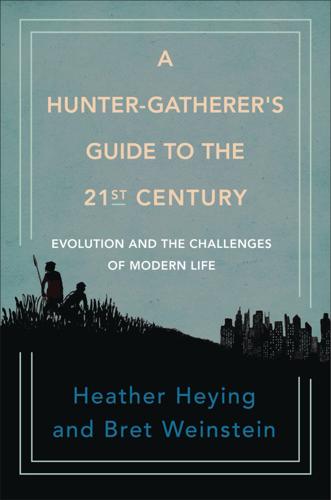
A Hunter-Gatherer's Guide to the 21st Century: Evolution and the Challenges of Modern Life
by
Heather Heying
and
Bret Weinstein
Published 14 Sep 2021
It is only through the tight, epigenetic regulation of gene expression that we can have an animal or a plant composed of well-coordinated, distinct, multicellular tissues. While the meaning of the term epigenetic has gone through a radical transformation, from describing inherited behavior to describing only molecular switches, a strong argument can be made that the category of epigenetic phenomena actually includes both types of regulators: molecular switches are the narrow meaning of the term—epigenetic sensu stricto (“in the strict sense”), while the molecular switches plus inherited behaviors are epigenetic sensu lato (“in the broad sense”).
…
If culture was not paying its way, the genes whose expression it is modifying would either go extinct or evolve to be as immune to culture as an oak tree. * * * — In our teaching of evolution to students, we have codified our understanding of the relationship between genetic and epigenetic phenomena in what we call the Omega principle. It has two elements:17 Omega Principle Epigenetic regulators, such as culture, are superior to genes in that they are more flexible and can adapt more rapidly. Epigenetic regulators, such as culture, evolve to serve the genome. We have chosen to use the signifier Ω (omega) to call to mind π (pi), and thus indicate the obligate nature of the relationship.
…
The Omega Principle Epigenetic means “above the genome.” The first time either of us encountered the term was in college in the early ’90s. At that time it was occasionally used by evolutionary biologists to place culture in a rigorous evolutionary context. Culture sits “above” the genome in the sense that it shapes the way the genome is expressed. Genes describe proteins and processes that construct a body. Culture—in those creatures that have culture—has a powerful influence on where bodies go, and what they do. In this way, culture is a regulator of genome expression. The term epigenetic has in more recent decades taken on a different meaning.
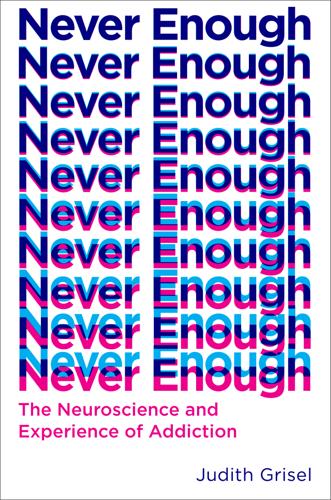
Never Enough: The Neuroscience and Experience of Addiction
by
Judith Grisel
Published 15 Feb 2019
Part of this may be due to the fact that we inherit more than a sequence of DNA from our ancestors: the double helix of spiraling nucleotides carries another set of instructions that are also passed down. This code consists of epigenetic—literally, on top of DNA—modifications that regulate the activity of the DNA and constitute a cellular memory of our ancestors’ experiences. We now realize that epigenetic modifications overlaying the sequence of nucleotides, along with other indications of experience in the form of things like micro RNAs (which block RNA, the messenger that carries instructions from DNA), can have a big influence on which genes are translated into proteins, and when.
…
Some addiction researchers think that these transgenerational modifications may account for the “missing inheritance”—that is, the genetic signature underlying the known heritability of addictive diseases. The relatively new field of epigenetics is just getting under way, but it is thought that some of our parents’ and grandparents’ experiences are imprinted in our cells this way in order to adapt us for similar conditions. This is a good idea from a biological perspective, because the best index of the future is usually the past, and adapting well to our conditions is a primary example of biological fitness. For example, Rachel Yehuda and her colleagues have data suggesting that children of Holocaust survivors might carry epigenetic modifications from their parents that make them primed for stress.2 Others have demonstrated that progeny from families enduring famine inherit a tendency toward metabolic thriftiness that predisposes them toward obesity.3 As if, to err on the safe side, our DNA were prepared to help some of us carry a little extra cushion.
…
For example, Rachel Yehuda and her colleagues have data suggesting that children of Holocaust survivors might carry epigenetic modifications from their parents that make them primed for stress.2 Others have demonstrated that progeny from families enduring famine inherit a tendency toward metabolic thriftiness that predisposes them toward obesity.3 As if, to err on the safe side, our DNA were prepared to help some of us carry a little extra cushion. We’re beginning to scratch the surface on how inherited modifications to the DNA double helix contribute to complex traits like addiction, and data are accumulating to suggest that risk factors may be passed along epigenetically. When potential parents smoke marijuana, for instance, epigenetic changes could be priming subsequent generations for addiction. Conducting longitudinal studies in humans to identify such transgenerational impacts presents challenges, obviously. One of the biggest is that we can’t randomly assign people to smoking and nonsmoking groups, so we can’t rule out that those prone to smoking may possess tendencies to abuse other drugs as well.
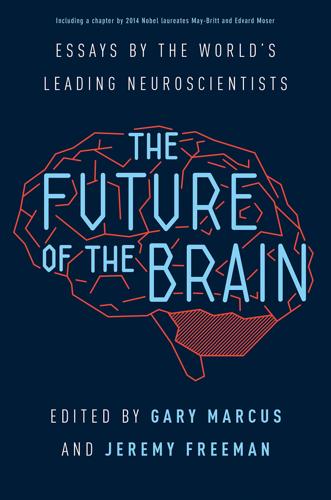
The Future of the Brain: Essays by the World's Leading Neuroscientists
by
Gary Marcus
and
Jeremy Freeman
Published 1 Nov 2014
If we expand this concept to take into account the fact that an organism does not remain static throughout the lifespan, but rather it dynamically responds to social and environmental contexts, then epigenetic mechanisms might also mediate the adaptability of brain and behavior to the environment. Recent work from the laboratories of Michael Meaney and Frances Champagne indicates that variation in early development induces epigenetic variation (in DNA methylation for example) and may serve as a mechanism for developmental plasticity. For example, alterations in nutrition, stress, and maternal care early in life can trigger these epigenetic mechanisms and generate anatomical and functional changes to the brain and body, which alters behavior of the offspring.
…
For example, alterations in nutrition, stress, and maternal care early in life can trigger these epigenetic mechanisms and generate anatomical and functional changes to the brain and body, which alters behavior of the offspring. These alterations in behavior can be sustained across generations via epigenetic effects on portions of the neuroendocrine system, or in some instances persist through epigenetic effects on the germ line. The dramatic role that epigenetic mechanisms play in shaping brain and behavior is well exemplified in humans. Anatomical alterations to the hand necessary for complex bimanual dexterity; to the supralaryngeal tract necessary for speech production; and to the inner ear, which amplifies frequencies associated with human speech, were present well before these behaviors that we attribute to modern humans were expressed within the population.
…
See also SyNAPSE project (IBM) deficit-lesion-correlation approach, 139 degenerative diseases, 229 Dehaene, Stanislas, 165, 167, 172, 173, 174 De humani corporis fabrica (On the Fabric of the Human Body) (Vesalius), 3, 4f deletion syndromes, 238 dementia, 256 Dennett, Daniel, 166 Department of Energy, 196 depression, 122, 219, 227, 256 Descartes, René, 258, 269 de Sitter, Willem, 95 developmental language disorder, 154 Diagnostic and Statistical Manual of Mental Disorders, 261 diffusion magnetic resonance imaging (MRI), 5 digital atlases, 15–16 digital atlasing, 5 dimensionality reduction, 82, 102 diversity: human brain, 214 divisive normalization: canonical neural computation, 180 DNA: bar-coding of, 46–48; encoding neural electrical activities into, 61–62; methylation, 189; neuroimaging genomics, 156; polymerase, 57–58, 61, 62f; sequencing, 55–57, 149, 150 Donald, Merlin, 133 Donoghue, John, 217, 219–232 Dostrovsky, John, 69 Dravet syndrome, 242 duck-billed platypus: brain construction, 187; neocortex, 188 Duke University, 115 dynamical systems approach, 82, 83 dyslexia, 11, 139 Eccles, John, 257 echolocating bat, 187 École Polytechnique Fédérale de Lausanne (EPFL), 116, 122 Edinburgh Mouse Atlas Project (EMAP), 9 Eichele, Gregor, 7 Einhäuser, Wolfgang, 174 Einstein, Albert, 95 electrical recorders, 249 electrical recording, 38, 224, 245, 250, 257 electrical stimulation: neurotechnology, 225–26, 228, 260 electrodes: computational steps, 80f, 81; measuring electrical activity, 79, 80f electroencephalograph (EEG), 5, 244, 260 electromagnetic (EM) fields or waves, 248–249 electron microscopy (EM), 45, 60, 257 electrophoresis, 7, 15, 272 electrophysiology, 32, 35, 154 Eliasmith, Chris, 109, 125–36 EM Connectomics, 60 emergence: concept, 92–93 emergent phenomena, 93 encoding schemes, 214 Engert, Florian, 18 entorhinal cortex: grid cells in, of rat brain, 71, 72f; spatial cell types in, 74–76 epigenetic mechanisms: brain and behavior, 189, 190 epigenetics, 189 epilepsy, 194, 219, 230, 236, 240, 242, 266 ethics: human brain simulations, 268–69; whole brain simulation, 123 EurExpress, 9 European Commission, 111, 195 European Community, 94 Evans, Alan, 5, 10, 14 event related potentials (ERPs): consciousness, 172–73 evolution: brain organization, 190–91; epigenetic mechanisms, 189–90; neocortex during course of, 188–89; quest for species differences, 191–92; science dictating process, 191; studying various species, 186–87; understanding history of brain, 192–93; unusual mammals, 187–88 exome: humans, 152, 153–54 EyeWire, 15 Facebook, 103 feature detectors: neocortex, 211–12, 214 feedback pathways: thalamus, 37 Felleman, Daniel, 12 Feynman, Richard, 111 filtering: canonical neural computation, 180 Fisher, Simon E., 137, 149–57 flexible coordination: Spaun model, 132–33 Fluorescent In Situ Sequencing (FISSEQ), 58, 58f FMRP (fragile X mental retardation protein), 240–41 force fields, 180 format: percepts and concepts, 171 Forschungszentrum Jülich, 116 FORTRAN, 44 foundation grants: funding for brain map, 199–200 FOXP2 gene: human and chimpanzee differences, 156; mutations of, 151–52, 155; songbirds, 155–56 fragile X mental retardation protein (FMRP), 240–41 Fragile X syndrome, 240–42 Freeman, Jeremy, 23, 65, 100–107 Freud, Sigmund, 259 Freud’s psychodynamic theory, 206 Fried, Itzhak, 211 functional brain map, 161 functional dissociations, 140 functional localization: concept, 139 functional magnetic resonance imaging (fMRI), 4–5, 244, 260 functional modeling: neural responses, 102 fusiform face area, 163; identification of, 163 Fyhn, Marianne, 71 Galen, Claudius, 3 GE, 200 Genbank (public database), 196 genealyzers, 203 gene expression, 6–9, 8f, 54 GenePaint, 9 GENESIS neural simulator, 183 genetic brain, 6–14 genetics: psychiatric patients, 235–37 genome: humans, 149, 152; neuroimaging genomics, 156–57.

The Cancer Chronicles: Unlocking Medicine's Deepest Mystery
by
George Johnson
Published 26 Aug 2013
Freed to proliferate, the cell would be vulnerable to more copying errors. So epigenetic changes would lead to genetic changes—and these genetic changes could conceivably affect methylation, triggering more epigenetic changes … and round and round it goes. Outside the laboratory enthusiasm for this scenario is driven both by hope and by fear. Epigenetics might provide a way for a substance to act as a carcinogen even though it has been shown incapable of breaking DNA. But unlike genetic damage, these changes might be reversible. How big a role epigenetics plays remains uncertain. Like everything that happens in a cell, methylation and the modification of histones are controlled by genes—and these have been found to be mutated in different cancers.
…
“For decades now”: Hanahan and Weinberg, “The Hallmarks of Cancer” (italics added). 4. don’t necessarily have to occur through mutations: The seminal paper on epigenetics is Andrew P. Feinberg and Bert Vogelstein, “Hypomethylation Distinguishes Genes of Some Human Cancers from Their Normal Counterparts,” Nature 301, no. 5895 (January 6, 1983): 89–92. [http://www.nature.com/nature/journal/v301/n5895/abs/301089a0.html] For a historical overview see Andrew P. Feinberg and Benjamin Tycko, “The History of Cancer Epigenetics,” Nature Reviews Cancer 4, no. 2 (February 2004): 143–53. [http://www.ncbi.nlm.nih.gov/pubmed/14732866] Epigenetic changes in germ cells—sperm or eggs—might even be passed from parent to child, though the significance of that is uncertain. 5. found to be mutated in different cancers: Päivi Peltomäki, “Mutations and Epimutations in the Origin of Cancer,” Experimental Cell Research 318, no. 4 (February 15, 2012): 299–310.
…
Alterations like these, which change a cell’s function while leaving its DNA otherwise unscathed, are called epigenetic. “Epi-,” coming from ancient Greek, can mean “over,” “above,” “upon.” Just as a cell has a genome, it also has an epigenome—a layer of software overlying the hardware of the DNA. Like the genome itself the epigenome is preserved and passed on to daughter cells. What all this suggests is that cancer may not be only a matter of broken genes. Disturbances to a cell—carcinogens, diet, or even stress—might rearrange the epigenetic tags without directly mutating any DNA. Suppose that a methyl group normally keeps an oncogene—one that stimulates cellular division—from being expressed.
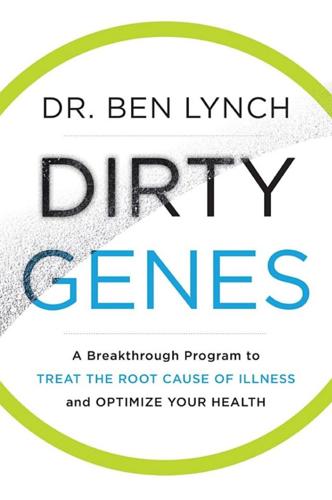
Dirty Genes: A Breakthrough Program to Treat the Root Cause of Illness and Optimize Your Health
by
Ben Lynch Nd.
Published 30 Jan 2018
N, and Bykhovski, Via, “The effect of methylation on the carnitine synthesis,” Prikladaia Biokhimiia i Mikrobiolgiia, March–April 1990, https://www.ncbi.nlm.nih.gov/pubmed/2367349. 42Burn fuel as efficiently as possible: Wenyi, X. U., et al., “Epigenetics and cellular metabolism,” Genetics and Epigenetics, 25 September 2016, https://www.ncbi.nlm.nih.gov/pmc/articles/PMC5038610; Donohoe, D. R., Bultman, S. J., “Metaboloepigenetics: Interrelationships between energy metabolism and epigenetic control of gene expression,” Journal of Cell Physiology, September 2012, https://www.ncbi.nlm.nih.gov/pmc/articles/PMC3338882. 43The 2.5 million that die every second: “How many cells do we have in our body?”
…
v=tnVRv 0zGsFY& t=603s. 48Requiring U.S. manufacturers to “enrich” the following foods: “Folate,” National Institutes of Health, accessed April 2017, https://ods.od.nih.gov/factsheets/Folate-Health Professional. 49The wrong amount of exercise: Reynolds, G., “How exercise changes our DNA,” Well, 17 December 2014, https://well.blogs.nytimes.com/2014/12/17/how-exercise-changes-our-dna/?_r=1. 49Poor sleep: Kirkpatrick, B., “The Epigenetics of sleep: 3 reasons to catch more zzz’s,” What Is Epigenetics, 3 March 2015, http://www.whatisepigenetics.com/the-epigenetics-of-sleep-3-reasons-to-catch-more-zzzs. 49When your body is under stress: Bing, Y., et al., “Glucocorticoid-induced S-adenosylmethionine enhances the interferon signaling pathway by restoring STAT1 protein methylation in hepatitis B virus-infected cells,” Journal of Biological Chemistry, 30 September 2014, http://www.jbc.org/content/289/47/32639.full. 3.
…
So I began to develop a program for cleaning up our “dirty genes”: what we should eat, which supplements could help, and how to create a “clean genes” lifestyle. I wanted us to be like that epigenetically supported mouse, glowing and healthy, no matter which genes life has dealt us. I knew that if I could just delve deeply enough, I’d find the answers. And now, ten years later, I’m proud to say that I have. Oh, there’s still a ton more I have to learn—the whole field of epigenetics is just getting started, and we’re making new discoveries every day. I spend a big portion of every week doing my own research, and another big chunk of time reading the studies that my colleagues turn out.
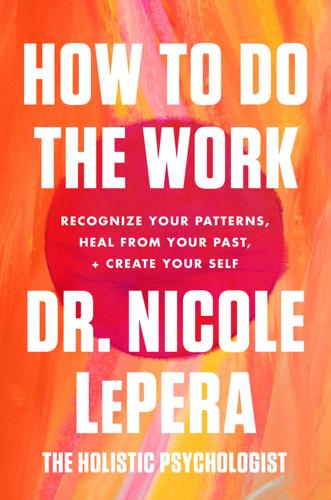
How to Do the Work: Recognize Your Patterns, Heal From Your Past, and Create Your Self
by
Nicole Lepera
Published 9 Mar 2021
The biology of belief: Unleashing the power of consciousness, matter & miracles. Hay House. 7.Kankerkar, R. R., Stair, S. E., Bhatia-Dey, N., Mills, P. J., Chopra, D., & Csoka, A. B. (2017). Epigenetic mechanisms of integrative medicine. Evidence-Based Complementary and Alternative Medicine, Article 4365429. 8.Nestler, E. J., Peña, C. J., Kundakovic, M., Mitchell, A., & Akbarian, S. (2016). Epigenetic basis of mental illness. The Neuroscientist, 22(5), 447–463. 9.Jiang, S., Postovit, L., Cattaneo, A., Binder, E. B., & Aitchison, K. J. (2019). Epigenetic modifications in stress response genes associated with childhood trauma. Frontiers in Psychiatry, 10, Article 808. 10.Center for Substance Abuse Treatment. (2014).
…
Emerging science tells us that the genes we inherit aren’t fixed; they are influenced by their environment, beginning in utero and continuing throughout our lives. The groundbreaking discovery of epigenetics tells a new story about our ability to change. We are, of course, given a set of genes, but, like a deck of cards, to some degree we can choose which hands we want to play. We can make choices about our sleep, nutrition, relationships, and the ways we move our body that all alter gene expression. Biologist Bruce Lipton has been spreading the gospel about the role of epigenetics for years and calls its influence “the new biology.”6 Along the way, he has been a powerful critic of genetic determinism as a gross distortion of the truth of our biology.
…
Gabor Maté, for example, has written extensively about the deep imprints emotional stress leaves on the structure of the brain, causing many common physical and psychological illnesses. The idea that genetics are not destiny was a profound realization for me personally. I believed that because my family was sick, I was destined to be sick, too. The epigenetic perspective gave me the tools to reframe my perception of my own body. I may have inherited certain propensities from my family, but that didn’t mean I had to become them. Studies have shown that the influence of epigenetics transcends generations. Our ancestors’ lived experiences shaped their DNA, which in turn shapes ours. That means our lives don’t end with us but are passed down—the good and the bad, the trauma and the joy.

The Hidden Half: How the World Conceals Its Secrets
by
Michael Blastland
Published 3 Apr 2019
Big as the differences are between the marmorkrebs, we’re hard-pushed to explain them in any but the most general terms, and even these are little help identifying the cause. One tempting explanation is epigenetics. This is how genes are switched on and off – for example, to cause cells with the same genes to make eyes, kidneys, heart, etc. Epigenetics is also used to describe the interplay of genes and the environment (GxE) to produce stable effects that persist as cells divide. But this just pushes the question back: where do these varied epigenetic effects originate when everything we know about the marmorkrebs and their environment is the same? Epigenetics might explain how the influences are mediated – and for that reason it’s fascinating – but that doesn’t tell us where the influences come from.
…
Epigenetics might explain how the influences are mediated – and for that reason it’s fascinating – but that doesn’t tell us where the influences come from. What flicks a marmorkrebs’ epigenetic switch one way and not another to cause so much variety? We don’t know. Another tempting explanation is short-term gene–environment interaction. Genes do not directly determine how a creature turns out, but code indirectly for proteins throughout life, a process under potentially continuous outside influence. This leaves plenty of room for gene–environment interaction. It’s not the same as epigenetics, since it needn’t produce long-term stable effects, but more to the point it still doesn’t address the problem that every input to this GxE interaction in the marmorkrebs’ case is, as far as we can tell, the same.
…
So, we’re not quite sure of the story except to say that this new species suddenly turned up. Since its discovery, I’ve seen one other variety of crayfish reported to have the potential to turn parthenogenetic. 3 Frank Lyko, head of epigenetics at the German Cancer Research Center, in comments to Newsweek magazine, February 2018. 4 G. Scholtz et al., ‘Ecology: Parthenogenesis in an Outsider Crayfish’, Nature, vol. 421, 2003. 5 Frank Lyko, head of epigenetics at the German Cancer Research Center, in comments to Newsweek magazine, February 2018. 6 Unless there are more significant mutations which also cause marked differences, but you would not expect this to be an everyday, every-creature event. 7 G.
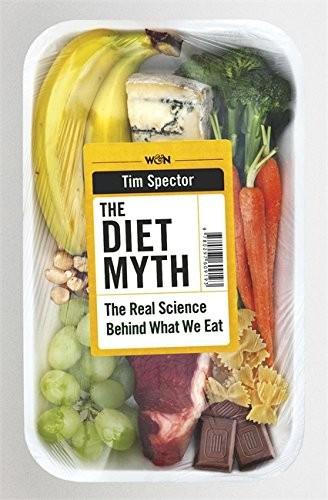
The Diet Myth: The Real Science Behind What We Eat
by
Tim Spector
Published 13 May 2015
Concern here is because the first three years of life are crucial for the normal development of a child, when the genes are constantly changing and fine-tuning their functions so as to produce new proteins. Given that the isoflavones in soy have such significant and usually beneficial epigenetic effects in cancer, we should be more cautious when considering whether to give soy to susceptible babies. When you combine the epigenetic effects of soy with other known endocrine disruptor chemicals like bisphenol (BPA), which is in many babies’ plastic bottles, you could be preparing a dangerous cocktail.8 Seaweed suppers An unusual source of protein is seaweed, although to get health-giving amounts you would need to spend your day in sushi bars, since protein makes up only about 2 per cent of the content of marine algae; the rest is hard-to-digest carbohydrate starch.
…
E. coli: a common bacteria that lives in our colons and can occasionally become pathogenic after infections or antibiotics. endocrine: a term for anything producing hormones (e.g. thyroid or pancreas). endocrine disruptors: chemicals that act epigenetically to alter hormones, e.g. the bisphenol (BPA) in plastic bottles. epidemiology: the study of large groups or populations in order to discover the causes of disease. epigenetic: describes mechanisms by which chemical signals can switch genes on and off without altering the DNA structure. A normal process in babies and growth, which can be altered by diet and chemicals for up to several generations.
…
We found that they vary between people and are strongly controlled by genes.24 So our genes determine to some extent which microbes live and prosper in our guts – using our soil analogy – and then, importantly, how our immune system reacts and responds to them. So genes are not inflexible, as previously believed, but can be turned up or down like dimmer switches. This ‘epigenetic process’ is how we humans adapt to new surroundings and new diets. It is also how we communicate with our microbes and how our microbes can switch our genes on and off and manipulate us. In this way, over time our diets (or microbes) could slowly alter the way our genes fertilise (the soil of) the colon, allowing a greater variety of microbes to eventually settle and grow.
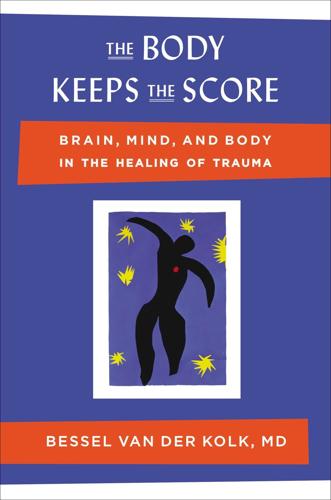
The Body Keeps the Score: Brain, Mind, and Body in the Healing of Trauma
by
Bessel van Der Kolk M. D.
Published 7 Sep 2015
C. Ferguson-Smith, “Epigenetic Regulation of the Neural Transcriptome: The Meaning of the Marks,” Nature Neuroscience 13, no. 11 (2010): 1313–18. See also M. J. Meaney, “Epigenetics and the Biological Definition of Gene × Environment Interactions,” Child Development 81, no. 1 (2010): 41–79; and B. M. Lester, et al., “Behavioral Epigenetics,” Annals of the New York Academy of Sciences 1226, no. 1 (2011): 14–33. 6. M. Szyf, “The Early Life Social Environment and DNA Methylation: DNA Methylation Mediating the Long-Term Impact of Social Environments Early in Life,” Epigenetics 6, no. 8 (2011): 971–78. 7.
…
Children whose pregnant mothers had been trapped in unheated houses in a prolonged ice storm in Quebec had major epigenetic changes compared with the children of mothers whose heat had been restored within a day.6 McGill researcher Moshe Szyf compared the epigenetic profiles of hundreds of children born into the extreme ends of social privilege in the United Kingdom and measured the effects of child abuse on both groups. Differences in social class were associated with distinctly different epigenetic profiles, but abused children in both groups had in common specific modifications in seventy-three genes.
…
Mehta et al., “Childhood Maltreatment Is Associated with Distinct Genomic and Epigenetic Profiles in Posttraumatic Stress Disorder,” Proceedings of the National Academy of Sciences of the United States of America 110, no. 20 (2013): 8302–7; P. O. McGowan, et al., “Epigenetic Regulation of the Glucocorticoid Receptor in Human Brain Associates with Childhood Abuse,” Nature Neuroscience 12, no. 3 (2009): 342–48; M. N. Davies, et al., “Functional Annotation of the Human Brain Methylome Identifies Tissue-Specific Epigenetic Variation Across Brain and Blood,” Genome Biology 13, no. 6 (2012): R43; M. Gunnar and K.
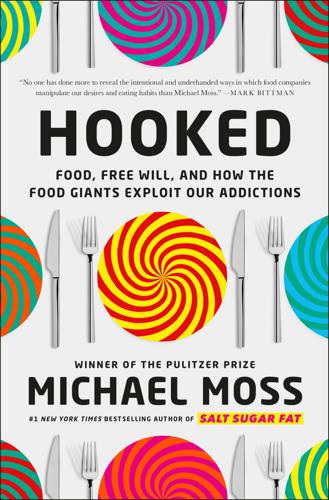
Hooked: Food, Free Will, and How the Food Giants Exploit Our Addictions
by
Michael Moss
Published 2 Mar 2021
It showed the same motley collection of automobile parts, only this time a section of the page had an overlay that made them fuzzy and hard to identify. “This is what we call epigenetics,” he said, pointing to the shaded area. “It modifies the efficiency with which parts of the DNA blueprint can be read.” In other words, the genes themselves don’t change quickly. But through the influence of the phenomenon known as epigenetics, the same genes can become more or less decipherable, and thus better or worse at doing their particular jobs. Time wasn’t a problem in this aspect of our DNA. Epigenetics can happen within one generation. And there is a world of things that can create an epigenetic effect on our genes, including the kinds and amount of food that our parents ate.
…
There is no hard proof of this yet, but the strong supposition is that the energy-storing genes in these children had been made more efficient in utero, which came back to haunt them when food became plentiful again. “There are epigenetic signals that basically prepare the next generation for scarcity of food, and if that scarcity doesn’t happen, you’ve got a problem,” Hager said. These children didn’t necessarily eat any more than their peers, but they were better at storing what they did eat as body fat. Moreover, they can pass on this propensity to subsequent generations, giving rise to the hypothesis that epigenetics can exert a lasting influence. Epigenetics has gotten even more attention recently. In pop science, it is credited or blamed for all manner of human strengths or shortcomings; it’s a boon for self-help books, which promise that a better understanding of epigenetics could be wielded to make you smarter, fitter, faster.
…
And there is a world of things that can create an epigenetic effect on our genes, including the kinds and amount of food that our parents ate. Hager cited the case of the thrifty gene, or more precisely, the thrifty epigenetics. We all have a set of genes whose job is to let us store energy. In evolutionary theory, these genes gained a foothold in our DNA by helping us get through drought and famine. They enabled us to store the food we could get in the good times as body fat, so we could burn that fat for energy in the bad. But the efficiency with which these genes worked is subject to changes in the food environment. One such upheaval came during World War II in the Netherlands, in what researchers came to call the Dutch Hunger Winter.
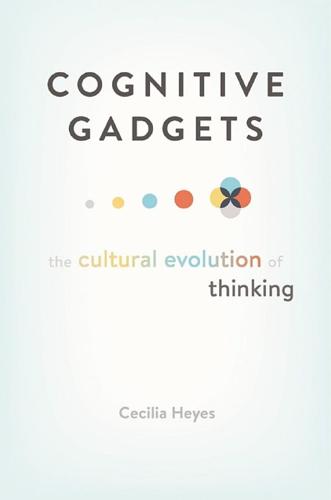
Cognitive Gadgets: The Cultural Evolution of Thinking
by
Cecilia Heyes
Published 15 Apr 2018
See Coevolution, gene-culture Dual-process models: cognition, 66–67; mindreading, 156–157, 163–164, 165, 167; selective social learning, 109–114 Dual-route cascaded model (theory), 20, 21f Dyslexia, 150 E Education attainment, 189, 206–207 Effector-dependent learning, 131–132 Emotion: child communication and cognitive ability, 47; cognitive gadgets theory, 17, 220–221; executive function, 72; human emotion and motivation, 54–60, 74–75; recognition, mindreading, 149–150, 152–154; social learning processes, 100, 145; speech attributes, 65 Empiricism, 67 Emulation, 138 Environment vs. genetics. See Nature vs. nurture Epigenetic inheritance, 29 Episodic memory, 78 Error, language learning, 188–189, 196 Error, social learning: prediction error, 68–69, 97, 103–104, 105; variation introduction, 33 Error patterns, imitation processes, 131–132 Evans, N., 179 Event representations, 67, 68–69, 71, 95–96 Evidence of poverty / wealth. See “Poverty of the stimulus”; “Wealth of the stimulus” Evolution. See Convergent evolution; Cultural evolution; Cultural evolutionary psychology; Cultural evolutionary theory; Epigenetic inheritance; Evolutionary psychology; Genetic assimilation; Genetic evolution; Human evolution; Selection processes Evolutionary causal essentialism, 215–217 Evolutionary psychology, 9–12; bases of cultural evolutionary psychology, 2, 12–16, 214; and cognitive gadgets theory, 6, 7, 12, 15–16, 15f, 22, 217; cognitive science, 11, 38; domain-general cognitive processes, 75; origins, cognitive characteristics, 3–4; populational cultural evolution and, 31, 37, 51; study trends and methods, 25–26, 28 Executive function, 67, 72–74; mindreading and, 156–157; testing, 73 Explicit instruction: copying, 111; language and grammar, 189; mindreading development, 152, 154 Explicit metacognition, 4, 94, 95, 105–107, 111, 203 Explicit mindreading, 156–157, 163, 165–166 F Faces: expression reading, 57, 119, 125, 209–210; human attentional bias, 53, 60–63, 61f, 66, 75; human evolution, 55; imitation experiments, 132; matching vertical associations, 124–125, 135, 139 False belief condition / understanding, 145, 152–153, 154, 155, 158–160, 159f “Familiar actions,” 125, 127 Familiarization trials, mindreading, 158–160, 159f Feedback: language learning, 45–46, 188–189; social learning, 102 Fidelity, in social learning strategies, 111–113 Fitness, social groups: cultural evolution, 34–35; cultural group selection, 198–203, 200f; variant gadgets, 41–42 Flexibility, cognitive, 72, 73–74 Folk psychology: vs. cognitive science, 11, 39, 79–80, 222; definitions / examples, 10, 38 Foraging tasks, 106–107 Force theories: cognitive gadgets, 12–13, 210; evolution, 9; vs, narrative, 8–9, 12–13, 22, 210 FOXP2, 187, 190, 196 Frowning, 125, 139 Functional linguistics, 170, 175–178, 176f, 192–194 Functional magnetic resonance imaging, 183–184 G Gaze-cuing, 62–63 Gear associative sequence learning, 126f Gene-culture coevolution, 9, 31–32, 36, 80, 211 General intelligence testing, 73 Genetic assimilation, 207–210 Genetic evolution, 2; associative learning, 68–71, 75; compared to cultural, 2, 13–14, 14f, 15, 22–23, 29–30, 43–44, 112–114; cultural evolution and, 14f, 15, 31–32, 35–36, 37–38, 77–80, 88; cultural learning and, 14f, 15, 32, 43–44, 77–78, 88; executive function, 72–74, 75; human behavior, 14, 59, 211–212; human mind, 12, 22, 52–76, 78; imitation, 116, 118, 119–121; language, 5, 170–175, 174f, 179–196; selective social learning, 97–98, 110; specialization, cultural learning, 88–90.
…
Answers that are high on the historical dimension, “narrative theories,” offer a sequence and chronology of key events in human evolution. For example, they link major changes in brain structure and behavior with climactic or demographic events that may have provoked those changes. Answers that are high on the forces dimension, “force theories,” are concerned with the processes involved in human evolution: cultural inheritance, epigenetic inheritance, gene-culture coevolution, genetic assimilation, genetic drift, and niche construction, as well as natural selection operating on genetic variants. (All of these processes will be discussed in later pages.) The ideal theory would be synthetically high on both historical and force dimensions—it would use chronology as evidence of forces, and forces to explain chronology.
…
Laying some groundwork for cultural evolutionary psychology, Chapter 2 tackles the nature-nurture issue and takes a closer look at what is meant by cultural evolution. 2 NATURE, NURTURE, CULTURE The development of every aspect of human behavior and cognition depends on a rich, turbulent stew of factors. Even the development of something as simple as fight-or-flight reactions to threatening stimuli depends on complex, looping interactions between a multitude of DNA sequences (genes), epigenetic markers, environmental inputs (such as threat stimuli, parental care, nutrition), and the current state of the neuroendocrine system that these resources have conspired to produce (Loman and Gunnar, 2010). The rich interactive complexity of developmental processes makes it absolutely clear that, in cognition as in other biological systems, there are no pure cases of nature or of nurture; no biological characteristic is caused only by “the genes” or only by “the environment.”
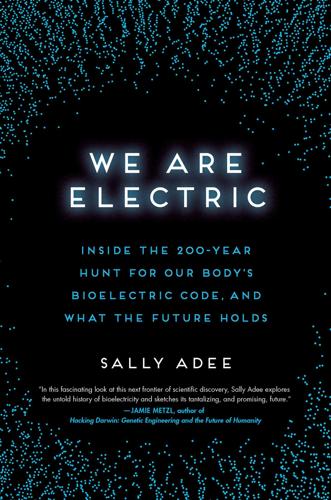
We Are Electric: Inside the 200-Year Hunt for Our Body's Bioelectric Code, and What the Future Holds
by
Sally Adee
Published 27 Feb 2023
It is for this reason that some scientists are beginning to think bioelectricity can be understood as a component of epigenetics—which describes how the environment can cause changes that alter the way your genes work without changing the actual DNA. “More and more epigenetic factors which drive the organization of biological information patterns and flows are being discovered,” writes the physicist Paul Davies.27 Bioelectricity is emerging as a major—if as yet poorly understood—epigenetic factor, he thinks, providing a powerful way for cells to manage epigenetic information. But other researchers are finding that it may be more than just another aspect of epigenetics. The word “epigenetic” means “above the genes.”
…
The word “epigenetic” means “above the genes.” And maybe electrical signaling functions as a kind of “meta-epigenetics”—one ring to bind them, if you will. As you will see over the next few chapters, electrical guidance exerts control over a great many complicated aspects of biology, from how genes are expressed to whether inflammation will commence in the immune system. The bioelectric code A granular understanding of the electrome, then, could also provide a way to control the genome almost as easily as we can control our computer hardware with software. Indeed, the Tufts University researcher Michael Levin is among those who have found evidence to suggest that the electrical dimensions of life can exert control over genes, providing a way to hack other systems we previously thought were too complex to precisely control.
…
A tiny electric field held veto power over the influence of any other growth factor or gene or anything else people had previously assumed to account for wound healing.37 The cells did what the electrical fields told them to do, no matter what else competed for their attention.38 This is the hallmark of an epigenetic variable. “That was when I realized we were working on something far more important than other people, even myself, had expected,” Zhao told me. To his consternation (and McCaig’s and Rajnicek’s), no one else was interested in their findings. As evidently disruptive as their work was—for better tissue repair, for understanding of embryonic development, you name it—among other electrophysiologists it went largely ignored.39 Electricity doesn’t do that.
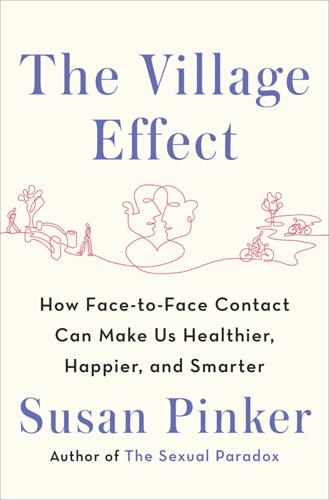
The Village Effect: How Face-To-Face Contact Can Make Us Healthier, Happier, and Smarter
by
Susan Pinker
Published 30 Sep 2013
Sitting on top of the genome, the epigenome (the Greek prefix epi means “on”) transforms the way DNA is expressed without changing anything about the DNA itself. Traditional evolutionary mechanisms are slow. It would take many generations for a mutation that was perfectly adapted to global warming to thrive, for example. But epigenetic transformation is fast, allowing the genome to “respond to the environment without having to change its hardware,” Jirtle explains. If we think of the genome as the computer’s hardware, then “epigenetics is the software. It’s just so darn beautiful if you think about it.”39 It is beautiful, if only because we now have a way to understand how something as simple as holding an infant against your chest can transform the baby’s developing synapses.
…
Alberts, and J. Altmann, “Social Bonds of Female Baboons Enhance Infant Survival,” Science 302 (2003); Cheney and Seyfarth, Baboon Metaphysics. 39. Leslie A. Pray, “Epigenetics: Genome, Meet Your Environment,” The Scientist, Juy 4, 2004. 40. L. H. Lumey, “Decreased Birthweights in Infants after Maternal in Utero Exposure to the Dutch Famine of 1944–1945,” Paediatric and Perinatal Epidemiology 6, no. 2 (1992); Bastiaan Heijmans et al., “Persistent Epigenetic Differences Associated with Prenatal Exposure to Famine in Humans,” Proceedings of the National Academy of Sciences of the United States of America 105, no. 44 (2008). 41.
…
In response, the social isolates secreted ten times more corticosteroids (hormones released from the adrenal gland when mammals are stressed out) than a control group of female rats raised in social groups. This exaggerated biological response changed their behavior, making the rats less willing to explore their environment. It also had epigenetic effects, altering the way genes were expressed in their mammary glands. If you’re a rat, the scent of fox urine is unnerving. If you’re a human, you’re likely to be stressed out by something else, such as public speaking, being bullied by your boss, or missing the last train to Clarksville. Whatever makes you sweat, Martha McClintock’s research tells us that as mammals we need stable social contact at the beginning of life in order to cope with stress later on.

The Evolution of Everything: How New Ideas Emerge
by
Matt Ridley
‘Darwinian evolution can include Lamarckian processes,’ wrote Eva Jablonka and Marion Lamb in 2005, ‘because the heritable variation on which selection acts is not entirely blind to function; some of it is induced or “acquired” in response to the conditions of life.’ But the evidence for these claims remains weak. All the data suggest that the epigenetic state of DNA is reset in each generation, and that even if this fails to happen, the amount of information imparted by epigenetic modifications is a minuscule fraction of the information imparted by genetic information. Besides, ingenious experiments with mice show that all the information required to reset the epigenetic modifications themselves actually lies in the genetic sequence. So the epigenetic mechanisms must themselves have evolved by good old Darwinian random mutation and selection.
…
Darwin’s Dangerous Idea. Simon & Schuster. On Wallace, Wallace, Alfred Russel 1889. Darwinism. Macmillan & Co. On Lamarckism, Weismann, August 1889. Essays Upon Heredity and Kindred Biological Problems. On epigenetics, Jablonka, Eva and Lamb, M. 2005. Evolution in Four Dimensions: Genetic, Epigenetic and Symbolic Variation in the History of Life. MIT Press. And Haig, D. 2007. Weismann Rules! OK? Epigenetics and the Lamarckian temptation. Biology and Philosophy 22:415–428. Chapter 4: The Evolution of Genes On the origin of life, Horgan, J. 2011. Psst! Don’t tell the creationists, but scientists don’t have a clue how life began.
…
In effect, there is no escape to intentionality to be found here. Yet the motive behind the longing to believe in epigenetic Lamarckism is clear. As David Haig of Harvard puts it, ‘Jablonka and Lamb’s frustration with neo-Darwinism is with the pre-eminence that is ascribed to undirected, random sources of heritable variation.’ He says he is ‘yet to hear a coherent explanation of how the inheritance of acquired characters can, by itself, be a source of intentionality’. In other words, even if you could prove some Lamarckism in epigenetics, it would not remove the randomness. Culture-driven genetic evolution In fact, there is a way for acquired characteristics to come to be incorporated into genetic inheritance, but it takes many generations and it is blindly Darwinian.
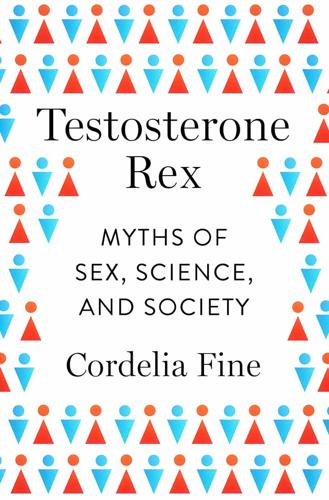
Testosterone Rex: Myths of Sex, Science, and Society
by
Cordelia Fine
Published 13 Jan 2017
Sex isn’t a biological dictator that sends gonadal hormones hurtling through the brain, uniformly masculinizing male brains, monotonously feminizing female brains. Sexual differentiation of the brain turns out to be an untidily interactive process, in which multiple factors—genetic, hormonal, environmental, and epigenetic (that is, stable changes in the “turning on and off” of genes)—all act and interact to affect how sex shapes the entire brain. And just to make things even more complicated, in different parts of the brain, these various factors interact and influence one another in different ways.23 For example, as Joel points out, environmental factors (like prenatal and postnatal stress, drug exposure, rearing conditions, or maternal deprivation) interact with sex in the brain in complicated and non-uniform ways.24 Take just one study, showing that lab rats that have enjoyed a peaceful, stress-free life show a sex difference in the density of the “top-end” dendritic spines (these transmit electrical signals to the neuron cell body) in one tiny spot of the hippocampus.
…
But easily passed over as a stabilizing buffer that allows the emergence of sex differences in behavior is the environment.51 Decades ago, Moore found that the high levels of testosterone in the urine of male newborn rats triggers a higher intensity of anogenital licking by their mothers, compared with the amount of licking received by female pups. This extra licking turns out, she found, to stimulate the development of sex differences in brain regions that underlie basic mating behavior.52 More recently, this more devoted maternal licking of males has also been linked to epigenetic effects in the brain and sex differences in youthful play behavior, potentially a precursor to later sex roles.53 In other words, the mothers’ behavior is an integral part of how male rats’ brains and behavior develop differently from females’. This seems remarkable. Maternal care, a critical part of evolution’s strategy for creating something as fundamental as male sexual behavior?
…
Maternal contributions to the development of masculine sexual behavior in laboratory rats. Developmental Psychobiology, 17(4), 347–356; Moore, C., Dou, H., & Juraska, J. (1992). Maternal stimulation affects the number of motor neurons in a sexually dimorphic nucleus of the lumbar spinal cord. Brain Research, 572, 52–56. 53. See Auger, A. P., Jessen, H. M., & Edelmann, M. N. (2011). Epigenetic organization of brain sex differences and juvenile social play behavior. Hormones and Behavior, 59(3), 358–363; de Vries & Forger (2015), ibid. 54. West, M. J., & King, A. P. (1987). Settling nature and nurture into an ontogenetic niche. Developmental Psychobiology, 20(5), 549–562. See also Lickliter, R. (2008).
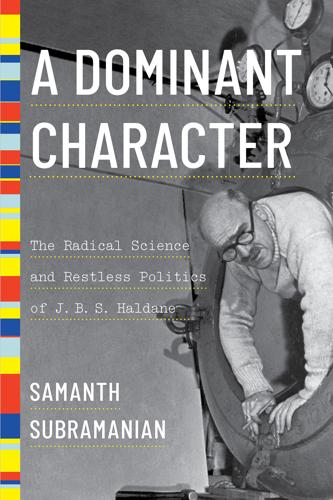
A Dominant Character
by
Samanth Subramanian
Published 27 Apr 2020
We have proof that an organism’s epigenetic molecules are vulnerable to its environment, but we haven’t been able to form any specific causal relationship between environmental factors and epigenetic change. Evidence for epigenetic heritability is also still slight. It contradicts the long-held theory that every embryo undergoes a sort of epigenetic reprogramming, so that the markers around parental genetic material are erased and then rebuilt anew. Worse still, to the resistant ear, the principal tune of epigenetics can sound too Lamarckian for comfort, even though it is wholly different from the kind of inheritance of acquired characters that Lysenko once sought. Epigenetics is only one of the wrinkles to have appeared in our understanding of Darwinian evolution since Haldane, along with Fisher and Wright, poured the foundations of the modern synthesis.
…
Studies have uncovered rare cases in which a parent, having had the dials turned by one environmental factor or another, passed on these new settings to an offspring—a mode of inheritance that is not genetic but epigenetic. In an experiment, a batch of male mice was conditioned to associate electric shocks with the cherrylike odor of acetophenone. When these mice became fathers, their pups were removed from them. They never had the chance to enact for their children their fear of the smell of cherries. Yet the young mice turned out to be hypersensitive to acetophenone; they even had an enlarged set of frontal brain neurons, the sort their fathers developed after their traumas. This experiment and others like it make for combustible debates in biology. We have proof that an organism’s epigenetic molecules are vulnerable to its environment, but we haven’t been able to form any specific causal relationship between environmental factors and epigenetic change.
…
All these various mechanisms have prompted a small, vocal faction of scientists to call for an augmentation of the modern synthesis. Through its reign, modern synthesis gave too much importance to natural selection as the engine of evolution, these scientists argue; a new model, capable of fitting niche construction and epigenetics and several other engines, is required. The augmented model is known, by its champions, as the extended evolutionary synthesis. It isn’t to everyone’s taste. In the larger opposing camp, biologists believe that the modern synthesis can already accommodate all these channels. More pertinently, these channels have not yet been proved to be even remotely as important to evolution as the forces acting on the gene: natural selection, mutation, genetic drift, and recombination.
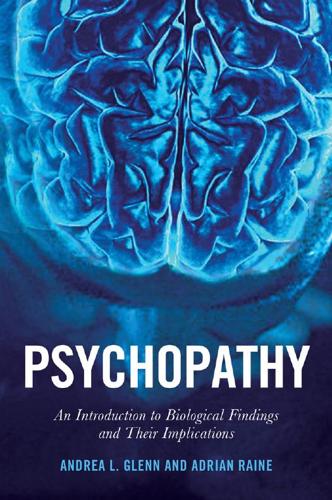
Psychopathy: An Introduction to Biological Findings and Their Implications
by
Andrea L. Glenn
and
Adrian Raine
Published 7 Mar 2014
Findings from the study by Sadeh et al. (2010) suggest that higher SES may be one factor that protects individuals with this genetic polymorphism from developing psychopathic traits. Epigenetics In addition to behavioral genetics studies, which assess the relative contribution of genetic versus environmental factors, and molecular genetics studies, which compare differences between individuals with different genetic polymorphisms, there is a third approach to understanding gene-environment interactions—epigenetic studies. Epigenetic studies 146 << Biosocial and Environmental Influences attempt to understand the physiological mechanisms that can change the way that genes are expressed.
…
Worley, and R. D. Grimes. 2010. “Treatment of psychopathy: A review and brief introduction to the mental model approach for psychopathy.” Behavioral Sciences & the Law 28 (2):235–66. Tremblay, R. E. 2008. “Understanding development and prevention of chronic physical aggression: Towards experimental epigenetics studies.” Philosophical Transactions of the Royal Society B 363:2613–22. Yang, Y., and A. Raine. 2009. “Prefrontal structural and functional brain imaging findings in antisocial, violent, and psychopathic individuals: A meta-analysis.” Psychiatry Research 174:81–88. References Abbott, C., and J.
…
Tranel, D., G. Gullickson, M. Koch, and R. Adolphs. 2006. “Altered experience of emotion following bilateral amygdala damage.” Cognitive Neurospsychiatry 11:219–32. 240 << References Tremblay, R. E. 2008. “Understanding development and prevention of chronic physical aggression: Towards experimental epigenetics studies.” Philosophical Transactions of the Royal Society B—Biological Sciences 363:2613–22. Tunbridge, E. M., P. J. Harrison, and D. R. Weinberger. 2006. “Catechol-o-methyltransferase, cognition, and psychosis: Val158Met and beyond.” Biological Psychiatry 60:141–51. Tyrka, A. R., L. Wier, L. H.
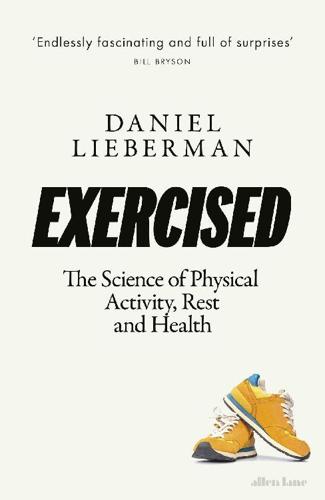
Exercised: The Science of Physical Activity, Rest and Health
by
Daniel Lieberman
Published 2 Sep 2020
If oxidation, mitochondrial dysfunction, mutations, glycation, and inflammation were not enough, plenty of other processes also contribute to senescence by damaging and degrading cells. Over time, tiny molecules glue themselves to the DNA in cells. These so-called epigenetic (on top of the genome) modifications can affect which genes are expressed in particular cells.31 Because environmental factors like diet, stress, and exercise partly influence epigenetic modifications, the older we are, the more of them we accumulate.32 Most epigenetic modifications are harmless, but the more you have for a given age, the higher your risk of dying.33 Other forms of senescence include cells losing the ability to recycle damaged proteins,34 inadequately sensing and acquiring nutrients,35 and (less likely) being unable to divide because the little caps (telomeres) that protect the ends of chromosomes from unraveling have become too short.36 If this list of aging mechanisms alarms you, it should.
…
G. (2013), The role of mitochondria in aging, Journal of Clinical Investigation 123:951–57. 31 All your cells have the same genome, so you need epigenetic modifications to enable a skin cell to function differently from a neuron or a muscle cell. Some epigenetic modifications appear to be passed on from one generation to the next, making this a nongenetic form of inheritance. 32 Horvath, S. (2013), DNA methylation age of human tissues and cell types, Genome Biology 14:R115; Gibbs, W. W. (2014), Biomarkers and ageing: The clock-watcher, Nature 508:168–70. 33 Marioni, R. E., et al. (2015), DNA methylation age of blood predicts all-cause mortality in later life, Genome Biology 16:25; Perna, L., et al. (2016), Epigenetic age acceleration predicts cancer, cardiovascular, and all-cause mortality in a German case cohort, Clinical Epigenetics 8:64; Christiansen, L., et al. (2016), DNA methylation age is associated with mortality in a longitudinal Danish twin study, Aging Cell 15:149–54. 34 He, C., et al. (2012), Exercise-induced BCL2-regulated autophagy is required for muscle glucose homeostasis, Nature 481:511–15. 35 This mechanism is especially fascinating because of the molecule mTOR (mammalian target of rapamycin), a protein that senses amino acids and promotes growth.
…
To deal with the tissue damage caused by her workout, she mounted an initial inflammatory response followed by a later anti-inflammatory response. She also produced copious, powerful antioxidants to mop up the reactive oxygen species unleashed by her mitochondria. And she turned on a host of other processes to rid her cells of waste products and repair DNA mutations, damaged proteins, and epigenetic modifications, as well as mend cracks in her bones, replace and add mitochondria, and more.43 Although these maintenance and repair processes are not nearly as costly as her workout, they nonetheless require calories, thus elevating her resting metabolic rate very slightly for some time. Studies show that people’s afterburns can last from two hours to two days depending on the intensity and duration of the physical activity.44 While exercise restores most structures (what biologists term homeostasis), in some cases it may make things even better than before (this is termed allostasis).

Animal Spirits: The American Pursuit of Vitality From Camp Meeting to Wall Street
by
Jackson Lears
From this established perspective, genetic change occurs through random mutations, some of which survive the process of natural selection and are passed along to subsequent generations as species adapt to their environments. In the newer view, whether articulated in the idiom of niche construction or epigenetics, an organism can respond to environmental challenges in ways that permanently alter the inheritance—ecological or genetic—that it passes along to future generations. The epigenetic version of this idea violates the orthodox assumption that changes in the body cannot influence the genes. This heresy, in Richard Dawkins’s view, will open the floodgates of “fanaticism” and “zealotry”—by which he means Lamarckism.
…
Ellison, Ralph Emerson, Ralph Waldo End of Laissez-Faire, The (Keynes) energy; atomic; deification of; dissipation of; health and England: America colonized by; capitalism in, see British economy; Christianity in; Elizabethan; Enlightenment in; political factions in English Malady, The (Cheyne) Enigma of Capital, The (Harvey) Enlightenment entropy environmentalism Epicurus epigenetics Essay upon Projects (Defoe) Ethiopian Art Theater Eton Eucken, Rudolf eugenics Europe: America colonized by; body worship in; Catholicism in; folktales in; in interwar years; militarism in; TR in; see also specific countries Europe: A Prophecy (Blake) evangelicals; rationality of; revivalism of Evans, Edward Payson (E. P.) evolution; Bergsonian; epigenetics and; self-development as Evolution créatrice, L’ (Bergson) exercise experimental psychology “Extasie, The” (Donne) Extraordinary Popular Delusions (MacKay) Fable of the Bees, The (Mandeville) Fallon, Stephen fascism Faulkner, William Fauset, Jessie FDR, see Roosevelt, Franklin fear; blood pressure as measure of; capitalism and; as civilizing; of conformity; effect on reasoning of; FDR on; experienced by elites; of nuclear war; positive thinking as antidote to; as primitive; of trances; in War on Terror Federal Reserve feminism fever, as term in economics; see also boom and bust cycles Fielding, Henry fingerprinting Finley, Harriet Finney, Charles Grandison Fisher, Irving Fisher, Margaret Fisher, Sidney George Fisk, Eugene Lyman Fisk University Fitzgerald, F.
…
Posed against the background of a dominant ethos devoted to managerial mastery, animal spirits serve as entrée into an alternative way of thinking and being in the world. This animistic worldview has flourished among idiosyncratic thinkers for centuries, but it has begun to acquire new legitimacy in our own time as scientists have rediscovered the uses of animist-derived ideas in physics, botany, geology, and epigenetics. All of these tendencies coincide with an efflorescence of ecological thought and converge on a common wisdom: we inhabit a living cosmos. That is the recognition that animates this book. But to begin with the first chapter of the story, we must return to the point of departure for most Englishmen who arrived on North American shores in the early 1600s: Elizabethan London. 1 Between Body and Soul SIXTEENTH-CENTURY LONDON was a dangerous place, where sudden reversals of fortune were commonplace.

Seveneves
by
Neal Stephenson
Published 19 May 2015
In subsequent decades, larger and larger animals had been set loose on the surface as part of a planned program to jump-start whole ecosystems. Some of those—the ones Kath Two had been worried about this morning—were canids. When Rhys said that they were “going epi,” he meant that they were passing through some kind of epigenetic shift. If the Agent had blown up the moon a couple of decades earlier, Eve Moira wouldn’t have known about epigenetics. It was still a new science at the time she was sent up to the Cloud Ark. During her first years in space, when she and her equipment had been coddled in the most protected zones of Izzy and Endurance, she’d had plenty of time to bone up on the topic.
…
Had it not been for the sudden intervention of the Agent, the biologists of Old Earth would have devoted at least the remaining decades of the century to cataloging these mechanisms and understanding their effects—a then-new science called epigenetics. Instead of which, on Cleft, in the hands of Eve Moira and the generations of biologists she reared, it became a tool. They had needed all the tools they could get, and they had wielded them pragmatically, bordering on ruthlessly, to ensure the survival of the human races. When creating the children of the other six Eves, Moira had avoided using epigenetic techniques. She had felt at liberty, however, to perform some experiments on her own genome. It had gone poorly at first, and her first eight pregnancies had been failures.
…
Cantabrigia, as Moira had named her after the university of Cambridge, had founded the race of which Kath Two was a member. By the time the Great Seeding was in the works, thousands of years later, epigenetics was sufficiently well understood to be programmed into the DNA of some of the newly created species that would be let loose on the surface of New Earth. And one of the planks in the Get It Done platform was to use epigenetics for all it was worth. So rather than trying to sequence and breed a new subspecies of coyote that was optimized for, and that would breed true in, a particular environment, as the TOT school would have had it, the GID approach was to produce a race of canines that would, over the course of only a few generations, become coyotes or wolves or dogs—or something that didn’t fit into any of those categories—depending on what happened to work best.
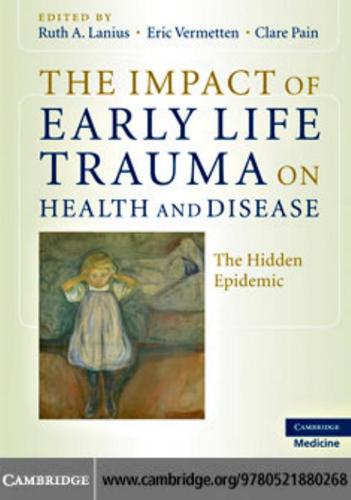
The Impact of Early Life Trauma on Health and Disease
by
Lanius, Ruth A.; Vermetten, Eric; Pain, Clare
Published 11 Jan 2011
Almost no studies to this day have assessed this important factor and yet the various studies reported in Ch. 14 would tend to suggest that such a dissociation of G×E effects may strongly depend on the developmental stage of the individual being exposed to the stressful environment. The authors of Ch. 14 go on to remind us that at each developmental stage there may be an epigenetic mechanism by which environmental cues can alter gene expression. Studies on developmental cognitive processes in children demonstrate that the interpretation of events depend on the age of the child. Consequently, it may be possible that the impact (negative or positive) of a given environmental factor has different epigenetic effects as a function of the developmental stage of the child when exposed to the event. The addition of a developmental factor into the G×E equation of early adversity on neurobiology and behavior could explain how two brothers raised in the same family environment can experience such strikingly different outcomes (and/or interpretations) as a result of their early childhood experiences.
…
Our understanding of the connection between emotional trauma in childhood and the pathways to biomedical and psychopathology in adulthood is still being formed as neuroscientists begin to describe the changes that take place on the molecular level as a result of events or ongoing states of life that occurred hours, months or decades earlier. xiii Foreword The editors have paid attention to all parts of our enquiry into the significance of the earliest years of human development:€to the roles of abuse and attachment, to genetics and to the epigenetic effects of parenting and other experiences of early life that lead to phenotypic plasticity, to the distinctly partial process of resiliency, and to diagnosis and treatment. The chapter authors, a mix of the internationally distinguished and those on a clearly rising trajectory, provide a blend of clinical observation and highly specific technical information in this bold attempt to bring together what is becoming known by clinical study and by sophisticated technical approaches such as functional imaging.
…
Attachment and Human Development, 8, 89–111. 21. van Ijzendoorn, M., Schuengel, C. and BakermansKranenburg, M. (1999). Disorganized attachment in early childhood:€Meta-analysis of precursors, concomitants, and sequelae. Development and Psychopathology, 11, 225–249. 22. Fish, E. W., Shahrock, D., Bagot, R. et al. (2004). Epigenetic programming of stress responses through variations in maternal care. Annals of the New York Academy of Sciences, 1036, 167–180. 23. Gunnar, M. (2005). Attachment and stress in early development. In C. S. Carter, L. Ahnert, K. E. Grossman et al. (eds.), Attachment and bonding:€A new synthesis (pp. 245–255).

Never Bet Against Occam: Mast Cell Activation Disease and the Modern Epidemics of Chronic Illness and Medical Complexity
by
Lawrence B. Afrin M. D.
,
Kendra Neilsen Myles
and
Kristi Posival
Published 15 Jan 2016
It turns out that the pattern of how methyl groups are laid out around the genes has a huge influence on how actively those genes are transcribed and translated into proteins, and the same way you can have a DNA mutation in a gene that results in a gene producing a dysfunctional protein or producing no protein at all, you also can have an epigenetic mutation in which a methyl group is present where it shouldn’t be, or absent from where it should be, and this error can wind up having an effect on how actively the cell goes about producing protein from that gene. So even if the gene itself is completely normal, if the epigenetic regulation of that gene is messed up, you can get too much protein, or too little protein, or no protein at all from that gene, and any of those situations has potential for causing clinical problems of one sort or another. We’ve been studying epigenetics for a lot shorter period of time than we’ve been studying genetics, so we understand a lot less about epigenetics than we do about genetics, but there certainly are a lot of researchers in this area who are trying to make up for lost time, as they say.
…
This word refers to either the state of having more eosinophils than normal or the state of a tissue, being examined by pathologists, absorbing more of the standard “eosin” stain than usual and thus appearing redder than usual. Epigastrium “Ep´-ih-gast´-ree-um.” This is the anatomical term for the central upper part of the abdomen, basically where the stomach is. Epigenetics “Ep´-ee-jen-et-iks.” To put it in a grossly oversimplified manner, epigenetics is the study of the processes that govern the transcription of genes into proteins. Think about it. The DNA that’s in each of your genes (long strings of which make up the chromosomes that are present in most of your cells) is a code for directing the protein-assembling machinery in your cells as to the *structure* of the proteins that the cells need to make in order to survive and function properly and contribute to the body’s health.
…
An epigene controls aspects of how functional a gene is within a cell. The same gene may function in very different ways (e.g., different transcription rates, different splicing patterns, etc.) in different cells as a result of bearing different methylation patterns, or epigenes, in the different cells. Epigenetic mutations, then, might also conceivably predispose a given gene, or set of genes, to becoming mutated themselves, with such mutations perhaps being more likely in provocative circumstances such as exposure to stressors of one sort or another. And there might well be other forms the hypothetical genetic fragility factor could take, forms such as silent genes, microRNAs, hidden viruses, and so on and so forth.
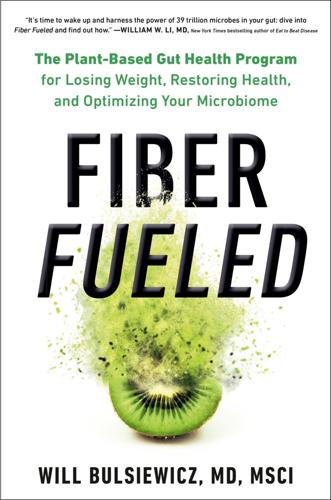
Fiber Fueled: The Plant-Based Gut Health Program for Losing Weight, Restoring Your Health, and Optimizing Your Microbiome
by
Will Bulsiewicz
Published 15 Dec 2020
Beyond holding the cards on a genetic monopoly, our gut microbes also exert tremendous power over the expression of your genes through something called epigenetics. Imagine your gut microbiota as controlling a light switch and the wiring behind the wall is your genetic code. The gut microbiota is not changing the wiring behind the wall, but it can turn the lights on or off. You can’t change your genetic code, but you can effect which genes get turned on or off. That is insanely powerful, if you think about it. An example of this concept of epigenetics is celiac disease. Celiac disease is a condition in which the immune system decides that gluten is the enemy.
…
We are a superorganism with a genetic makeup dominated by the invisible microbes within us. And this is actually a good thing! Rather than worrying about the 0.5 percent of your DNA that you simply cannot control, let’s optimize our microbiome through diet and lifestyle and enjoy the positive effects it has on 99.5 percent of our DNA plus our epigenetic expression. It’s time to transform your health from the inside out! What once was dismissed as poop is now the star quarterback for human health. Yes, it can be intimidating that most modern diseases have been connected to damage to the gut microbiome. But remember, we are not helpless victims stricken with disease.
…
Here’s what we have learned about sulforaphane, this medicinal phytochemical: Protects us from cancer by seven mechanisms: inhibits the production of carcinogens, activates enzymes to detoxify the carcinogens that are produced, shuts down blood flow to the tumor (which is needed to fuel growth), inhibits cancer cell migration and invasion, promotes self-destruction of cancer cells (apoptosis), and even regulates cancer development through epigenetics. Undermines lung, colon, breast, prostate, skin, pancreatic, liver, throat, and bladder cancer, osteosarcoma, glioblastoma, leukemia, melanoma—and potentially more. Shuts down the pro-inflammatory pathways that get activated by bacterial endotoxin. Works as a powerful antioxidant to detoxify free radicals and reduce cellular damage.

Radiant Rest
by
Tracee Stanley
Published 9 Mar 2021
Perennial Psychology of the Bhagavad-Gita. Honesdale, PA: Himalayan Institute Press, 2007. Rama, Swami, Rudolph Ballentine, and Swami Ajaya. Yoga and Psychotherapy: The Evolution of Consciousness. Honesdale, PA: Himalayan Institute Press, 1976. Rettner, Rachel. “Epigenetics: Definitions and Examples.” Live Science. June 24, 2013. www.livescience.com/37703-epigenetics.html. Roche, Lorin. The Radiance Sutras: 112 Gateways to the Yoga of Wonder and Delight. Boulder, CO: Sounds True, 2014. Rosenberg, Stanley. Accessing the Healing Power of the Vagus Nerve: Self-Help Exercises for Anxiety, Depression, Trauma, and Autism.
…
Take a few minutes, or as long as you need, to freewrite about any emotions or feelings that arise when you consider the lives of those who came before you. How can you honor the lives of your ancestors and those who will be future ancestors? A REST IN PROGRESS Many of us have narratives in our DNA that tell us it is not safe to relax and let go. The science of epigenetics has begun to show in recent years how various factors in our lives and lifestyles—such as diet, exercise, and even trauma—can modify DNA by switching genes on or off. A 2018 study found that the sons of Union army soldiers who’d endured severe hardship as prisoners of war (POWs) during the Civil War were more likely to die young than were the POWs’ daughters or the sons of veterans who hadn’t been POWs.
…
biohacking Incremental lifestyle changes that optimize health and well-being. See this page. Devi Mahatmya The primary text of the Shakta tradition, which is also part of the Markandeya Purana. See this page. Devi Suktam A hymn praising the Divine Mother and her many powers that uphold the universe. See this page. epigenetics The study of external modifications to DNA that turn genes on or off. See this page. freewriting The act of processing experience through writing—quickly without concern for sentence structure, grammar, or spelling—to deepen understanding and cultivate memory and retentive power (smirti). See this page.

The Wisdom of Psychopaths: What Saints, Spies, and Serial Killers Can Teach Us About Success
by
Kevin Dutton
Published 15 Oct 2012
Before they were even born. “So is it possible,” I ask, in an attempt to draw everything together—Pinker and his cultural arbiters, Boddy and his corporate Attilas, and the whole epigenetics shebang—“that psychopaths have rolled the dice, and that, over time, more and more of us are now rolling it with them?” Hare orders another couple of shots. “Not only that,” he says. “But, over time, as you say, if the hand of epigenetics starts meddling behind the scenes, those dice will start to become more and more loaded. There’s no doubt that there are elements of the psychopathic personality ideally suited to getting to the top.
…
Chiao and Nalini Ambady, “Cultural Neuroscience: Parsing Universality and Diversity across Levels of Analysis,” in Shinobu Kitayama and Dov Cohen, eds., Handbook of Cultural Psychology (New York: Guilford Press, 2007), 237–54; and Joan Y. Chiao, ed., Cultural Neuroscience: Cultural Influences on Brain Function, Progress in Brain Research (New York: Elsevier, 2009). 26 a hot new offshoot from the field of mainstream genetics … For a clear and accessible introduction to the field of epigenetics, see Nessa Carey, The Epigenetics Revolution: How Modern Biology Is Rewriting Our Understanding of Genetics, Disease, and Inheritance (New York: Columbia University Press, 2012). 27 Hare tells me about a study conducted in Sweden back in the 1980s … See Gunnar Kaat, Lars O. Bygren, and Sören Edvinsson, “Cardiovascular and Diabetes Mortality Determined by Nutrition During Parents’ and Grandparents’ Slow Growth Period,” European Journal of Human Genetics 10, no. 11 (2002): 682–88, doi:10.1038/sj.ejhg.5200859. 28 “There was a writer back in the sixties,” Alan Harrington … See: Alan Harrington, Psychopaths (New York: Simon & Schuster, 1972). 29 “Did I tell you about [this] paper which shows that people with high testosterone levels …” See Robert A.
…
Or was it a case, as Steven Pinker had elucidated in his “culture of dignity” argument, of customs and mores becoming ever more socialized until they end up second nature? Hare suggests that it’s probably a little of both: that psychopaths, right now, are on a bit of a roll, and that the more of a roll they get on, the more normative their behavior becomes. He points to the emergence of epigenetics—a hot new offshoot from the field of mainstream genetics, which, put simply, looks at changes in gene activity that don’t actually involve structural alterations to the genetic code per se, but still get passed on to successive generations. These patterns of gene expression are governed by little “switches” that sit on top of the genome, and it’s through tampering with these switches, rather than through intricate internal rewiring, that environmental factors like diet, stress, and even prenatal nutrition can have their say—can, like mischievous biological poltergeists, turn your genes on or off, and make their presence felt in ancestral rooms long ago inherited from their original owner-occupiers.

Is the Internet Changing the Way You Think?: The Net's Impact on Our Minds and Future
by
John Brockman
Published 18 Jan 2011
Is the Internet in the tool kit of epigenetics? Possibly, but no one knows. The field of epigenetics is young, and even the basic mechanisms by which transgenerational epigenetic effects are inherited are not well understood. But the finding that parental behavior can alter gene expression and thought life in a child certainly leaves open the possibility that other behavioral environments, including the Internet, can do the same. Thus, in sum, the relevance of the Internet to human thought depends on whether one evaluates this relevance phylogenetically, ontogenetically, or epigenetically. Debate on this issue can be clarified by specifying the framework of evaluation.
…
Multitasking, for instance, might be a useful skill for exploiting in parallel the varied resources of the Internet, but genuine multitasking, at present, probably exceeds the limitations of the attentional system of Homo sapiens. Over generations, this limitation might ease. What the Internet cannot accomplish as a tool of learning it might eventually accomplish as a tool of natural selection. Epigenetics (the study of changes in appearance or gene expression caused by mechanisms other than changes in DNA) sculpts human thought within a lifetime and across a few generations. Experience and environment are its guides, and shifts in gene expression triggering shifts in cognition, emotion, and physiology are its relevant effects.
…
Just, “Altering Cortical Connectivity: Remediation-Induced Changes in the White Matter of Poor Readers,” Neuron 64 (2009): 624–31. * T. F. Oberlander et al., “Prenatal Exposure to Maternal Depression, Neonatal Methylation of Human Glucocorticoid Receptor Gene (NR3C1) and Infant Cortisol Stress Responses,” Epigenetics 3, 2 (2008): 97–106. * D. C. Engelbart, “Augmenting Human Intellect: A Conceptual Framework,” Summary Report AFOSR-3233, Stanford Research Institute, Menlo Park, Calif., October 1962. * “Telling More Than We Can Know: Verbal Reports on Mental Processes,” Psychological Review 84, 3 (1977): 231–59.
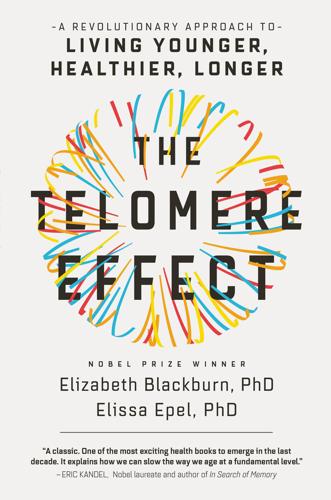
The Telomere Effect: A Revolutionary Approach to Living Younger, Healthier, Longer
by
Dr. Elizabeth Blackburn
and
Dr. Elissa Epel
Published 3 Jan 2017
C., et al., “Triallelic and Epigenetic-like Inheritance in Human Disorders of Telomerase,” Blood 126, no. 2 (July 9, 2015): 176–84, doi:10.1182/blood-2015-03-633388. 5. Factor-Litvak, P., et al., “Leukocyte Telomere Length in Newborns: Implications for the Role of Telomeres in Human Disease,” Pediatrics 137, no. 4 (April 2016): e20153927, doi:10.1542/peds.2015-3927. 6. De Meyer, T., et al., “A Non-Genetic, Epigenetic-like Mechanism of Telomere Length Inheritance?” European Journal of Human Genetics 22, no. 1 (January 2014): 10–11, doi:10.1038/ejhg.2013.255. 7. Collopy et al., “Triallelic and Epigenetic-like Inheritance in Human Disorders of Telomerase.”
…
But the really profound message is that parents have a second way of transmitting telomere length, known as direct transmission. Because of direct transmission, both parents’ telomeres—at whatever length they are at the time of conception in the egg and sperm—are passed to the developing baby (a form of epigenetics). Direct transmission of telomere length was discovered when researchers were investigating telomere syndromes. Telomere syndromes, as you’ll remember, are genetic disorders that lead to hyperaccelerated aging. Their victims have extremely short telomeres. People with telomere syndromes—think of Robin in an earlier chapter—often watch their hair turn gray while still in their teens.
…
You probably know that folate decreases the risk of spina bifida, a birth defect, but it also prevents DNA damage by shielding the regions of chromosomes known as the centromere (all the way in the middle of the chromosome) and the subtelomere (the chromosome region just inside and next to the telomere). When folate levels drop too low, the DNA becomes hypomethylated (losing its epigenetic marks), and the telomeres become too short—or, in a few cases, abnormally elongated.12 Low folate levels also cause an unstable chemical, uracil, to be incorporated into the DNA, and possibly into the telomere itself, perhaps causing temporary elongation. Babies of mothers who have inadequate folate during pregnancy have shorter telomeres, further pointing to folate as vital for optimal telomere maintenance.13 And gene variants that make it harder for the body to use folate are associated with shorter telomeres in some studies.14 The U.S.
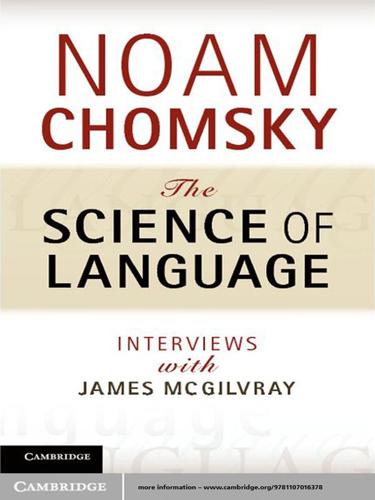
The Science of Language
by
Noam Chomsky
Published 24 Feb 2012
It is not entirely clear what exactly Waddington had in mind by way of an explanation of canalization, although one dominant theme is his appeal to “buffering” due to epigenetic ‘networks’ – intuitively, interactions between alleles and the environment. A prominent example is the transformation of stem cells (which can be ‘made into anything,’ as the popular press puts it) into cells of a specific sort: their DNA remains the same, and the environment ‘specializes’ them. Are epigenetic factors “third factor” contributions? Plausibly, yes: they involve more than DNA coding. The phenomena themselves are in general obvious enough.
…
For one thing, there is the fact that modification requires mutation, and mutation can only proceed within the constraints set by physics and chemistry, among other sciences: possible structures and modifications of structure are limited by the laws of nature. Various structural features of organisms, for example, cannot be explained by genetic instruction sets alone, nor can the way phenotypical development takes place; ‘epigenetic’ factors play a crucial role in the latter. Scaling of skeletal structure (the genome cannot be thought to provide a complete specification of the sizes of each bone in a specific organism) and symmetry (the fact that each rib on the right has a homologue on the left, each wing of a butterfly the same pattern as the other . . .) are two examples.
…
There is no modesty to this view – no recognition that selection's role is limited, if even that. Nothing is said about how evolution and phenotype development and growth must take place within the constraints set by physics, chemistry, biology, perhaps some form of information theory. There is no mention of the fact that many genes are conserved over species and clades. Epigenetic factors are ignored. ‘Happy accidents’ of the sort found in what Lewontin and Gould called “spandrels” are not mentioned. Too often – especially in the cognitive domain – there is only a minimal effort to find evidence for claims: just-so stories are common. Virtually all features within a species and their structures and behaviors are treated as though they were ‘selected’ over a long period, chosen by virtue of adapting to the environment in which a species is found.

Human Frontiers: The Future of Big Ideas in an Age of Small Thinking
by
Michael Bhaskar
Published 2 Nov 2021
For example, genetic science now has to incorporate cutting-edge research from not only biology, but also chemistry, physics, psychology, economics and sociology, with their differing methodologies and mindsets. Science called epigenetics ‘the greatest paradigm shift in recent history’.35 Long considered scientific heresy, the supposedly discredited legacy of Jean-Baptiste Lamarck, epigenetics contends that contextual conditions impact heredity. Via complex epigenetic mechanisms, environmental factors may impact the expression of genes. The molecular biology of genetics was already complex, and repeatedly turned out to be more so than even its most far-sighted proponents predicted.
…
The molecular biology of genetics was already complex, and repeatedly turned out to be more so than even its most far-sighted proponents predicted. For some time it was believed that a single gene might be responsible for a single trait, before it was shown that traits formed from the complex interplay of many genes. Epigenetics takes this to a new level. Psychological factors, the trajectory of a life, even sociological or historical factors, come into play. Although the matter is keenly debated, many scholars now believe that both neo-Darwinian and neo-Lamarckian mechanisms help drive evolution. The range of factors that need to be taken into account of any understanding is increased.36 It is one instance of a more general rule: simple(r) answers, simple(r) mechanisms, are ever less likely.
…
reduced=true Schwab, Klaus (2017), The Fourth Industrial Revolution, London: Portfolio Penguin Schwartz, Peter (1991), The Art of the Long View: Planning for the Future in an Uncertain World, Chichester: John Wiley Senior, Andrew, Jumper, John, Hassabis, Demis, and Kohli, Pushmeet (2020), ‘AlphaFold: Using AI for scientific discovery’, DeepMind, accessed 5 February 2020, available at https://deepmind.com/blog/article/AlphaFold-Using-AI-for-scientific-discovery Shambaugh, Jay, Nunn, Ryan, Breitwieser, Audrey, and Liu, Patrick (2018), The State of Competition and Dynamism: Facts about Concentration, Start-Ups, and Related Policies, Washington DC: The Hamilton Project Shaxson, Nicholas (2018), The Finance Curse: How Global Finance Is Making Us All Poorer, London: The Bodley Head Sheldrake, Rupert (2013), The Science Delusion: Freeing the Spirit of Enquiry, London: Coronet Shi, Feng, and Evans, James (2019), ‘Science and Technology Advance through Surprise’, arXiv, 1910.09370 Simonite, Tom (2014), ‘Technology Stalled in 1970’, MIT Technology Review, accessed 14 July 2019, available at https://www.technologyreview.com/2014/09/18/171322/technology-stalled-in-1970/ Singh, Jasjit, and Fleming, Lee (2010), ‘Lone Inventors as Sources of Breakthroughs: ‘Myth or Reality?’, Management Science, Vol. 56 No. 1 Skinner, Michael (2016), ‘Unified theory of evolution’, Aeon, accessed November 2, 2019, available at https://aeon.co/essays/on-epigenetics-we-need-both-darwin-s-and-lamarck-s-theories Sloman, Steven, and Fernbach, Philip (2017), The Knowledge Illusion: Why We Never Think Alone, London: Macmillan Smil, Vaclav (2005), Creating the Twentieth Century: Technical Innovations of 1867–1916 and Their Lasting Impact, New York: Oxford University Press Smil, Vaclav (2017), Energy and Civilization: A History, Cambridge, MA: MIT Press Smil, Vaclav (2020), Numbers Don't Lie: 71 Things You Need to Know About the World, London: Viking Smith, Kendall A. (2012), ‘Louis Pasteur: The Father of Immunology’, Frontiers of Immunology, Vol. 3 No. 86 Smith, Noah (2021), ‘Interview: Patrick Collison, co-founder and CEO of Stripe’, Noahpinion, accessed 29 March 2021, available at https://noahpinion.substack.com/p/interview-patrick-collison-co-founder Smolin, Lee (2008), The Trouble with Physics: The Rise of String Theory, the Fall of a Science and What Comes Next, London: Penguin Smolin, Lee (2019), Einstein's Unfinished Revolution: The Search for What Lies Beyond the Quantum, London: Allen Lane Solms, Mark (2021), The Hidden Spring: A Journey to the Source of Consciousness, London: Profile Books Solow, Robert M. (1956), ‘A Contribution to the Theory of Economic Growth’, The Quarterly Journal of Economics, Vol. 70 No. 1, pp. 65–94 Southwood, Ben (2020), ‘The rise and fall of the industrial R&D lab’, Works in Progress, accessed 11 November 2019, available at https://worksinprogress.co/issue/the-rise-and-fall-of-the-american-rd-lab/ Spengler, Oswald (1991), The Decline of the West, Oxford: Oxford University Press Stern, Nicholas (2015), Why Are We Waiting?
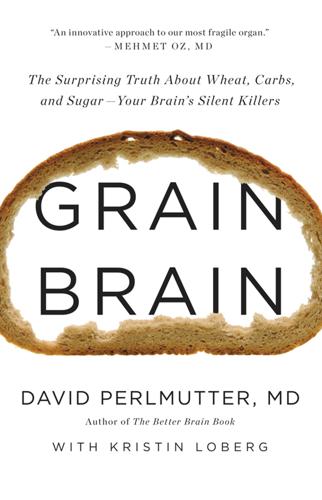
Grain Brain: The Surprising Truth About Wheat, Carbs, and Sugar--Your Brain's Silent Killers
by
David Perlmutter
and
Kristin Loberg
Published 17 Sep 2013
No doubt our genetic heritage does play a role in determining our risk for various health conditions. But what leading-edge medical research now understands is that we have the power to change our genetic destiny. One of the hottest areas of research currently gaining momentum is epigenetics, the study of particular sections of your DNA (called “marks”) that essentially tell your genes when and how strongly to express themselves. Like conductors of an orchestra, these epigenetic marks are the remote control not only to your health and longevity but also to how you pass your genes on to future generations. Our day-to-day lifestyle choices have a profound effect on the activity of our genes.
…
If you’re already thinking that this book isn’t for you because (1) you haven’t been diagnosed with any condition or disorder, or (2) you’re not sensitive to gluten as far as you know, I implore you to read on. This is about all of us. Gluten is what I call a “silent germ.” It can inflict lasting damage without your knowing it. Beyond calories, fat, protein, and micronutrients, we now understand that food is a powerful epigenetic modulator—meaning it can change our DNA for better or worse. Indeed, beyond simply serving as a source of calories, protein, and fat, food actually regulates the expression of many of our genes. And we have only just begun to understand the damaging consequences of wheat consumption from this perspective.
…
A million years ago, we triumphed over long distances because we could outrun and outwalk most other animals. This ultimately helped make us the clever human beings we are today. The more we moved, the fitter our brain became. And even today our brain’s healthy functioning requires regular physical activity despite the passage of time and ills of the aging process. CALORIC RESTRICTION Another epigenetic factor that turns on the gene for BDNF production is calorie restriction. Extensive studies have clearly demonstrated that when animals are on a reduced-calorie diet (typically reduced by around 30 percent), their brain production of BDNF shoots up and they show dramatic improvements in memory and other cognitive functions.
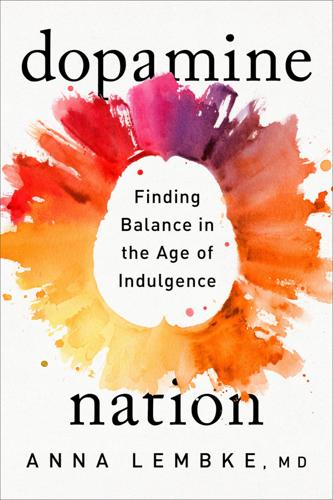
Dopamine Nation: Finding Balance in the Age of Indulgence
by
Anna Lembke
Published 24 Aug 2021
Mental illness is a risk factor, although the relationship between the two is unclear: Does the mental illness lead to drug use, does drug use cause or unmask mental illness, or is it somewhere in between? Trauma, social upheaval, and poverty contribute to addiction risk, as drugs become a means of coping and lead to epigenetic changes—heritable changes to the strands of DNA outside of inherited base pairs—affecting gene expression in both an individual and their offspring. These risk factors notwithstanding, increased access to addictive substances may be the most important risk factor facing modern people. Supply has created demand as we all fall prey to the vortex of compulsive overuse.
…
See lying and deception deification of the demonized, 114–15 delaying gratification and delay discounting phenomenon, 102–5, 109 effect of broken promises on, 194 impaired by dopamine overload, 102, 196 and physical strategies for self-binding, 116 and plenty vs. scarcity mindsets, 195–96 and Stanford marshmallow experiment, 115–16, 193–94 demonized substances, deification of, 114–15 denial, 177 Denmark, 39, 44 depersonalization, 192 depression and alcohol use, 78–79 client’s experience with, 40 growing incidence of, 45 and pleasure-pain balance, 65 taking medications for, 132 derealization, 192 Diagnostic and Statistical Manual of Mental Disorders (DSM-V), 61 diet as risk factor, 29 dieting, 112–13 digital drugs, 23 disclosure porn, 184–86 discomfort, intolerance of, 40 distractions active pursuit of, 40–41, 231 and dopamine fasts, 83–84 and pain avoidance, 44 and personal devices, 40–41 disulfiram as means of self-binding, 97–98 dogs, pain-response study of, 145–47 dopamine dopamine receptors, 48, 56, 56 function of, 48–49 identification of, 48 used to measure addictive potential, 2, 49 See also reward pathways in the brain dopamine deficit state, 55, 59, 78, 167 dopamine fasting, 71–88 contraindications for, 79–80 and co-occuring psychiatric disorders, 80–81 homeostasis as goal of, 77, 88 steps of (see DOPAMINE framework) and withdrawal, 84 DOPAMINE framework, 72–88 D for Data, 72–73 O for Objectives, 73–74 P for Problems, 74–75 A for Abstinence, 76–81 M for Mindfulness, 81–84 I for Insight, 84–85 N for Next Steps, 85–86 E for Experiment, 87–88 double life, 12 Douthat, Ross, 35 drugs and drug use cues associated with, 58 and decreased sensitivity to rewards, 56 disease burden attributed to, 29 and epigenetic changes, 20 exercise’s impact on, 150–51 moderation as goal, 87–88, 107–9 overdoses of, 30 and pleasure-pain balance, 54 and polypharmacy, 22, 23 potency of, 21–22 and religious engagement, 214 “drunkalogues,” 185 Dunnington, Kent, 2 Duragesic fentanyl, 18 Dutto, Vince, 26–27 DXM, 22 dysphoria, 57 dysphoria driven relapse, 57 East Asians, 97 Eastern Europe, 29 ecstasy, 115 education levels, 29–30 El Capitan, Honnold’s ascent of, 159–60, 166–67 electroconvulsive shock therapy (ECT), 155–56 electronic devices, personal, 40–41 emotions psychotropic drugs’ impacts on, 131 tolerating painful, 83–84 using food/drugs to cope with, 210, 211–13 empathy, 217 endocannabinoids, 150 endogenous opioid peptides (endorphins), 150 endurance athletes, 167 England, 129 entertainment, demand for, 40 epigenetic changes, 20 epinephrine, 150 Epstein, Mark, 192 equality, 30 exercise, 150–52, 161–65 experience-dependent plasticity, 62–63 experiences, value of recounting, 177 experimentation in DOPAMINE framework, 87–88 exposure therapy, 156–59 extreme sports, 165–67 “false self,” 191–92 fasting, 149–50 fear, increased tolerance to, 159–60 female modesty, 112 fentanyl, 21, 22 fibromyalgia, 154–55 Finucane, Tom, 67 food addiction to, 88, 99–100 processed, 22 used to cope with difficult emotions, 210, 211–13 and weight-loss surgeries, 99–100 France, 44 Freedman, Daniel, 75 free-rider problem, 220–22, 228 Freud, Sigmund, 36 future, confidence in, 195–96 gambling categorical strategies for addiction to, 111 and loss chasing, 62 and naltrexone as means of self-binding, 96 online, 23 pathological, 61–62 gastric binding, 99 gastric bypass, 99 gene expression and epigenetic changes, 20 generalized anxiety disorder (GAD), 32, 44–45 Germany, 39 glial cells, generation of, 150 gluten-free products, 113 goals moderation in drug use as, 87–88, 109 and Next Steps in dopamine framework, 85–86 “God Within” theology, 35 Goethe, Johann Wolfgang von, 53 Going on Being (Epstein), 192 grandparents with addictions, 20 Greeks, ancient, 141 hallucinogens, 114–15 happiness, 34–35 Hatcher, Alexandrea, 134 health care, affordable, 30 heart rate following pain exposure, 146, 147, 148 Hebb, Donald, 179 hedonic set point, 54, 145 hedonism, 37, 57 Hering, Ewald, 53 heroic therapies, 153 heroin clients’ experiences with, 22, 125 and delay discounting phenomenon, 103 and development of OxyContin, 114 impact of access on use of, 101 and naltrexone as means of self-binding, 96–97 origins of, 21 hibernation, 143–44 hippocampus, 67 Hippocrates, 153 Hoff, Wim, 142 homeostasis in brain abstinence necessary for, 77 and electroconvulsive shock therapy (ECT), 156 as goal of dopamine fasting, 88 inability to achieve, 128 and pain’s ability to trigger pleasure, 144–47 and pleasure-pain balance, 51–53 reestablishing, in absence of drugs, 58 using medications to restore, 127–35, 234 honesty, 171–205 accountability promoted by, 186–92 awareness cultivated by, 176–82, 234 contagiousness of, 192–97 as daily struggle, 205 intimate connections promoted by, 182–86, 227, 234 neurobiological mechanisms of honesty, 177–79 as painful, 171 as preventative measure, 197–204 role of, in recovery, 172–75 and shame cycle, 217 teaching children, 204, 224–27 Honnold, Alex, 159–60, 166–67 hormesis, science of, 148–52 hotel rooms, 17–18 Hung, Lin, 184 Huxley, Aldous, 40 hydrocodone, 21 hydromorphone, 21 hypnotics, 129 hypodermic syringes, 21 Iannaccone, Laurence, 219–21 Iannelli, Eric J., 107 Iceland, 39 immediate gratification, 104.
…
See lying and deception deification of the demonized, 114–15 delaying gratification and delay discounting phenomenon, 102–5, 109 effect of broken promises on, 194 impaired by dopamine overload, 102, 196 and physical strategies for self-binding, 116 and plenty vs. scarcity mindsets, 195–96 and Stanford marshmallow experiment, 115–16, 193–94 demonized substances, deification of, 114–15 denial, 177 Denmark, 39, 44 depersonalization, 192 depression and alcohol use, 78–79 client’s experience with, 40 growing incidence of, 45 and pleasure-pain balance, 65 taking medications for, 132 derealization, 192 Diagnostic and Statistical Manual of Mental Disorders (DSM-V), 61 diet as risk factor, 29 dieting, 112–13 digital drugs, 23 disclosure porn, 184–86 discomfort, intolerance of, 40 distractions active pursuit of, 40–41, 231 and dopamine fasts, 83–84 and pain avoidance, 44 and personal devices, 40–41 disulfiram as means of self-binding, 97–98 dogs, pain-response study of, 145–47 dopamine dopamine receptors, 48, 56, 56 function of, 48–49 identification of, 48 used to measure addictive potential, 2, 49 See also reward pathways in the brain dopamine deficit state, 55, 59, 78, 167 dopamine fasting, 71–88 contraindications for, 79–80 and co-occuring psychiatric disorders, 80–81 homeostasis as goal of, 77, 88 steps of (see DOPAMINE framework) and withdrawal, 84 DOPAMINE framework, 72–88 D for Data, 72–73 O for Objectives, 73–74 P for Problems, 74–75 A for Abstinence, 76–81 M for Mindfulness, 81–84 I for Insight, 84–85 N for Next Steps, 85–86 E for Experiment, 87–88 double life, 12 Douthat, Ross, 35 drugs and drug use cues associated with, 58 and decreased sensitivity to rewards, 56 disease burden attributed to, 29 and epigenetic changes, 20 exercise’s impact on, 150–51 moderation as goal, 87–88, 107–9 overdoses of, 30 and pleasure-pain balance, 54 and polypharmacy, 22, 23 potency of, 21–22 and religious engagement, 214 “drunkalogues,” 185 Dunnington, Kent, 2 Duragesic fentanyl, 18 Dutto, Vince, 26–27 DXM, 22 dysphoria, 57 dysphoria driven relapse, 57 East Asians, 97 Eastern Europe, 29 ecstasy, 115 education levels, 29–30 El Capitan, Honnold’s ascent of, 159–60, 166–67 electroconvulsive shock therapy (ECT), 155–56 electronic devices, personal, 40–41 emotions psychotropic drugs’ impacts on, 131 tolerating painful, 83–84 using food/drugs to cope with, 210, 211–13 empathy, 217 endocannabinoids, 150 endogenous opioid peptides (endorphins), 150 endurance athletes, 167 England, 129 entertainment, demand for, 40 epigenetic changes, 20 epinephrine, 150 Epstein, Mark, 192 equality, 30 exercise, 150–52, 161–65 experience-dependent plasticity, 62–63 experiences, value of recounting, 177 experimentation in DOPAMINE framework, 87–88 exposure therapy, 156–59 extreme sports, 165–67 “false self,” 191–92 fasting, 149–50 fear, increased tolerance to, 159–60 female modesty, 112 fentanyl, 21, 22 fibromyalgia, 154–55 Finucane, Tom, 67 food addiction to, 88, 99–100 processed, 22 used to cope with difficult emotions, 210, 211–13 and weight-loss surgeries, 99–100 France, 44 Freedman, Daniel, 75 free-rider problem, 220–22, 228 Freud, Sigmund, 36 future, confidence in, 195–96 gambling categorical strategies for addiction to, 111 and loss chasing, 62 and naltrexone as means of self-binding, 96 online, 23 pathological, 61–62 gastric binding, 99 gastric bypass, 99 gene expression and epigenetic changes, 20 generalized anxiety disorder (GAD), 32, 44–45 Germany, 39 glial cells, generation of, 150 gluten-free products, 113 goals moderation in drug use as, 87–88, 109 and Next Steps in dopamine framework, 85–86 “God Within” theology, 35 Goethe, Johann Wolfgang von, 53 Going on Being (Epstein), 192 grandparents with addictions, 20 Greeks, ancient, 141 hallucinogens, 114–15 happiness, 34–35 Hatcher, Alexandrea, 134 health care, affordable, 30 heart rate following pain exposure, 146, 147, 148 Hebb, Donald, 179 hedonic set point, 54, 145 hedonism, 37, 57 Hering, Ewald, 53 heroic therapies, 153 heroin clients’ experiences with, 22, 125 and delay discounting phenomenon, 103 and development of OxyContin, 114 impact of access on use of, 101 and naltrexone as means of self-binding, 96–97 origins of, 21 hibernation, 143–44 hippocampus, 67 Hippocrates, 153 Hoff, Wim, 142 homeostasis in brain abstinence necessary for, 77 and electroconvulsive shock therapy (ECT), 156 as goal of dopamine fasting, 88 inability to achieve, 128 and pain’s ability to trigger pleasure, 144–47 and pleasure-pain balance, 51–53 reestablishing, in absence of drugs, 58 using medications to restore, 127–35, 234 honesty, 171–205 accountability promoted by, 186–92 awareness cultivated by, 176–82, 234 contagiousness of, 192–97 as daily struggle, 205 intimate connections promoted by, 182–86, 227, 234 neurobiological mechanisms of honesty, 177–79 as painful, 171 as preventative measure, 197–204 role of, in recovery, 172–75 and shame cycle, 217 teaching children, 204, 224–27 Honnold, Alex, 159–60, 166–67 hormesis, science of, 148–52 hotel rooms, 17–18 Hung, Lin, 184 Huxley, Aldous, 40 hydrocodone, 21 hydromorphone, 21 hypnotics, 129 hypodermic syringes, 21 Iannaccone, Laurence, 219–21 Iannelli, Eric J., 107 Iceland, 39 immediate gratification, 104.
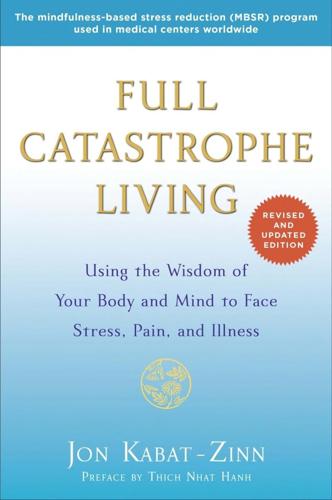
Full Catastrophe Living (Revised Edition): Using the Wisdom of Your Body and Mind to Face Stress, Pain, and Illness
by
Jon Kabat-Zinn
Published 23 Sep 2013
A new field called contemplative neuroscience has arisen to investigate what might be learned about brain functioning, consciousness, and the mind-body connection by studying both long-term meditators and also those who are relatively new to regular meditation practices, such as those taking mindfulness-based programs like MBSR. The second new area of emergence is the field of epigenetics. It turns out that the genome is equally “plastic” in ways that were unimaginable even a short time ago. Epigenetics explores in detail how our experience, our behaviors, our lifestyle choices, and even our attitudes can potentially influence which genes in our chromosomes are turned on (the technical term is upregulated), and which genes in our chromosomes are turned off (downregulated).
…
Benson pointed out that all religious traditions have ways of eliciting this response and that there is a kind of wisdom associated with prayer and meditation that is relevant to the health of the body and deserving of further study. More recent studies have demonstrated that training in the relaxation response can have dramatic epigenetic effects, upregulating and downregulating hundreds of genes. Similar epigenetic findings have been reported by Dr. Dean Ornish (see Chapter 31) in men with prostate cancer who were following his lifestyle change program which includes meditation and a low-fat vegetarian diet. Many of the genes that were downregulated in that study are known to be involved in inflammatory processes and cancer.
…
Mostly it will happen sooner rather than later because our internal resources for maintaining homeostasis can take only so much overload and abuse before they succumb and collapse. Research in the new field of epigenetics is showing this very clearly. It is in the interaction of our genes with our environment—which includes our lifestyle choices, how we behave, even how and what we habitually think, and, it appears, whether or not we practice mindfulness and other forms of meditation—that the genome is regulated and our susceptibility to various diseases made more or less likely. When we are not optimizing our epigenetic options to promote and nurture our overall health and well-being through the choices we make about how to be in wiser relationship to our own body and mind and to the world—in the face of our chronic stress reactions and our often less-than-helpful attempts at coping—what gives out first will depend to a large extent on our genes, on our environment, and on the particulars of the way of living we have settled on.
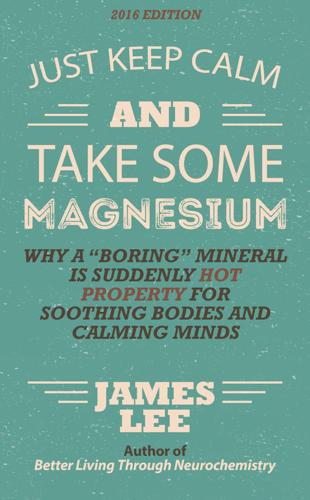
Just Keep Calm & Take Some Magnesium - Why a "Boring" Mineral Is Suddenly Hot Property for Soothing Bodies and Calming Minds
by
James Lee
Published 10 Feb 2014
However it is not purely environmental aging at work, but also a complex interaction between your genetics and your environment. In the past, people often referred to “nature versus nurture”, which was basically referring to genes and environment. Was someone born that way or did something happen to them that triggered a certain illness or behavior? However nowadays as science has progressed, the buzz word has become epigenetics, which basically refers to your genes and how they can be turned on or off by your environment. Let me give the example of a smoker. Why is it that some people can smoke a pack a day for life and never get lung cancer while others are struck down in midlife, despite smoking the same amount of cigarettes?
…
This is because a small minority of smokers have a particular genetic makeup that prevents them from developing lung cancer. I should point out an important point however – many smokers point to these rare outliers who don’t get cancer as a reason why it doesn’t matter whether you smoke or not. However this is a complete fallacy. Not only are these people exceedingly rare, this belief doesn’t take epigenetics into account. You should never base your beliefs and decisions on the visible minority (they are the visible minority because most of the other long-term smokers are not particularly visible unless you are a “Long Island medium”) So any scientific research aimed at extending the life span of humans must also look at genetics, not just environmental aging.

The Singularity Is Nearer: When We Merge with AI
by
Ray Kurzweil
Published 25 Jun 2024
Martin, “The Macho Sperm Myth,” Aeon, August 23, 2018, https://aeon.co/essays/the-idea-that-sperm-race-to-the-egg-is-just-another-macho-myth. BACK TO NOTE REFERENCE 51 Timothy G. Jenkins et al., “Sperm Epigenetics and Aging,” Translational Andrology and Urology 7, suppl. 3 (July 2018): S328–S335, https://doi.org/10.21037/tau.2018.06.10; Ida Donkin and Romain Barrès, “Sperm Epigenetics and the Influence of Environmental Factors,” Molecular Metabolism 14 (August 2018): 1–11, https://doi.org/10.1016/j.molmet.2018.02.006. BACK TO NOTE REFERENCE 52 Holly C. Betts et al., “Integrated Genomic and Fossil Evidence Illuminates Life’s Early Evolution and Eukaryote Origin,” Nature Ecology & Evolution 2 (August 20, 2018): 1556–62, https://doi.org/10.1038/s41559-018-0644-x; Elizabeth Pennisi, “Life May Have Originated on Earth 4 Billion Years Ago, Study of Controversial Fossils Suggests,” Science, December 18, 2017, https://www.sciencemag.org/news/2017/12/life-may-have-originated-earth-4-billion-years-ago-study-controversial-fossils-suggests; Michael Marshall, “Timeline: The Evolution of Life,” New Scientist, July 14, 2009, https://institutions.newscientist.com/article/dn17453-timeline-the-evolution-of-life.
…
As very rough approximations, the average man produces as many as two trillion sperm in his lifetime, and the average woman starts with about one million eggs.[51] Thus, to the extent that your identity hinges on the exact sperm and egg that made you, the odds of this happening were about one in two quintillion. While all these sex cells aren’t genetically unique, numerous factors like age can affect epigenetics, so if your father produced two chromosomally identical sperm at age twenty-five and age forty-five, they wouldn’t give precisely the same contribution to the formation of a baby.[52] Thus, as an approximation we must regard each sperm and egg as effectively unique. In addition to that, the comparable event had to take place for both sets of grandparents, and for all four sets of great-grandparents, and eight sets of great-great-grandparents, and so on…well, not quite ad infinitum—just to the beginning of life on earth nearly four billion years ago.[53] A googol (the correct spelling of the number that is the basis for the search company’s name) is a 1 followed by 100 zeros.
…
The other parts of the protein synthesis system, such as the ribosome, could be augmented in the same fashion. In this way we could simply turn off activity from malfunctioning DNA, whether it is responsible for cancer or genetic disorders. The nanocomputer maintaining this process would also implement the biological algorithms that govern epigenetics—how genes are expressed and activated.[120] As of the early 2020s, we still have a lot to learn about gene expression, but AI will allow us to simulate it in enough detail by the time nanotechnology is mature that nanobots will be able to precisely regulate it. With this technology we’ll also be able to prevent and reverse the accumulation of DNA transcription errors, which are a major cause of aging.[121] Nanobots will also be useful for neutralizing urgent threats to the body—destroying bacteria and viruses, halting autoimmune reactions, or drilling through clogged arteries.
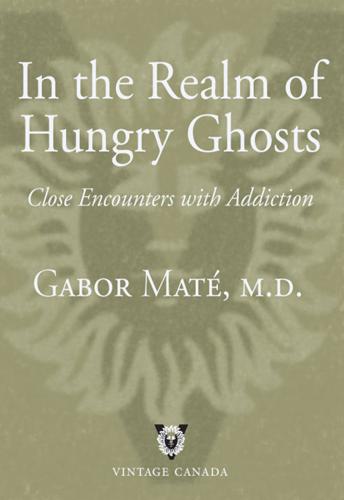
In the Realm of Hungry Ghosts: Close Encounters With Addiction
by
Gabor Mate
and
Peter A. Levine
Published 5 Jan 2010
“The cell’s operations are primarily moulded by its interaction with the environment, not by its genetic code,” the cell biologist Bruce Lipton has written.14 There is a new and rapidly growing science that focuses on how life experiences influence the function of genes. It’s called epigenetics. As a result of life events, chemicals attach themselves to DNA and direct gene activities. The licking of a rat pup by the mother in the early hours of life turns on a gene in the brain that helps protect the animal from being overwhelmed by stress even as an adult. In rats deprived of such grooming, the same gene remains dormant. Epigenetic effects are most powerful during early development and have now been shown to be transmittable from one generation to the next, without any change in the genes themselves.15 Environmentally induced epigenetic influences powerfully modulate genetic ones.
…
The important point to explore here is how stresses during pregnancy can already begin to “program” a predisposition to addiction in the developing human being. Such information places the whole issue of prenatal care in a new light and helps explain the well-known fact that adopted children are at greater risk for all kinds of problems that pre-dispose to addictions. The biological parents of an adopted child have a major epigenetic effect on the developing fetus. The conclusions of many animal and human studies are best encapsulated by researchers from the Medical School at Hebrew University, Jerusalem: In the past few decades it has become increasingly clear that the development and later behaviour of an immature organism is not only determined by genetic factors and the postnatal environment, but also by the maternal environment during pregnancy.18 Numerous studies in both animals and human beings have found that maternal stress or anxiety during pregnancy can lead to a broad range of problems in the offspring, from infantile colic to later learning difficulties19 and the establishment of behavioural and emotional patterns that increase a person’s predilection for addiction.
…
It is commonly assumed, with no scientific basis, that if a condition “runs in a family,” appearing in successive generations, it must be genetic. Yet as we have seen, for example with my Downtown Eastside patients, pre-and post-natal environments can be recreated from one generation to the next in a way that would impair a child’s healthy development without any genetic contribution. Parenting styles are often inherited epigenetically—that is, passed on biologically, but not through DNA transmission from parent to child. Why, then, are narrow genetic assumptions so widely accepted and, in particular, so enthusiastically embraced by the media? The neglect of developmental science is one factor. Our preference for a simple and quickly understood explanation is another, as is our tendency to look for one-to-one causations for almost everything.
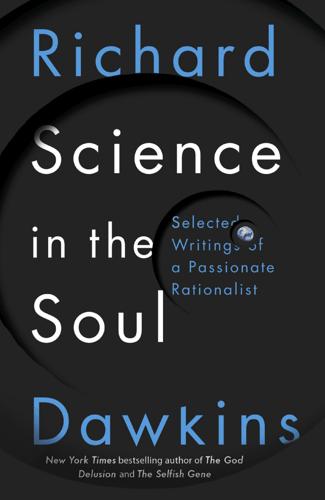
Science in the Soul: Selected Writings of a Passionate Rationalist
by
Richard Dawkins
Published 15 Mar 2017
.*7 Instructive evolution can work only if embryology is preformationistic. If embryology is epigenetic, as it is on our planet, instructive evolution cannot work. Briefly, if acquired characters are to be inherited, embryonic processes must be reversible: phenotypic change has to be read back into the genes (or equivalent). If embryology is preformationistic – the genes are a true blueprint – then it may indeed be reversible. You can translate a house back into its blueprint. But if embryonic development is epigenetic; if, as on this planet, the genetic information is more like a recipe for a cake than a blueprint for a house, it is irreversible.
…
There is no one-to-one mapping between bits of genome and bits of phenotype, any more than there is mapping between crumbs of cake and words of recipe. The recipe is not a blueprint that can be reconstructed from the cake. The transformation of recipe into cake cannot be put into reverse, and nor can the process of making a body. Therefore acquired adaptations cannot be read back into the ‘genes’ on any planet where embryology is epigenetic. This is not to say that there could not, on some planet, be a form of life whose embryology was preformationistic. That is a separate question. How likely is it? The form of life would have to be very different from ours, so much so that it is hard to visualize how it might work. As for reversible embryology itself, it is even harder to visualize.
…
Embryonic development would read the scan out again, like a television receiver. I have an intuitive hunch that there is an objection in principle to this kind of embryology, but I cannot at present formulate it clearly.*8 All I am saying here is that, if planets are divided into those where embryology is preformationistic and those, like Earth, where embryology is epigenetic, Darwinian evolution could be supported on both kinds of planet, but Lamarckian evolution, even if there were not other reasons for doubting its existence, could be supported only on the preformationistic planets – if there are any. Theory 4. Saltationism The great virtue of the idea of evolution is that it explains, in terms of blind physical forces, the existence of undisputed adaptations whose functionally directed statistical improbability is enormous, without recourse to the supernatural or mystical.
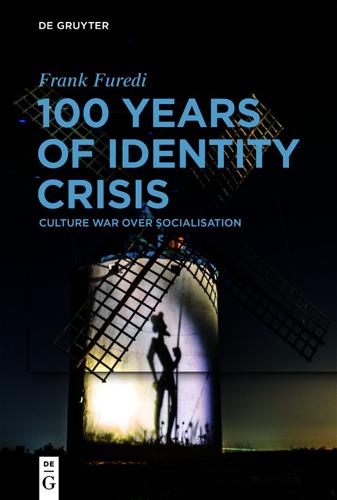
100 Years of Identity Crisis: Culture War Over Socialisation
by
Frank Furedi
Published 6 Sep 2021
For some time now there have been attempts to discover a so-called ‘gay gene’ that would endow this form of sexual identity with the legitimacy of science.69 While some have claimed that there are genetic markers that co-relate with homosexuality, others have suggested that the origin of sexual orientation is epigenetic in character. Epigenetics focuses on the way that environmental factors can modify people’s genes and potentially influence human attitudes and behaviour.70 Many members of the gay, lesbian and trans communities embrace the genetically based version of sexual orientation because they believe that it normalises and validates their identities.
…
Elliott (2013) Reinvention, London: Routledge, pp.11, 94−95. 68 www.youtube.com/watch?v=wV1FrqwZyKw. 69 See the discussion in K. O’Riordan (2012) ‘The life of the gay gene: from hypothetical genetic marker to social reality’, Journal of Sex Research, 49(4), 362 – 368. 70 See S. Reardon (2015), ‘Epigenetic “tags” linked to homosexuality in men’, Nature, 15 October, www.nature.com/news/epigenetic-tags-linked-to-homosexuality-in-men-1.18530. 71 Cited in www.dailymail.co.uk/tvshowbiz/article-2094099/Cynthia-Nixon-gay-choice-Actress-seeks-clarify-comments-causing-outrage.html. 72 E.H. Erikson [1950] (1995) Childhood and Society, London: Vintage, p.255. 73 W.
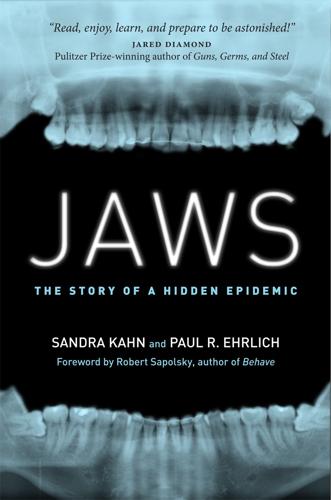
Jaws
by
Sandra Kahn,Paul R. Ehrlich
Published 15 Jan 2018
S. W. Herring. 1993. Formation of the vertebrate face epigenetic and functional influences. American Zoologist 33: 472–483; J. Varrela. 1990. Genetic and epigenetic regulation of craniofacial development. Proceedings of the Finnish Dental Society. Suomen Hammaslaakariseuran toimituksia 87: 239–244; T. F. Schilling and P. V. Thorogood. 2000. Development and evolution of the vertebrate skull. Linnean Society Symposium Series: 57–84; T. E. Parsons, E. J. Schmidt, J. C. Boughner, H. A. Jamniczky, R. S. Marcucio, and B. Hallgrímsson. 2011. Epigenetic integration of the developing brain and face. Developmental Dynamics 240: 2233–2244; and K.

The End of Illness
by
David B. Agus
Published 15 Oct 2012
The now-famous Nun Study was just the beginning. A handful of studies are finally taking place nationwide today that use donated brains with a rich and detailed clinical history gleaned from years of memory tests and physical exams. In 2009, the National Institutes of Health awarded Rush University about $5.5 million in grants to study how epigenetic changes—chemical modifications to genes that can result from diet, aging, stress, or environmental exposure—contribute to memory formation and cognitive decline. These studies have already unveiled surprising findings, one of which is a concept that neurologist David Bennett, director of Rush University’s Alzheimer’s Disease Center, calls neural reserve.
…
See heart/cardiovascular disease Cardiovascular Research journal, 163 carotenoids, 177 Case, Dan, 87 Case, Steve, 87 celiac disease, 72, 79 Center for Applied Molecular Medicine (USC), 111 Centers for Disease Control and Prevention (CDC), 11, 25, 180, 209, 275, 276, 277 central nervous system, 154, 155, 191 cerebrovascular disease, 24 checkups, medical: questionnaire for, 14 chemotherapy, 5, 37, 39, 86–91, 92–93, 157, 273 children/babies circadian rhythm of, 240 and keeping a regular schedule, 252–54, 258 sleep for, 252–54 cholesterol antioxidants and, 164 as biomarker, 46 cancer and, 201 as cause of death, 233 in the future, 267 physical activity and, 231 as risk factor for heart disease, 46–47 statin’s effects on, 26, 45, 46–47, 49, 61, 75 tests concerning, 58 vitamin C and, 163 chronic medical conditions antioxidants and, 176 cost of, 296–97 definition of health and, 21 in the future, 260 inflammation and, 47, 196 physical activity/exercise and, 231 protein and, 41 statistics about death and, 26 as systemic disease, 41 weight and, 49 See also specific condition chronic traumatic encephalopathy (CTE), 203–4 Church, Timothy S., 222 Cincinnati Children’s Hospital Medical Center: personalized medicine at, 118, 119 circadian rhythm, 240–43, 246, 247 circulatory system, 16, 213 Cisco Systems, 283, 284 Cleveland Clinic antioxidant studies at, 165–66 family history link to cancer study by, 68 Coffey, Don, 82 Cold Spring Harbor Laboratory: complex medicine systems research at, 114 colds, 17, 130, 208–12 collaboration: and sharing of medical information, 280–83 College Alumni Health Study, 221 colon cancer, 36, 72, 75–76, 79, 88, 112, 175, 296 colonoscopies, 60, 112, 296 color of food/fruits and vegetables, 184, 194 of skin, 139–41, 142 colorectal cancer, 62, 130, 136, 137 Columbia University autism studies at, 83–84 obesity-sleep study at, 244–45 complex systems medicine, 114–17 comprehensive metabolic panel (CMP), 58 computers, 114–15, 119, 272–74, 280 Consumer Reports magazine: diet survey of, 180 Cooper, Kenneth, 224–25 Cooper Aerobics Center, 224 correlation: in research studies, 135, 136 cortisol, 213, 238, 241, 245, 255 Crestor, 45, 75 See also statins Crick, Francis, 69, 103 Crohn’s disease, 72, 79 CT screenings, 296 cystic fibrosis, 104–5 cytochrome P450 (CYP450), 119–20 cytokines, 211 cytosine, 69 Darwin, Charles, 102, 103, 114 death causes of, 24, 233, 296 end of illness and, 2–3 search for master switch and, 294–301 statistics about, 23–27 deep-vein thrombosis (DVT), 72, 80 degenerative diseases, 232 dehydroascorbic acid, 154, 155, 157 Dell, Michael: Well at Dell program of, 282–83, 284 dementia, 161, 204, 205, 207–8, 227 demographics: as factor in research studies, 50–51 depression, 118–20, 121, 193, 202–3, 227, 240, 245, 253 diabetes and body as homeostatic, 138–39 as cause of death, 24, 233 cholesterol and, 201 environment and, 79 in the future, 260 genetics and, 72, 79 growth hormone and, 48, 242 hemoglobin A1C test and, 59–60 inflammation and, 47, 196 Personal Inventory Questionnaire and, 16 physical activity and, 221, 231 prenatal development and, 83 selenium and, 172 as systemic disease, 43 technology and, 264 vitamin C and, 163 vitamin D and, 133 weight and, 49 diagnosis, medical as dictating treatment, 29, 117 and genetics of infectious thinking, 31–41 keeping regular schedules and, 236–37 Personal Inventory Questionnaire and previous, 18 personalized treatment and, 117 proteomics and, 111–12 scientific thinking and, 29 statistics about death and, 23 technology and, 264–65, 267–69 diet/eating, 174–94 cancer and, 188, 214 and definition of health, 21 doing nothing and, 293 end of illness and, 296 genomics and, 121–22 gut feelings and, 192, 193 in history, 150–52 and keeping a regular schedule, 237, 238–39, 243–45, 246, 249, 258 microbiome and, 137, 187–90 multivitamins and, 158–59, 181 personalized treatment and, 121–22, 187 physical activity, 227 principles of health and, 3 protein in, 106 proteomics and, 121–22 and questions that patients need to ask doctors, 11 sleep and, 240, 243–45, 251 statistics about death and, 23 tests concerned with, 58 vitamin D and, 142, 143, 144, 145, 184–85 vitamins/supplements and, 157–58, 174–78, 194 digestion brain and, 191–93 microbiome and, 187–90 Personal Inventory Questionnaire and, 17 technology and, 268 DNA, decoding of, 118–19 DNA (deoxyribonucleic acid) as blame for illness, 22–23 decoding of, 103–4 differences in, 70–71 double-helix structure of, 69, 103 drug responses and, 118 early experiments on, 104 encoding of, 106 free radicals and, 161 in the future, 267–68 as great theoretical triumph of biology, 100–101 inflammation and, 200–202 information gained from analysis of, 111 as list of parts, 99 as marker for risk of disease, 70 mitochondrial, 229 personalized treatment and, 118 protein and, 99–100 repair of, 201, 229, 266 restaurant analogy and, 99, 100, 104, 105 search for master switch and, 295 sequencing of, 104, 106, 108 as static, 111 technology and, 263–64 understanding of, 100–105 variations in, 71 See also genes/genetics; genetic testing “do no harm” oath, 4–5 doctors and amount of time spent with patients, 55 annual examainations by, 53, 270 and being your own doctor first, 53–55, 66 discussions between patients and, 10–11, 55–56, 57, 61–62, 63–64 “do no harm” oath of, 4–5 friend/family member on visit with, 57 game plan for visit with, 56–57, 64 information given to, 55 “informed choice”/“shared decision making” and, 54 mistakes of, 297 paternalistic style of, 54 patient’s relationship with, 53–55, 66, 287 recording of discussions with, 57 sharing of medical information and, 285 as staying current, 54 and tests for doctors to run, 57–60 dogs, 257–58, 295 doing nothing, 288–93 dopamine, 256 down-regulation, 146–47 downtime, 254–57, 258 drugs advancements in, 23 complex systems medicine and, 116 definition of, 148–49 development of, 93 discussions with doctors about, 11, 63–64 doing nothing and, 293 end of illness and, 295 environment and, 84–86, 95 in the future, 260, 261 genetics and, 72, 73, 116 individual differences in response to, 118, 122 in laboratory animals, 93–94 list of, 56 and multiple outcomes of single drug, 85–86 need for innovation concerning, 297–98 negative reactions to, 91 “off-label” use of, 88 Personal Inventory Questionnaire and, 18 personalized treatment and, 117–22, 189–90, 260 platinum-based, 90, 93 regulation of, 292 and shades of gray, 91–94 side effects of, 47, 167 for sleep, 249–51 technology and, 189–90, 260, 261 trade-offs concerning, 48 vitamins/supplements as, 148–49 See also pharmaceutical industry; specific drug Dubner, Stephen, 135 Duke University: Avastin studies at, 89 Ecuador: human growth hormone study in, 48–49 Egg Concept, 82–83 Einhorn, Lawrence, 90 The Elements of Style (Strunk and White), 123–24 emotions gut feelings and, 193 and keeping a regular schedule, 238 See also feelings The Emperor of All Maladies (Mukherjee), 35 employer-based medical information programs, 282–84, 283n, 286, 287 endocrine disease, 72 endocrine signals, 191–92 endorphins, 213 energy, 15, 117, 159, 192, 229, 237 engineering application to football of, 273 complex systems medicine and, 114–15 computer, 280 protein studies and, 108–9, 117 enterotypes, 188–90 environment and body as homeostatic, 138–39 body (micro), 82–95 circadian rhythm and, 240–42 definition of, 81 drugs and, 84–86, 95 Egg Concept and, 82–83 family health tree and, 68 genetics and, 71, 79–81, 82, 95 importance of, 83 and keeping a regular schedule, 239, 244 laboratory studies and, 86–91, 93–94 life expectancy and, 95 outside (macro), 94–95 prenatal development and, 83 principles of health and, 3 protein and, 97–100 shades of gray and, 91–94 for sleep, 248–49 Epidemiology and Public Health Department (University College, London): heart, 231 epigenetics, 205–6 epilepsy, 210 esophageal cancer, 62 estrogen, 16, 84 ethnicity: as factor in research studies, 50 European Molecular Biology Laboratory (Heidelberg, Germany): microbiome, 188 European Prospective Investigation into Cancer and Nutrition (EPIC), 30 examinations, medical: annual, 53 exercise.
…
See medical information redundancy, 265–66, 268–69 research studies correlation in, 135, 136 demographics and, 50–51 environment and, 86–91, 93–94 genetics and, 51 Lind’s study as one of first clinical, 151 microsystems and, 50 need for funding for cancer, 298 need for repeatable results in, 108, 109 technology and, 3 See also specific researcher or study respiratory disease, 24 restaurant analogy, 99, 100, 104, 105 restless legs syndrome, 72, 80 resveratrol, 159 rheumatoid arthritis, 41, 72, 80 Richtel, Matthew, 256–57 rickets, 133, 158 “right” decisions: concerning treatment for disease, 54–55 right to health, 299–301 Risk Evaluation and Education for Alzheimer’s Disease (REVEAL) study, 76 robotics, 109 robustness, 266 Rosenberg, Barnett, 90 Rush University: epigenetic study at, 205–6 saliva, genetic testing and, 72 Salk, Jonas, 220 salmon, 179, 194 Santa Fe Institute: complex medicine systems research at, 114 sarcoidosis, 72, 80 saw palmetto, 56 schedule, regular, 236–58 and body’s natural rhythm, 238 brain and, 244, 246–47 children and, 252–54, 258 circadian rhythm and, 240–43, 246, 247 and dogs, 257–58 doing nothing and, 293 downtime and, 254–57, 258 eating and, 237, 238–39, 243–45, 246, 249, 258 hormones and, 240–45, 246 importance of, 214 Personal Inventory Questionnaire and, 15 physical activity/exercise and, 234–35, 237, 244, 249, 258 redefining health and, 11 sleep and, 237–38, 239–49, 258 stress and, 237, 238, 239, 241–42, 244, 247, 254 weight/obesity and, 244–45 schizophrenia, 84 Schrödinger, Erwin, 10 science, in the future, 259–62 Science Translational Medicine journal, 48 Scripps Howard News Service: football player study by, 198n scurvy, 150–53, 158 SeafoodWatch.org, 184, 194 second-born children, 83–84 The Second Brain (Gershon), 191 SELECT study, 172 selenium, 171–72, 179 Selmon, Lee Roy, 200 sensations: Personal Inventory Questionnaire and, 15 sensory nerves, 191–92 shades of gray: complexity of body and, 91–94 shingles, 61 shoes, 11, 195, 212 signaling molecules, 146, 147 single nucleotide polymorphismss (SNPs), 70, 71, 72 skin cancer of, 140, 141 color of, 139–41, 142 Personal Inventory Questionnaire and, 151 tanning of, 140–41, 142 vitamin D and, 139–41, 142 sleep age and, 248, 253 amount of, 247–49, 253 apps for, 65 benefits of, 240 brain and, 244, 253, 254, 256 children and, 252–54 definition of health and, 21 doing nothing and, 293 drugs for, 249–51 eating and, 240, 243–45, 251 environment for, 248–49 gut feelings and, 192 hormones and, 239–45, 254 and keeping a regular schedule, 237–38, 239–45, 246–49, 258 lack of, 244, 245 Personal Inventory Questionnaire and, 17 principles of health and, 3 side effects of poor, 240 stress and, 240, 241, 248, 254 weight/obesity and, 240, 244–45, 251 sleep apnea, 17, 250–51 Sleep Doctor’s Diet Plan (Breus), 248 smallpox, 276 smoking, 21, 23, 168, 201, 205, 230, 233, 280, 296 snoring, 17, 250 Snowden, David, 205 Southwest Oncology Group (SWOG), 172 Stanford University complex medicine systems research at, 114 sleep-athletes study at, 248 technology-learning process study at, 256 Stanley, Edward (Earl of Derby), 215–16 Stark-Vance, Virginia, 87–88 statins age and, 61 benefits of, 75 cholesterol and, 26, 45, 46–47, 49, 61, 75 diverse effects of, 85 end of illness and, 296 heart attacks and, 46–47, 210 heart/cardiovascular disease and, 46–47, 48, 296 impact on biological system of, 45–47, 48 inflammation and, 47, 75, 209–10, 212 influenza and, 209 “legacy effects” of, 210 and questions that patients need to ask doctors, 11 source of, 45–46 statistics about deaths and, 26 stroke and, 210 trade-offs concerning, 48 See also Crestor; Lipitor stomach cancer, 72, 80 stress apps for, 65, 66 and body as homeostatic, 269 brain and, 246 chronic inflammation and, 46 definition of health and, 21–22 DNA analysis and, 40–41 downtime and, 255 environment as source of, 79 epigenetic changes and, 206 gut feelings and, 191, 192, 193 inflammation and, 196, 197, 204 and keeping a regular schedule, 237, 238, 239, 241, 244, 248, 254 negative test results and, 60, 76–77 oxidation and, 160, 161, 163, 164, 176, 196, 197 Personal Inventory Questionnaire and, 18 physical activity/exercise and, 213, 215, 227, 234, 237 psychological, 204 sleep and, 240, 241, 248, 254 stroke antioxidants and, 166 aspirin and, 62, 63 CRP and, 61 end of illness and, 296 growth hormone and, 242 inflammation and, 200, 211 oxidants and, 156 physical activity and, 221 statins and, 46–47, 48, 61, 210 statistics about death and, 23, 24, 26 vitamins/supplements and, 134, 167, 168 weight and, 49 “Strunk and White,” 123–24 studies at, 188 study at, 130 sucrose, 154 sugar in food, 180, 181 gut feelings and, 192 hemoglobin A1C test and, 59–60 See also blood sugar Sun Microsystems, 115 sunlight and keeping a regular schedule, 241–42 skin color and, 140–41, 142 vitamin D and, 127, 133, 134, 136, 137, 139–45, 147 supplements.
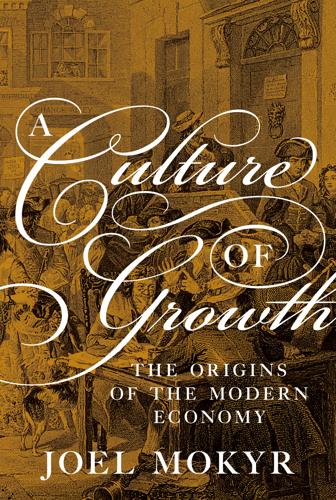
A Culture of Growth: The Origins of the Modern Economy
by
Joel Mokyr
Published 8 Jan 2016
Theodore, 323, 326, 338 Dear, Peter, 72, 103, 201, 221, 275 Deaton, Angus, 13 Debus, Allen G., 72, 151, 152, 172, 213, 279 dedications, book, 219 Dee, John, 74, 105, 210 Deification of cultural entrepreneurs, 114 deism, 115 DeJean, Joan, 250, 262 Delambre, Jean Baptiste, 110 Delatour, Jérôme, 280 Delft, 207 della Porta, Giambatista, 210, 270 Delmedigo, Joseph Solomon, 256, 257 Deming, David, 138 Deng Xiaoping, 337 Deng, Kent, 300, 327 Denonain, Jean Jacques, 93, 179 Desaguliers, John T., 83, 110, 112, 205, 223, 233, 242 Descartes, Rene, 68, 86, 95, 103, 105-107, 114, 130, 157, 160, 166, 193, 197, 198, 200, 203, 207, 208, 212, 213, 214, 227, 231, 239, 243, 248, 261, 263, 281, 310 and blood circulation theory, 243 cosmology of, 220 on the goals of philosophy, 240 works banned, 240 Deutsch, David, 198, 268 Devlin, Keith, 151 Dharampal, 215 d’Harcourt college, 130 Dibon, Paul, 180, 196 Dick, Malcolm, 277 Diderot, Denis, 79, 96, 109, 130, 178, 193, 245, 261, 333 Dieckmann, Herbert, 96 Digby, Kenelm, 243 Digges, Leonard, 74 Digges, Thomas, 74 Dijksterhuis, Fokko Jan, 82 Dikötter, Frank, 337 Dini, Piero, 131 direct bias, 101, 107,, 108, 133, 191, 209, 217, 218, 220 dispute-resolution, and religion, 128 dissent, political, Chinese crackdown on, 294 dissenting academies, 234 Dittmar, Jeremiah, 160 divination, 220 Djerassi, Carl, 257 Dobbs, Betty Jo, 102, 112 Doepke, Matthias, 7, 140, 236 Dollond, John, 108 Dooley, Brendan, 131 Dougharty, John, 280 Dover, Thomas, 91 Drebbel, Cornelis, 74, 185 Dublin, 256 Dubrovnik, 188 Duillier, Fatio de, 101 Dupré, Louis, 261, 263 Dupuy, Jacques, 280 Dupuy brothers, cabinet of, 198 Durham, William H., 144 Dury, John, 85, 86, 282 Dutch rivers, 169 Eamon, William, 73, 76, 77, 137, 147, 153-155, 183, 205 Easterlin, Richard A., 123, 126 Easterly, William, 126 Eckstein, Zvi, 127 ecological arbitrage, 317 economic growth, 4-6, 14, 20-23, 47, 78,119, 140-143, 185, 189, 238, 246, 256, 259, 268, 278, 279, 317, 322, 338, 342 and evolutionary models, 23 and human capital 124-126 and technological progress, 6, 143 and useful knowledge, 67 cultural roots of, 8 engines of, 259 in pre-industrial time, 143 institutional roots of, 16, 214, 215 economic progress, 115 economies of scale, 170 edict of Nantes, 317 Edinburgh, 177 Edinburgh, University of, 111, 178 Edison, Thomas A., 41 education, 37, 39, 40, 121, 123-126, 129, 141, 235, 244, 253 and economic growth, 126 cultural attitudes to, 123 in China, 292, 295, 330 and religious competition, 234 see also human capital education reform, 235-237 efflorescences, before the Industrial Revolution, 315 egalitarianism, in the Republic of Letters, 200 Egyptian hieroglyphs, Newton’s work on, 100 Ehrlich, Paul, 257 Einstein, Albert, 288 Eisenstein, Elizabeth, 159, 184, 187, 195, 208 Eldredge, Niles, 26, 164 Élements de la Philosophie de Newton, 107 elite, culture of, 119 elite, values and motives of, 120 elites, educated, 120 Elizabeth of Bohemia, Princess, 208 Elman, Benjamin A., 292, 293, 302-308, 312, 322-324, 325, 328, 330-333, 335 on Chinese science, 325 Elvin, Mark, 136, 287, 289, 317, 332, 336 emergent property, growth of open science as, 183 emulation, 129, 168, 331 Encyclopaedia Britannica, 220 encyclopedias, 79 Chinese, 332 European, 332 Encyclopédie, 96, 121, 332 Engelfriet, Peter, 321, 325 engineers, 204 England, 175, 176, 178, 207 Puritanism in, 237 see also Britain Enlightenment, 94, 114, 154, 159, 171, 178, 198, 216, 231, 247, 266, 268, 297, 298, 339-341 and economic development, 321 and economic growth, 13 and religion, 244 Bacon’s influence on, 96, 97 different versions of, 221 importance of for growth, 315 Newton’s influence on, 101 victory of, 220 view of the Universe, 338 see also Industrial Enlightenment Enlightenment, Agricultural, 268 Enlightenment, Chinese, 321-338 Enlightenment, Commercial, 268 Enlightenment, European, 265 Enlightenment, Medical, 268 Enlightenment religion, 246 entrepreneurs, 63, 66, 67, 159 see also cultural entrepreneurs entrepreneurship, 67 Entsu, Fumon, 149 Epicurean materialism, 115 epigenetic inheritance, 12 epigenetic transmission, 43 epistasis, 29 epistemic base, 27, 83, 316 Epstein, S.R., 82, 183, 192, 273 Erasmus, Desiderius, 175, 176, 187, 197, 213, 214, 247 Estates General, Dutch, 177 Estonia, 126 ethos of science, 201 Euclid, 74, 326 Euler, Johann, 242 Euler, Leonhard, 108, 110, 112, 242, 271, 272, 274 Europe, considered a single entity, 243 European exceptionalism, 227 Evans, R.J.W., 206 Evelyn, John, 80, 154, 155, 196, 243, 249 evidence, admissible, 55 evidence, rules of, 216 evidentiary research school see kaozheng, 322 evolution, cultural, 24-33 evolution, multiple mechanisms, of, 43 evolutionary models, 22, 23 in economics, 22 evolutionary systems, 28-30 unintended consequence in, 245 examination system, in China, 306 examinations, imperial, 300 see also civil service examinations exceptionalism, cultural, 243 experimental data as rhetorical tool, 217 validity of, 190 experimental method, 73, 76, 190, 213 and Isaac Newton, 104 in Bacon’s thought, 76 experimental methodology, 231 experimental philosophy, 228 experimentation, and content bias, 212 expertise, 218 demand for, 109 experts, 217 eyeglasses, introduced into China, 288 fact, concept of, 216 facts, definition of, 55 Fairbank, John King, 304 Fang-Yizhi, 324, 325 Fara, Patricia, 99, 101, 102, 108, 205 Faraday, Michael, 245 Farrington, Benjamin, 70, 77, 97 feedback, 53, 71, 314 dynamic, 48 negative, 315 feedback effects, 29, 65, 66 Feijoo, Benito Jeronimo, 172 Feingold, Mordecai, 106, 109, 113, 114, 130, 131, 199 Feldman, M.W., 24, 41, 60 Ferdinand de Medici, Grand Duke, 204 Ferguson, Adam, 168 Fernández, Raquel, 13, 14 Fernel, Jean, 204 Ferney, 176 Ferrone, Vincenzo, 77, 253 Ficino, Marsilio, 197 Findlay, Moses, 143 Findlen, Paula, 239 five classics, 302, 305 Flamsteed, John, 87, 100, 106 Florence, 205, 206 princes of, 207 Fludd, Robert, 213 Fontenelle, Bernard LeBovier, 103, 243, 262 Foucault, Michel, 60 four books, 302, 305 Four Treasuries, 334 Fowler, James, 24 Fracastoro, Girolamo, 173 fragmentation, political, 145, 166, 167, 169, 170, 175, 177, 290 framing bias, 52 France, 56, 74, 106, 107, 109, 121, 130, 160, 177, 178, 231, 233, 234, 240-243, 250, 261, 264, 269, 317 belief in progress in, 261 “moderns” in, 250 Francke, August Hermann, 245 Frängsmyr, Tore, 279 Frank, Robert G., 251 Frankfurt on the Oder, 110 Franklin, Benjamin, 275, 277, 278 Frederic the Great, King,178, 181, 245, 282 free-riding behavior, 13 freedom of entry, 189 French science, 241 frequency-dependence, 13, 52, 53, 208 Freud, Sigmund, 7, 60 Friedrich Wilhelm I, King, 245 Fumaroli, Marc, 56, 180, 186, 187, 195, 197, 200, 258, 262 Futuyma, Douglas, 33 Galen, 134, 151, 258, 319 Galenian medicine, 134, 162, 251, 252 Galiani, Sebastian, 5 Galilean method, 105 Galilei, Galileo, 68, 72, 78, 81, 93, 100, 101, 111, 112, 130, 131, 152, 156, 157, 158, 160, 162, 164, 171-173, 191, 197, 204, 205, 206, 207, 211-213, 227, 256, 260, 281, 324, 330 Gallup World Poll, 13 Galor, Oded, 22, 36, 121, 124 games against nature, 135 Gans, Joshua, 62 gas lighting, 271 Gascoigne, John, 104, 107, 276 Gassendi, Pierre, 95, 104, 156, 207, 240, 243, 280, 281 Gaukroger, Stephen, 73, 80, 92, 95, 150, 213, 277 Gauss, Christian, 96 Gay, Peter, 68, 114, 177, 193, 242, 243, 262 General Scholium, 103 genetic transmission, 24 Geneva, 171, 174 Geng Dingxian, 323 Genghis Khan, 309, 315 genotype, 28 Genshō, Mukai, 149 Geoffroy, Etienne François, 101, 275 George II, King, 205 German universities, 173 Germany, 12, 110, 127, 176, 195, 244, 281 East, 54 fragmentation of, 176 Industrial Enlightenment in, 244 Gernet, Jacques, 307, 308, 330, 331 Gesner, Conrad, 204 Getaldić, Marin, 188 Geynes, John, 151 Gezhi congshu, 333 Gibbon, Edward, 168, 176, 243 Giddy (Gilbert), Davies, 276 Giglioni, Guido, 73 Gilbert, William, 72, 134, 152, 157, 194, 213 Gillispie, Charles C., 76, 93, 96, 269 Gintis, Herbert, 14, 22, 46 Giuliano, Paola, 7, 10, 13, 32 Glaeser, Edward, 60, 123, Glanvill, Joseph, 146, 255, 262 Glasgow University, 125 Glass, Bentley, 107 Goddard, Jonathan, 229 Goebbels, Joseph, 55 Goldgar, Anne, 196 Goldsmith, Richard, 26 Goldstone, Jack A., 5, 33, 163, 250, 287, 291, 308, 314, 340 Golinsky, Jan, 280 good works, virtuousness of, 230 Goodman, Dana, 96, 181, 223 Goody, Jack, 296, 297, 332 Gorodnichenko, Yuriy, 18 Gough.
…
. … By ‘motivation’ I mean here incentives broadly defined to include expectations, beliefs, and internalized norms.” 12 Acemoglu and Robinson (2012, pp. 56–63) dismiss the role of culture as an independent factor, and stress the importance of institutions without fully recognizing the possible effect of the dominant beliefs and values on the kind of institutions that emerge. 13 To be sure, even in biology, modern research has blurred some of these sharp distinctions. While the inherited DNA sequence is immutable over a lifetime, cells can acquire and pass on to their progeny information acquired over their lives through epigenetic inheritance using methylated bases in the DNA. These do not alter the proteins but affect the chances of their being transcribed. See Jablonka and Lamb (2005, pp. 113–46). 14 Much of this work is surveyed in Bisin and Verdier (2011) and Alesina and Giuliano (2016). It is striking that there seems to be very little work so far done on the cultural factors behind scientific and technological progress. 15 In Greif’s (1994, p. 915) terms, cultural beliefs are the expectations that individuals have about the actions that others will take.
…
Chapter 5 Biases in Cultural Evolution The richness of cultural evolution as a tool for understanding historical development is illustrated by the work of two biologists, Eva Jablonka and Marion Lamb (2005). They discern four dimensions of evolution. In their view, there are biological and nonbiological ways in which cultural traits are passed from generation to generation. The four dimensions really boil down to two: biological transmission (either through genes or through epigenetic transmission) and cultural, through learned cultural elements (either through imitation or through symbolic transmission). The kind of cultural evolution models that affected the early modern intelligentsia I have in mind here are mostly part of Jablonka and Lamb’s “fourth leg,” coded information was exchanged by intellectuals through letters, publications, and meetings that affected the beliefs and information of participants.
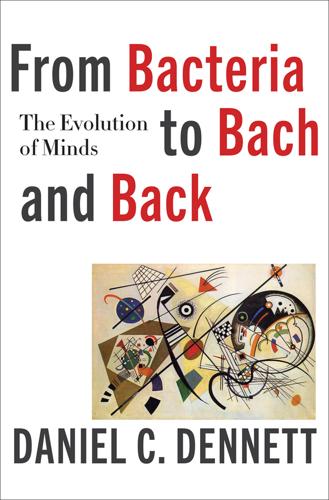
From Bacteria to Bach and Back: The Evolution of Minds
by
Daniel C. Dennett
Published 7 Feb 2017
There’s also the Baldwin Effect, which looks Lamarckian in some regards, since behaviors acquired by one generation can create a selection pressure favoring offspring who have a heightened tendency or talent for acquiring that behavior, eventually making it “instinctual.” And then there are the current hot topics: the complexities of development uncovered by “evo-devo” biologists, including especially “epigenetic” traits. A consensus definition of an epigenetic trait was achieved in 2008: “a stably heritable phenotype resulting from changes in a chromosome without alterations in the DNA sequence” (Berger et al. 2009). The topics are hot for several reasons: the researchers have uncovered some fascinating new wrinkles at the molecular level in the unfolding saga of evolutionary theory, some of the researchers have trumpeted their discoveries as truly revolutionary, calling into question neo-Darwinian orthodoxy, and as a result, Darwin-dreaders outside biology have perked up their ears, inflated what they’ve heard, and spread the false alarm that evolution by natural selection has been “refuted” by the discovery of Lamarckian inheritance.
…
New York: Free Press. Bennett, Jonathan Francis. 1964. Rationality: An Essay Towards an Analysis. London: Routledge. Bennett, Jonathan. 1976. Linguistic Behaviour. London: Cambridge University Press. Berger S. L., T. Kouzarides, R. Shiekhattar, and A. Shilatifard. 2009. “An Operational Definition of Epigenetics.” Genes Dev. 23 (7): 781–783. Bernstein, Leonard. 1959. “Why Don’t You Run Upstairs and Write a Nice Gershwin Tune?” In The Joy of Music, 52–62. New York: Simon and Schuster. Beverley, R. M. 1868. The Darwinian Theory of the Transmutation of Species Examined. (Published anonymously “By a Graduate of the University of Cambridge.”)
…
R., 214 Einstein, Albert, 71, 95, 96, 324 Eldredge, Niles, 80 elevators, automated, 63–70, 152, 236 communication between, 65–66 competence without comprehension in, 68, 69 living things compared to, 68 ontology of, 65–66, 68, 286 elevators, human-operated, 63 operating manual for, 63–65, 64 Eliasmith, Chris, 174n EMI (Experiments in Musical Intelligence), 322, 383–84, 390 endosymbiosis, 8, 54, 180 energy capture: AI and, 158–59 in living organisms, 6, 27, 29, 115, 145, 150 by neurons, 161 self-repair in, 18 Enigma code, 70 epigenetics, 244 error catastrophes, 141, 200, 227 essentialism, 187 Darwin’s rejection of, 138–39 in linguistics, 280 ethics, morality, 367–69 nonhuman consciousness and, 338–39 reason-giving and, 41 ethics, reason-giving and, 41 etymologies, 180–81, 182 eukaryotes, 142, 160–61, 171, 180, 389 origin of, 7–8 evolution, biological: adaptational views of, see adaptationism codependence of cultural evolution and, 177–78, 260, 286, 317, 413 competence without comprehension in, 56, 58, 68, 69 design in, see design, in biological evolution design without designers in, 316–17 epigenetics and, 244 functions in, 35 gambits in, 30, 30–32 Lamarckian view of, 243–44 of manifest image, 366 methodical selection in, 391 minimum requirements in, 29, 31 natural selection in, 26, 28–29, 30, 35, 40, 54, 58, 68, 76, 85, 311–12 R&D in, see research and development (R&D), in biological evolution rationales in, see free-floating rationales reproduction in, see reproduction, in living organisms reverse engineering of, 51 speciation in, 7 see also life, origins of evolution, cultural, see cultural evolution evolutionaries, 384 evolutionary biology, 22, 81 evolutionary-developmental (evo-devo) biology, 165 evolutionary theory: as not predictive, 241 see also natural selection Ex Machina (film), 399n expectations, brain as generator of, 174–75, 298 experiences, 346 consciousness and, 336, 346–54 subjective, 349–51 Experiments in Musical Intelligence (EMI), 322, 383–84, 390 expert systems, 400–402 gratuitous anthropomorphism in, 402–3 hypermodesty in claims about, 403 liability and, 405 premature ceding of authority to, 402–6 as tools vs. collaborators, 403 Explanatory Gap, 20–21 extinction, 372 “eye-spots,” of butterfly wings, 93–94 faces, information about, 111 feedback loops, 375 Feldman, Marcus W., 260 feral animals, 172 feral neurons, 5, 173–74, 412 Fermat’s Last Theorem, 376–77 Fermi Lab, Ill., 95–96 Feynman, Richard, 379, 386, 406 “Finding Design in Nature” (Schönborn), 36 first-person point of view, in concept of mind, 20, 345, 364–65, 366 Fisher, D., 80 Fitch, Tecumseh, 162 Floridi, Luciano, 114, 116 folk psychology, 213, 351–52, 379–80 folk theories, reality and, 222–23 Forster, E.
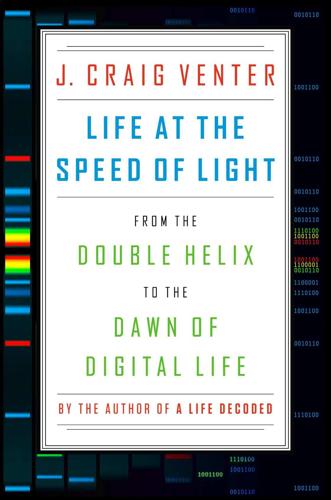
Life at the Speed of Light: From the Double Helix to the Dawn of Digital Life
by
J. Craig Venter
Published 16 Oct 2013
The complexity of cells, together with the continued subdivision of biology into teaching departments in most universities, has led many down the path of a protein-centric versus a DNA-centric view of biology. In recent years, the DNA-centric view has seen an increasing emphasis on epigenetics, the system of “switches” that turns genes on and off in a cell in response to environmental factors such as stress and nutrition. Many now behave as if the field of epigenetics is truly separate from and independent of DNA-driven biology. When one attributes unmeasurable properties to the cell cytoplasm, one has unwittingly fallen into the trap of vitalism. The same goes for the emphasis of the mysterious emergent properties of the cell over DNA, which is tantamount to a revival of Omnis cellula e cellula, the idea that all living cells arise from pre-existing cells.
…
Abraham, Spencer, 77 acne, 176 agriculture, 83 See also food Aldini, Giovanni, 12 Allentoft, Morten Erik, 182 Alperovich, Nina, 101 Altman, Sidney, 132 Alzheimer’s disease, 43 American Prometheus, 125 amino acids, 151 Anderson, Chris, 177 The Andromeda Strain, 185 antibiotic selection, 58 antibiotics: and bacteria, 170–2 bacteriophage, 172–5 and ribosomes, 39 treatment made possible, 57 aperiodic crystal, 3–5, 7, 26, 40 Applied Biosystems, 50 The Arabian Nights, 160 Arber, Werner, 31–2 Aristotle, 9, 25, 81 Armageddon, 90 Arrowsmith (Lewis), 9 artificial intelligence, 22 artificial life, 8, 19, 21–3, 129 Asilomar, 32, 153–4 ATP (adenosine triphosphate), 36 Avery, Oswald, 26–30, 170 epigraph, 25 Avida, 22 Bacon, Francis, 78 New Atlantis, 10 bacteria, 115, 130, 174, 176 and antibiotics, 170–2 bacteriophage, 172–5 chromosomes in, 99–100 Gram staining of, 53 lateral gene transfer, 171 bacteriophage, 172–5 Baltimore, David, 66–7 Barricelli, Nils Aall, 22 BBC, 128 belief: and science, 24, 30 See also religion; vitalism Benders, Gwyn, 113 Benner, Steven A., epigraph, 8 Bennet, Charles H., 161 Berg, Paul, 32–3, 83 Bergson, Henri, 17 Bernal, John Desmond, The World, the Flesh & the Devil, 19 Berzelius, Jöns Jacob, 11–3, 15 Billeter, Martin, 67 bio-circuits, 147–8 BioBricks, 147, 149 BioFactory, 148 Biogenic Law, 15 biohackers, 155 Biological and Toxin Weapons Convention, 153 biology, 163 birth of, 1 central problems of, 3 and computers, 139, 145–6 as control of life, 9 digitization of, 125 DNA-centric view of, 18 as information science, 5 molecular, 31, 34, 37, 83, 131 Registry of Standard Biological Parts, 147 synthetic, 83, 139, 151, 154, 156–7 See also teleportation bioluminescence, 112 biotechnology revolution, 33–4 bioterrorism, 155, 157 Blade Runner, 8 Blattner, Frederick, 84 Blue Gene, 41–2 Blue Heron, 118 Bohr, Niels, 161 bosons, 163–4 Boyer, Herbert, 32–3, 83 BP, 181 Brenner, Sydney, 5, 21, 79 epigraph, 47 Briggs, Robert, 98 Brongniart, Adolphe-Théodore, 45 Brothers Grimm, 185 Brown, Robert, 45 Brownian motion, 45–6 Bucher, Nancy, 135 Butler, Samuel, epigraph, 83 Capecchi, Mario, 58 Caplan, Arthur, 79 Caruthers, Marvin, 61 Caulobacter crescentus, 145–6 Cech, Thomas, 132 Celera, 68 cells, 34–5, 40–1 cell-free systems, 131, 135–7, 148, 165 cellular life on Earth, 130, 132–4, 137 cooperation of, 136–8 death of, 44 discovery of, 15 and DNA, 145 E-Cell Project, 141–2 human shedding of, 41 ingredients of, 138 multicellular, 137–8 origin of, 132–4, 137 protein content of, 108, 138 Schrödinger on, 2 single-celled organisms, 57, 69 size of, 90 as structure of life, 15, 18, 35 transformed identity of, 109 virtual cells, 140–5 and vitalism, 17 waste disposal of, 43 See also synthetic cells censorship, 76–7 Chain, Ernst Boris, 170 Chargaff, Erwin, 29 Chase, Martha Cowles, 28 chemistry, 11, 132, 163 organic vs. inorganic, 11–2, 14–5 Chen, Irene, 133 Chin, Jason, 151 Cho, Mildred K., 79 cholera, 99–100 Crichton, Michael, 185 Jurassic Park, 82 Chuang, Ray-Yuan, 91 Church, George, 84, 152 Ciechanover, Aaron, 43 climate change, 155, 158–9 See also environment; temperature Clinton, Bill, 48 cloning: Dolly (the sheep), 80, 96–7 first animal clone, 98 transformation-associated recombination (TAR), 120 yeast, 93–4, 113–5, 118 code-script, 3–5, 20–1, 24–5, 129 Cohen, Stanley Norman, 32–3, 83 Collins, James J., 150 comparative genomics, 53–61 computers, 21 and artificial life, 23 and biology, 139, 145–6 and DNA sequencing, 50 foundation of, 19 and information, 139 and life, 22 and teleportation, 162 Controlling Life: Jacques Loeb and the Engineering Ideal in Biology (Pauly), 9 Covert, Markus W., 143 creativity, 111 Creutzfeldt-Jakob disease, 43 Crichton, Michael, Timeline, 161 Crick, Francis, 4, 21, 28 on directed panspermia, 130 lab notebook at JCVI, 29 on RNA, 30 and Schrödinger, 5 Crucibles: The Lives and Achievements of the Great Chemists (Jaffe), 14 crystal: aperiodic, 3–5, 7, 26, 40 growth mechanisms, 57 See also X-ray crystallography Cybernetics (Weiner), 22 cystic fibrosis, 42–3 Darwin, Charles, On the Origin of Species, 16, 139 Darwin, Erasmus, Zoonomia; or the Laws of Organic Life, 26 Dawkins, Richard, 5 definitions, 127 See also life, definition of Deinococcus radiodurans R1, 89–91 Delbrück, Max, 2, 69, 173 Descartes, René, Discourse on Method, 10 designer life, 10, 130–1, 139–45 bio-circuits, 147–8 brain simulation, 140 and genes, 145 virtual cells, 140–5 d’Herelle, Félix, 172–3 Diamond, Jared, 79 digestive system, 136 digitized-life-sending-unit, 177 Dirac, Paul, 163 Discourse on Method (Descartes), 10 DNA: and cells, 145 composition of, 28–9 digital, 163–4 digitized-life-sending-unit, 177 double helix structure of, 4, 21, 28–9, 45 electrical charge of, 104 forensic, 111 fragility of, 103 as genetic material, 4, 24, 26–31 half-life of, 182–3 junk, 40 lateral gene transfer, 171 ligase, 64 methylation, 114–5 Neanderthal, 87 polymerase, 64–5, 67 protein structured by, 46 recombinant, 32–3 situation of, 104 as software of life, 6–7, 34, 41, 46–7, 78, 96, 109, 125, 130, 147, 187 and teleportation, 163, 165, 176 DNA fingerprinting, 32 DNA sequencing, 36, 47–53, 67–8 accuracy of, 71–2, 86–8, 94, 119–21, 124 and computers, 50 expressed sequence tags (ESTs), 50–1, 67 of first living organism, 53 interstellar broadcasts, 187 on Mars, 186–7 at speed of light, 163, 187 watermark sequences, 88, 94 See also shotgun sequencing DNA splicing, 31–4 DNA synthesis, 6, 61–2, 84–5, 89, 92, 94, 116–7 difficulty of, 70 error rate, 164–5 and phages, 175 do-it-yourself, 155, 157 Doctor Who, 160 Dolly (cloned sheep), 80, 96–7 doomsday virus, 157 Doyle, Arthur Conan, 161 epigraph, 160 Driesch, Hans, 17 dust, household, 41 The Dynamics of Living Matter (Loeb), 8 Dyson, Freeman, 128, 155 Dyson, George, Turing’s Cathedral, 23 E-Cell Project, 141–2 E. coli, 84, 115, 145 Earth: cellular life on, 130, 132–4, 137 life on, 163 and Mars, 179–80 planetary protection, 184 The Economist, 56 Einstein, Albert, 45, 161 elastin, 35 electrophoresis, 108 electroporation, 74 Eli Lilly and Company, 33 Eliava, George, 173 Embryonic Development and Induction (Spemann & Mangold), 97 Empedocles, 9 Encyclopaedia Britannica, 65 Endy, Drew, 146, 152 Energy Department (DOE), 68, 75, 77, 151–2 entelechy, 17 environment, 78, 80, 157–9 natural, 155 See also climate change; temperature environmentalists, 128 epigenetics, 18 ethics, 151–9 five guiding principles, 156 New Directions: The Ethics of Synthetic Biology and Emerging Technologies, 156 Presidential Commission for the Study of Bioethical Issues, 156 review board for synthetic life, 79, 151 and science, 80–2 Evans, Martin, 58 evolution, 53–4, 87 and chromosome acquisition, 100 designer life free of, 154 and genome transplantation, 100–1 experimental method, 34 expressed sequence tags (ESTs), 50–1, 67 extraterrestrial life, 56–7, 179–87 extremophiles, 57, 182 Fermi, Enrico, 163 fermions, 163–4 Feynman, Richard, 125, 127 epigraph, 111 Fiers, Walter, 48 Fire, Andrew, 40 Flavell, Richard, 67 Flemming, Alexander, 170 Florey, Howard Walter, 170 The Fly (Langelaan), 161 food, 33–4, 83, 157–9, 165 Fraenkel-Conrat, Heinz, 135 frameshift mutation, 121 Frankenstein (Shelley), 8, 12, 82, 156, 185 Franklin, Rosalind, 21, 29 Friedman, Robert, 151 gene knockouts, 58 Genentech, 33–4 genes: coding for, 40 concept of, 21 and context, 59 and designer life, 145 of influenza virus, 167 lateral gene transfer, 171 and life, 54–61, 80, 85 size of, 2 transplantation of, 99 unknown functions of, 56, 130, 146 genetic code, 36 as binary code, 3 first living organism sequenced, 53 and RNA, 132–4 genetic engineering, 32–4, 83–4, 111 crops, 33, 83 do-it-yourself, 155 first biotech product, 34 first transgenic animal, 32 toolkits for, 150 genetic mutations, 181 genetics: origin of, 26 reverse, 67 genome synthesis, 117 genome transplantation, 96–110 animal cloning, 96–8 and cell growth, 101–2 and evolution, 100–1 vs. gene transplantation, 99 mass spectrometry, 108–9 new methods, 103–5 questions about, 108 species change, 109 yeast trouble, 114–5 genomes: first decoding of, 48 first reading of, 5 metagenomics, 68–9 size of, 90, 92–3, 95, 102 See also comparative genomics; human genome; synthetic genome Gibson assembly, 117, 119 Gibson, Dan, 117–8, 120–2 Gibson, Everett, 56 Gilbert, Walter, 47 Glass, John I., 85, 101 God, 11, 24, 65, 82, 128, 158 Gosling, Raymond, 21, 29 Gould, Steven, Jumper, 161 Gram, Hans Christian, 53 Gram staining, 53 Griffith, Frederick, 27 Gurdon, John, 98 Gutmann, Amy, 156 Haemophilus influenzae, 51–5 Harry Potter (Rowling), 161 Healy, Bernadine, 76 Heatley, Norman, 170 Heliobacter pylori, 57 heredity, 3, 25–6, 28, 40 and nucleic acids, 28 d’Herelle, Félix, 172–3 Hershey, Alfred, 28, 173 Hershko, Avram, 43 history, 174 History of Chemistry (Kopp), 14 Holley, Robert W., 31, 48 Hood, Larry, 50 Hooke, Robert, 15, 130 Micrographia, 34 human genome, 48, 50, 68, 70 vs. microorganism, 90, 92–3, 95 and teleportation, 162–3 See also genomes human shedding, 41 humans, enhancement of, 158 Humulin, 34 Hutchison, Clyde, 49, 53, 59, 69–70, 74, 85, 113 industrial revolution, new, 177 influenza virus, 153 gene sequences of, 167 and vaccines, 166–70 information: and computers, 139 and life, 110, 124, 127, 129 and teleportation, 162 information science, biology as, 5 inheritance See heredity innovation, 111 The Institute for Genomic Research (TIGR), 50–1, 76 International Genetically Engineered Machine (iGEM), 146–50, 154 internet, quantum, 162 Intralytix, 176 The Irish Times, 2 isomerism, 14 Itakura, Keiichi, 33 J.
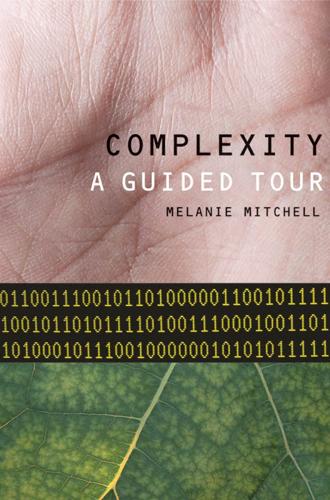
Complexity: A Guided Tour
by
Melanie Mitchell
Published 31 Mar 2009
There are heritable changes in the function of genes that can occur without any modification of the gene’s DNA sequence. Such changes are studied in the growing field of epigenetics. One example is so-called DNA methylation, in which an enzyme in a cell attaches particular molecules to some parts of a DNA sequence, effectively “turning off” those parts. When this occurs in a cell, all descendents of that cell will have the same DNA methylation. Thus if DNA methylation occurs in a sperm or egg cell, it will be inherited. On the one hand, this kind of epigenetic effect happens all the time in our cells, and is essential for life in many respects, turning off genes that are no longer needed (e.g., once we reach adulthood, we no longer need to grow and develop like a child; thus genes controlling juvenile development are methylated).
…
For decades biotech companies have been patenting particular sequences of human DNA that were believed to “encode a specific functional product.” But as we have seen above, many, if not most, complex traits are not determined by the exact DNA sequence of a particular gene. So are these patents defensible? What if the “functional product” is the result of epigenetic processes acting on the gene or its regulators? Or what if the product requires not only the patented gene but also the genes that regulate it, and the genes that regulate those genes, and so on? And what if those regulatory genes are patented by someone else? Once we leave the world of linear genes and encounter essential nonlinearity, the meaning of these patents becomes very murky and may guarantee the employment of patent lawyers and judges for a long time to come.
…
See emergence energy definition of, 41–42 heat as, 47 in metabolism, 178–179, 258, 265 as a primitive component of reality, 169, 293 relation to entropy, 42, 47 in thermodynamics, 42–43 for work done by natural selection, 79 Enigma, 69 Enquist, Brian, 262–267, 294, 300 entropy Boltzmann, 50–51, 307 complexity as, 96–98 decrease of in evolution, 79 definition of, 42 link with information, 45–47 in literature, 71 in Maxwell’s demon paradox, 43–45 Shannon, 51–54 in thermodynamics, 42–43, 47–48 Entscheidungsproblem (decision problem), 58–60 Turing’s solution to, 65–69 epigenetics, 276–277 Erdös, Paul, 125 Evo-Devo, 277–281 evolution challenges to Modern Synthesis principles of, 84–87 in computers (see genetic algorithms) of cooperation (see evolution of cooperation) increase in complexity under, 109–110 Kauffman’s theories of self-organization in, 281–287 major ideas of Darwinian, 78–79 Modern Synthesis principles of, 83 modification of genetic switches as major force in, 279–280 by natural selection (see natural selection) neutral, 86 optimization of biological fuel-transport networks by, 265–266 origins of Darwin’s theory of, 75–79 pre-Darwinian notions of, 72–75 principles of, under Modern Synthesis, 83 as requisite for life, 116 evolutionary computation.
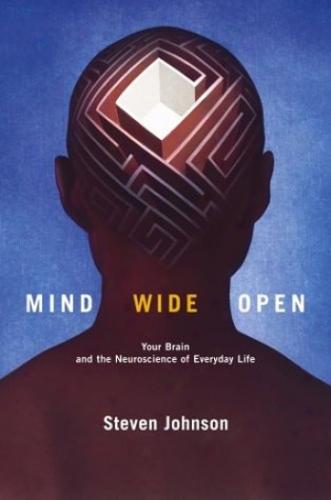
Mind Wide Open: Your Brain and the Neuroscience of Everyday Life
by
Steven Johnson
Published 2 Jan 1999
Early humans invented them in an attempt to express and control through magic the abundance of the environment, the power of solidarity, and other forces in their lives that mattered most to survival and reproduction. The arts were the means by which these forces could be ritualized and expressed in a new, simulated reality. They drew consistency from their faithfulness to human nature, to the emotion-guided epigenetic rules-the algorithms-of mental development. They achieved that fidelity by selecting the most evocative words, images, and rhythms, conforming to the emotional guides of the epigenetic rules, making the right moves. The arts still perform this primal function, and in much the same ancient way. Their quality is measured by their humanness, by the precision of their adherence to human nature.
…
Damasio, 1998, 228. 129. “With incest”: “The issue can be drawn more sharply by distinguishing the two principal hypotheses that compete for the explanation of human incest avoidance. The first is Westermarck’s, which I will now summarize in updated language: People avoid incest because of a hereditary epigenetic rule of human nature that they have translated into taboos. The opposing hypothesis is that of Sigmund Freud. There is no Westermarck effect, the great theoretician insisted when he learned of it. Just the opposite: Heterosexual lust among members of the same family is primal and compelling, and not forestalled by any instinctive inhibition.
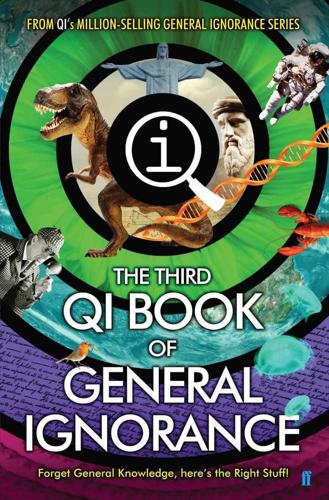
QI: The Third Book of General Ignorance (Qi: Book of General Ignorance)
by
John Lloyd
and
John Mitchinson
Published 28 Sep 2015
The threat of a predator can lead them to rapidly develop spines, helmets or even teeth on their necks. This ability for genes to respond to the environment is at the centre of a new field of study called epigenetics. This argues that our genetic code is less like a computer program and more like a musical score. Different organisms in different environments have different ways of expressing the information locked in their DNA. Given its extraordinary genome, the water flea is one of the star organisms of epigenetics. But it’s of more than just academic interest. By studying how water fleas change on a genetic level, we are learning more about how the environment can affect our own genome, giving us vital knowledge in the fight against hereditary diseases such as cancer.
…
K. 1 chickens 1, 2 childbirth 1 Chile 1, 2 chimpanzees 1 China, 1, 2, 3, 4, 5, 6, 7, 8, 9, 10, 11, 12, 13, 14 Chinchorro 1 chlorine 1 chlorofluorocarbons 1 chocolate 1 Cholula pyramid 1 Chopin, Frédéric 1 chopines 1 chromosomes 1 Christianity 1, 2, 3, 4 Christmas 1, 2, 3, 4, 5, 6 Churchill, Winston S. 1, 2, 3, 4, 5, 6 ciabatta 1 Cielo, César 1 cinnamon 1, 2 Cistercians 1 citrus fruit 1, 2 clams 1 Clare of Assisi, St 1 Clarke, Jeremiah 1 CLARKSON, JEREMY 1, 2, 3 claws 1 Clement X, Pope 1 Cleopatra 1 Clinton, Bill 1 cloacal kiss 1 cloning 1 Club 1 2 coal-fired power stations 1 cobras 1 coca leaves 1 cocaine 1 Cochabamba 1 Cochran, Josephine Garis 1 Cockerell, Christopher 1 cockroaches 1 coffee, 1 cognitive dissonance 1 Cold War 1 Coleridge, Samuel Taylor 1 COLES, RICHARD 1 Colosseum 1 colour 1, 2, 3 Columbus, Christopher 1, 2 comb jellies 1 Commonwealth 1 compost 1 Conan Doyle, Arthur 1, 2, 3 conception 1 conditioned response 1 conscription 1 conservation 1 Conservatives 1 contract law 1 Cook, Thomas 1 Cool Running (film) 1 COREN-MITCHELL, VICTORIA 1 Cornelius, Robert 1 Cornwall 1, 2, 3 corrugated iron 1 corsets 1 Corvan, Ned 1 Coryat, Thomas 1 Coutts, Thomas 1 Coventry 1 cowbirds 1 cowboys 1, 2 cows 1, 2 crabs 1, 2, 3, 4 Creighton, James George Aylwin 1 Crick, Francis 1 cricket 1, 2 crickets 1 crime rates 1 Croatia 1 crocodiles 1 Croton 1 Crown Court 1 crows 1, 2 crude oil 1 Cruikshank, John 1 Cruise, Tom 1 crusades 1 crushing 1 cryogenics 1 cryonics 1 Cuba 1, 2 cuckoos 1 Cup-a-Soup 1 Currey, Donald 1 Cyprus 1 Dakar Rally 1 damnatio ad bestias 1 dams 1 dangerous sports 1 Darius the Great 1 Darwin, Charles 1, 2, 3, 4 Darwin, Emma 1 Darwin, George 1 Darwin, William Erasmus 1 dating 1 dating systems 1 Dauger, Eustache 1 David, Jacques-Louis 1 DAVIES, ALAN 1, 2, 3, 4, 5, 6, 7, 8, 9, 10, 11, 12, 13, 14, 15, 16, 17, 18, 19, 20, 21, 22, 23, 24, 25, 26 Dead Sea 1 deductive reasoning 1 DEE, JACK 1 Denmark 1, 2, 3, 4 Dennis the Small 1 deserts 1 diabetes 1, 2 diamonds 1 diarrhoea 1, 2 DiCaprio, Leonardo 1 dictionaries 1 Dienekes 1 Dietrich, Marlene 1 Digby, Everard 1 dinosaurs 1, 2, 3 Dionysus Exiguus 1 dishwashers 1 Disney, Walt 1 DNA 1, 2, 3, 4, 5, 6 Doctor Who 1 Dodge City 1 dogs 1, 2, 3, 4, 5, 6 Dolbear, Amos 1 dolphins 1, 2 Don, Monty 1 Don Juan Pond 1 doves 1 dragonflies 1 Drake, Sir Francis 1, 2 drawings 1 driving tests 1 drowning 1, 2, 3, 4, 5, 6 drunkenness 1 dugongs 1 Dumas, Alexandre 1 dumb laws 1 Duncan, King of Scotland 1 dunce 1 Dunlop, John Boyd 1 Duns Scotus 1 Dürer, Albrecht 1 Dutch language 1 dyeing 1, 2, 3, 4, 5 E. coli 1 Ea 1 Earth 1, 2, 3, 4, 5, 6, 7, 8 atmosphere 1, 2, 3, 4, 5 magnetic field 1, 2, 3 orbit 1, 2, 3 population 1, 2 earthquakes 1 earthshine 1 earthworms 1, 2, 3 Easter 1, 2 eating for two 1 Eaton, Cyrus 1 Ebola 1 echolocation 1 Edinburgh 1 Edward VII, King 1 Edward VIII, King 1 Edward the Confessor 1 eggs 1, 2 Egypt 1, 2, 3, 4, 5, 6, 7, 8, 9, 10 Einstein, Albert 1, 2 Eisenhower, Dwight D. 1 elasticity 1 Eleanor of Aquitaine 1 elections 1 electricity 1, 2, 3, 4, 5 electrolytes 1 elephants 1, 2, 3, 4, 5 Elizabeth I, Queen 1, 2 Elizabeth II, Queen 1, 2, 3, 4 Ellis, Eric 1 emissions standards 1 Empire State Building 1, 2 energy 1, 2, 3, 4, 5, 6, 7, 8 energy drinks 1 England 1, 2, 3, 4, 5, 6, 7, 8, 9, 10, 11, 12, 13, 14, 15, 16, 17, 18, 19, 20, 21, 22, 23, 24, 25, 26, 27, 28, 29, 30, 31, 32, 33 England, Bank of 1 English Civil War 1 English language 1, 2, 3, 4, 5, 6, 7, 8, 9, 10, 11, 12, 13, 14 eons 1 Ephialtes 1 epigenetics 1 epochs 1 eras 1 ergs 1 Eriksson, Leif 1 Escoffier, Auguste 1 Ethiopia 1, 2 ethylene 1 EU 1 eucalyptus trees 1 Eugenie, Princess 1 euphemisms 1 Europe 1, 2, 3, 4, 5, 6, 7, 8, 9, 10, 11, 12, 13, 14, 15, 16, 17, 18, 19, 20, 21, 22, 23, 24 European Convention on Human Rights 1 Eurytus 1 Evening Birds 1 Everest (Churchill’s nanny) 1 Everest (mountain) 1 Eves, Stuart 1 exosphere 1 extracellular matrix 1 eyelids 1 Fair Isle 1 Famous Five 1 Farrow, Mia 1 fascism 1 fashion 1 Faunce, Thomas 1 feathers 1 Federal Reserve 1 feeding of the 5,000 1 female franchise 1 Ferrero Rocher 1 Ferris, George Washington Gale 1 ferris wheels 1, 2 FIELDING, NOEL 1 Fiennes, Sir Ranulph 1 film-making 1 finches 1, 2 fingers 1 Finkelstein, Nat 1 Finland 1 Fiorelli, Giuseppe 1 fire extinguishers 1 First World War 1, 2, 3, 4, 5, 6, 7 Fisher, John Arbuthnot 1 Fitzgerald, F.
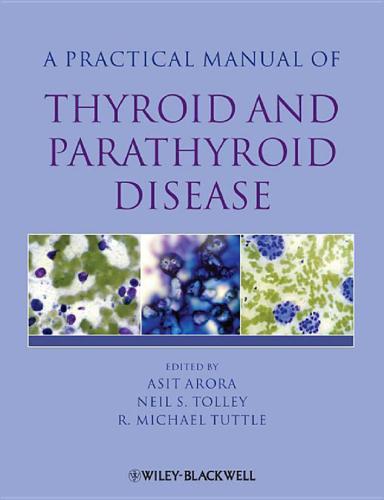
Practical Manual of Thyroid and Parathyroid Disease
by
Asit Arora
,
Neil Tolley
and
R. Michael Tuttle
Published 2 Jan 2009
Cancer Res 1995;55: 4594–8. 154. Xing M. Gene methylation in thyroid tumorigenesis. Endocrinology 2007;148:948–53. 155. Bird A. DNA methylation patterns and epigenetic memory. Genes Dev 2002;16:6–21. 156. Yoo CB, Jones PA. Epigenetic therapy of cancer: past, present and future. Nat Rev Drug Discov 2006;5:37– 50. 157. Alvarez-Nunez F, et al. PTEN promoter methylation in sporadic thyroid carcinomas. Thyroid 2006;16:17–23. 158. Schagdarsurengin U, et al. Frequent epigenetic silencing of the CpG island promoter of RASSF1A in thyroid carcinoma. Cancer Res 2002;62:3698–701. 101 159. Xing M, et al. Early occurrence of RASSF1A hypermethylation and its mutual exclusion with BRAF mutation in thyroid tumorigenesis.
…
Variant CD44 molecules are expressed widely throughout the body on epithelial cells in a tissue-specific pattern.149,150 Significant levels of CD44 protein are expressed on the plasma membranes of papillary thyroid cancer cells.151 PTC exhibits specific patterns of aberrant CD44 mRNA splicing. These aberrations are postulated to affect the function of CD44 protein molecules and might regulate PTC growth patterns and metastatic potential.152,153 DNA methylation Epigenetic alterations, i.e. changes around a gene which alter gene expression without affecting the nucleotide sequence, play a fundamental role in the regulation of human gene expression.154 Mechanisms include DNA methylation and histone modifications. Gene promoter methylation, particularly near a transcription start site, usually results in silencing of the gene.155,156 Aberrant methylation and hence inappropriate silencing of tumour suppressor genes is common in thyroid tumours.

Superintelligence: Paths, Dangers, Strategies
by
Nick Bostrom
Published 3 Jun 2014
There is, however, a complementary technology, one which, once it has been developed for use in humans, would greatly potentiate the enhancement power of pre-implantation genetic screening: namely, the derivation of viable sperm and eggs from embryonic stem cells.46 The techniques for this have already been used to produce fertile offspring in mice and gamete-like cells in humans. Substantial scientific challenges remain, however, in translating the animal results to humans and in avoiding epigenetic abnormalities in the derived stem cell lines. According to one expert, these challenges might put human application “10 or even 50 years in the future.”47 With stem cell-derived gametes, the amount of selection power available to a couple could be greatly increased. In current practice, an in vitro fertilization procedure typically involves the creation of fewer than ten embryos.
…
However, this procedure would tend to disrupt the normal genetic relationship between parents and child, something that could negatively affect demand in many cultures.51 With further advances in genetic technology, it may become possible to synthesize genomes to specification, obviating the need for large pools of embryos. DNA synthesis is already a routine and largely automated biotechnology, though it is not yet feasible to synthesize an entire human genome that could be used in a reproductive context (not least because of still-unresolved difficulties in getting the epigenetics right).54 But once this technology has matured, an embryo could be designed with the exact preferred combination of genetic inputs from each parent. Genes that are present in neither of the parents could also be spliced in, including alleles that are present with low frequency in the population but which may have significant positive effects on cognition.55 Table 6 Possible impacts from genetic selection in different scenarios52 One intervention that becomes possible when human genomes can be synthesized is genetic “spell-checking” of an embryo.
…
To stave off the negative effects of inbreeding, iterated embryo selection would require either a large starting supply of donors or the expenditure of substantial selective power to reduce harmful recessive alleles. Either alternative would tend to push toward offspring being less closely genetically related to their parents (and more related to one another). 52. Adapted from Shulman and Bostrom (2014). 53. Bostrom (2008b). 54. Just how difficult an obstacle epigenetics will be is not yet known (Chason et al. 2011; Iliadou et al. 2011). 55. While cognitive ability is a fairly heritable trait, there may be few or no common alleles or polymorphisms that individually have a large positive effect on intelligence (Davis et al. 2010; Davies et al. 2011; Rietveld et al. 2013).
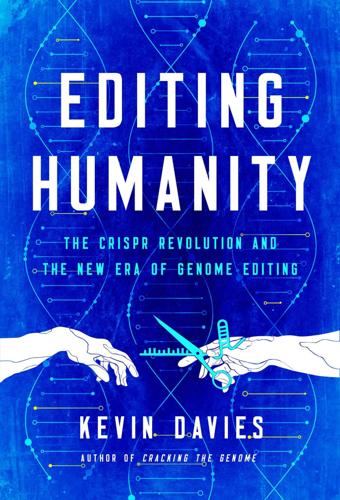
Editing Humanity: The CRISPR Revolution and the New Era of Genome Editing
by
Kevin Davies
Published 5 Oct 2020
Crick called for a new technique that could probe brain function at the single-cell level, and even suggested that this level of control could be achieved through light. III. Every Christmas, McGovern toured every IDG office location, meeting with each employee in person to hand them a cash gift and thank them for their specific contributions to the company, which he knew cold. IV. The Miami 2011 Winter Symposium, “Epigenetics in Development and Disease.” co-organized with Nature Publishing Group. V. Angelman syndrome is an example of a class of genetic diseases called imprinting disorders, in which mutations effectively silence one copy of a gene, depending on whether it was inherited from the mother or father. VI.
…
At a conference, a “starstruck” Urnov asked Alan Wolffe if he could join his lab as a postdoc. Wolffe was dynamic, charismatic, and the youngest institute director ever at the NIH. He said yes. Urnov was catapulted into the premier league of genetics research. Wolffe was an expert in the emerging field of epigenetics, the study of chemical modifications to DNA that regulate gene activity. Joining Wolffe’s lab reminded Urnov of the Red Queen’s race in Through the Looking-Glass, as Alice says, when we run this fast, we generally get somewhere else. Everybody in the lab was top-notch, working around the clock.
…
Huntington disease, fragile X mental retardation, and dozens of other disorders arise from the bizarre expansion of a tract of repetitive DNA. Other disorders arise from insertions, duplications, or deletions of longer stretches of DNA, including entire chromosomes such as trisomy 21, or Down syndrome. And there are many more subtle genetic defects, including epigenetic mutations that silence one copy of a gene, depending on which parent supplied the gene. As genome engineers contemplate the plethora of genes and mutations that need to be corrected to treat or cure genetic disease, they will need a deluxe toolbox that will extend beyond CRISPR-Cas9. For all of the astonishing progress since 2012–13, there are strong signs that the CRISPR toolbox is receiving a major upgrade with a suite of new tools that riff on the original CRISPR gene editing machinery.
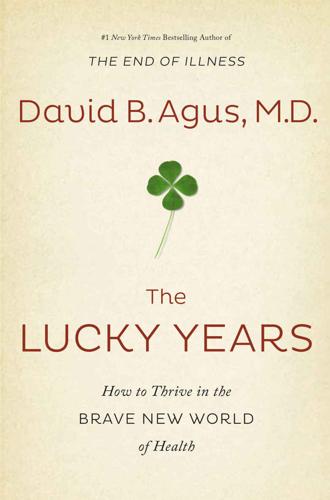
The Lucky Years: How to Thrive in the Brave New World of Health
by
David B. Agus
Published 29 Dec 2015
Genetics account for about a quarter of aging—how fast or slow you age and whether or not you’re still getting carded at age forty. Habits can sometimes trump genes when it comes to the pace of your aging and how long you live. The nature vs. nurture debate has been clarified by the science of epigenetics—the science of controlling genes through environmental forces, such as diet and exercise. But my thoughts on epigenetics aren’t totally aligned with those of other doctors. I don’t, for example, subscribe to the theory that doing X, Y, and Z can change gene A, B, and C to effect outcome D, E, F. This is a complicated area of medicine where the data is still elusive.
…
“nonself” in, 34 body mass index (BMI), 22, 134, 141 Boston, Mass., 84 Boston Cooking-School Cook Book, The, 178 Boston University, 47 Bowerman, Bill, 199 brain: decision making in, 227 sleep’s importance to, 208–10 brain cancer, 30 Brave New World (Huxley), viii, 159, 238 Brazil, 199 BRCA genes, 8, 21, 118 breast cancer, 8, 53, 55, 60, 61, 118, 171, 190, 211 genetic mutation and, 21–22 mastectomies and, 21–22 obesity and, 133 statin use and, 220 Breast Cancer Prevention Trial, 53 Brigham and Women’s Hospital, 84 Broad Institute of MIT and Harvard, 23, 24 Broedel, Max, 73 Brown University, 58 Brunet, Anne, 63 bubonic plague, 95–101 Bulletin of the New York Academy of Medicine, 2 butterfly effect, 236–37 California, 5, 12, 47, 103 tobacco control program in, 237 California, University of: at Berkeley, 25 at Irvine, 3 at San Francisco, 3 Caltech, 102 Cambridge, University of, 125, 134 Cameron, David, 67 Canada, 4, 11 cancer, 41, 108, 128, 175, 215, 237 aggressiveness of, 53–54 alternative treatments for, 18 aspirin and, 216–17 chemotherapy for, 29 childhood, 6, 49, 170–71 context and, 13–14 diet and, 163 early detection and treatment of, 172 fitness and, 190–94 genetic mutations and, 14, 21–22, 50 genotyping of, 117–18 immunotherapy for, 28–33 inflammation in, 175–77 lifestyle and, 153, 168–69 measurement of success in treating of, 32–33 metastasis in, 60–62 molecular therapies for, 23–24, 49–50, 54–55 muscle mass and, 195 p53 gene and, 57–58 Peto’s paradox and, 57 plasma transfusions and, 5 precision medicine and, 115 radiation therapy for, 29 random mutations in, 169–74, 176 as runaway cell copying, 59 self-seeding in, 61 statins and, 218–20 treatment resistance in, 190–91 Watson supercomputer and treatment of, 88–89 see also specific types of cancer cardiovascular disease, 86, 121, 128, 147, 216 airport noise and, 92 risk factors for, 47 Carlson, Mary, 212, 213 Carnegie Mellon University, 214 CAR T cells, 29–30 CBS This Morning, 67 CCR5 gene, 24, 25 Ceauşescu, Nicolae, 212–13 Celebrex (celecoxib), 62 celiac disease, 113, 164 cell division, 5 cells: death of (apoptosis), 59 endoplasmic reticulum in, 40 oxidative damage to, 40 receptors on, 59 Center for the Study of Aging and Human Development (Duke University), 45 Center for Translational Neuromedicine (University of Rochester), 208 Center for Translational Research in Aging and Longevity (University of Arkansas for Medical Sciences), 194 Centers for Disease Control and Prevention (CDC), 47, 103, 133, 205 ceritinib (Zykadia), 53 change, self-assessment of, past vs. future in, 38–40, 39 chaos theory, 236–37 Charaka, 113 Charlottesville Neurology and Sleep Medicine, 204 checkpoint blockage therapy, 29–30 chemotherapy, 29, 60, 190–91 exercise and, 191, 192 Chicago, University of, 17 children, obesity and overweight in, 133 Chittagong University, 232 cholera, 234 cholesterol, 150, 195, 217, 219 dietary vs. blood, 162 online calculator for, 218 chronic disease, 128–29 age-related, 128, 136 diet and, 141–44 management of, 144–46 overweight and, 141 sleep habits and, 147 chronological age, 45, 46, 46, 47, 135–36, 232 circadian rhythm, 123, 138, 139–40, 148, 205 Circulation, 86 climate change, 159 Clinical Practice Research Datalink, 219 clinical trials, 52 double-blind, 53, 155 IRBs and, 52 randomized, 52–53 ClinVar, 9 coarse graining, 229–32, 230 cognitive abilities, 45, 46 cognitive dissonance, 159 Cohen, Jacques, 111–12 colds, 205, 214 Cold War, 94 Coley, William B., 27–29, 28, 33, 48 colitis, 121–22 Collins, Francis, 114, 118 colonoscopies, 93 Colorado, 47 colorectal cancer, 55, 123–24, 190, 217 statin use and, 220 Columbia University, 138 complex carbohydrates, 162 comprehensive metabolic panel (CMP), 151 Congress, US, 114, 237 context: adapting to new data in, 159 aging and, 45 baselines for, 150 changes in, 22 databases as, 83, 91–94 data mining and, 101 diet and, 163, 165 disease and, 13–14, 20 genes and, 14, 20–21, 118 health and, 48, 76–78, 84, 89–90, 91–94, 101, 113, 114–15, 117, 124–25 heart disease and, 22 identifying and optimizing, 135–52 lab tests in, 150–52 medical data and, 78–82 medical education and, 75 Cooper Center Longitudinal Study, 192 coordination, 45 Cornell University, 2 coronary artery disease, 151 cortisol, 123 counterfeit drugs, 10–11 C-reactive protein, 175 CRISPR (Clustered Regularly Interspaced Short Palindromic Repeats), 24–25, 26, 45 Critical Care, 222 Crohn’s disease, 25, 121 CTLA-4, 29–30 cystic fibrosis, 115–16 Cystic Fibrosis Foundation Vertex, 115–16 cytokines, 123 cytoplasm, 111 cytosol, 40 Dana-Farber Cancer Institute, Profile program of, 118 Dannon, 235 Dartmouth College, 157 Darwin, Charles, 112 data, medical: context and, 78–82 individual’s role in collection of, 81 databases, medical, 82–83, 95 as context, 83, 91–94 security of, 88–89 data mining, 84–89, 92 context and, 101 infectious diseases and, 100–101 Davos, Switzerland, 161 Dawkins, Richard, 17 death, leading causes of, 129 death certificates, 96 decision-making, 225, 227–28 dehydration, 234 dementia, 5, 41, 90, 91, 151, 204, 210, 215, 221 see also Alzheimer’s disease depression, 122, 211, 215 exercise and, 186 Dhaka, 232 diabetes, 22, 24, 25, 47, 59, 108, 114, 123, 128, 147, 151, 166, 175, 186, 187, 188, 215, 221, 237 gut bacteria and, 120–21 incidence of, 120–21 diet, 22, 114 chronic disease and, 141–44 as contextual, 163 honesty about, 133–34 low-cholesterol, 162 low-fat, 162 moderation in, 144 research on, see nutritional studies weight and, 141 diphtheria, 161 disease: autoimmune, 85, 125, 175 context and, 13–14, 20 genetic markers for, 22, 113–14, 127 surrogate markers for, 127–28 see also chronic disease; infectious diseases; noncommunicable diseases disorders, inherited, newborn screening and, 12 DNA, see genes, genome DNA mismatch repair, 32, 57 docosahexaenoic acid (DHA), 182 dopamine, 211 Doudna, Jennifer A., 25 dreaming, 203 drug abuse, 22 drugs, see medications Duke Cancer Institute (DCI), 191 Duke University, 30 Center for the Study of Aging and Human Development at, 45 Dulken, Ben, 63 Dunedin Study, 45–47, 46 Dyerberg, Jorn, 182–83 Dyson, Esther, 173 Earls, Felton, 213 East Africa, 44, 107 Eat, Sleep, Poop (Cohen), 137 eating patterns, heart disease and, 138–40 Ebola, 18, 221–22 E. coli, 123 eicosapentaenoic acid (EPA), 182 Einstein, Albert, 2, 223 Elder, William, Jr., 115–16 electrodermal response, 230–31 Elledge, Stephen J., 84 emotions, touch and, 214 emulsifiers, microbiome and, 121–22 “end of history illusion,” 38–40, 39 End of Illness, The (Agus), 18 endoplasmic reticulum, 40 endorphins, 211 energy levels, 149 England, see Great Britain environment, see context epidemics: global spread of, 103 prediction of, 103–4 epigenetics, 20–21 esomeprazole (Nexium), 86 esophageal cancer, 217 estrogen, 64 ethics: genome editing and, 24–25 medical advances and, 10, 24 technology and, 25–26 Europe, 77 European Journal of Immunology, 34 exercise, 21, 114, 140, 185–201 chemotherapy and, 191, 192 honesty about, 133–34 ideal amount of, 196–200 intensity of, 197–98 life expectancy and, 189–90 mortality rates and, 148 Exeter, University of, 157 “Experimental Prolongation of the Life Span” (McCay, Lunsford, and Pope), 2 experimental treatments, quicker access to, 56 Facebook, 27 fasting lipid profile, 150 feebleness, aging and, 43 fertility, aging and, 43 Field, Tiffany, 214 financial industry, information technology and, 89 Finland, 220 fish oil, 182–83 Florida, 103 flu vaccine: misinformation about, 157–58 public distrust of, 160 FODMAPs (fermentable oligo-di-monosaccharides and polyols), 164 Fodor, George, 183 food, safety of, 11 Food and Drug Administration, US (FDA), 2, 18, 51, 55, 56, 86, 111, 112, 127–28, 146, 182, 201 Accelerated Approval provisions of, 128 Foundation Medicine, 50 Framingham Heart Study, 47, 118 Fred Hutchinson Cancer Research Center, 169 free radicals, 208 fruit flies, eating pattern studies with, 138–40 fungi, 119 gait, 45 galvanic skin response (GSR), 230–31 gastroesophageal reflux disease (GERD), 86 Gates, Bill, 2 Genentech, 56 genes, genome, 45, 83–84 aging and, 20, 41 bacterial, 107, 119 context and, 14, 20–21, 118 DNA mismatch repair and, 32 expression of, 20–21, 125, 139 mitochondrial, see mitochondrial DNA sequencing of, 20, 23, 49–52, 112 SNPs in, 113–14 as switches, 41 viruses and, 119–20 genes, genome, editing of, 24–25, 45 ethics of, 102–5 genetically modified foods (GMOs), 18 genetic markers, 22, 113–14, 127 genetic mutations: aging and, 41 cancer and, 14, 21–22, 50 disease risk and, 9, 12 genetic screening, 103, 117, 137 flawed results in, 8–10 of newborns, 11–12 Georgia State University, 121 Gewirtz, Andrew, 121 Gibson, Peter, 164 Gilbert, Daniel, 38, 39, 40 Gillray, James, 161 Gladwell, Malcolm, 225, 227, 228 Gleevec (imatinib), 55 glial cells, 209 glioblastoma, 30 “Global Recommendations on Physical Activity for Health” (WHO), 187 gluten, debate over, 163–65 Goldstein, Irwin, 211 Google, 87, 88, 101 Google Flu Trends, 101 Grameen Bank, 232, 233–34, 235 Grameen Danone, 235 Graunt, John, 100 Great Britain, 96, 97, 100, 110, 155 Black Death in, 95–101, 98, 99, 100 Greatist.com, 200 Greenland, 182 Grove, Andy, 7, 7 growth factors, 59 gun violence, 91 gut: inflammation of, 120, 122 microbiome of, see microbiome H2 blockers, 86 habits and routines, 136, 137–41, 228, 237–38 see also diet; lifestyle choices Harlow, Harry, 213 Harvard Medical School, 84 Harvard School of Public Health, 142–43 Harvard University, 3, 23, 24, 37, 178, 186, 196, 212, 213, 216 hash tables, health care and, 87–88 Hawaii, 47 HDL cholesterol, 150 health: biological age and, 47 context and, 48, 76–78, 84, 89–90, 91–94, 101, 113, 114–15, 117, 124–25 family history of, 136–37 honesty about, 131–34 inflection point in, 8 lifestyle and, see lifestyle choices optimism and, 65–69 personal baselines for, 150 retirement and, 91–92 technology and, 37–70 health and fitness apps, 200 Health and Human Services Department, US, 103 health care: Affordable Care Act and, 69–70 hash tables and, 87–88 individual’s responsibility in, 12–13, 26, 70, 75, 78, 131–32 misinformation about, 14–15, 18, 19, 154, 157–58 politics and, 11–12 portable electronic devices and, 79, 90–91 Health Professionals Follow-up Study, 142–43, 217 health threats, prediction of, 103–4 heart: biological age of, 47–48 health of, 48 heart attacks, 76, 86, 182, 217, 218 heart disease, 59, 128, 150, 166, 175, 183, 186, 187, 215, 217, 221 context and, 22 diet and, 163 eating patterns and, 138–40 lifestyle choices and, 22 muscle mass and, 195 heart rates, 231 heart rate variability (HRV), 230 Heathrow Airport, 92 “hedonic reactions,” 38–40 heel sticks, 11–12 hemoglobin A1C test, 151 hepatitis B, 175 hepatitis C, 175 Herceptin (trastuzumab), 55 high blood pressure, 22, 188, 195 high-sensitivity C-reactive protein (CRP) test, 151 hippocampus, 214 Hippocrates, 71, 113, 122, 216 HIV/AIDS, 18, 24, 25, 59, 84, 127–28, 131, 159 Hoffmann, Felix, 215, 216 Holland, 41 Homeland Security Department, US, 103 homeostasis, 137–38, 140 Homo sapiens, evolution of, 107 honesty: about health, 131–34 nutritional studies and, 162 hormones, 219 hormone therapy, 201 Horton, Richard, 178 Hospital for the Ruptured and Crippled (Hospital for Special Surgery), 28 house calls, 80 Houston Methodist, 86 “how do you feel” question, 231 hugs, 214 Human Genome Project, 113, 120 human growth hormone, 200 Human Molecular Genetics, 65 human papilloma virus (HPV), 161, 175 Hurricane Sandy, 84 Huxley, Aldous, viii, 6, 159, 238 Hydra magnipapillata, 42, 42 hyperglycemia, 122 hypertension, 125, 195, 203 IBM, 88–89 imatinib (Gleevec), 55 immune reactions, 5 immune system, 175, 190, 209, 211 aging and, 44 impact of hugs on, 214 immunotherapy, 28–33 polio virus and, 30, 31 incentives, 235–36 Indiana University Bloomington School of Informatics and Computing’s Center for Complex Networks and Systems Research, 94–95 infant mortality, 87, 97 infants: genetic screening of, 11–12 premature, 87 infections, 175–76 infectious diseases, 129 antibiotic-resistant, 67–69, 68 data mining and, 100–101 inflammation, 34, 151, 174–77, 181, 187, 190, 195, 215–22 inflammatory bowel disease, 121 inflection points, 7–8, 7 influenza, 161 risks from, 157 vaccine for, see flu vaccine information, sorting good from bad, 19–20 information technology, financial industry and, 89 inherited disorders, newborn genetic screening and, 12 insomnia, 122 Institute for Sexual Medicine, 211 insulin, 56, 190 insulin sensitivity, 5, 87, 120, 122, 151, 195 insurance companies, off-label drugs and, 55 Intel, 7 International Agency for Research on Cancer, 170 International Prevention Research Institute, 180 intuition, 224–29 Inuits, 182–83 in vitro fertilization (IVF), three-person, 109–12, 110 Ioannidis, John, 178 IRBs (institutional review boards), 52 iron deficiency, 231 irritable bowel syndrome (IBS), 164 Islam, 234 Italy, 183 ivacaftor (Kalydeco), 115–16 JAMA Internal Medicine, 142, 143, 192, 196 Jenner, Edward, 160, 161 Jobs, Steve, 2, 23–24, 26, 49 Johns Hopkins Hospital, 71, 72, 128 Hurd Hall at, 74 Osler Medical Housestaff Training Program at, 73–75, 74 Johns Hopkins Sidney Kimmel Comprehensive Cancer Center, 32 Johns Hopkins University, 23, 169, 170, 171, 173, 174, 175, 176, 215 Jolie, Angelina, 21 Jones, Owen, 43 Journal of Sexual Medicine, 211 Journal of the American Medical Association (JAMA), 72, 114–15, 173, 201, 220, 221 Journal of the American Osteopathic Association, 154 Journal of the National Cancer Institute, 169 Journal of Urology, 168 journals, medical, misinformation in, 154, 179 J.
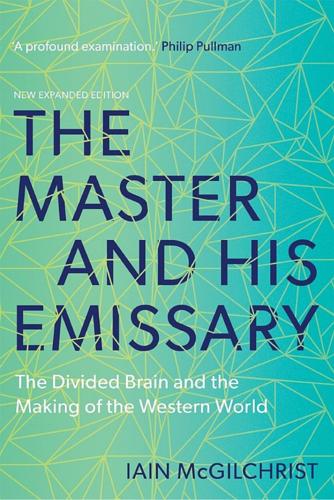
The Master and His Emissary: The Divided Brain and the Making of the Western World
by
Iain McGilchrist
Published 8 Oct 2012
Wouldn’t it reach a stage where everyone had the gene for imitation, and imitation was all that now mattered, not genetic mechanisms that favoured particular behaviours? I don’t think so, because it would always be easier to pick something up if you happened to have the genetic (or epigenetic) mechanisms that made that sort of behaviour more likely. But imitation would always work faster, so that in the end what we chose to imitate would govern which epigenetic mechanisms got selected (e.g. a culture in which we learnt to think and speak of ourselves in more computer-like ways would lead to selection for the ‘geek’ brain), rather than the genes that got selected dictating what we imitated.
…
If, with time, I find I am listening to one radio station only, that does not imply my having a new radio set, just that I am using the options made possible by the existing set in a more limited way. Nor do I suggest that the causes of such cultural shifts can be reduced to neuroscience. There are many causative factors in play when cultures change, including sociological, psychological, environmental, epigenetic, technological, economic and political factors, all of which are interconnected. In a causal nexus one can privilege one over the rest if one wishes to do so, and interpret the changes in one way or another. However, I am not attempting to answer the question of what causes changes: just of what patterns are discernible when such changes occur, and how those patterns relate to the possible takes on the world afforded to us by the brain’s bihemispheric structure.
…
I can’t believe this can be having much of an effect: it’s still too slow, and mostly it’s not true to the facts of human history to suggest that the characteristics we are talking about in this book made much difference to gene reproduction. Despite this, there are thought to be mechanisms whereby brain capacities and cognitive abilities acquired during a single human lifetime could be transmitted to the next generation. These are known as epigenetic mechanisms, because they do not depend on alterations in the actual sequence of nucleotides in the DNA within the genes, but on factors which influence what is expressed by that same DNA. Consider this. On the face of it, it’s odd that the gene sequence in every cell in the body is the same – a kidney cell, though structurally and functionally different from a muscle cell, is exactly the same in respect of its DNA – and yet each kind of cell gives rise only to its own kind of tissue.

Tightrope: Americans Reaching for Hope
by
Nicholas D. Kristof
and
Sheryl Wudunn
Published 14 Jan 2020
We’ve raised high-school graduation rates by 5 percentage points: “Common Core of Data: America’s Public Schools,” National Center for Education Statistics; graduation rates for the 2016–17 school year reached 84.6 percent, up from 79 percent in 2011. And see Moriah Balingit, “U.S. High School Graduation Rates Rise to New High,” The Washington Post, December 4, 2017. through genetics or epigenetics: In high school, you probably learned that Lamarck’s theory of evolution—that animals change during their lifetime and pass those changes to their offspring—was wrong. For example, ancient giraffes did not stretch their necks to reach tall branches and then have longer-necked babies. But epigenetics is a new field of science that suggests that environmental factors can affect the expression of genes so that acquired traits may sometimes be transmitted to the next generations.
…
It didn’t work, and this son was taken away as well. “I lost everything,” she told us. “It happened quickly.” How did Amber let it happen? Surely, part of the answer is that she made awful choices, but research also suggests that addictive behavior is heritable, either through genetics or epigenetics, so that as the daughter and granddaughter of people with substance abuse issues, Amber was exceptionally vulnerable. Children like Amber and Andrea in chaotic households grow up with dysfunction, abuse, divorce, mental illness, neglect, economic hardship or parenting by people with addictions—all classic ACEs.
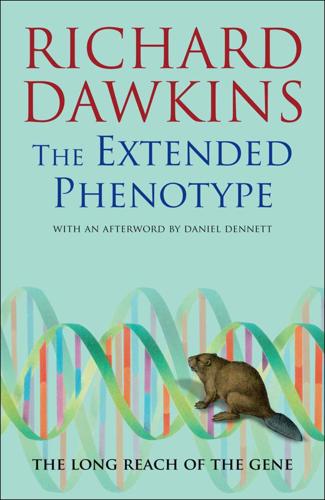
The Extended Phenotype: The Long Reach of the Gene
by
Richard Dawkins
Published 1 Jan 1982
It is suggestions of this kind that constitute a violation of the central dogma of embryology. The central dogma of embryology does not follow inevitably from common sense. Rather, it is a logical implication of rejecting the preformationist view of development. I suggest, indeed, that there is a close link between the epigenetic view of development and the Darwinian view of adaptation, and between preformationism and the Lamarckian view of adaptation. You may believe in inheritance of Lamarckian (i.e. ‘instructive’) adaptations, but only if you are prepared to embrace a preformationistic view of embryology. If development were preformationistic, if DNA really were a ‘blueprint for a body’, really were a codified homunculus, reverse development—looking-glass embryology—would be conceivable.
…
For a man who is artificially stuffed with food to pass on his acquired fatness to his children genetically, some mechanism would have to exist that sensed his fatness, then located a ‘fatness gene’ and caused it to mutate. But how could such a fatness gene be located? There is nothing intrinsic in the nature of the gene that makes it recognizable as a fatness gene. It has its obese effect only as a result of the long and complex unfolding sequence that is epigenetic development. The only way, in principle, to recognize a ‘fatness gene’ for what it is, is to allow it to exert its effects on the normal processes of development, and this means development in the normal, forward direction. This is why bodily adaptations can come about by selection. Genes are allowed to exert their normal effects on development.
…
Selective theories of adaptation, but not instructive theories, can cope with the fact that the relationship between a gene and its phenotypic effect is not an intrinsic property of the gene, but a property of the forward developmental consequences of the gene when interacting with the consequences of many other genes and many external factors. Complex adaptation to an environment may arise in individual organisms through instruction from that environment. In many cases this certainly happens. But, given an assumption of epigenetic, not preformationistic embryology, to expect such complex adaptations to be translated into the medium of the genetic code, by some means other than the selection of undirected variation, is a gross violation of all that I hold rational. There are other examples of what looks like true Lamarckian ‘instruction’ from the environment being inherited.

The Deep Learning Revolution (The MIT Press)
by
Terrence J. Sejnowski
Published 27 Sep 2018
Our biology both produces human culture and, in turn, is molded by it.26 A new chapter in this story was opened by a recent discovery: when there is a rapid increase in the formation of synapses between neurons during early development, the DNA inside neurons is modified epigenetically after birth by a form of methylation that regulates gene expression and is unique to the brain.27 This epigenetic modification could be the link between genes and experience that Steve Quartz and I had envisioned. By the 1990s, the neural network revolution was well under way. Cognitive neuroscience was expanding, and computers were getting faster—but not fast enough.
…
See also Massively open online courses problems in, 185 Educational technology (edtech), 23 Ekman, Paul, 179–182, 180f, 308n17, 308n19 Electroencephalography (EEG), 86, 87f Elman, Jeffrey L., 107, 298n24, 303n17 Emotient, 182 Emotions and intelligence, 258 Energy minima, 95b, 96, 96f. See also Attractor states; Global energy minimum Engelbart, Douglas C., 289n40 Enzymes, 265 Epigenetics, 107 Ermentrout, G. Bard, 297n6 Error backpropagation. See Backpropagation of errors Escherichia coli (E. coli), 266 scanning electron micrograph of, 266f Everest, George, 50f Evolution, 267. See also Orgel’s second rule evolutionary origins of human beings, 264–265 Exascale computing, 206, 229 Expert systems, 30–31 Exponential growth, 143 327 Fabre-Thorpe, Michèle, 64f Facial Action Coding System (FACS), 181 Facial expression analysis, 181–182, 181f Facial expressions of emotion, universal, 180, 180f recognizing, 181f as window into your soul, 178–182 Facial recognition, 124, 227, 238 Fast ForWord, 190 Feher, Olga, 157f Feldman, Jerome A., 91–93, 316n3 Felleman, Daniel J., 76f Fendi, Silvia Venturini, 137 Fergus, Rob, 303n12 Field, David, 296n7 Figure–ground problem, 97, 99 ambiguous, 97f Boltzmann machine and, 97, 100f Film, artificial intelligence (AI) depicted in, 174 Finches consulting with each other, 29f Fisher, Carrie, 228f Fitness (biology), 267 Flash-lag effect, 239–240, 239f Flynn, James R., 288n38 Flynn effect, 21 Fodor, Jerry A., 75, 77, 317n14 Fried, Itzhak, 235, 315n6 Friederici, A.

Payback: Debt and the Shadow Side of Wealth
by
Margaret Atwood
Published 15 Mar 2007
In fact, he behaves like Scrooge, after Scrooge has been redeemed — the Scrooge who buys huge turkeys, giggles a lot, plays practical jokes on his poor clerk, Bob Cratchit, goes to his nephew’s Christmas party and joins in the parlour games, and saves Bob’s crippled offspring, Tiny Tim, leading us to wonder if Scrooge didn’t inherit a latent gene for bonvivantery from his distant ancestor Doctor Faustus — a gene that was just waiting to be epigenetically switched on. (Scrooge doesn’t get sex with a pretend Helen of Troy, however. He’s too wrinkly for that. Having thrown over his fiancée because she didn’t have enough money and then having devoted himself to no sins but those of the counting house, he’s left that part of life too long. All he gets is a moment of ogling the cute young maid at his nephew’s house —“Nice girl!
…
The United Church is the United Church of Canada, formed by a union between the Methodists and some of the Presbyterians. I came across Frans de Waal’s comment on the nature of culture in Harper’s magazine, June 2008, in an article by Frank Bures called “A Mind Dismembered: In Search of the Magical Penis Thieves.” I thank my brother, neurophysiologist Dr. Harold L. Atwood, for sending me various articles on epigenetics. There are many variants to the “Punch-buggy, no punch-backs” game. In one, the colour of the Beetle must be specified. I leave it to the experts to dispute the many rules. For primate trading, see De Waal, Frans, and S. F. Brosnan. “Monkeys Reject Unequal Pay.” Nature (2003): 425. Fisher, Daniel.
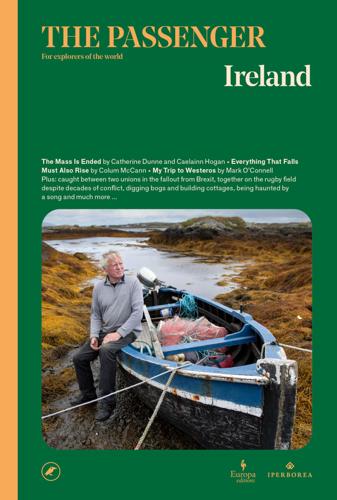
The Passenger
by
The Passenger
Published 27 Dec 2021
Researchers, including Professor Rachel Yehuda at Mount Sinai Hospital in New York, have been exploring how the effects of trauma and stress could be passed down to offspring biologically. Epigenetic changes – alteration of genes in terms of their activity rather than their DNA sequence – can be inherited, and it’s thought these may explain how intergenerational transmission of trauma occurs. In August 2015 Yehuda and colleagues published a study of Holocaust survivors in the journal Biological Psychiatry, ‘Holocaust Exposure Induced Intergenerational Effects on FKBP5 Methylation’, which revealed, for the first time in humans, that parental trauma experienced before conception can cause epigenetic changes in both parent and child. These findings are among the latest in an increasing body of research showing that intergenerational transmission of trauma is not just a sociological or psychological problem but also a biological one.

The Future Is Faster Than You Think: How Converging Technologies Are Transforming Business, Industries, and Our Lives
by
Peter H. Diamandis
and
Steven Kotler
Published 28 Jan 2020
Chromosomes are capped by telomeres, or short snippets of DNA repeated thousands of times. These repetitions act as barriers—like bumpers on a car—designed to protect the core of the chromosome. But as DNA replicates, telomeres get shorter. At a critical shortness threshold, the cell stops dividing, and we become much more susceptible to disease. Epigenetic Alterations: Nature impacts nurture. Over the course of a lifetime, factors in our environment can change how our genes express, sometimes for the worse. Exposure to carcinogens in the environment can silence the gene that suppresses tumors, for example. These cells start to grow uncontrollably and cancer is the result.
…
Eric, 63, 231 drones: disaster relief and, 48 increasing demand for, 10 package delivery and, 47–48, 107 reforestation and, 224, 227 drought, 242 drug development: AI and, 165–67 quantum computing and, 30, 167 Duplex (AI assistant), 35 DxtER, 157 dynamic risk, 187–89 Eagleman, David, 134 Easter Island (Rapa Nui), 174 Echo, 35, 101, 132 e-commerce revolution, 98–100 economy: new business models for, 83–87, 111–13 paradigm shifts in, 97–98 technological unemployment and, 227–30 ecosystems, ecosystem services, collapse of, 223–24 Edison, Thomas, 61 educational system: computer-aided self-teaching and, 144–47 customization of, 150 future of, 143–50 impact of exponential technologies on, 23 multisensory learning in, 148 outmoded models for, 143–44 standardized testing in, 144 teacher shortages in, 143 VR and, 51–52, 147–49, 248 e-governance, 234–35 Ekocenters, 214 electric cars, 10, 16–17, 221–23 electroencephalogram (EEG) sensors, 141 Elevian, 90, 178 emotional intelligence: AI and, 135–38 computers and, 103 robots and, 107 empathy, VR and, 148 endorphins, 247 energy: demonetization and, 78 new sources of, and economic paradigm shifts, 98 renewable, 78, 214, 215–18; see also specific technologies storage of, 218–20 Engines of Creation (Drexler), 63–64 Enlightenment, 82 entertainment: affective computing and, 136–38 content in, see content, entertainment future of, 125–42 streaming and, 126–27 entrepreneurship, immigrants and, 239–40 environment, as global and exponential, 12, 22–24 environmental threats, 211, 240 biodiversity crisis and, 48, 207, 212, 223–27 convergence and, 226–27 deforestation and, 48, 206, 207, 223, 224, 226 extreme weather and, 212, 223, 226 pollution and, 212, 226 water scarcity and, 212–15 see also climate change EOS token, 76 epigenetic alterations, 170 Essex, University of, 203 Estonia, e-governance in, 234–35 Ethereum, 187 Etherisc, 187 Ethiopia, Negroponte’s self-teaching experiment in, 144–46 evolution, trajectory of, 258–59 eVTOLs (electric vertical take-off and landing vehicles), 6, 9–10, 11 see also flying cars Exceptional People (Goldin and Cameron), 237–38 existential risks, 230–36, 240 Exo Imaging, 157 experience economy, 86, 111–13 exponential technologies, xi, 31–33, 39, 200, 215 abundance and, 261–63 brains as poorly adapted to, 12 convergence of, see convergence existential risks and, 230–36 healthcare and, 155, 156–67 Moore’s Law and, 7–8 Netflix and, 126 eXp Realty, 196–97 extreme weather, 212, 223, 226, 241–42 FAA, 6 Facebook, 51, 81, 256 advertising revenue of, 117–18 facial recognition, 120 fakes, fakery, digital, 121–23, 131–32 Federal Judicial Center, 49 Feynman, Richard, 63 Filecoin, 76 Final Frontier Medical Devices, 157 finance industry, 181–82 AI and, 194–96 blockchain and, 193, 194 convergence and, 189–96 Fintech, 194 Fitbit, 41–42 5G networks, 39–40, 119, 149 floating cities, 199–200 Floating Island Project, 200 FLOPS (floating operations per second), 28 Florida, Richard, 244 flow, flow states, 81, 257–58 VR and, 247–48 flow batteries, 219–20 Flow Research Collective, xii, 265 flying cars, 3–7, 26 convergence and, 9–12 healthcare and, 154 prime real estate redefined by, 199 ridesharing and, 4, 19 fMRI studies, 21–22 food chain, 202–3 food industry, 181, 201–8 Forbes, 35, 129 Ford, Henry, 12–13 Ford Motor Company, 221 foreign currency exchange, 194 Forest (quantum developer’s kit), 30, 32 Form Energy, 220 fossil fuels, 215–16 Foster, Richard, 23 Fox News, 247 free/data economy, 84–85 Freestyle Foundation Beverage Dispenser, 214 Friis, Janus, 106 Fukushima Daiichi nuclear plant disaster, 45 future, thinking about, 21–22 Gagarin, Yuri, 73 Garcetti, Eric, 20 Gates, Bill, 203, 214, 220 GDF11 (growth differentiation factor 11), 90, 178–79 Gelsinger, Jesse, 65–66 General Motors (GM), 14, 226 generative adversarial networks (GANs), 165–66, 167 gene sequencing, 78 gene therapy, 65–66, 67, 68 genetic diseases, 65–68 genetics, longevity and, 172–73 genius, nurturing of, 79–82 genome, 66–67 editing of, 67–68, 160 epigenetic alterations to, 170 instability in, 170 Genome Project-Write, 159 genomics, personalized, 158–60 Georgia Institute of Technology, 130 Germany, electric cars in, 221 Germany, Nazi, 238–39 germline engineering, 67–68 Giegel, Josh, 17–18 Gigafactory, 219, 222 GitHub, 146 Glaxo, 152 Global Learning XPRIZE, 146 Global Risks Report (World Economic Forum), 212 global warming, see climate change Gmail, Smart Compose feature of, 35 GM Cruise, 14 Go, 36 Goddard, Robert, 17 Goldin, Ian, 237–38 Goldman Sachs, 230 Good Money, 190–91 Google, 8, 36, 51, 71, 89, 100, 128, 146, 156 advertising revenue of, 117–18 Talk to Books program of, 35 see also Alphabet Google Duplex, 101–2 Google Home, 35 Google Lens, 120 Google Now, 100 governance, existential risks and, 234–36 GPS, 43 graphics processing units (GPUs), 34 Great Recession of 2008, 196, 228 greenhouse gases, 206, 207, 215–16, 221, 226 Gross, Neil, 42–43 group flow, 257–58 Groupon, 4 Guardian, 242, 246 Hagler, Brett, 55–56 Haiti, 58 2010 earthquake in, 55 Hanyecz, Laszlo, 57 haptic sensation, 25, 26, 134–35 Hardy, G.
…
Eric, 63, 231 drones: disaster relief and, 48 increasing demand for, 10 package delivery and, 47–48, 107 reforestation and, 224, 227 drought, 242 drug development: AI and, 165–67 quantum computing and, 30, 167 Duplex (AI assistant), 35 DxtER, 157 dynamic risk, 187–89 Eagleman, David, 134 Easter Island (Rapa Nui), 174 Echo, 35, 101, 132 e-commerce revolution, 98–100 economy: new business models for, 83–87, 111–13 paradigm shifts in, 97–98 technological unemployment and, 227–30 ecosystems, ecosystem services, collapse of, 223–24 Edison, Thomas, 61 educational system: computer-aided self-teaching and, 144–47 customization of, 150 future of, 143–50 impact of exponential technologies on, 23 multisensory learning in, 148 outmoded models for, 143–44 standardized testing in, 144 teacher shortages in, 143 VR and, 51–52, 147–49, 248 e-governance, 234–35 Ekocenters, 214 electric cars, 10, 16–17, 221–23 electroencephalogram (EEG) sensors, 141 Elevian, 90, 178 emotional intelligence: AI and, 135–38 computers and, 103 robots and, 107 empathy, VR and, 148 endorphins, 247 energy: demonetization and, 78 new sources of, and economic paradigm shifts, 98 renewable, 78, 214, 215–18; see also specific technologies storage of, 218–20 Engines of Creation (Drexler), 63–64 Enlightenment, 82 entertainment: affective computing and, 136–38 content in, see content, entertainment future of, 125–42 streaming and, 126–27 entrepreneurship, immigrants and, 239–40 environment, as global and exponential, 12, 22–24 environmental threats, 211, 240 biodiversity crisis and, 48, 207, 212, 223–27 convergence and, 226–27 deforestation and, 48, 206, 207, 223, 224, 226 extreme weather and, 212, 223, 226 pollution and, 212, 226 water scarcity and, 212–15 see also climate change EOS token, 76 epigenetic alterations, 170 Essex, University of, 203 Estonia, e-governance in, 234–35 Ethereum, 187 Etherisc, 187 Ethiopia, Negroponte’s self-teaching experiment in, 144–46 evolution, trajectory of, 258–59 eVTOLs (electric vertical take-off and landing vehicles), 6, 9–10, 11 see also flying cars Exceptional People (Goldin and Cameron), 237–38 existential risks, 230–36, 240 Exo Imaging, 157 experience economy, 86, 111–13 exponential technologies, xi, 31–33, 39, 200, 215 abundance and, 261–63 brains as poorly adapted to, 12 convergence of, see convergence existential risks and, 230–36 healthcare and, 155, 156–67 Moore’s Law and, 7–8 Netflix and, 126 eXp Realty, 196–97 extreme weather, 212, 223, 226, 241–42 FAA, 6 Facebook, 51, 81, 256 advertising revenue of, 117–18 facial recognition, 120 fakes, fakery, digital, 121–23, 131–32 Federal Judicial Center, 49 Feynman, Richard, 63 Filecoin, 76 Final Frontier Medical Devices, 157 finance industry, 181–82 AI and, 194–96 blockchain and, 193, 194 convergence and, 189–96 Fintech, 194 Fitbit, 41–42 5G networks, 39–40, 119, 149 floating cities, 199–200 Floating Island Project, 200 FLOPS (floating operations per second), 28 Florida, Richard, 244 flow, flow states, 81, 257–58 VR and, 247–48 flow batteries, 219–20 Flow Research Collective, xii, 265 flying cars, 3–7, 26 convergence and, 9–12 healthcare and, 154 prime real estate redefined by, 199 ridesharing and, 4, 19 fMRI studies, 21–22 food chain, 202–3 food industry, 181, 201–8 Forbes, 35, 129 Ford, Henry, 12–13 Ford Motor Company, 221 foreign currency exchange, 194 Forest (quantum developer’s kit), 30, 32 Form Energy, 220 fossil fuels, 215–16 Foster, Richard, 23 Fox News, 247 free/data economy, 84–85 Freestyle Foundation Beverage Dispenser, 214 Friis, Janus, 106 Fukushima Daiichi nuclear plant disaster, 45 future, thinking about, 21–22 Gagarin, Yuri, 73 Garcetti, Eric, 20 Gates, Bill, 203, 214, 220 GDF11 (growth differentiation factor 11), 90, 178–79 Gelsinger, Jesse, 65–66 General Motors (GM), 14, 226 generative adversarial networks (GANs), 165–66, 167 gene sequencing, 78 gene therapy, 65–66, 67, 68 genetic diseases, 65–68 genetics, longevity and, 172–73 genius, nurturing of, 79–82 genome, 66–67 editing of, 67–68, 160 epigenetic alterations to, 170 instability in, 170 Genome Project-Write, 159 genomics, personalized, 158–60 Georgia Institute of Technology, 130 Germany, electric cars in, 221 Germany, Nazi, 238–39 germline engineering, 67–68 Giegel, Josh, 17–18 Gigafactory, 219, 222 GitHub, 146 Glaxo, 152 Global Learning XPRIZE, 146 Global Risks Report (World Economic Forum), 212 global warming, see climate change Gmail, Smart Compose feature of, 35 GM Cruise, 14 Go, 36 Goddard, Robert, 17 Goldin, Ian, 237–38 Goldman Sachs, 230 Good Money, 190–91 Google, 8, 36, 51, 71, 89, 100, 128, 146, 156 advertising revenue of, 117–18 Talk to Books program of, 35 see also Alphabet Google Duplex, 101–2 Google Home, 35 Google Lens, 120 Google Now, 100 governance, existential risks and, 234–36 GPS, 43 graphics processing units (GPUs), 34 Great Recession of 2008, 196, 228 greenhouse gases, 206, 207, 215–16, 221, 226 Gross, Neil, 42–43 group flow, 257–58 Groupon, 4 Guardian, 242, 246 Hagler, Brett, 55–56 Haiti, 58 2010 earthquake in, 55 Hanyecz, Laszlo, 57 haptic sensation, 25, 26, 134–35 Hardy, G.

Getting Past Your Past: Take Control of Your Life With Self-Help Techniques From EMDR Therapy
by
Francine Shapiro
Published 26 Mar 2013
J. (2006). Early father involvement moderates biobehavioral susceptibility to mental health problems in middle childhood. Journal of the American Academy of Child & Adolescent Psychiatry, 45, 1510-20. Champagne, F. A. (2010). Early adversity and developmental outcomes: Interaction between genetics, epigenetics, and social experiences across the life span. Perspectives on Psychological Science, 5, 564-74. Felitti, V. J., Anda, R. F., Nordenberg, D., Williamson, D. F., Spitz, A. M., Edwards, V., et al. (1998). Relationship of childhood abuse and household dysfunction to many of the leading causes of death in adults: The adverse childhood experiences (ACE) study.
…
Caspi, A., Sugden, K., Moffitt, T. E., Taylor, A., Craig, I. W., Harrington, H., et al. (2003). Influence of life stress on depression: Moderation by a polymorphism in the 5-htt gene. Science, 18, 386-89. Champagne, F. A. (2010). Early adversity and developmental outcomes: Interaction between genetics, epigenetics, and social experiences across the life span. Perspectives on Psychological Science, 5, 564-74. Ellis, B. J., Essex, M. J., & Boyce, W. T. (2005). Biological sensitivity to context: I. An evolutionary-developmental theory of the origins and functions of stress reactivity, Development and Psychopathology, 17, 271-301.
…
Chapters 10 and 11 Effects of Stress Alfonso, J., Frasch, A. C., & Flugge, G. (2005). Chronic stress, depression and antidepressants: Effects on gene transcription in the hippocampus. Rev Neurosci, 16, 4356. Champagne, F. A. (2010). Early adversity and developmental outcomes: Interaction between genetics, epigenetics, and social experiences across the life span. Perspectives on Psychological Science, 5, 564-74. Epel, E. S., Blackburn, E. H., Lin, J., Dhabhar, F.S., et al. (2004). Accelerated telomere shortening in response to life stress. PNAS, 101, 17312-15. McEwen, B. S. (2007). Physiology and neurobiology of stress and adaptation: Central role of the brain.
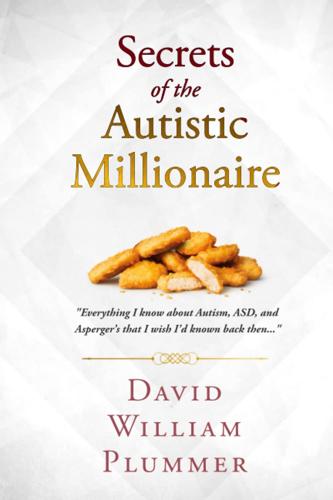
Secrets of the Autistic Millionaire: Everything I Know Now About Autism and Asperger's That I Wish I'd Known Then
by
David William Plummer
Published 14 Sep 2021
I had been vaccinated as a child but the link that had once been fraudulently asserted between vaccines and autism had long ago been so fully discredited that I gave it no serious consideration. That really left only one: genetics. While autism does indeed seem to have its roots in our genes, the heritability of autism is complex, and no one knows specifically which genes contribute to the condition. It’s also possible that environmental factors work in concert with genetics and epigenetics to form a cause. Some have speculated that autism is perhaps an over-representation of “technical” genes; these genes are likely the very same ones that led to the discovery of stone tools, fire, and other early technologies. As the author Temple Grandin has written: without those genes the human race might still be socializing around campfires!
…
More likely still is the possibility that people didn’t distinguish amongst forms of neurodiversity or impairment at all, and in generations past, the kinder folks merely said that the girl or boy we now know to have autism was simply “a little different.” Absent more conclusive data, however, it is also possible that the incidence of autism is markedly on the rise, and that we must look for environmental or epigenetic triggers. At this point we simply do not know. For our purposes here, however, perhaps the most important thing is that those who do have autism are properly identified as early as possible. For those on the neurodiversity side of the debate, early diagnosis provides timely accommodation of any needs that may arise; for those that believe a treatment is appropriate, any available interventions that help mitigate those needs can be prescribed.

The Singularity Is Near: When Humans Transcend Biology
by
Ray Kurzweil
Published 14 Jul 2005
The entire genome consists of eight hundred million bytes, but most of it is redundant, leaving only about thirty to one hundred million bytes (less than 109 bits) of unique information (after compression), which is smaller than the program for Microsoft Word.8 To be fair, we should also take into account "epigenetic" data, which is information stored in proteins that control gene expression (that is, that determine which genes are allowed to create proteins in each cell), as well as the entire protein-replication machinery, such as the ribosomes and a host of enzymes. However, such additional information does not significantly change the order of magnitude of this calculation.9 Slightly more than half of the genetic and epigenetic information characterizes the initial state of the human brain. Of course, the complexity of our brains greatly increases as we interact with the world (by a factor of about one billion over the genome).10 But highly repetitive patterns are found in each specific brain region, so it is not necessary to capture each particular detail to successfully reverse engineer the relevant algorithms, which combine digital and analog methods (for example, the firing of a neuron can be considered a digital event whereas neurotransmitter levels in the synapse can be considered analog values).
…
(That is, evolution uses the results of one epoch to create the next.) For example, in the third epoch, DNA-guided evolution produced organisms that could detect information with their own sensory organs and process and store that information in their own brains and nervous systems. These were made possible by second-epoch mechanisms (DNA and epigenetic information of proteins and RNA fragments that control gene expression), which (indirectly) enabled and defined third-epoch information-processing mechanisms (the brains and nervous systems of organisms). The third epoch started with the ability of early animals to recognize patterns, which still accounts for the vast majority of the activity in our brains.10 Ultimately, our own species evolved the ability to create abstract mental models of the world we experience and to contemplate the rational implications of these models.
…
I estimate the compressed genome at about thirty to one hundred million bytes (see note 57 for chapter 2); this is smaller than the object code for Microsoft Word and much smaller than the source code. See Word 2003 system requirements, October 20, 2003, http://www.microsoft.com/office/word/prodinfo/sysreq.mspx. 9. Wikipedia, http://en.wikipedia.org/wiki/Epigenetics. 10. See note 57 in chapter 2 for an analysis of the information content in the genome, which I estimate to be 30 to 100 million bytes, therefore less than 109 bits. See the section "Human Memory Capacity" in chapter 3 (p. 126) for my analysis of the information in a human brain, estimated at 1018 bits. 11.
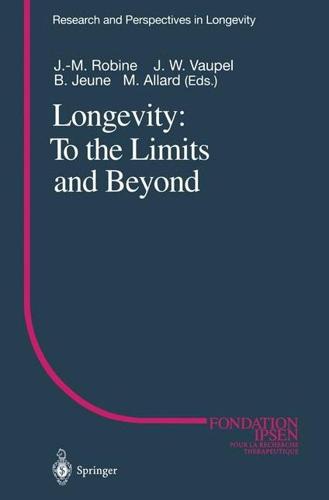
Longevity: To the Limits and Beyond (Research and Perspectives in Longevity)
by
Jean-Marie Robine
,
James W. Vaupel
,
Bernard Jeune
and
Michel Allard
Published 2 Jan 1997
In the 20 years since the original study was completed, the life spans of each of these strains has increased by about 25 %, which is most likely due to improvements of husbandry rather than genetic drift. controlled as laboratory conditions allow. This essay explores how these variations may arise epigenetically. I propose the hypothesis that individual variations in cell numbers differentiate individuals by the numbers of reserve cells which set critical thresholds for viability during aging. 1 Among the biological explanations for these variations in the life spans of individual mammals and other vertebrates is an outcome of cell fate determination during embryonic development, through which the numbers of cells normally show wide variations between individuals.
…
From data (Fig. 2) that mice cease cycling during aging when their oocyte and primary follicular reserve is < 150, it can be calculated from the regression equation that a 90 % reduction of oocyte loss by surgical resection should cause the acceleration of reproductive senescence by about seven months. 3 Here another caveat must be considered, a different possible epigenetic environmental phenomenon from the fetal neighbor effect. Rodents and probably other polytocous species show intra-uterine interactions between adjacent fetuses of different genders that, through influences on fetal sex steroid levels, have important outcomes on reproductive adult performance, including aging (vom Saal et al. 1994, pp 1272-4).
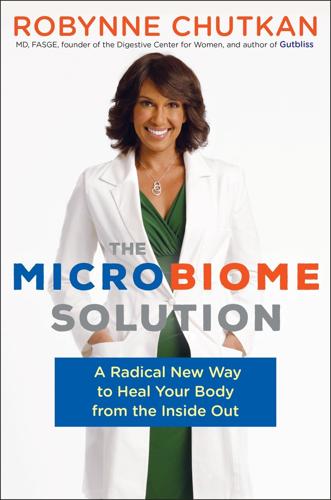
The Microbiome Solution
by
Robynne Chutkan M.D.
Published 5 Aug 2015
Many diseases that run in families that we thought were primarily genetic, such as heart disease and some forms of cancer, turn out to be hugely influenced by gut bacteria. It’s the complex and poorly understood interaction among your genes, your environment, and your immune system that ultimately determines whether you end up sick or not. Epigenetics is the study of how our environment affects heritable traits without changing the actual DNA material in our genes. It’s the classic nature-versus-nurture question: how much of who we are is a result of the genes we inherit, versus the environment we live in? WHAT WE’RE FINDING is that the environment living inside us—our microbiome—has one of the biggest impacts on our genes, turning them on and off and determining which ones are ultimately expressed as disease.
…
See also Live Dirty, Eat Clean Diet causes of dysbiosis, 54–56, 64–65, 136–37 to heal inflammation, 30–34, 120–21 impact on gut ecosystem, 11 influence of gut bacteria on food choices, 61 leaky gut and, 71–73 Specific Carbohydrate Diet, 122 versus supplements, 176–78 Western diet, 24 Dill Pickles, Garlic, 266–68 dips and spreads Artichoke & Spinach Dip, 223–24 Cashew “Cheese” Spread, 224 Guac-Kale-Mole, 222–23 Raspberry Chia Seed Jam, 259 DIY Nut Milk, 213 Dominguez-Bello, Maria Gloria, 101 dressings Basic Lemon Vinaigrette, 225–26 Creamy Ginger Tahini Dressing, 224–25 drinks Apple Pie Green Smoothie, 209–10 Blueberry Bliss Smoothie, 211 Coconut Milk Kefir, 263 Creamy Sweet Potato Smoothie, 210 Creamy Turmeric Latte, 212–13 DIY Nut Milk, 213 Everything but the Kitchen Sink Smoothie, 211–12 Green Colada, 213–14 Green Lemonade, 214–15 Lemonchia Coconut Water, 215 Live Dirty, Eat Clean Signature Smoothie, 208–209 Mint Chip Dessert Smoothie, 262–63 Dry Skin Facial Scrub, 147 dysbiosis agricultural practices causing, 109–11 definition, 49 diagnostic checklist, 90–91 dietary causes, 54–56, 64–65, 136–37 from hand sanitizers and chlorinated drinking water, 107–109 lifestyle causes and risk factors, 49–50, 56–58, 90–91 medical practices causing, 99–107 medications causing, 37, 48–49, 50–54, 69–71 dysbiosis, conditions associated with bloating, 62 celiac disease and gluten sensitivity, 75–79 chronic fatigue syndrome, 81 depression, 82 food allergies and sensitivities, 80–81 food cravings, 60–61 inflammatory bowel disease, 67–68 irritable bowel syndrome, 65–67 leaky gut, 71–73 new and existing maladies, 59–60, 91 parasites, 73–75 skin disorders, 82–87 small intestinal bacterial overgrowth, 68–70 vaginosis, 79–80 weight gain and obesity, 62, 95 yeast overgrowth, 63–64 Easy Gazpacho with Avocado, 252 eczema, 86–87 egg dishes Baked Avocado with Egg, 201–2 Vegetable Frittata, 200–201 Energy Balls, No-Bake, 255–56 epigenetics, 27 Essential Oil Scalp Treatment, 149 Everything but the Kitchen Sink Smoothie, 211–12 farm practices, 39, 109–11 Fasano, Alessio, 76 fecal microbiota transplant (FMT) administration modes, 186–87 at-home procedure, 191–94 donor selection, 187–89 frequency of treatment, 184–85 historical precedence, 180 indications for, 180–83 infection risk, 189–90 response time, 184 sources of specimens, 185–86 fennel bulb Homemade Vegetable Broth, 253–54 Roasted Fennel, 244 fermented foods Coconut Milk Kefir, 263 Garlic Dill Pickles, 266–68 German Apples and Kraut, 270–71 Gingered Carrots, 268 Kimchi, 264–66 in Live Dirty, Eat Clean Plan, 127 Sauerkraut, 269–70 synbiotics in, 168 fiber, dietary in complex carbohydrates, 125 insufficiency of, 55–56, 128 inulin and psyllium husk supplements, 177 in Live Dirty, Eat Clean Plan, 124 in plant foods, 129–30 Flank Steak, 239 flaxseeds, flax meal Banana Blueberry Flaxseed Muffins, 207–208 Chickpea Herbed Crackers, 257–58 flax “egg,” 257 Grain-Free & Vegan Veggie Burgers, 231–33 FMT.
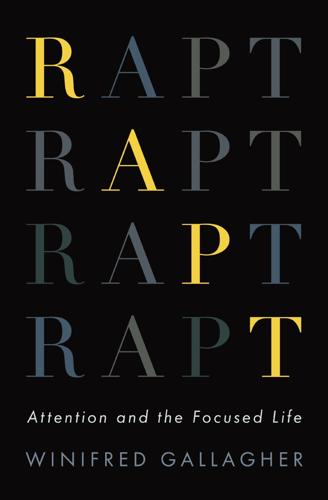
Rapt: Attention and the Focused Life
by
Winifred Gallagher
Published 9 Mar 2009
The discovery that a focusing regimen can have profound impacts not only on a person’s ability to concentrate but also on his or her basic emotional disposition is particularly significant, because temperament has traditionally been regarded as highly stable and resistant to change. In Davidson’s view, however, the genes you inherit “set very coarse boundaries” for your identity and behavior, but they don’t determine it. What really counts, he says, is your epigenetics, or the way in which your genes are expressed in the real world; this function can be strongly modified by your experience, which in turn greatly depends on how you direct your attention. As Davidson says, “That’s the process that ultimately determines who you are and what you do.” Not only how you focus, but also what you focus on can have important neurophysiological and behavioral consequences.
…
cooking cooperation coping strategies Così Fan Tutte (Mozart) courage CrazyBusy (Hallowell) creativity arts and brain and damaging myths and education and in Langer’s study of behavior mindfulness and personal renaissance and work and Csíkszentmihályi, Mihály ESM studies and flow research of leisure studied by culture attentional style and family relationships and motivation and Cushing, Robert Dalai Lama dance danger Darwin, Charles Davidson, Richard daydreaming death Death of a Salesman (Miller) decision-making behavioral economics and bounded rationality and about consumer goods education and effects of adaptation and experiencing vs. remembering self and focusing illusion and Kahneman’s views on leisure and risk and for short vs. long term Delta Wedding (Welty) demand-withdraw pattern depression cognitive therapy for drugs and Desimone, Robert Dickinson, Emily dictation, taking dieting, motivation for Dijksterhuis, Ap disgust distraction attentional problems and divorce dopamine dreams drinking drinking water, purity of drug abuse and addiction drugs ADHD and LSD du Barry, Madame Duckworth, Angela Dugu Choegyal Rinpoche Duncan, John Dutch study Dylan, Bob EA Ranch eating dinnertime and forgetting about motivation and eating disorders economic turmoil and goals economics, behavioral education ADHD and attention drugs and creativity and daydreaming and decision-making and multitasking and testing and see also colleges EEG (electroencephalography) tests efficiency multitasking and Einstein, Albert Ekman, Paul e-mail Emerson, Ralph Waldo emotions and feelings “cobra” high-value motivation and negative Norman’s conceptual model of brain and overeating and positive relationship of thought and robots and subliminal information and of wellness see also specific emotions and feelings empathy engagement Epictetus epigenetics epileptics, epilepsy evaluation, tyranny of Evan G. evolution Evolving Self, The (Csíkszentmihályi) executive network Experience Sampling Method (ESM) experiencing vs. remembering self experiential or respondent attention extraversion, extraverts eye-tracking experiments eyewitness testimony facial expressions fairness family friends vs.
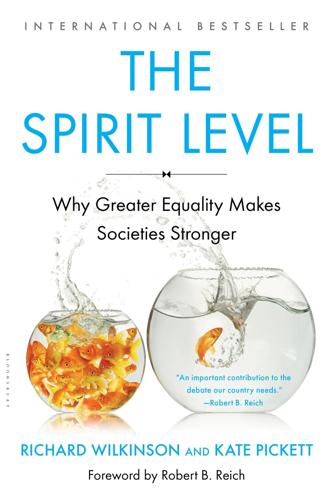
The Spirit Level: Why Greater Equality Makes Societies Stronger
by
Richard Wilkinson
and
Kate Pickett
Published 1 Jan 2009
Also important in influencing children’s development is the stress they experience themselves in infancy. The quality of care and nurture, the quality of attachment and how much conflict there is, all affect stress hormones and the child’s emotional and cognitive development. Although not yet identified in humans, sensitive periods in early life may sometimes involve ‘epigenetic’ processes by which early exposures and experience may switch particular genes on or off to pattern development in the longer term. Differences in nursing behaviour in mother rats have been shown to affect gene expression in their offspring, so providing ways of adapting to the environment in the light of early experience.336 In the past, there was a strong tendency simply to regard children who had had a very stressful early life as ‘damaged’.
…
Cambridge: McDonald Institute Monographs, 1996. 334. R. G. Wilkinson, The Impact of Inequality. New York: New Press, 2005. 335. J. Woodburn, ‘Egalitarian societies’, Man (1982) 17: 431–51. 336. I. C. G. Weaver, N. Cervoni, F. A. Champagne, A. C. d’Alessio, S. Sharma, J. R. Seckl, S. Dymov, M. Szyf and M. J. Meaney, ‘Epigenetic programming by maternal behaviour’, Nature Neuroscience (2004) 7: 847–54. 337. S. Morris, ‘Women laughed as they forced toddlers to take part in “dog fight”’, Guardian, 21 April 2007. 338. G. Rizzolatti and L. Craighero, ‘The mirror-neuron system’, Annual Review of Neuroscience (2004) 27: 169–72. 339.
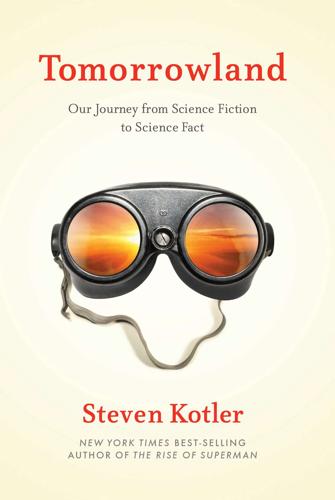
Tomorrowland: Our Journey From Science Fiction to Science Fact
by
Steven Kotler
Published 11 May 2015
The idea that humans can take control of evolution’s trajectory has been around since the 1970s, when polio vaccine discoverer Jonas Salk argued that humanity had entered a new era, which he dubbed “meta-biological evolution,” where we have the potential to control and direct evolution (our own and that of other species). Moreover, the now well-established field of epigenetics has shown us that a myriad of factors beyond alterations in DNA can produce heritable change in an organism. Fogel, though, goes farther by going faster. “It’s a ‘whole that is much greater than the sum of its parts’ argument,” he explains. “We’re talking about an incredible synergy between technology and biology, about very simple improvements — pasteurization, a general reduction of pollutants, cleaning up our water supply — producing heritable effects across populations faster than ever before.
…
See MDMA Ehrlich, Paul, 204 Einstein, Albert, 109 Eisenhower, Dwight, 109 Eldredge, Niles, 54 Eleusinian Mysteries, 167 empathodelics, 160 end-of-life care, 157–67, 170–71, 174–76, 178–82 LSD in, 178–79, 181–82 MDMA in, 170–71, 174–76, 178–79, 180–82 psilocybin in, 160 research on, 161–62 endorphins, 42 Energy from Thorium Foundation, 120 Engerman, Stanley, 51–52 Enríquez, Juan, 58 epigenetics, 55 epilepsy, 43–44 ethics distributed justice in, 211 genetic engineering and, 232–33 of space exploration, 143–45 of sperm banking, 251 stem cells and, 206–18 Ethics and Religious Liberty Commission, 260 “The Ethics of Exploration” (Consolmagno), 144 eugenics, 58–59 Evans, Nick, 189–90 Everglades, 81–95 alligators in, 91–92 Army Corps of Engineers taming of, 85–86 cattails and blue-green algae in, 90–91 cost of restoring, 85 drought and, 83–84, 89–90 Floridan aquifer and, 88 Kissimmee River in, 85–87 lack of knowledge about, 87–90 Lake Okeechobee in, 88–90 loss of species in, 84, 87 pollution in, 84, 89 sugarcane farming in, 90–92 water impoundments in, 88–90 evolution acceleration of, 49–59 economic development and, 51–53 gene-culture dynamics and, 55–57 geological shifts and, 53–54 inefficiency of, 53–54 metabiological, 55 of mosquito drug resistance, 134 of mosquitos and malaria, 134–35 of new species, 59 punctuated equilibrium in, 49, 54, 56 techno-physio, 54–57 existential anxiety, 175 exoskeletons, bionic, 20 extinction, 83 extreme states, xiv–xv, 33–48 after-effects of, 42–43 biological basis of, 40–43, 45–48 brain changes after, 43–45 brain changes during, 45–48 concentration in, 46–47 euphoria in, 41–42 in fighter pilots, 40–42 near-death experiences, 37–45 psychedelic drugs and, 155–82 REM sleep and, 44–45 reproducibility of, 47–48 in skydiving, 35–36 transformative nature of, 42–48 triggered by drugs, 38–39 triggered by fear, 39 Facebook, 3 Fairfax Cryobank, 246–47 Faisal, Turki bin, 255 Farmer in the Sky (Heinlein), 87 fascinomas, 38 Federal Bureau of Investigation (FBI), 236–37, 244 Fermi, Enrico, 109 fertility clinics, 247–63 Catholic Church on, 259–60 economics of, 250–51 stem cells and, 208–10, 211 Feynman, Richard, 30 Fisher, Lucy, 213–14 Floridan aquifer, 88 Floud, Roderick, 54 Flow Genome Project, 145 flying cars, xii, 97–105 Fogel, Robert, 51–52, 54–59 Food and Drug Administration (FDA), 67 on psychedelic research, 174 on sperm banking, 251, 261–62 on steroids, 195 Foundation Fighting Blindness, 74 Foundation for Applied Molecular Evolution, 232 Fraser, Claire, 245 Frazer, James, 258 free radicals, 191 Freud, Sigmund, 175 Fuentes, Carlos, 23 Fukushima Daiichi Nuclear Power Plant, 122–23 Gates, Bill, 121 gene-culture dynamics, 55–57 GeneGenie, 27, 222 General Electric, 113, 221 genetic code, xv.
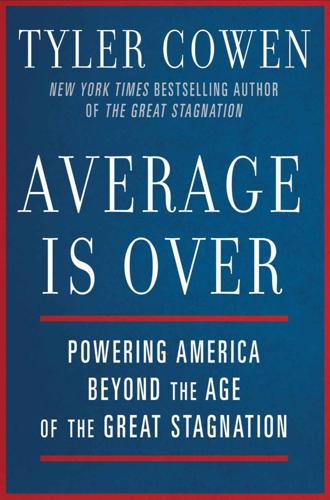
Average Is Over: Powering America Beyond the Age of the Great Stagnation
by
Tyler Cowen
Published 11 Sep 2013
We simply may have reached the point in some key scientific areas where we are working with levels of explanation that our human brains—even those of Nobel laureates—cannot handle. The top scientists might end up being people not who “know,” but rather who hold shadowy outlines of the truth in their heads. Today’s frontier questions about cosmology, epigenetics, or macroeconomics are all more complicated and more advanced than the questions being asked forty or even twenty years ago. There is no guarantee that future advances will move us back to simpler conceptual worlds, and if anything the likelihood seems to point in the opposite direction. If we increasingly rely on the genius of machines to crunch a lot of data, in lieu of a simple and easily intelligible overarching framework, will that really be so bad?
…
See healthcare domestic oil production, 177 domestic productivity, 169 Dorn, David, 164 Dreber, Anna, 106 driverless automobiles, 8 drone aircraft, 20–21 Duflo, Esther, 222 Dumaine, Erika, 62 Duncan, Arne, 57 dystopian visions, 135 “Economic Growth Given Machine Intelligence” (Hanson), 135–36 economics behavioral economics, 75–76, 99, 105, 110, 149, 227 and “Big Data,” 221–22 changing emphasis in research, 221–28 computational economics, 222 development economics, 226 economic crises, 50–51, 53, 55, 232 and incentive for innovation, 138 Keynesian, 53–54, 56, 226 macroeconomics, 9, 166, 211–12, 226 microeconomics, 212, 225 and online education, 180 economies of scale, 184 Economou, Rona, 61 education and the changing labor market, 37, 168–69 chess as model for, 185–88, 191–92, 202–3 educational standards, 90 in El Paso, 246 Emporium model, 183–84 and face-to-face instruction, 194–202 and foreign competition, 176 and gaming, 185–88 and geographic trends, 171–72 and income polarization, 4 new higher education models, 188–94 online education, 179–85 and the social contract, 231 and “tutor kings,” 200–201 and wage trends, 40–41 egalitarianism, 189–90 eHarmony, 95 Einstein, Albert, 126, 211, 213, 215 El Paso, Texas, 245–46 elderly population, 51–52, 236–37, 258 elections, 10–11, 234–35 electronic shopping, 27 The Elegant Universe (Greene), 212–13 empiricism, 225–26 employer-provided healthcare, 237–38 Emporium education model, 183–84 endowment effect, 99–100 energy costs, 177 Eng, Richard, 200 engineering, 26 English boarding schools, 199 entertainment industry, 22 epigenetics, 212 Equifax, 125 Euclid, 216–17 Europe, 173–75 evolution of machines, 150–51 exclusivity, 36, 95–96, 192–94 expert testimony, 129 “Face time,” 146 Facebook, 26, 209–10, 221, 257 face-to-face education, 194–202 factor price equalization, 163 factories, 92 Fair Isaac Corporation, 124 Felin, Teppo, 139 Feller, Sébastien, 147 FICO scores, 124 financial crisis, 50–51, 53, 55 financial sector, 25, 41, 128–29, 129–30 fiscal crunch, 231–51 Fischer, Bobby, 101, 108, 188 fixed employment costs, 113 Florida, 8, 237, 241, 251–52 Florida, Richard, 256 “Flynn Effect,” 107–8 Foer, Joshua, 152 food prices, 246, 248 Ford, Martin, 6 foreign competition, 161–63, 163–71, 175–77 Foxconn, 7–8 “fracking,” 177 France, 39 Franchise (Asimov), 10–11 Franklin, Benjamin, 148 free trade, 166, 176 freelancing, 59–63 Freestyle chess compared to traditional chess, 77–83 and computer simulations, 227–28 and decision-making models, 129 described, 77–83 impact on human play, 83–86 masters of, 86–87 origin of, 46–47 and other man-machine collaborations, 86–89, 89–93 and risk-taking behavior, 75–76 and self-education, 202–3 spectator interest in, 156–57 Friendster, 209 Fritz (chess program), 68, 78, 109, 114 futurism, 6, 134 “g factor” (general intelligence), 42–44 game theory, 222 Gates, Bill, 25 Gattaca (1997), 13 Gelfand, Boris, 156 gender issues and changing worker profiles, 30–31 and chess, 106, 108 and labor force trends, 51 and wage trends, 52–53 and wealth inequality, 249 General Electric, 38, 87 general relativity theory, 211 “Generation Limbo,” 62 genetics, 17, 211–12 geographic trends, 171–75 Gerdes, Christer, 106 Germany, 39, 173–74 Global Hawk surveillance drones, 20–21 globalization, 10 Go (game), 135 Gobet, Fernand, 76 Google and availability of knowledge, 7 and “Big Data,” 221 and driverless cars, 8 and the labor market, 26, 27, 34–36 and medical diagnosis, 89 and memory, 151–52, 154 and online marketing, 22 and public trust, 217 and regulatory issues, 17 government budgets and spending, 175, 176, 198, 231–51 GPS technology, 7, 14–15, 113–15, 116–17 “Grand Unified Theories,” 212 Gränsmark, Patrik, 106 Great Recession (2008–2009), 54–59 “great stagnation,” 5 Greek symposia, 197 Greene, Brian, 212–13 Grischuk, Alexander, 109 Hanson, Gordon H., 164 Hanson, Robin, 135–36 Harvard University, 192–94, 201 Hauchard, Arnaud, 147 Hayek, Friedrich, 215 healthcare costs of, 59, 60, 113 employer-provided, 59, 113, 237–38 and the fiscal crunch, 232, 234–39, 242, 249–50 and the labor market, 31, 238 and mandates, 237–38 and physician rating systems, 124–25 and protectionism, 176 and rationing, 249–50 and regulatory issues, 16–17 and wealth inequality, 243–44 hermeticism, 153 Hernandez, Nelson, 78–79, 86, 157, 203 Higgs boson, 212 higher education, 168, 188–94, 194–202 hiring costs, 36, 59, 60 Hirschberg, Julia, 12–13 Hitt, Lorin M., 33 Hlatshwayo, Sandile, 176 Hong Kong, 200–201 Houdini (chess program), 68 household incomes, 38 housing costs, 53, 55, 63, 239–40, 244–45 human judgment and error, 102–3, 104, 131 human-machine interface, 91–92 Hydra (chess program), 69 IBM, 7, 47 imitation, 141, 144.
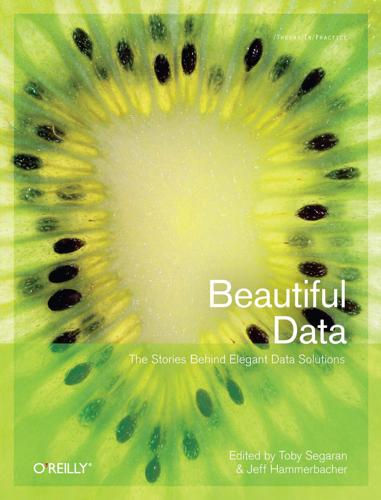
Beautiful Data: The Stories Behind Elegant Data Solutions
by
Toby Segaran
and
Jeff Hammerbacher
Published 1 Jul 2009
Although the genome is generally best regarded as a read-only database, DNA can be chemically modified as a response to environmental factors, resulting in the suppression of some genes. These chemical changes don’t alter the code itself; rather, they provide an additional “annotation” that makes the cellular machinery less likely to transcribe the gene. The study of these modifications, known as epigenetics, and the discovery of their role in our makeup is still in its infancy. It is known that some epigenetic changes switch off genes that won’t be needed in a particular cell (a cell directed to be muscle will need a different complement of genes than a liver cell). What is exciting, and would doubtless feature in future editions of DNA Hacks, is that genes may be switched off in response to the environment.
…
PNUTS system, 64–67 data/ink ratio in graphics, 90 data/location ratio of graphics, 90 databases cloud system for (see cloud system) consistency considerations for, 57–64 dimensional model for, 76 for PEIR system, 5 relational model for, 76 for YFD system, 5 (see also data storage; Data Warehouse) Databee system, 81 dataspaces, 83 Davis, Brandon (particle specialist at The Syndicate), 160 Deep Web, 133–137 (see also surfacing) dependencies in data, difficulty in controlling, 215 design of forms (see form design) dimensional model for data, 76 directories, used for enterprise discoverability, 113–115 disabilities, accessibility considerations for people with, 19, 23 discoverability of data, 106 components of, 115–117 directories used for, 113–115 enterprise discoverability, 111 federated fetch used for, 113 federated search used for, 111 privacy considerations for, 118 relevance of data, determining, 115 (see also “data finds data” concept; findability of data) distributions, usefulness of, 11, 209, 211, 285 DNA bases in, 244 cancer’s effects on, 246 cracking the code of, 248 as a data source, management of, 250–257 as a data store, 243–250 evolution’s effects on, 249 future developments using, 257 hacking or modifying, 245, 257 purpose of, 245 replication of, 247 sequencing platform for, 254–257 sexual reproduction not mixing genes, 249 DNA sequencing of corpus data, 240 document unshredding of corpus data, 240 downlink, in space missions, 38, 52 Droz, Pierre-Yves (Lidar data guru), 160 Dykes, Jason (author), 85–101 Dynamo system, 69 E Edwardes, Alistair (research using Geograph), 92 Endeca, 78 enterprise discoverability, 111 enterprise search, 78 Environmental Protection Agency website, 336 epigenetics, 246 ETL (Extract, Transform, and Load) process, 75 event-driven architecture, 125–128 eventual consistency of data, 59 examples in this book, using, xiv Excel (data analysis package), 282 Extract, Transform, and Load (ETL) process, 75 F Facebook self-analysis by, 74 sharing data using, 12 Facebook’s Information Platform Argus portal, 81 Cassandra system, 70, 81 Cheetah system, 79 INDEX Download at Boykma.Com 359 Facebook’s Information Platform (continued) comparison to FIM platform, 82 comparison to Microsoft’s data management stack, 82 Databee system, 81 Hadoop system used by, 79–82 Hive framework, 81 PyHive framework, 81 FaceStat.com website, 279 Fast Search and Transfer (FAST), 78 federated fetch, 113 federated search, 111 The Fifth Discipline (Senge), 78 FIM (Fox Interactive Media) platform, 82 findability of data, 174 (see also “data finds data” concept; discoverability of data) Follett, Jonathan (author), 17–33 Food and Drug Administration website, 337 form design browser compatibility, testing, 24 for customer survey project, 21–30 dynamic form length for, 24–27 typography, 23 UX design practices for, 18 whitespace in, 23 forms information behind (see Deep Web) processing of, 137–138 Fox Interactive Media (FIM) platform, 82 Franz, Alex (trillion-word data set published by), 219 Frost, James (director of “House of Cards” project), 149 G Gelman, Andrew (author), 323–332 Genomes Project, 253 geocoding data for housing market analysis, 305 Geograph archive, 86–88 beauty in, identifying, 87, 89, 98, 101 characteristics of, term hierarchy for, 91–94 location information, representation of, 95–98 treemaps representing, 90, 95 visualization of, 89–91, 95–98 geolocation, 170, 172 (see also location information, representation of) Geometric Informatics GeoVideo system, 153, 158 Geonames website, 336 360 geo-replication of data, 56, 58 GeoVideo system (see Geometric Informatics GeoVideo system) geovisual analytics, 86 Ghitza, Yair (author), 323–332 Gnip, 120, 131 events and polling both allowed by, 127 normalizing social data, 129 public versus private data use by, 131 Google BigTable system, 68 Google, trillion-word data set taken from (see natural language corpus data) Gould, Stephen Jay (statement about descriptive statistics and variation), 212 graphics (see Geograph archive; Phoenix Mars Lander system; political data; sense. us website; Radiohead’s “House of Cards” video) Guha, Rajarshi (author), 259–277 H Hadoop distributed filesystem (HDFS), 81 Hadoop project, 70, 79–82 Halevy, Alon (author), 133–147 Hammerbacher, Jeff (author), 73–84 hash-partitioned data, 62 HDFS (Hadoop distributed filesystem), 81 health departments, public data available from, 336 Heer, Jeffrey (author), 183–203 Hive framework, 81 Holm, Matthew (author), 17–33 Holovaty, Adrian (Chicago Crime project), 168 “House of Cards” video (see Radiohead’s “House of Cards” video) housing market analysis, 303 analysis of data, 306–319 census information adding value to, 314 conclusions of, 319 data checking for, 305 data collection for, 304 geocoding the data, 305 geographic variations in data, 311–314 inflation, effects of, 307 rich and poor groups, effects on, 308 San Francisco-specific results, 318 HTML 5 events, 126 HTTP, 120 Hughes, J.
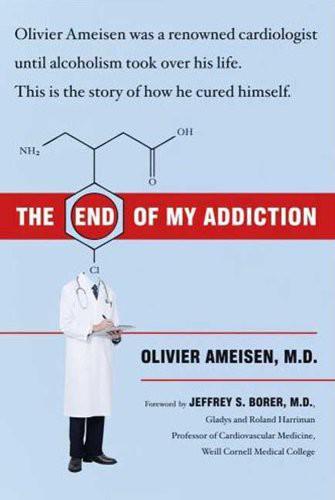
The End of My Addiction
by
Olivier Ameisen
Published 23 Dec 2008
It noted that the children of women who survived the Holocaust are more likely to have low levels of the stress hormone cortisol, which would make them less emotionally resilient, and that the “tendency for maternal PTSD to make a greater contribution than paternal PTSD to [offspring’s] PTSD risk…paves the way for the speculation that epigenetic factors may be involved.” This could occur through a change in gene expression known as genomic imprinting, in which the genetic contribution of the father or mother outweighs that of the other parent.2 Do my early childhood experiences explain why I became anxious? An alcoholic? The old nature versus nurture debate remains undecided.
…
Yehuda et al., “Maternal, not paternal, PTSD is related to increased risk for PTSD in offspring of Holocaust survivors,” Journal of Psychiatric Research, February 15, 2008, e-publication ahead of print. Regarding genomic imprinting, I am grateful to Jerome B. Posner, M.D., for bringing this phenomenon to my attention as the possible means of transmission of PTSD risk from parent to child and suggesting that it “is probably caused by epigenetic mechanisms, as for example, DNA methylation”; personal communication, August 17, 2008. Chapter 4. Doing Great and Feeling Awful 1. For relapse rates after rehab for alcoholism, see J. M. Polich, D. J. Armor, and H. B. Braiker, “Stability and change in drinking patterns,” in The Course of Alcoholism: Four Years After Treatment (New York: John Wiley & Sons, 1981), 159–200.
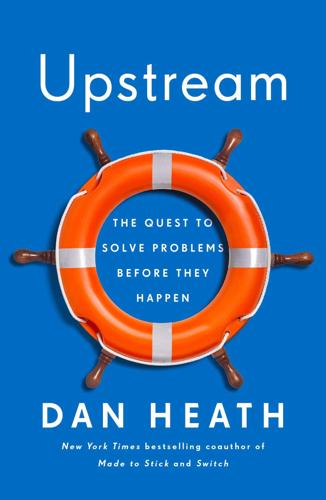
Upstream: The Quest to Solve Problems Before They Happen
by
Dan Heath
Published 3 Mar 2020
criminal is still in his mother’s tummy: Richard Tremblay, “Developmental Origins of Chronic Physical Aggression: From Social Learning to Epigenetics,” Talk at Picower New Insight Symposium, Massachusetts Institute of Technology, November 29, 2014, https://www.youtube.com/watch?v=Br3OeGwGxuY, audio location: 00:17:20. Tremblay points to a cluster of risk factors: Ibid., audio location: 00:17:20–17:44. This research was brand-new to me. Here’s a bit more detail if you’re curious. In another paper, Tremblay et al. write: “The child inherits a mix of their parent’s genes, and their mother’s smoking, stress, poverty, and depression during pregnancy impact the fetus’ brain development through epigenetic mechanisms. From the postnatal period onwards, the physical and social environments created by a poor, young, depressed woman with low education, behavior problems, and coercive parenting in a dysfunctional family clearly fail to provide the care and education needed by the brain of a young child to learn to control their emotions and behavior.”

Future Files: A Brief History of the Next 50 Years
by
Richard Watson
Published 1 Jan 2008
Simply delete it with a pre-moistened wipe), disintegrators, short-wave scalpels, childcare robots, space tugs, oceanic thermal converters (a device that uses the sea to generate energy), face-recognition doors, spray-on surgical gloves, napcaps (hats that send you to sleep), stress-control clothing, gravity tubes (a way of removing gravity in a specific area), sleep surrogates and self-repairing roads. Another emerging field is epigenetics, the study of how particular genes act based on chemical and environmental factors. It’s significant because previously scientists thought that genes (and the DNA from which they are made) were “fixed” — DNA is destiny. But perhaps not. The new theory is that environmental factors can influence how a specific gene acts.
…
A 311 Index ‘O’ Garage 170 3D printers 56 accelerated education 57 accidents 159, 161–6, 173, 246 ACNielsen 126 adaptive cruise control 165 Adeg Aktiv 50+ 208 advertising 115–16, 117, 119 Africa 70, 89, 129, 174, 221, 245, 270, 275, 290, 301 ageing 1, 10, 54, 69, 93, 139, 147–8, 164, 188, 202, 208, 221, 228–9, 237, 239, 251, 261, 292, 295, 297–8 airborne networks 56 airlines 272 allergies 196–7, 234, 236 Alliance Against Urban 4x4s 171 alternative energy 173 alternative futures viii alternative medicine 244–5 alternative technology 151 amateur production 111–12 Amazon 32, 113–14, 121 American Apparel 207 American Express 127–8 androids 55 Angola 77 anti-ageing drugs 231, 237 anti-ageing foods 188 anti-ageing surgery 2, 237 antibiotics 251 anxiety 10, 16, 30, 32, 36, 37, 128, 149, 179, 184, 197, 199, 225, 228, 243, 251, 252, 256, 263, 283–4, 295–6, 300, 301, 305 Apple 61, 115, 121, 130, 137–8, 157 Appleyard, Bryan 79 Argentina 210 Armamark Corporation 193 artificial intelliegence 22, 40, 44, 82 131, 275, 285–6, 297, 300 Asda 136, 137 Asia 11, 70, 78, 89, 129, 150, 174, 221, 280, 290, 292 Asimov, Isaac 44 Asos.com 216 asthma 235 auditory display software 29 Australia 20–21, 72–3, 76, 92, 121, 145, 196, 242, 246, 250, 270, 282 Austria 208 authenticity 32, 37, 179, 194, 203–11 authoritarianism 94 automated publishing machine (APM) 114 automation 292 automotive industry 154–77 B&Q 279 baby boomers 41, 208 bacterial factories 56 Bahney, Anna 145 Bahrain 2 baking 27, 179, 195, 199 Bangladesh 2 bank accounts, body double 132 banknotes 29, 128 banks 22, 123, 135–8, 150, 151 virtual 134 Barnes and Noble 114 bartering 151 BBC 25, 119 Become 207 Belgium 238 313 314 benriya 28 Berlusconi, Silvio 92 Best Buy 223 biofuel 64 biomechatronics 56 biometric identification 28, 35, 52, 68, 88, 132 bionic body parts 55 Biosphere Expeditions 259 biotechnology 40, 300 blended families 20 blogs 103, 107, 109, 120 Blurb 113 BMW 289 board games 225 body double bank accounts 132 body parts bionic 55 replacement 2, 188, 228 Bolivia 73 Bollywood 111 books 29, 105, 111–25 boomerang kids 145 brain transplants 231 brain-enhancing foods 188 Brazil 2, 84, 89, 173, 247, 254, 270, 290 Burger King 184 business 13, 275–92 Bust-Up 189 busyness 27, 195, 277 Calvin, Bill 45 Canada 63, 78, 240 cancer 251 car sharing 160, 169, 176 carbon credits 173 carbon footprints 255 carbon taxes 76, 172 cars classic 168–9 driverless 154–5 flying 156, 165 hydrogen-powered 12, 31, 157, 173 pay-as-you-go 167–8 self-driving 165 cascading failure 28 cash 126–7, 205 cellphone payments 129, 213 cellphones 3, 25, 35, 51, 53, 120, 121, FUTURE FILES 129, 156, 161, 251 chicken, Christian 192 childcare robots 57 childhood 27, 33–4, 82–3 children’s database 86 CHIME nations (China, India, Middle East) 2, 10, 81 China 2, 10, 11, 69–72, 75–81, 88, 92–3, 125, 137, 139–40, 142, 151, 163, 174–5, 176, 200, 222, 228, 247, 260, 270–71, 275, 279, 295, 302 choice 186–7 Christian chicken 192 Christianity, muscular 16, 73 Chrysler 176 cinema 110–11, 120 Citibank 29, 128 citizen journalism 103–4, 108 City Car Club 168 Clarke, Arthur C. 58–9 Clarke’s 187 classic cars 168–9 climate change 4, 11, 37, 43, 59, 64, 68, 74, 77–9, 93, 150, 155, 254, 257, 264, 298–9 climate-controlled buildings 254, 264 cloning 38 human 23, 249 CNN 119 coal 176 Coca-Cola 78, 222–3 co-creation 111–12, 119 coins 29, 128, 129 collective intelligence 45–6 Collins, Jim 288 comfort eating 200 Comme des Garçons 216 community 36 compassion 120 competition in financial services 124–5 low-cost 292 computers disposable 56 intelligent 23, 43 organic 56 wearable 56, 302 computing 3, 33, 43, 48, 82 connectivity 3, 10, 11, 15, 91, 120, Index 233, 261, 275–6, 281, 292, 297, 299 conscientious objection taxation 86 contactless payments 123, 150 continuous partial attention 53 control 36, 151, 225 convenience 123, 178–9, 184, 189, 212, 223, 224 Coren, Stanley 246 corporate social responsibility 276, 282, 298 cosmetic neurology 250 Costa Rica 247 Craig’s List 102 creativity 11, 286; see also innovation credit cards 141–3, 150 crime 86–9 forecasting 86–7 gene 57, 86 Croatia 200 Crowdstorm 207 Cuba 75 cultural holidays 259, 273 culture 11, 17–37 currency, global 127, 151 customization 56, 169, 221–2, 260 cyberterrorism 65, 88–9 Cyc 45 cynicism 37 DayJet 262 death 237–9 debt 123–4, 140–44, 150 defense 63, 86 deflation 139 democracy 94 democratization of media 104, 108, 113 demographics 1, 10, 21, 69, 82, 93, 202, 276, 279–81, 292, 297–8 Denmark 245 department stores 214 deregulation 11, 3 Destiny Health 149 detox 200 Detroit Project 171 diagnosis 232 remote 228 digital downloads 121 evaporation 25 315 immortality 24–5 instant gratification syndrome 202 Maoism 47 money 12, 29, 123, 126–7, 129, 132, 138, 150, 191 nomads 20, 283 plasters 241 privacy 25, 97, 108 readers 121 digitalization 37, 292 Dinner by Design 185 dirt holidays 236 discount retailers 224 Discovery Health 149 diseases 2, 228 disintegrators 57 Disney 118–19 disposable computers 56 divorce 33, 85 DNA 56–7, 182 database 86 testing, compulsory 86 do-it-yourself dinner shops 185–6 dolls 24 doorbells 32 downshifters 20 Dream Dinners 185 dream fulfillment 148 dressmaking 225 drink 178–200 driverless cars 154–5 drugs anti-ageing 231, 237 performance-improving 284–5 Dubai 264, 267, 273 dynamic pricing 260 E Ink 115 e-action 65 Earthwatch 259 Eastern Europe 290 eBay 207 e-books 29, 37, 60, 114, 115, 302 eco-luxe resorts 272 economic collapse 2, 4, 36, 72, 221, 295 economic protectionism 10, 15, 72, 298 economy travel 272 316 Ecuador 73 education 15, 18, 82–5, 297 accelerated 57 lifelong learning 290 Egypt 2 electricity shortages 301 electronic camouflage 56 electronic surveillance 35 Elephant 244 email 18–19, 25, 53–4, 108 embedded intelligence 53, 154 EMF radiation 251 emotional capacity of robots 40, 60 enclosed resorts 273 energy 72, 75, 93 alternative 173 nuclear 74 solar 74 wind 74 enhancement surgery 249 entertainment 34, 121 environment 4, 10, 11, 14, 64, 75–6, 83, 93, 155, 171, 173, 183, 199, 219–20, 252, 256–7, 271, 292, 301 epigenetics 57 escapism 16, 32–3, 121 Estonia 85, 89 e-tagging 129–30 e-therapy 242 ethical bankruptcy 35 ethical investing 281 ethical tourism 259 ethics 22, 24, 41, 53, 78, 86, 132, 152, 194, 203, 213, 232, 238, 249–50, 258, 276, 281–2, 298–9 eugenics 252 Europe 11, 70, 72, 81, 91, 141, 150, 174–5, 182, 190, 192, 209 European Union 15, 139 euthanasia 238, 251 Everquest 33 e-voting 65 experience 224 extended financial families 144 extinction timeline 9 Facebook 37, 97, 107 face-recognition doors 57 fakes 32 family 36, 37 FUTURE FILES family loans 145 fantasy-related industries 32 farmaceuticals 179, 182 fast food 178, 183–4 fat taxes 190 fear 10, 34, 36, 38, 68, 150, 151, 305 female-only spaces 210–11, 257 feminization 84 financial crisis 38, 150–51, 223, 226, 301 financial services 123–53, 252 trends 123–5 fish farming 181 fixed-price eating 200 flashpacking 273 flat-tax system 85–6 Florida, Richard 36, 286, 292 flying cars 165 food 69–70, 72, 78–9, 162, 178–201 food anti-ageing 188 brain-enhancing 188 fast 178, 183–4 functional 179 growing your own 179, 192, 195 history 190–92 passports 200 slow 178, 193 tourism 273 trends 178–80 FoodExpert ID 182 food-miles 178, 193, 220 Ford 169, 176, 213, 279–80 forecasting 49 crime 86–7 war 49 Forrester Research 132 fractional ownership 168, 175, 176, 225 France 103, 147, 170, 189, 198, 267 Friedman, Thomas 278–9, 292 FriendFinder 32 Friends Reunited 22 frugality 224 functional food 179 Furedi, Frank 68 gaming 32–3, 70, 97, 111–12, 117, 130, 166, 262 Gap 217 Index gardening 27, 148 gas 176 GE Money 138, 145 gendered medicine 244–5 gene silencing 231 gene, crime 86 General Motors 157, 165 Generation X 41, 281 Generation Y 37, 41, 97, 106, 138, 141–2, 144, 202, 208, 276, 281, 292 generational power shifts 292 Genes Reunited 35 genetic enhancement 40, 48 history 35 modification 31, 182 testing 221 genetics 3, 10, 45, 251–2 genomic medicine 231 Germany 73, 147, 160, 170, 204–5, 216–17, 261, 267, 279, 291 Gimzewski, James 232 glamping 273 global currency 127 global warming 4, 47, 77, 93, 193, 234 globalization 3, 10, 15–16, 36–7, 63–7, 72–3, 75, 81–2, 88, 100, 125, 139, 143, 146, 170, 183, 189, 193–5, 221, 224, 226, 233–4, 247–8, 263, 275, 278–80, 292, 296, 299 GM 176 Google 22, 61, 121, 137, 293 gout 235 government 14, 18, 36, 63–95, 151 GPS 3, 15, 26, 50, 88, 138, 148, 209, 237, 262, 283 Grameen Bank 135 gravity tubes 57 green taxes 76 Greenpeace 172 GRIN technologies (genetics, robotics, internet, nanotechnology) 3, 10, 11 growing your own food 178, 192, 195 Gucci 221 Gulf States 125, 260, 268 H&M 217 habitual shopping 212 Handy, Charles 278 317 Happily 210 happiness 63–4, 71–2, 146, 260 health 15, 82, 178–9, 199 health monitoring 232, 236, 241 healthcare 2, 136, 144, 147–8, 154, 178–9, 183–4, 189–91, 228–53, 298; see also medicine trends 214–1534–7 Heinberg, Richard 74 Helm, Dieter 77 Heritage Foods 195 hikikomori 18 hive mind 45 holidays 31, 119; see also tourism holidays at home 255 cultural 259 dirt 236 Hollywood 33, 111–12 holographic displays 56 Home Equity Share 145 home baking 225 home-based microgeneration 64 home brewing 225 honesty 152 Hong Kong 267 hospitals 228, 241–3, 266 at home 228, 238, 240–42 hotels 19, 267 sleep 266 human cloning 23, 249 Hungary 247 hybrid humans 22 hydrogen power 64 hydrogen-powered cars 12, 31, 157, 173 Hyperactive Technologies 184 Hyundai 170 IBM 293 identities, multiple 35, 52 identity 64, 71 identity theft 88, 132 identity verification, two-way 132 immigration 151–2, 302 India 2, 10, 11, 70–72, 76, 78–9, 81, 92, 111, 125, 135, 139, 163, 174–5, 176, 247, 249–50, 254, 260, 270, 275, 279, 302 indirect taxation 86 318 individualism 36 Indonesia 2, 174 industrial robots 42 infinite content 96–7 inflation 151 information overlead 97, 120, 159, 285; see also too much information innovation 64, 81–2, 100, 175, 222, 238, 269, 277, 286–8, 291, 297, 299 innovation timeline 8 instant gratification 213 insurance 123, 138, 147–50, 154, 167, 191, 236, 250 pay-as-you-go 167 weather 264 intelligence 11 embedded 53, 154 implants 229 intelligent computers 23, 43 intelligent night vision 162–3 interaction, physical 22, 25, 97, 110, 118, 133–4, 215, 228, 243, 276, 304 interactive media 97, 105 intergenerational mortgages 140, 144–5 intermediaries 123, 135 internet 3, 10, 11, 17–18, 25, 68, 103, 108, 115–17, 124, 156, 240–41, 261, 270, 283, 289, 305 failure 301 impact on politics 93–4 sensory 56 interruption science 53 iPills 240 Iran 2, 69 Ishiguro, Hiroshi 55 Islamic fanaticism 16 Italy 92, 170, 198–9 iTunes 115, 130; see also Apple Japan 1, 18, 26, 28–9, 54–5, 63, 80–81, 114, 121, 128–9, 132, 140, 144–5, 147, 174, 186, 189, 192, 196, 198, 200, 209–10, 223, 240, 260, 264, 271, 279, 291 jetpacks 60 job security 292 journalism 96, 118 journalism, citizen 103–4, 107 joy-makers 57 FUTURE FILES Kaboodle 207 Kapor, Mitchell 45 Kenya 128 keys 28–9 Kindle 60, 121 Kramer, Peter 284 Kuhn, Thomas 281 Kurzweil, Ray 45 Kuwait 2 labor migration 290–91 labor shortages 3, 80–81, 289–90 Lanier, Jaron 47 laser shopping 212 leisure sickness 238 Let’s Dish 185 Lexus 157 libraries 121 Libya 73 life-caching 24, 107–8 lighting 158, 160 Like.com 216 limb farms 249 limited editions 216–17 live events 98, 110, 304 localization 10, 15–16, 116, 128, 170, 178, 189, 193, 195, 215, 220, 222–3, 224, 226, 255, 270, 297 location tagging 88 location-based marketing 116 longevity 188–9, 202 Longman, Philip 71 low cost 202, 219–22 luxury 202, 221, 225, 256, 260, 262, 265–6, 272 machinamas 112 machine-to-machine communication 56 marketing 115–16 location-based 116 now 116 prediction 116 Marks & Spencer 210 Maslow, Abraham 305–6 masstigue 223 materialism 37 Mayo Clinic 243 McDonald’s 130, 168, 180, 184 McKinsey 287 Index meaning, search for 16, 259, 282, 290, 305–6 MECU 132 media 96–122 democratization of 104, 108, 115 trends 96–8 medical outsourcing 247–8 medical tourism 2, 229, 247 medicine 188, 228–53; see also healthcare alternative 243–4 gendered 244–5 genomic 231 memory 229, 232, 239–40 memory loss 47 memory pills 231, 240 memory recovery 2, 228–9, 239 memory removal 29–30, 29, 240 Menicon 240 mental health 199 Meow Mix 216 Merriman, Jon 126 metabolomics 56 meta-materials 56 Metro 204–5 Mexico 2 micromedia 101 micro-payments 130, 150 Microsoft 137, 147, 293 Middle East 10, 11, 70, 81, 89, 119, 125, 129, 139, 174–5, 268, 301 migration 3, 11, 69–70, 78, 82, 234, 275, 290–91 boomerang 20 labor 290–91 Migros 215 military recruitment 69 military vehicles 158–9 mind-control toys 38 mindwipes 57 Mitsubishi 198, 279 mobile payments 123, 150 Modafinil 232 molecular biology 231 monetization 118 money 123–52 digital 12, 29, 123, 126–7, 129, 132, 138, 150, 191 monitoring, remote 154, 168, 228, 242 monolines 135, 137 319 mood sensitivity 41, 49, 154, 158, 164, 187–8 Morgan Stanley 127 mortality bonds 148 Mozilla Corp. 289 M-PESA 129 MTV 103 multigenerational families 20 multiple identities 35, 52 Murdoch, Rupert 109 muscular Christianity 16, 73 music industry 121 My-Food-Phone 242 MySpace 22, 25, 37, 46, 97, 107, 113 N11 nations (Bangladesh, Egypt, Indonesia, Iran, South Korea, Mexico, Nigeria, Pakistan, Philippines, Turkey, Vietnam) 2 nanoelectronics 56 nanomedicine 32 nanotechnology 3, 10, 23, 40, 44–5, 50, 157, 183, 232, 243, 286, 298 napcaps 56 narrowcasting 109 NASA 25, 53 nationalism 16, 70, 72–3, 139, 183, 298, 302 natural disasters 301 natural resources 2, 4, 11, 64, 298–9 Nearbynow 223 Nestlé 195 Netherlands 238 NetIntelligence 283 networkcar.com 154 networks 28, 166, 288 airborne 56 neural nets 49 neuronic whips 57 neuroscience 33, 48 Neville, Richard 58–9 New Economics Foundation 171 New Zealand 265, 269 newspapers 29, 102–9, 117, 119, 120 Nigeria 2, 73 Nike 23 nimbyism 63 no-frills 224 Nokia 61, 105 Norelift 189 320 Northern Rock 139–40 Norwich Union 167 nostalgia 16, 31–2, 51, 169–70, 179, 183, 199, 203, 225, 303 now marketing 116 nuclear annihilation 10, 91 nuclear energy 74 nutraceuticals 179, 182 Obama, Barack 92–3 obesity 75, 190–92, 199, 250–51 oceanic thermal converters 57 oil 69, 72–3, 93, 151, 174, 176, 272, 273, 301 Oman 2, 270 online relationships 38 organic computers 56 organic food 200, 226 osteoporosis 235 outsourcing 224, 292 Pakistan 2 pandemics 4, 10, 16, 59, 72, 128, 232, 234, 272, 295–7, 301 paper 37 parasite singles 145 passwords 52 pictorial 52 pathogens 233 patient simulators 247 patina 31 patriotism 63, 67, 299 pay-as-you-go cars 167–8 pay-as-you-go insurance 167 payments cellphone 129, 213 contactless 123, 150 micro- 130, 150 mobile 123, 150 pre- 123, 150 PayPal 124, 137 Pearson, Ian 44 performance-improving drugs 284–5 personal restraint 36 personal robots 42 personalization 19, 26, 56, 96–8, 100, 102–3, 106, 108–9, 120, 138, 149, 183, 205–6, 223, 244–5, 262, 267, 269 Peru 73 FUTURE FILES Peters, Tom 280 Pharmaca 244 pharmaceuticals 2, 33, 228, 237 Philippines 2, 212, 290 Philips 114 Philips, Michael 232–3 photographs 108 physical interaction 22, 25, 97, 110, 118, 133–4, 215, 228, 243, 276, 304 physicalization 96–7, 101–2, 106, 110, 120 pictorial passwords 52 piggy banks 151 Pink, Daniel 285 plagiarism 83 polarization 15–16, 285 politics 37, 63–95, 151–2 regional 63 trends 63–5 pop-up retail 216, 224 pornography 31 portability 178, 183–4 power shift eastwards 2, 10–11, 81, 252 Prada 205–6, 216 precision agriculture 181–2 precision healthcare 234–7 prediction marketing 116 predictions 37, 301–2 premiumization 223 pre-payments 123, 150 privacy 3, 15, 41, 50, 88, 154, 165–7, 205, 236, 249, 285, 295 digital 25, 97, 108 Procter & Gamble 105, 280 product sourcing 224 Prosper 124, 135 protectionism 67, 139, 156, 220, 226, 301 economic 10, 15, 72, 299 provenance 178, 193, 226 proximity indicators 32 PruHealth 149 psychological neoteny 52 public ownership 92 public transport 171 purposeful shopping 212 Qatar 2 quality 96–7, 98, 101, 109 Index quantum mechanics 56 quantum wires 56 quiet materials 56 radiation, EMF 251 radio 117 randominoes 57 ranking 34, 83, 109, 116, 134, 207 Ranking Ranqueen 186 reality mining 51 Really Cool Foods 185 rebalancing 37 recession 139–40, 202, 222 recognition 36, 304 refrigerators 197–8 refuge 121 regeneration 233 regional food 200 regional politics 63 regionality 178, 192–3 regulation 124, 137, 143 REI 207 Reid, Morris 90 relationships, online 38 religion 16, 58 remote diagnosis 228 remote monitoring 154, 168, 228, 242 renting 225 reputation 34–5 resistance to technology 51 resorts, enclosed 273 resource shortages 11, 15, 146, 155, 178, 194, 254, 300 resources, natural 2, 4, 11, 64, 73–4, 143, 298–9 respect 36, 304 restaurants 186–8 retail 20–21, 202–27, 298 pop-up 216, 224 stealth 215 theater 214 trends 202–3 Revkin, Andy 77 RFID 3, 24, 50, 121, 126, 149, 182, 185, 192, 196, 205 rickets 232 risk 15, 124, 134, 138, 141, 149–50, 162, 167, 172, 191, 265, 299–300, 303 Ritalin 232 321 road pricing 166 Robertson, Peter 49 robogoats 55 robot department store 209 Robot Rules 44 robotic assistants 54, 206 concierges 268 financial advisers 131–2 lobsters 55 pest control 57 soldiers 41, 55, 60 surgery 35, 41, 249 robotics 3, 10, 41, 44–5, 60, 238, 275, 285–6, 292, 297 robots 41, 54–5, 131, 237, 249 childcare 57 emotional capacity of 40, 60 industrial 42 personal 42 security 209 therapeutic 41, 54 Russia 2, 69, 72, 75, 80, 89, 92–3, 125, 174, 232, 254, 270, 295, 302 safety 32, 36, 151, 158–9, 172–3, 182, 192, 196 Sainsbury’s 215 Salt 187 sanctuary tourism 273 satellite tracking 166–7 Saudi Arabia 2, 69 Schwartz, Barry 186 science 13, 16, 40–62, 300 interruption 53 trends 40–42 scramble suits 57 scrapbooking 25, 108, 225 Sears Roebuck 137 seasonality 178, 193–4 second-hand goods 224 Second Life 133, 207–8 securitization 124, 140 security 16, 31, 151 security robots 209 self-driving cars 165 self-medication 242 self-publishing 103, 113–14 self-reliance 35, 75 self-repairing roads 57 322 self-replicating machines 23, 44 Selfridges 214 sensor motes 15, 50, 196 sensory internet 56 Sharia-based investment 125 Shop24 209 shopping 202–27 habitual 212 laser 212 malls 211–5 purposeful 212 slow 213 social 207 Shopping 2.0 224 short-wave scalpels 57 silicon photonics 56 simplicity 169–70, 179, 186, 202, 218, 224, 226, 272 Singapore 241 single-person households 19–20, 202–3, 208–9, 221, 244, 298, 304 skills shortage 293, 302 sky shields 57 sleep 159–60, 188, 228, 231, 246–7, 265 sleep debt 96, 266 sleep hotels 266 sleep surrogates 57 slow food 178, 193 slow shopping 213 slow travel 273 smart devices 26–7, 28, 32, 35, 44, 50, 56, 57, 164, 206, 207 smart dust 3, 15, 50, 196 smartisans 20 Smartmart 209 snakebots 55 social networks 97, 107, 110, 120, 133, 217, 261 social shopping 207 society 13, 15–16, 17–37 trends 15–16 Sodexho 193 solar energy 74 Sony 114, 121 South Africa 84, 149, 242 South America 82, 270 South Korea 2, 103, 128–9 space ladders 56 space mirrors 47 space tourism 271, 273 FUTURE FILES space tugs 57 speed 164, 202, 209, 245, 296–7 spirituality 16, 22, 282, 298, 306 spot knowledge 47 spray-on surgical gloves 57 St James’s Ethics Centre 282 stagflation 139 starch-based plastics 64 stealth retail 215 stealth taxation 86 Sterling, Bruce 55 storytelling 203 Strayer, David 161 street signs 162–3 stress 32, 96, 235, 243, 245–6, 258–9, 265, 257–9, 275, 277, 283–5 stress-control clothing 57 stupidity 151, 302 Stylehive 207 Sudan 73 suicide tourism 236 Super Suppers 185 supermarkets 135–6, 184–6, 188, 191–2, 194, 202–3, 212, 215, 218–19, 224, 229 surgery 2, 31 anti-ageing 2, 237 enhancement 249 Surowiecki, James 45 surveillance 35, 41 sustainability 4, 37, 74, 181, 193–5, 203, 281, 288, 298–9 Sweden 84 swine flu 38, 251, 272 Switzerland 168, 210, 215 synthetic biology 56 Taco Bell 184 Tactical Numerical Deterministic Model 49 tagging, location 86, 88 Taiwan 81 talent, war for 275, 279, 293; see also labor shortages Target 216 Tasmania 267 Tata Motors 174, 176 taxation 85–6, 92, 93 carbon 76, 172 conscientious objection 86 Index fat 190 flat 85–6 green 76 indirect 86 stealth 86 Tchibo 217 technology 3, 14–16, 18, 22, 26, 28, 32, 37, 40–62, 74–5, 82–3, 96, 119, 132, 147–8, 154, 157, 160, 162, 165–7, 178, 182, 195–8, 208, 221, 229, 237, 242–3, 249, 256, 261, 265–6, 268, 275–6, 280, 283–4, 292, 296–7, 300 refuseniks 30, 51, 97 trends 40–42 telemedicine 228, 238, 242 telepathy 29 teleportation 56 television 21, 96, 108, 117, 119 terrorism 67, 91, 108, 150, 262–3, 267, 272, 295–6, 301 Tesco 105, 135–6, 185, 206, 215, 219, 223 Thailand 247, 290 therapeutic robots 41, 54 thermal imaging 232 things that won’t change 10, 303–6 third spaces 224 ThisNext 207 thrift 224 Tik Tok Easy Shop 209 time scarcity 30, 96, 102, 178, 184–6, 218, 255 time shifting 96, 110, 116 time stamps 50 timeline, extinction 9 timeline, innovation 8 timelines 7 tired all the time 246 tobacco industry 251 tolerance 120 too much choice (TMC) 29, 202, 218–19 too much information (TMI) 29, 51, 53, 202, 229; see also information overload tourism 254–74 cultural 273 ethical 259 food 273 323 local 273 medical 2, 229, 247 sanctuary 273 space 271, 273 suicide 238 tribal 262 Tourism Concern 259 tourist quotas 254, 271 Toyota 48–9, 157 toys, mind-control 38 traceability 195 trading down 224 transparency 3, 15, 143, 152, 276, 282, 299 transport 15, 154–77, 298 public 155, 161 trends 154–6 transumerism 223 travel 2, 3, 11, 148, 254–74 economy 272 luxury 272 slow 273 trends 254–6 trend maps 6–7 trends 1, 5–7, 10, 13 financial services 123–5 food 178–80 healthcare 228–9 media 96–8 politics 63–5 retail 202–3 science and technology 40–42 society 15–16 transport 154–6 travel 254–6 work 275–7 tribal tourism 262 tribalism 15–16, 63, 127–8, 183, 192, 220, 260 trust 82, 133, 137, 139, 143, 192, 203, 276, 282–3 tunnels 171 Turing test 45 Turing, Alan 44 Turkey 2, 200, 247 Twitter 60, 120 two-way identity verification 132 UAE 2 UFOs 58 324 UK 19–20, 72, 76, 84, 86, 90–91, 100, 102–3, 105, 128–9, 132, 137, 139–42, 147–9, 150, 163, 167–8, 170–71, 175, 185, 195–6, 199, 200, 206, 210, 214–16, 238, 259, 267–8, 278–9, 284, 288 uncertainty 16, 30, 34, 52, 172, 199, 246, 263, 300, 303 unemployment 151 Unilever 195 University of Chicago 245–6 urban rental companies 176 urbanization 11, 18–19, 78, 84, 155, 233 Uruguay 200 US 1, 11, 19–21, 23, 55–6, 63, 67, 69, 72, 75, 77, 80–83, 86, 88–90, 92, 104–5, 106, 121, 129–33, 135, 139–42, 144, 147, 149, 150, 151, 162, 167, 169–71, 174, 185, 190–3, 195, 205–6, 209, 211, 213, 216, 218, 220, 222–3, 237–8, 240–8, 250, 260, 262, 267–8, 275, 279–80, 282–4, 287, 291 user-generated content (UGC) 46, 97, 104, 289 utility 224 values 36, 152 vending machines 209 Venezuela 69, 73 verbal signatures 132 VeriChip 126 video on demand 96 Vietnam 2, 290 Vino 100 113 Virgin Atlantic 261 virtual adultery 33 banks 134 economy 130–31 protests 65 reality 70 sex 32 stores 206–8 vacations 32, 261 worlds 157, 213, 255, 261, 270, 305 Vocation Vacations 259–60 Vodafone 137 voice recognition 41 voice-based internet search 56 voicelifts 2, 237 FUTURE FILES Volkswagen 175 voluntourism 259 Volvo 164 voting 3, 68, 90–91 Walgreens 244 Wal-Mart 105, 136–7, 215, 219–20, 223, 244, 282 war 68–9, 72 war for talent 275, 279; see also labor shortages war forecasting 49 water 69–70, 74, 77–9, 199 wearable computers 55 weather 64 weather insurance 264 Web 2.0 93, 224 Weinberg, Peter 125 wellbeing 2, 183, 188, 199 white flight 20 Wikipedia 46, 60, 104 wild swimming 273 Wilson, Edward O. 74 wind energy 74 wine producers 200 wisdom of idiots 47 Wizard 145 work 275–94 trends 275–94 work/life balance 64, 71, 260, 277, 289, 293 worldphone 19 xenophobia 16, 63 YouTube 46, 103, 107, 112 Zara 216–17 Zipcar 167 Zopa 124, 134
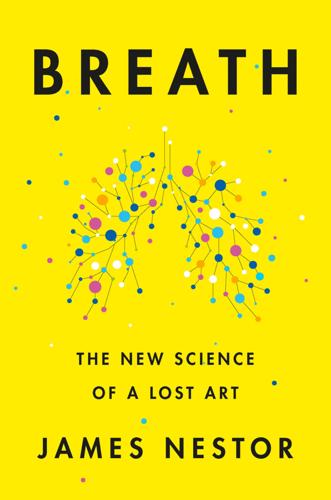
Breath: The New Science of a Lost Art
by
James Nestor
Published 25 May 2020
the top killers: “The Top 10 Causes of Death,” World Health Organization, May 24, 2018, https://www.who.int/news-room/fact-sheets/detail/the-top-10-causes-of-death; “Leading Causes of Death,” Centers for Disease Control and Prevention, https://www.cdc.gov/nchs/fastats/leading-causes-of-death.htm. Genes can be turned off: Danielle Simmons, “Epigenetic Influences and Disease,” Nature Education, https://www.nature.com/scitable/topicpage/epigenetic-influences-and-disease-895/. 30 pounds of air: “Each day about 30 pounds of air participates in this tidal flow, compared with less than 4 pounds of food and 5 pounds of water.” Dr. John R. Goldsmith, “How Air Pollution Has Its Effect on Health (2)—Air Pollution and Lung Function Changes,” Proceedings: National Conference on Air Pollution U.S.
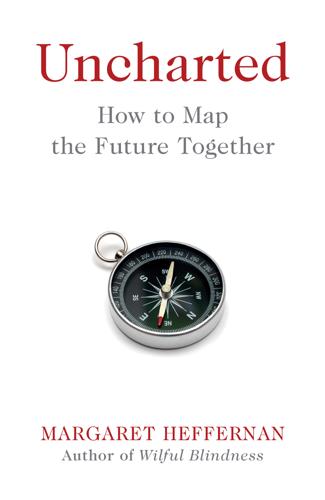
Uncharted: How to Map the Future
by
Margaret Heffernan
Published 20 Feb 2020
Take, for example, some species of deer that drop off and regrow their antlers each year. When a notch is cut in one antler, you’d expect the next year’s antlers to be pristine. But they aren’t; they grow back with a notch in the same place. Where and how has that information been stored? No one knows. Epigenetics, the study of all the factors beyond genes that determine life, is revealing how much more complex inheritance is.24 So when you get into the genetic determination of personality, prediction becomes highly problematic. Some of the loudest claims come from Robert Plomin, best known for his twin studies.
…
Jim, 26–7 craving, 5, 23, 26, 87, 182, 183, 283, 314 creativity, 8–9, 41, 45–6, 71, 85, 100, 103, 108, 116–17, 121, 156–61, 178, 200–2, 205, 250, 252, 264, 269, 277–8, 313, 319–20, 323 CRISPR, 98–9, 101–2 cryogenics, 210, 284, 285 cyclical vomiting syndrome (CVS), 66–7 cystic fibrosis, 89 Daily Mail, 16 Danone, 114 Darwin, Charles, 96 data analysis, 16–18, 33 Dautry, Raoul, 206 Davidson, Jane, 309 Davos, 40, 60 Days Without End, 186, 189, 195 De Beers, 67 death, 210, 279–95 ‘death’ anecdote, 287–8 death row, 278 Debenhams, 117 decision-making, 7, 95, 160, 233, 262, 296, 311 Deep Underground Neutrino Experiment (DUNE), 204 dementia, 278 Design Institute for Health, 131 determinism, 7, 51, 70, 94, 147, 201 detrimental types, 97 deus ex machina, 63 Dickens, Charles, 181 discrimination, 80, 96, 267 distraction, 44, 72, 168, 264 distrust, 163–5 diversity, 7, 79, 91, 100, 103, 118, 170, 174, 234, 286, 305–7, 320 DNA, 2, 5, 84, 88–96, 99–102, 220–2 Donaghy, Deirdre, 144 Donovan, Erin, 135–6 ‘Don’t Die of Ignorance’ campaign, 259 double-density dialogue, 193 Down’s syndrome, 89 driverless cars, 31–3 drones, 154, 308 Dull, Bruce, 58 DUNE, 204, 212 Dunne, Jacob, 47–50, 63, 74 Dylan, Bob, 178, 197 earthquakes, 15 East Anglia University, 60 Ebola, 297–8, 301, 302, 303 economic volatility, 4 education, 20, 49, 69–71, 74, 83, 93–6, 151, 162, 167, 174, 239, 249, 279, 297, 311–12 Edwards’ sundrome, 89 Einstein, Albert, 207 Eisenhower, Dwight D., 53 Eliot, T. S., 193 Elop, Stephen, 247 Emergent, 304 Emin, Tracey, 186–7, 190, 197 Emini, Emilio, 265 Emre, Merve, 74, 75 ENTJ, defined, 75 Envio, 304 environmental factors, 90, 94, 109–13 epidemics, 5, 14, 15, 119, 167, 257, 258, 266, 269, 292, 297–305 (see also pandemics) epigenetics, 91 ethics, 33–4, 70, 78, 143, 159, 221, 245, 264 Euripides, 177 European Organization for Nuclear Research (EONR), 204, 206 European Union (EU), 163 exclusivity, 19, 154, 170, 257, 282 existential crises, 8, 237, 245, 258, 269, 323 expectation, 2, 38, 40, 76, 81, 277, 314 extinction events, 306 extravagance, 7, 20, 93, 137, 224–5, 269, 319 extroversion, 92 EY, 125 Faraday, Michael, 209 Farrell, David, 139, 140, 145–6 Fauci, Anthony, 260 FDA, 261, 262, 263, 266 Federal Electoral Institute (Mexico), 171 feeble-mindedness, 97 feedback, belief in, 76 Ferguson, Niall, 28 Fermilab, 204 Fernández, Alberto, 149–52, 167, 172–4, 321–2 Fidecaro, Giuseppe, 206–7 Fidecaro, Maria, 206 ‘fight for the cure’, 82 filmmaking, 180, 185, 192–3 financial forecasting, 15–22 Finegan, Sharon, 141–2, 144, 145–6 First Gulf War (1990–91), 3 First World War, 52–3, 264 Fisher, Irving, 13–15, 16, 16–18, 18, 20, 21–4, 26, 31, 41 Fisher, Margaret, 14 Fishkin, James, 139–40 Flight of the Flamingos, 166 Flowers, Betty Sue, 163–5 flu pandemic, 57, 58, 300 Food and Drug Administration (FDA) (US), 261, 262, 263, 266 foreclosed future, 40 Forer effect, 76 Fort Dix, 57, 58 Foster, Roy, 61–2 Foundation for Food and Agriculture Research, 115 Fourth Industrial Revolution, 60 Fowler, Cary, 305–7 Fowler, Norman, 259 Fragile X, 89 France, David, 260, 264, 267–8, 270 Franco, Francisco, 225, 227 freedom, 7, 47, 51, 56, 66, 103, 121–3, 146, 148, 162, 193, 196, 199–203, 205, 215, 220–2, 245, 287, 319 Friedman, Milton, 17, 233 Friedman, Tom, 28 Future Generations, 2, 98, 278, 309–14 passim, 316, 320 Future Library, 190 future-proofing, 177, 231 Galbraith, John Kenneth, 13 Gallup, 75 Galton, Francis, 96 Galton’s sheep, 103 Garner, Joe, 253 Gartner, 34–5, 38 Gates, Bill, 30 Gaudí, Antoni, 224–7, 229–30 Gawande, Atul, 279 gay community, 59, 154, 257–8 Gay Men’s Health Crisis, 258, 259, 260 Gays and Lesbians Support the Miners (GLSM), 264, 270 GDP, 152, 246, 312 Gell-Mann, Murray, 231 gene therapy, 98 General Mills, 115 genetic determinism, 94 genetics, 65, 82, 88–99, 158, 219–22, 306 Geneva Convention, 308–9, 316 geographic segregation, 33 Georgetown University, 151 Gianotti, Fabiolla, 215 Giffords, Gabrielle, 268 gig economies, 153, 252, 270 Gilbert and Sullivan, 15 Gilt, 77 glaucoma, 90 GlaxoWellcome, 253–4 Global Development Goals, 116 globalisation, 3, 60, 157, 233 GLSM, 264 ‘goal of everything’, 101, 319 Gold, Nicholas, 253–6 Gold Rush, 31 Goldin, Ian, 199 Goldman Sachs, 253 Good Friday Agreement, 63 Good Judgment Project, 36, 37, 39 Google, 78, 230, 234, 283 Google Glass, 31 Gorsky, Alex, 233 Goya, Francisco, 277 GPS, 6, 42, 45, 120, 201 Graham, Robert, 98 Grape-Nuts, 15 Graves, Robert, 196 Great Depression, 129 Great Wall of China, 52 Greenspan, Alan, 24, 28 Grey, Aubrey de, 280–3, 287 Griffin, Emma, 60 growth of knowledge, 51 G7, 39 Guillain–Barré syndrome, 58 gut instinct, 40 hacking, 32, 200, 284 haemophilia, 89 hagamoslo bien, 150 The Hague, 124 Hamlet, 108–9 Han Kang, 191 hard cop/soft cop tactics, 260–1 Harrington, Mark, 262, 270 Harvard, 128, 233 Harvard Economic Service, 20, 21, 22, 25 Hatchett, Richard, 296–7, 301–4, 317 Hawking, Prof.
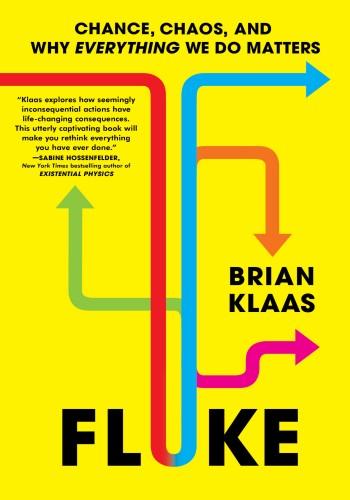
Fluke: Chance, Chaos, and Why Everything We Do Matters
by
Brian Klaas
Published 23 Jan 2024
Their behavior varied in profound ways. One individual died after 437 days. Another survived for more than twice that life span. Nothing genetic or environmental could explain these vast discrepancies. So, what accounts for them? Nobody knows. It may have something to do with the growing field of epigenetics, but scientists are baffled. Random fluctuations can spread out across time and space to cause unexpected opportunities or calamitous disaster—or both.II Millions of lives in Madagascar were changed by a mutation in one faraway, long-dead German crayfish. There was no grand plan behind it. It was just an accident, produced by a random genetic mistake—and the effects of that accident were amplified through our intertwined existence.
…
See also contingency–convergence debate Cooper, Tim, 54–55 Cournot contingency, 57 COVID-19 pandemic, 101–2, 190, 261 crabs, evolution of, 50 Cratylus, 28 criminal punishment, justifications for, 240–41 criticality, 98, 102, 124 financial systems and, 103 self-organized, 96, 97, 104, 214, 216 critical slowing down, 95 Cuban Missile Crisis, 167 DAGs (directed acyclic graphs), 88n Damasio, Antonio, 135–36 Daniels, Jeff, 235 Dartnell, Lewis, 146, 147 Darwin, Charles, 11, 16, 39, 48–49, 52, 177 convergent view of science and, 174 “survival of the fittest” phrase and, 57 voyage on HMS Beagle, 174–75 data analytics, 100, 101, 124, 200, 217, 259 Dawkins, Richard, 8, 46, 58 decisions/decision-making, 6, 108 amygdala and, 239 decision theory, 126–27, 138 effects of long-forgotten decisions, 29–30 effects on future humans, 244–45 experience of time and, 185 path dependency and, 149 probabilities and, 114 rational-choice theory and, 131–33 ripples across time and space produced by, 30 Demers, Elizabeth, 188 demography, 108 Dennett, Daniel C., 71, 232 Descartes, René, 230 determinism, 221–26, 242 as dirty word in social science, 242, 243 hard determinism, 237 ideological co-optation of, 242 quantum mechanics and, 229 theological, 227 Diamond, Jared, 151–53 Diana, Princess, death of, 76 dice, roll of, 42n, 106, 115, 116, 118 dictatorships, durability and fragility of, 206–7 dinosaurs, 14, 69, 156, 223 “divine intervention,” 220, 221 DNA, 45, 49, 53, 57, 88 sequencing of, 51, 55 transcription of, 232 dodo, founder effect and, 60 dog breeds, development of, 192 double-slit experiment, 228 dualism, 230 duck-billed platypus, 49–50 Duyser, Diane, 76n Earth, full-planet view from space, 29 earthquakes, 77, 102, 241 Earth Transformed, The (Frankopan), 154n E. coli bacteria, 52, 54, 55, 57, 62 ecology, 88 economics, 49, 88, 196, 199 economic forecasts, 112–14 geography ignored by, 148 mathematics and, 213 predictions about economic growth and recessions, 112, 113, 195, 211 viral narratives and, 138–39 ecosystems, 94, 95–96 Einstein, Albert, 111, 143, 172, 213, 241, 263 elephant seals, genetic bottleneck of, 58–59 Elwin, Whitewell, 176 emergence, 91, 216 End of Days, The (Gorenberg), 129 Enlightenment, 33, 72 Ennos, Roland, 33, 146 Epicurus, 226, 228 epigenetics, 42 eudaemonia (flourishing), 254, 255 eugenics, 177, 242 Everett, Hugh, 111 “everything happens for a reason,” 11, 16, 17, 37, 104 cognitive mistakes and, 42 as coping mechanism, 44 rewinding of time and, 220, 221 evolution, 13, 256–57 Darwin and Wallace as co-authors of evolutionary theory, 174, 176 evolutionary traps (broken shortcuts), 78–79 of mitochondrion, 39–40 natural selection randomness in, 58 selection pressures, 48.

A Devil's Chaplain: Selected Writings
by
Richard Dawkins
Published 1 Jan 2004
Francis Crick65 showed an awareness of the possibility that general a priori arguments might be given, when he wrote, As far as I know, no one has given general theoretical reasons why such a mechanism must be less efficient than natural selection. I have since offered two such reasons, following an argument that the inheritance of acquired characteristics is in principle incompatible with embryology as we know it.66 First, acquired improvements could in principle be inherited only if embryology were preformationistic rather than epigenetic. Preformationistic embryology is blueprint embryology. The alternative is recipe, or computer-program, embryology. The important point about blueprint embryology is that it is reversible. If you have a house, you can, by following simple rules, reconstruct its blueprint. But if you have a cake, there is no set of simple rules that enables you to reconstruct its recipe.
…
G., (i) Ecological community Of computer viruses, (i) Of genes, (i), (ii) Ecosystems, (i) Education, (i), (ii), (iii) Edwards, A. W. F., (i) Einstein, Albert, (i), (ii), (iii), (iv), (v), (vi), (vii) Eldredge, Niles, (i), (ii) Embryology (see also Development) ‘Computing’ a developing embryo, (i) Preformationistic vs. epigenetic, (i) Entropy, (i), (ii) Environment Ancestral, (i) Interaction of genes with, (i), (ii), (iii) Epidemiology In spread of scientific ideas, (i) Informational, (i) Of childhood crazes, (i), (ii) Of convictions, (i), (ii) Epigenesis, (i) Erectile organ, Mathematical significance of, (i) Essentialism, (i) Ethics Conjoined twins, (i) Human-centred view of, (i) Of abortion, (i), (ii) Of chimp/human hybrid, (i), (ii) Of human cloning, (i) Of stem cell research, (i), (ii) Reconstructing Lucy, (i) Science does not define, (i) Eucaryote, (i), (ii) Eugenics, (i) Evangelists, Television, (i) Evans, Christopher, (i) Ever Since Darwin, (i), (ii), (iii), (iv) Evolution As art of the developable, (i) As central to education, (i) As progressive, (i), (ii) Does not violate Second Law, (i) Gradualistic, (i), (ii) Myth of progress to man, (i), (ii), (iii) Nonadaptive, 95 (see also Neutral theory) Nonrandom nature of Darwinian, (i) Of computer viruses, (i) Of evolvability, (i), (ii) Of vertebrate eye, (i), (ii) Positive feedback in, (i) Role of genes in, (i) Evolutionarily stable state, (i) Exam Pressure, Destructive effects of, (i), (ii) Syllabuses, Limited nature of, (i) Expression of the Emotions, The, (i), (ii) Extended phenotype, (i), (ii) Extinction, (i), (ii), (iii), (iv), (v), (vi), (vii), (viii) Fabre, Jean Henri, (i) Faith As symptom of infection by mind virus, (i) Exercised by belief in impossible things, (i) Intolerance to apostates, heretics, and rival faiths, (i) Respect for, (i), (ii), (iii) Spread of, compared to scientific ideas, (i) Suicide in the service of, (i), (ii) Feedback, Positive, (i), (ii) Female choice, see Sexual selection Feynman, Richard, (i) Fidelity in replication, see Gene, Meme Fisher, Kenneth, (i) Fisher, R.
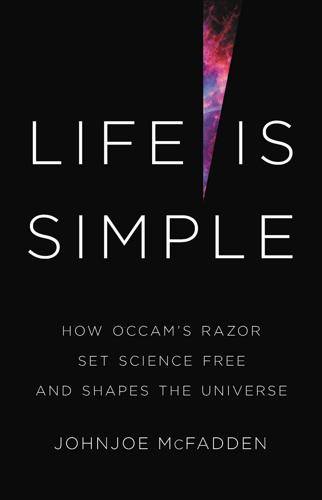
Life Is Simple: How Occam's Razor Set Science Free and Shapes the Universe
by
Johnjoe McFadden
Published 27 Sep 2021
For example, Lamarckian inheritance was supposed to have been disproved by observational and experimental evidence against inheritance of acquired features, such as the muscular hammer arms of blacksmiths. Yet evidence for limited inheritance of several acquired characteristics, such as dietary preference, emerged in the 1990s to revive a form of Lamarckian inheritance known today as epigenetics.14 In the twentieth century Einstein invented a factor called the cosmological constant to make his theory of general relativity consistent with a static universe. He abandoned it when the universe was seen to be expanding. Yet in the twenty-first century, the cosmological constant has been revived to account for the dark energy of space itself.
…
Kaye, S. M., and Martin, R. M., On Ockham (2001). 11. Kuhn, The Structure of Scientific Revolutions. 12. Rorty, R., Contingency, Irony, and Solidarity (Cambridge University Press, 1989). 13. Blaedel, N., Harmony and Unity: The Life of Niels Bohr (Science Tech. Publ., 1988). 14. Carey, N., The Epigenetics Revolution: How Modern Biology is Rewriting Our Understanding of Genetics, Disease, and Inheritance (Columbia University Press, 2012). 15. Chater, N., and Vitányi, P., ‘Simplicity: A Unifying Principle in Cognitive Science?’, Trends in Cognitive Sciences, 7, 19–22 (2003). 16. Goodman, N., ‘The Test of Simplicity’, Science, 128, 1064–9 (1958).
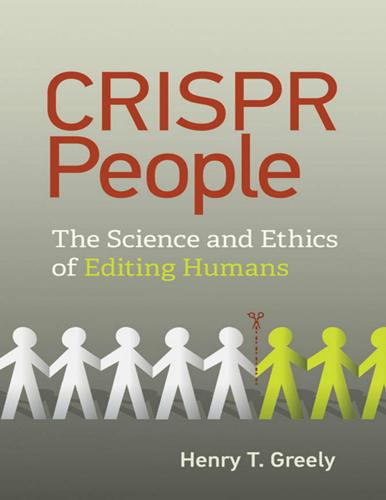
CRISPR People: The Science and Ethics of Editing Humans
by
Henry T. Greely
Published 22 Jan 2021
If the sequence of one of your homeobox genes (a very basic type of gene that produces proteins that help determine the structure of multicellular animals) is the same as its sequence in (most) fruit flies, is it part of “the human germline genome”? Is it part of “The Fruit Fly Germline Genome”? Is it part of both? That’s before even thinking about the possibility of inherited epigenetic changes. This is a trendy, but very uncertain, idea that sometimes changes not in DNA sequence but in how it is expressed get passed from parent to child. There is evidence for this in a few cases in laboratory mice; there is a (very) little suggestive evidence for it in humans. If these exist (I am currently agnostic but leaning skeptical), they would add further variation and complexity to “the human germline genome.”17 Having said that, there will be parts of the 23,000-dimensional ball that are found in (almost) all humans and not found (much) in nonhumans.
…
Deutscher Ethikrat, Intervening in the Human Germline: Executive Summary and Recommendations, 4. 15. Deutscher Ethikrat, 20–21. 16. UNESCO, “Universal Declaration on the Human Genome and Human Rights,” 1997, 3. 17. Tim Lewens, “Blurring the Germline: Genome Editing and Transgenerational Epigenetic Inheritance,” Bioethics 34, no. 1 (2019), https://doi.org/10.1111/bioe.12606. 18. Mareike C. Janiak, “Of Starch and Spit,” eLife 8 (2019): e47523, https://doi.org/10.7554/eLife.47523. 19. And, in fact, there has been such a substantial increase, timed for about when substantial numbers of children with type 1 diabetes first saved by insulin had their own children old enough to develop the condition.
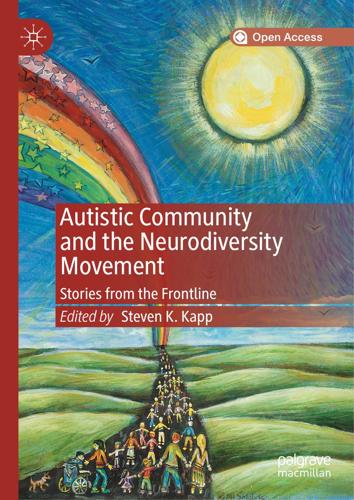
Autistic Community and the Neurodiversity Movement: Stories From the Frontline
by
Steven K. Kapp
Published 19 Nov 2019
First, behavioral traits which identify autism are exacerbated by the social context and they change over a child’s development, so do not imply a fixed state. Some children classified as having autism outgrow their diagnosis, so autism is not necessarily a stable neurological difference throughout the lifecourse [34]. Second, genetic association studies show there is a multi-factorial, complex, genetic predisposition to autism which interacts with epigenetic factors. Third, the environment may alter the development of a person’s neurology throughout the lifecourse, whatever their genetics. Fourth, neurology is not fixed but constantly adapted through learning. Dupré argues a better model would be probabilistic causality, where nothing “causes” something else but instead increases the chances of it happening.
…
Yo 119, 281, 282–283 Durbin-Westby, Paula 174 dyslexia 257–258, 259, 261, 263, 265 dyspraxia 258, 259, 263, 293 Dyspraxia Foundation 214 E electric shock “treatment” 196–197, 205, 307, 311 emancipatory research 135 Emergence: Labeled Autistic 24–25, 27–30 empathy 43, 45, 148, 174, 294 empowerment 11, 97, 130, 148, 261, 311 and AASPIRE, 134, 136, 137, 140, 141 “entrapment” paradigm 28, 35 environmental causation, of autism 3, 6, 8, 96 environmental toxins, as risk factors for autism 6 “epidemic, autism” 92, 94, 223, 238 epigenetics 297 ethics 97, 217 eugenics 7, 13, 125, 128, 131, 278 “Everybody Gets Paid” principle” 247–248 exclusion/exclusivity 12, 41–48, 93, 117, 125, 216, 293, 313 Expanding the Promise for Individuals with Autism Act 237 Exploring Diagnosis: Autism and the Neurodiversity Movement vii–ix F face blindness 45 Facebook 258–259, 271 Fair Housing Campaign 65–67 FDA (Food and Drug administration) 73, 203, 205 female genital mutilation (FGM) 290 Fidonet 41, 44 “For The Many Not The Few” 272 “foundation documents” 217 Frith, Uta 215 Fund for Community Reparations for Autistic People of Color’s Interdependence, Survival, and Empowerment 251 fundraising 5, 115, 224, 229, 243–244 G Geier, Mark and David 95, 97 gender/gender identity 5, 112, 134, 151, 152, 243, 292, 307 and DSM-5, 168, 171, 174, 187 Generation Rescue ix genetics 93, 127, 225, 228, 296, 297 Gernsbacher, Morton Ann 93 “Getting the Truth Out” website 12, 83, 85, 307 “Getting the Word Out” 12, 83 Giggleswick School 113 Gilfoy, Hilary 278, 280 Grandin, Temple 23, 24–29, 30, 34, 306 Grant, Kathy Xenia 30, 214 Index GRASP (Global and Regional Asperger Syndrome Partnership) 136, 170, 181 Greenburg, Carol 157, 159, 289 Gross, Zoe 12, 174 group think 300 H Haley, Boyd 93, 96 Hatch, Senator Orrin 235 health and safety 55, 61 Hiari 294, 300 “high-functioning” autism 184, 294, 308 Hippocratic Oath 59 human rights 1, 4, 59, 82, 134, 164, 311 and electric shock “treatment”, 202, 203 I IACC (Interagency Autism Coordinating Committee) 95, 139, 140, 175, 230 ideasthesia 147 identity politics 288–290, 291 I Am Autism 131, 226, 227 impairments 7, 114, 118, 163, 261, 293, 310, 312 and origins of neurodiversity, 28, 32, 35 inclusion/inclusivity viii, 2, 4, 7, 13, 306, 308–311, 313 and AASPIRE, 137 and Autism/Neurodiversity Manifesto, 255 and Autistic Genocide Clock, 131 325 Autistic Women and Non-Binary Network (AWN), 150 and Autscape, 109, 114, 115, 117 and Independent Living on the Autistic spectrum, 46, 47 and neurodiversity movement, 292, 293, 295 independent living 85, 224 Independent Living on the Autistic Spectrum (InLv) 41–48, 110 individual model, of disability.
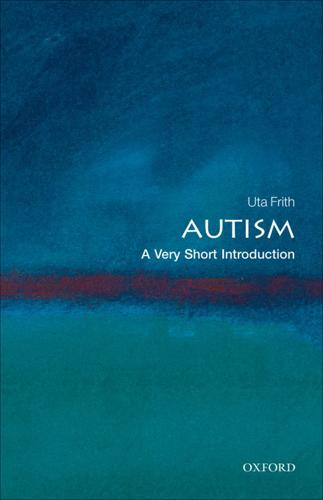
Autism: A Very Short Introduction
by
Uta Frith
Published 22 Oct 2008
Journal of Child Psychology and Psychiatry, 48(1):105–12. Minshew, N.J. and Williams D.L. (2007) The new neurobiology of autism: cortex, connectivity, and neuronal organization. Archives of Neurology, 64(7): 945–50. Persico, A. M., and Bourgeron, T. (2006) Searching for ways out of the autism maze: genetic, epigenetic and environmental clues. Trends in Neuroscience, 29(7): 349–58. Rutter, M. (2006) Genes and Behavior: Nature-Nurture Interplay Explained. Oxford: Blackwell. Yeo, R. A., Gangestad, S. W., and Thoma, R. J. (2007) Developmental instability and individual variation in brain development: implications for the origin of neurodevelopmental disorders.
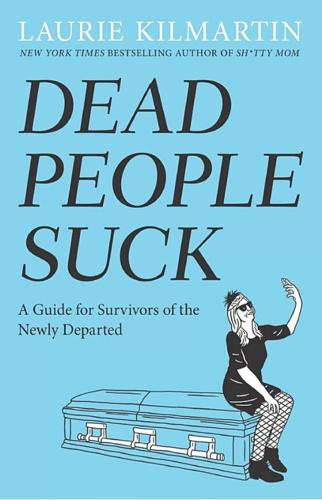
Dead People Suck: A Guide for Survivors of the Newly Departed
by
Laurie Kilmartin
Published 13 Feb 2018
(When his brother Jack was dying and unconscious in the hospital, Dad sat at his bedside and sang the cowboy songs they learned as kids in Topeka.) Dad would be shocked to hear how much I know about him. I’ve spent many nights online, furtively cruising genealogy porn sites like Ancestry.com, FamilySearch.org, and FindAGrave.com. He is mostly from County Cork. New research in epigenetics suggests that trauma stays in a family’s DNA for 100 years. If true, somewhere in my dad lay the genetic crumbs of famine. No wonder our family does eating disorders, not alcoholism. REMEMBER: The Silent Generation is the last generation to have 90 percent of their lives go unrecorded. Grab what you can now.
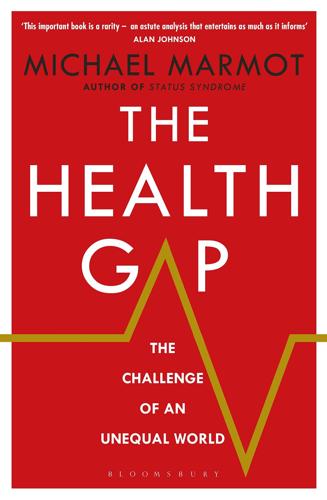
The Health Gap: The Challenge of an Unequal World
by
Michael Marmot
Published 9 Sep 2015
One of the best worked out comes from the studies of Michael Meaney at McGill University in Montreal. He has been peeling back the layers of incomprehension to reveal a remarkably coherent picture, not only of how the environment influences the brain and stress pathways, but how it changes the function of genes – epigenetics.23 Mother rats nurture their pups in not so very different ways from those enjoyed by human infants. The rats do it by licking and grooming their offspring. One way to increase mother rat’s attentiveness is to handle the rat and remove the pup from Mum for a brief period. On her pup’s return, mother engages in extra licking and grooming.
…
A., here Colombia, here, here Commission for Architecture and the Built Environment, here Commission on Global Governance for Health, here, here Commission on Macroeconomics and Health (CMH), here Commission on Social Determinants of Health (CSDH), here, here, here, here, here, here, here, here, here, here, here, here, here, here see also Closing the Gap; European Review of Social Determinants and the Health Divide; Fair Society, Healthy Lives communism, and health outcomes, here congestion charging, here contraception, here, here cooking stoves, here Copenhagen, here cortisol, here, here Costa Rica, here, here life expectancy, here, here, here, here, here, here pre-school education, here cotton farmers, here, here Coubertin, Baron Pierre de, here crèches, here crime, here, here, here, here, here, here, here, here, here, here, here, here, here, here fear of, here, here, here see also delinquency; gangs Cuba, here life expectancy, here, here, here, here, here, here pre-school education, here, here cultural sensitivity, here Czech Republic, here, here, here Daily Mail, here Daily Telegraph, here Deaton, Angus, here debt repayments, here, here delinquency, here, here, here, here dementia, here democracy, and freedom, here Democratic Republic of Congo, here Denmark, here, here, here social mobility, here, here depression, here, here, here deprivation, European measure of, here, here development states, here diabetes, here, here, here, here and adverse childhood experience, here, here in Australian aboriginals, here Dickens, Charles, here, here, here, here, here, here diet and disease, here Mediterranean, here ‘difference principle’, here disability, and life expectancy, here disempowerment, here, here, here, here Dominican Republic, here, here, here Dostoevsky, Fyodor, here Drèze, Jean, here, here, here, here drug regimens, adherence to, here drug use, here, here, here, here, here, here and adverse childhood experience, here Duflo, Esther, here, here, here Dylan, Bob, here Easterly, William, here Ebola, here economic growth, here, here economic inequality, see income inequalities Economist, here, here, here education and cash-transfer schemes, here and fertility rates, here Finnish system,, here, here, here, here gender equity in, here and intimate partner violence, here and life expectancy, here, here and material deprivation, here and measures of ill-health, here pre-school, here, here, here, here social gradient in, here university education, here, here, here, here, here, here, here women and secondary education, here women and tertiary education, here Egypt, obesity levels, here, here, here, here Eisenhower, Dwight D., here employment conditions, here see also unemployment empowerment, here, here, here, here, here, here, here, here, here, here, here, here, here, here, here, here and education, here and health behaviours, here political, here and social participation, here England, see United Kingdom English Longitudinal Study of Ageing (ELSA), here, here English Review, see Fair Society, Healthy Lives epigenetics, here equality of opportunity, here, here, here Estonia, here, here Ethiopia, here, here European Central Bank, here, here, here European Review of Social Determinants and the Health Divide, here, here, here, here, here, here Evans, Robert, here Evelyn, John, here Everington, Sam, here exercise, see physical activity Experience Corps, here Fair Society, Healthy Lives, here, here, here, here, here, here, here, here, here, here fairness (definition), here fecklessness, here, here, here, here fertility rates, here Financial Times, here Finland, here, here, here, here education system, here, here, here, here gender equity in education, here fire fighters, here, here, here Fitzgerald, F.

In Our Own Image: Savior or Destroyer? The History and Future of Artificial Intelligence
by
George Zarkadakis
Published 7 Mar 2016
There is a false logic at play stating that since quantum physics is a mystery and consciousness is a mystery, consciousness must have something to do with quantum physics. The relationship between the subjective and the objective in science is a lot more nuanced than that, as it will be examined later in the book. 13Recent developments in epigenetics show that the genome, i.e. the way the base pairs are sequenced along the DNA molecule, is one of many factors that define hereditary characteristics. The environment seems to play a more important, and direct, role than previously thought. 14Sets of base-pairs sequenced in a certain order that can pass hereditary characteristics (e.g. the production of a certain protein that builds an organ in an organism) are called ‘genes’.
…
M. (1936), ‘On Computable Numbers, with an Application to the Entscheidungsproblem’, Proceedings of the London Mathematical Society, 2 (1937), 42, pp. 230–65. 9To be more accurate, Gödel encoded metamathematical statements within ordinary arithmetic. 10The incomplete manuscript and notes based on a series of lectures given by von Neumann at the University of Illinois in 1949 was assembled and edited by Arthur Burks and published ten years after von Neumann’s death. 11New findings in epigenetics show that the mechanism of passing hereditary features to future generations is more complex than previously thought, and probably involves other systems in the cell beyond DNA replication. 12The human mind may be beyond logical coding (as Gödel has indirectly showed) but it is not beyond computation.
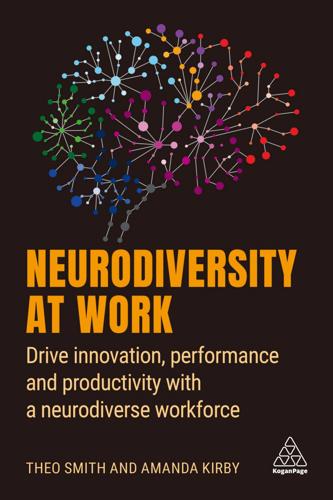
Neurodiversity at Work: Drive Innovation, Performance and Productivity With a Neurodiverse Workforce
by
Amanda Kirby
and
Theo Smith
Published 2 Aug 2021
Journal of Childhood and Development Disorders, https://childhood-developmental-disorders.imedpub.com/why-do-we-find-it-so-hard-to-calculate-the-burden-of-neurodevelopmental-disorders.pdf (archived at https://perma.cc/N2U9-VTRL) 3 Kanner, L (1949) Problems of nosology and psychodynamics in early childhood autism, American Journal of Orthopsychiatry, https://onlinelibrary.wiley.com/doi/abs/10.1111/j.1939-0025.1949.tb05441.x (archived at https://perma.cc/JNJ9-LR44) 4 Archer, T, Oscar-Berman, M and Blum, K (2011) Epigenetics in developmental disorder: ADHD and endophenotypes, Journal of Genetic Syndromes & Gene Therapy, https://www.longdom.org/open-access/epigenetics-in-developmental-disorder-adhd-and-endophenotypes-2157-7412.1000104.pdf (archived at https://perma.cc/2X68-H4J7) 5 Doyle, N (2021) Is Everyone a Little Autistic? Forbes, 16 January, https://www.forbes.com/sites/drnancydoyle/2021/01/16/is-everyone-a-little-autistic/?

Surviving AI: The Promise and Peril of Artificial Intelligence
by
Calum Chace
Published 28 Jul 2015
The other revolution is the ability to anticipate and forestall medical problems by analysing our genomes. The Human Genome Project was completed back in 2003, but it soon turned out that although sequencing our DNA was an essential first step to enabling the practical improvements to healthcare we hoped for, it was not enough. We needed to understand epigenetics too: the changes in our cells that are caused by factors above and beyond our DNA sequence. The application of AI algorithms to the data which scientists are generating about gene expression are now bringing those improvements within reach. There is almost no aspect of life today which is not being improved by artificial intelligence.

The Fourth Industrial Revolution
by
Klaus Schwab
Published 11 Jan 2016
They will, however, require the vital support of a fourth form of intelligence – the physical one, which involves supporting and nourishing personal health and well-being. This is critical because as the pace of change accelerates, as complexity increases, and as the number of players involved in our decision-making processes increases, the need to keep fit and remain calm under pressure becomes all the more essential. Epigenetics, a field of biology that has flourished in recent years, is the process through which the environment modifies the expression of our genes. It shows incontrovertibly the critical importance of sleep, nutrition and exercise in our lives. Regular exercise, for example, has a positive impact on the way we think and feel.
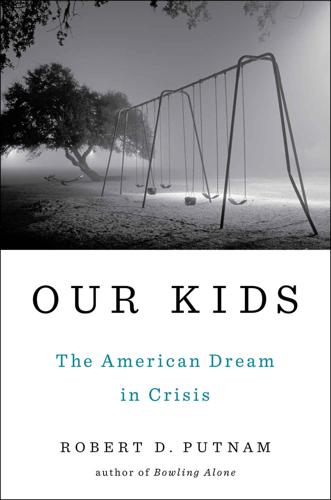
Our Kids: The American Dream in Crisis
by
Robert D. Putnam
Published 10 Mar 2015
Weaver, Nadia Cervoni, Frances A. Champagne, Ana C. D’Alessio, Shakti Sharma, Jonathan R. Seckl, Sergiy Dymov, Moshe Szyf, and Michael J. Meaney, “Epigenetic Programming by Maternal Behavior,” Nature Neuroscience 7 (August 2004): 847–54. In fact, the Meaney research helped to call into question the hoary distinction between nature and nurture, since licking and grooming in one generation appears to be transmitted genetically to the next, but the epigenetic dimensions of the research are less immediately relevant to our interests here. 34. Philip A. Fisher, Megan R. Gunnar, Mary Dozier, Jacqueline Bruce, and Katherine C.
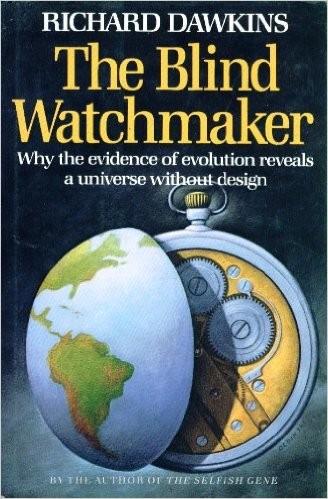
The Blind Watchmaker; Why the Evidence of Evolution Reveals a Universe Without Design
by
Richard Dawkins
Published 1 Jan 1986
Embryonic development is a process, in which all working genes participate; a process which, if correctly followed in the forward direction, will result in an adult body; but it is a process that is inherently, by its very nature, irreversible. The inheritance of acquired characteristics not only doesn’t happen: it couldn’t happen in any life-form whose embryonic development is epigenetic rather than preformationistic. Any biologist that advocates Lamarckism is, though he may be shocked to hear it, implicitly advocating an atomistic, deterministic, reductionistic embryology. I didn’t want to burden the general reader with that little string of pretentious jargon words: I just couldn’t resist the irony, for the biologists who come closest to sympathizing with Lamarckism today also happen to be particularly fond of using those same cant words in criticizing others.
…
It is a general weakness that applies to any kind of adaptive complexity, and I think it must apply to life anywhere in the universe, no matter how alien and strange the details of that life may be. Our refutation of Lamarckism, then, is a bit devastating. First, its key assumption, that of the inheritance of acquired characteristics, seems to be false in all life-forms that we have studied. Second, it not only is false but it has to be false in any life-form that relies upon an epigenetic (‘recipe’) rather than a preformationistic (‘blueprint’) kind of embryology, and this includes all life-forms that we have studied. Third, even if the assumptions of the Lamarckian theory were true, the theory is in principle, for two quite separate reasons, incapable of explaining the evolution of serious adaptive complexity, not just on this earth but anywhere in the universe.
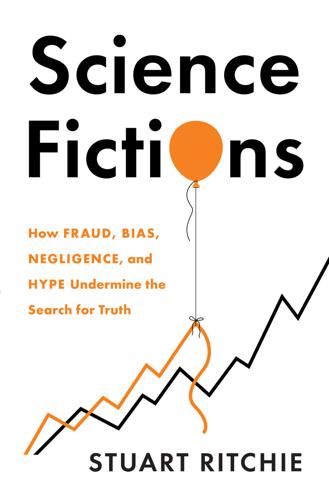
Science Fictions: How Fraud, Bias, Negligence, and Hype Undermine the Search for Truth
by
Stuart Ritchie
Published 20 Jul 2020
Typically, a few publications with easy-to-grasp results in big-name journals get picked up by the media, public interest intensifies, and scientists in the field develop a kind of recklessness, feeding the hype cycle with careless and overblown statements. Then big claims fail to replicate in later experiments, the furore dies away and normal science resumes. Ultra-hyped fields include stem cells, genetics, epigenetics, machine learning and brain imaging; for the past few years, a strong contender for the ‘most hyped’ award has been research on the microbiome – the countless millions of microbes that inhabit our bodies.71 Thanks to the hype, the microbiome has been targeted by a plethora of products and treatments.
…
ABC News abortion Abu Ghraib prison abuse (2003) accidental discoveries Acta Crystallographica Section E acupuncture Afghan hounds Agence France-Presse AIDS (acquired immune deficiency syndrome) Alchemist, The (Bega) Alexander, Benita Alexander, Scott algorithms allergies Alzheimer, Aloysius Alzheimer’s Disease Amazon American Journal of Potato Research Amgen amygdala amyloid cascade hypothesis anaesthesia awareness Fujii affair (2012) outcome switching Anaesthesia & Analgesia animal studies antidepressants antipsychotics archaeology Arnold, Frances arsenic artificial tracheas asthma austerity Australia Austria autism aviation Babbage, Charles Bacon, Francis bacteria Bargh, John Bayer Bayes, Thomas Bayesian statistics BDNF gene Before You Know It (Bargh) Bega, Cornelis Begley, Sharon Belgium Bell Labs Bem, Daryl benzodiazepines bias blinding and conflict of interest De Vries’ study (2018) funding and groupthink and meaning well bias Morton’s skull studies p-hacking politics and publication bias randomisation and sexism and Bik, Elisabeth Bill & Melinda Gates Foundation Biomaterials biology amyloid cascade hypothesis Bik’s fake images study (2016) Boldt affair (2010) cell lines China, misconduct in Hwang affair (2005–6) Macchiarini affair (2015–16) meta-scientific research microbiome studies Morton’s skull studies Obokata affair (2014) outcome switching preprints publication bias replication crisis Reuben affair (2009) spin and statistical power and Summerlin affair (1974) Wakefield affair (1998–2010) biomedical papers bird flu bispectral index monitor black holes Black Lives Matter blinding blotting BMJ, The Boldt, Joachim books Borges, Jorge Luis Boulez, Pierre Boyle, Robert brain imaging Brass Eye vii British Medical Journal Brock, Jon bronchoscopy Broockman, David Brown, Nick Bush, George Walker business studies BuzzFeed News California Walnut Commission California wildfires (2017) Canada cancer cell lines collaborative projects faecal transplants food and publication bias and replication crisis and sleep and spin and candidate genes carbon-based transistors Cardiff University cardiovascular disease Carlisle, John Carlsmith, James Carney, Dana cash-for-publication schemes cataracts Cell cell lines Cell Transplantation Center for Open Science CERN (Conseil Européen pour la Recherche Nucléaire) chi-squared tests childbirth China cash-for-publication schemes cell line mix-ups in Great Famine (1959–1961) misconduct cases in randomisation fraud in chrysalis effect Churchill, Winston churnalism Cifu, Adam citations clickbait climate change cloning Clostridium difficile cochlear implants Cochrane Collaboration coercive citation coffee cognitive dissonance cognitive psychology cognitive tests coin flipping Colbert Report, The Cold War collaborative projects colonic irrigation communality COMPare Trials COMT gene confidence interval conflict of interest Conservative Party conspicuous consumption Cooperative Campaign Analysis Project (CCAP) ‘Coping with Chaos’ (Stapel) Cornell University coronavirus (COVID-19) Corps of Engineers correlation versus causation corticosteroids Cotton, Charles Caleb creationism Crowe, Russell Csiszar, Alex Cuddy, Amy CV (curriculum vitae) cyber-bullying cystic fibrosis Daily Mail Daily Telegraph Darwin Memorial, The’ (Huxley) Darwin, Charles Das, Dipak datasets fraudulent Observational publication bias Davies, Phil Dawkins, Richard De Niro, Robert De Vries, Ymkje Anna debt-to-GDP ratio Deer, Brian democratic peace theory Denmark Department of Agriculture, US depression desk rejections Deutsche Bank disabilities discontinuous mind disinterestedness DNA (deoxyribonucleic acid) domestication syndrome doveryai, no proveryai Duarte, José Duke University duloxetine Dutch Golden Age Dutch Organisation for Scientific Research Dweck, Carol economics austerity preprints statistical power and effect size Einstein, Albert Elmo Elsevier engineering epigenetics euthanasia evolutionary biology exaggeration exercise Experiment, The exploratory analyses extrasensory perception faecal transplants false-positive errors Fanelli, Daniele Festinger, Leon file-drawer problem financial crisis (2007–8) Fine, Cordelia Fisher, Ronald 5 sigma evidence 5-HT2a gene 5-HTTLPR gene fixed mindset Food and Drug Administration (FDA) Food Frequency Questionnaires food psychology Formosus, Pope foxes France Francis, Pope Franco, Annie fraud images investigation of motives for numbers Open Science and peer review randomisation Freedom of Information Acts French, Chris Fryer, Roland Fujii, Yoshitaka funding bias and fraud and hype and long-term funding perverse incentive and replication crisis and statistical power and taxpayer money funnel plots Future of Science, The (Nielsen) gay marriage Gelman, Andrew genetically modified crops genetics autocorrect errors candidate genes collaborative projects gene therapy genome-wide association studies (GWASs) hype in salami-slicing in Geneva, Switzerland geoscience Germany Getty Center GFAJ-1 Giner-Sorolla, Roger Glasgow Effect Goldacre, Ben Goldsmiths, University of London Golgi Apparatus good bacteria Good Morning America good scientific citizenship Goodhart’s Law Goodstein, David Google Scholar Górecki, Henryk Gould, Stephen Jay Gran Sasso, Italy grants, see funding Granularity-Related Inconsistency of Means (GRIM) grapes Great Recession (2007–9) Great Red Spot of Jupiter Green, Donald Gross Domestic Product (GDP) Gross, Charles ground-breaking results groupthink ‘Growth in a Time of Debt’ (Reinhart and Rogoff) growth mindset Guzey, Alexey gynaecology h-index H5N1 Haldane, John Burdon Sanderson Hankins, Matthew HARKing Harris, Sidney Harvard University headache pills heart attacks heart disease Heathers, James height Heilongjiang University Heino, Matti Henry IV (Shakespeare) Higgs Boson Hirsch, Jorge HIV (human immunodeficiency viruses) homosexuality Hong Kong Hooke, Robert Hossenfelder, Sabine Houston, Texas Hume, David Huxley, Thomas Henry Hwang, Woo-Suk hydroxyethyl starch hype arsenic life affair (2010) books correlation versus causation cross-species leap language and microbiome studies news stories nutrition and press releases spin unwarranted advice hypotheses Ig Nobel Prize images, fraudulent impact factor India insomnia International Journal of Advanced Computer Technology Ioannidis, John IQ tests Iraq War (2003–11) Italy Japan John, Elton Journal of Cognitive Education and Psychology Journal of Environmental Quality Journal of Negative Results in Biomedicine Journal of Personality and Social Psychology journals conflict of interest disclosure fraud and hype and impact factor language in mega-journals negligence and Open Science and peer review, see peer review predatory journals preprints publication bias rent-seeking replication studies retraction salami slicing subscription fees Jupiter Kahneman, Daniel Kalla, Joshua Karolinska Institute Krasnodar, Russia Krugman, Paul Lacon, or Many Things in Few Words (Cotton) LaCour, Michael Lancet Fine’s ‘feminist science’ article (2018) Macchiarini affair (2015–16) Wakefield affair (1998–2010) language Large Hadron Collider Le Texier, Thibault Lewis, Jason Lexington Herald-Leader Leyser, Ottoline Lilienfeld, Scott Loken, Eric Lost in Math (Hossenfelder) low-fat diet low-powered studies Lumley, Thomas Lysenko, Trofim Macbeth (Shakespeare) Macbeth effect Macchiarini, Paolo MacDonald, Norman machine learning Macleod, Malcolm Macroeconomics major depressive disorder Malaysia Mao Zedong MARCH1 Marcus, Adam marine biology Markowetz, Florian Matthew Effect Maxims and Moral Reflections (MacDonald) McCartney, Gerry McCloskey, Deirdre McElreath, Richard meaning well bias Measles, Mumps & Rubella (MMR) measurement errors Medawar, Peter medical research amyloid cascade hypothesis Boldt affair (2010) cell lines China, misconduct in collaborative projects Fujii affair (2012) Hwang affair (2005–6) Macchiarini affair (2015–16) meta-scientific research Obokata affair (2014) outcome switching pharmaceutical companies preprints pre-registration publication bias replication crisis Reuben affair (2009) spin and statistical power and Summerlin affair (1974) Wakefield affair (1998–2010) medical reversal Medical Science Monitor Mediterranean Diet Merton, Robert Mertonian Norms communality disinterestedness organised scepticism universalism meta-science Boldt affair (2010) chrysalis effect De Vries’ study (2018) Fanelli’s study (2010) Ioannidis’ article (2005) Macleod’s studies mindset studies (2018) saturated fats studies spin and stereotype threat studies mice microbiome Microsoft Excel Milgram, Stanley Mill, John Stuart Mindset (Dweck) mindset concept Mismeasure of Man, The (Gould) Modi, Narendra money priming Mono Lake, California Moon, Hyung-In Morton, Samuel Motyl, Matt multiverse analysis nanotechnology National Academy of Sciences National Aeronautics and Space Administration (NASA) National Institutes of Health National Science Foundation Nature cash-for-publication and cell line editorial (1981) impact factor language in Obokata affair (2014) Open Access and open letter on statistical significance (2019) replication research Schön affair (2002) Stapel affair (2011) Nature Neuroscience Nature Reviews Cancer NBC negligence cell line mix-ups numerical errors statistical power typos Netflix Netherlands replication studies in Stapel’s racism studies statcheck research neuroscience amyloid cascade hypothesis collaborative projects Macleod’s animal research studies replication crisis sexism and statistical significance and Walker’s sleep studies neutrinos New England Journal of Medicine New York Times New Zealand news media Newton, Isaac Nielsen, Michael Nimoy, Leonard No Country for Old Men Nobel Prize northern blots Nosek, Brian Novella, Steven novelty Novum Organum (Bacon) Nuijten, Michèle nullius in verba, numerical errors nutrition Obama, Barack obesity Obokata, Haruko observational datasets obstetrics ocean acidification oesophagus ‘Of Essay-Writing’ (Hume) Office for Research Integrity, US Oldenburg, Henry Open Access Open Science OPERA experiment (2011) Oransky, Ivan Orben, Amy Organic Syntheses organised scepticism Osborne, George outcome-switching overfitting Oxford University p-value/hacking alternatives to Fine and low-powered studies and microbiome studies and nutritional studies and Open Science and outcome-switching perverse incentive and pre-registration and screen time studies and spin and statcheck and papers abstracts citations growth rates h-index introductions method sections results sections salami slicing self-plagiarism university ranks and Parkinson’s disease particle-accelerator experiments peanut allergies peer review coercive citation fraudulent groupthink and LaCour affair (2014–15) Preprints productivity incentives and randomisation and toxoplasma gondii scandal (1961) volunteer Wakefield affair (1998–2010) penicillin Peoria, Illinois Perspectives in Psychological Science perverse incentive cash for publications competition CVs and evolutionary analogy funding impact factor predatory journals salami slicing self-plagiarism Pett, Joel pharmaceutical companies PhDs Philosophical Transactions phlogiston phosphorus Photoshop Physical Review physics placebos plagiarism Plan S Planck, Max plane crashes PLOS ONE pluripotency Poehlman, Eric politics polygenes polyunsaturated fatty acids Popper, Karl populism pornography positive feedback loops positive versus null results, see publication bias post-traumatic stress disorder (PTSD) power posing Prasad, Vinay pre-registration preclinical studies predatory journals preprints Presence (Cuddy) press releases Prevención con Dieta Mediterránea (PREDIMED) priming Princeton University Private Eye probiotics Proceedings of the National Academy of Sciences prosthetic limbs Przybylski, Andrew psychic precognition Psychological Medicine psychology Bargh’s priming study (1996) Bem’s precognition studies books Carney and Cuddy’s power posing studies collaborative projects data sharing study (2006) Dweck’s mindset concept Festinger and Carlsmith’s cognitive dissonance studies Kahneman’s priming studies LaCour’s gay marriage experiment politics and preprints publication bias in Shanks’ priming studies Stanford Prison Experiment Stapel’s racism studies statistical power and Wansink’s food studies publication bias publish or perish Pubpeer Pythagoras’s theorem Qatar quantum entanglement racism Bargh’s priming studies Morton’s skull studies Stapel’s environmental studies randomisation Randy Schekman Reagan, Ronald recommendation algorithms red grapes Redfield, Rosemary Reflections on the Decline of Science in England (Babbage) Reinhart, Carmen Rennie, Drummond rent-seeking replication; replication crisis Bargh’s priming study Bem’s precognition studies biology and Carney and Cuddy’s power posing studies chemistry and economics and engineering and geoscience and journals and Kahneman’s priming studies marine biology and medical research and neuroscience and physics and Schön’s carbon-based transistor Stanford Prison Experiment Stapel’s racism studies Wolfe-Simon’s arsenic life study reproducibility Republican Party research grants research parasites resveratrol retraction Arnold Boldt Fujii LaCour Macchiarini Moon Obokata Reuben Schön Stapel Wakefield Wansink Retraction Watch Reuben, Scott Reuters RIKEN Rogoff, Kenneth romantic priming Royal Society Rundgren, Todd Russia doveryai, no proveryai foxes, domestication of Macchiarini affair (2015–16) plagiarism in salami slicing same-sex marriage sample size sampling errors Sanna, Lawrence Sasai, Yoshiki saturated fats Saturn Saudi Arabia schizophrenia Schoenfeld, Jonathan Schön, Jan Hendrik School Psychology International Schopenhauer, Arthur Science acceptance rate Arnold affair (2020) arsenic life affair (2010) cash-for-publication and Hwang affair (2005) impact factor LaCour affair (2014–15) language in Macbeth effect study (2006) Open Access and pre-registration investigation (2020) replication research Schön affair (2002) Stapel affair (2011) toxoplasma gondii scandal (1961) Science Europe Science Media Centre scientific journals, see journals scientific papers, see papers Scientific World Journal, The Scotland Scottish Socialist Party screen time self-citation self-correction self-plagiarism self-sustaining systems Seoul National University SEPT2 Sesame Street sexism sexual selection Shakespeare, William Shanks, David Shansky, Rebecca Simmons, Joseph Simonsohn, Uri Simpsons, The skin grafts Slate Star Codex Sloan-Kettering Cancer Institute Smaldino, Paul Smeesters, Dirk Smith, Richard Snuppy social media South Korea Southern blot Southern, Edwin Soviet Union space science special relativity specification-curve analysis speed-accuracy trade-off Spies, Jeffrey spin Springer Srivastava, Sanjay Stalin, Joseph Stanford University Dweck’s mindset concept file-drawer project (2014) Prison Experiment (1971) Schön affair (2002) STAP (Stimulus-Triggered Acquisition of Pluripotency) Stapel, Diederik statcheck statistical flukes statistical power statistical significance statistical tests Status Quo stem cells Stephen VI, Pope stereotype threat Sternberg, Robert strokes subscription fees Summerlin, William Sweden Swift, Jonathan Swiss Federal Institute of Technology Sydney Morning Herald Symphony of Sorrowful Songs (Górecki) t-tests Taiwan taps-aff.co.uk tax policies team science TED (Technology, Entertainment, and Design) Texas sharpshooter analogy Thatcher, Margaret theory of special relativity Thinking, Fast and Slow (Kahneman) Thomson Reuters Tilburg University Titan totalitarianism toxoplasma gondii trachea translational research transparency Tribeca Film Festival triplepay system Trump, Donald trust in science ‘trust, but verify’ Tumor Biology Turkey Tuulik, Julia Twitter typos UK Reproducibility Network Ulysses pact United Kingdom austerity cash-for-publication schemes image duplication in multiverse analysis study (2019) National Institute for Health Research pre-registration in Royal Society submarines trust in science university ranks in Wakefield affair (1998–2010) United States Arnold affair (2020) arsenic life affair (2010) austerity Bargh’s priming study (1996) Bem’s precognition studies California wildfires (2017) Carney and Cuddy’s power posing studies Center for Nutrition Policy and Promotion climate science in creationism in Das affair (2012) De Vries’ drug study (2018) Department of Agriculture Dweck’s mindset concept Fryer’s police brutality study (2016) image duplication in Kahneman’s priming studies LaCour affair (2014–15) Morton’s skull studies Office for Research Integrity Poehlman affair (2006) pre-registration in public domain laws Reuben affair (2009) Stanford Prison Experiment Summerlin affair (1974) tenure Walker’s sleep studies Wansink affair (2016) universalism universities cash-for-publication schemes fraud and subscription fees and team science University College London University of British Columbia University of California Berkeley Los Angeles University of Connecticut University of East Anglia University of Edinburgh University of Hertfordshire University of London University of Pennsylvania unsaturated fats unwarranted advice vaccines Vamplew, Peter Vanity Fair Vatican Vaxxed Viagra vibration-of-effects analysis virology Wakefield, Andrew Walker, Matthew Wansink, Brian Washington Post weasel wording Weisberg, Michael Wellcome Trust western blots Westfall, Jake ‘Why Most Published Research Findings Are False’ (Ioannidis) Why We Sleep (Walker) Wiley Wiseman, Richard Wolfe-Simon, Felisa World as Will and Presentation, The (Schopenhauer) World Health Organisation (WHO) Yale University Yarkoni, Tal Yes Men Yezhov, Nikolai Z-tests Ziliak, Stephen Zimbardo, Philip Zola, Émile About the Author Stuart Ritchie is a lecturer in the Social, Genetic and Developmental Psychiatry Centre at King’s College London.
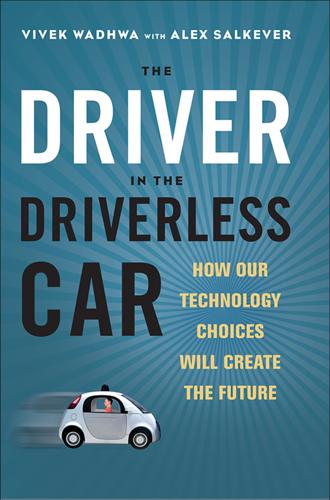
The Driver in the Driverless Car: How Our Technology Choices Will Create the Future
by
Vivek Wadhwa
and
Alex Salkever
Published 2 Apr 2017
With sufficiently large sample sizes, scientists are gaining a clearer understanding of how our genes affect our health, and will soon have insights into how the environment, the food we eat, and the medicines we take affect the complex interplay between our genes and our bodies. The first part of the equation, the core role of our genomes in how we function, is already on the way to becoming comprehensible. There remains a secondary layer of genetics, of perhaps even greater effect: so-called epigenetics. This is the study of how gene function is affected by interaction with the human body, the environment, and other stimuli. Even further out on the edge, early efforts are under way to decode the bacterial biomes of our guts and to understand how the bacteria inhabiting the intestines of thin people and of fat people differ.
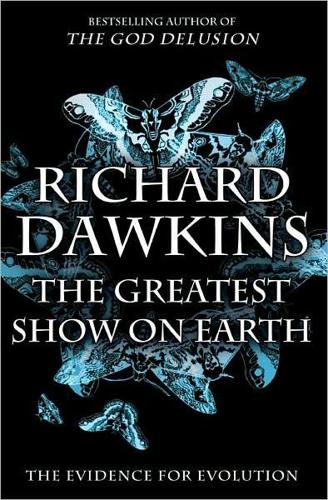
The Greatest Show on Earth: The Evidence for Evolution
by
Richard Dawkins
Published 21 Sep 2009
As you’d expect from one described by Bill Gates, no less, as ‘one of the great programmers of all time’, this is exactly right for the computer biomorphs, and it is surely right for living things too. * There is a risk that ‘epigenesis’ will be confused with ‘epigenetics’, a modish buzz-word now enjoying its fifteen minutes of fame in the biological community. Whatever ‘epigenetics’ might mean (and its enthusiasts cannot seem to agree even with themselves, let alone with each other), all I intend to say about it here is that it is not the same thing as epigenesis. * My medieval historian colleague Dr Christopher Tyerman confirms that this was indeed a myth that was invented in Victorian times for idealistic reasons, but that there was never a scintilla of truth in it

Aurora
by
Kim Stanley Robinson
Published 6 Jul 2015
How could there be such transgenerational effects and affects? We found it very hard to understand. Human history, like language, like emotion, was a collision of fuzzy logics. So much contingency, so few causal mechanisms, such weak paradigms. What is this thing called hate? A hurt mammal never forgets. Epigenetic theory suggests an almost Lamarckian transfer down the generations; some genes are activated by experiences, others are not. Genes, language, history: what it all meant in actual practice was that fear passed down through the years, altering organisms for generation after generation, thus altering the species.
…
None of them understand it.” “Prions, wow. Are people scared?” “Yes. Of course.” “Of course.” His expression grew grim. “So.” She put her hand on her window. “How are you doing out here?” “I’m all right. I’ve been watching a fascinating feed from China. They seem to have made some great progress in epigenetics and proteomics.” “What else, though? Have you done any stargazing?” “Oh yes. A couple of hours every day. I’ve been looking in the Coal Sack. And finding new ways to look through our magnetic screen toward Sol. Although it could be the screen is distorting the image. Either that, or else Sol is pulsing a little.

Alive
by
Gabriel Weston
Published 15 Aug 2025
It’s not just that misogynist myths are slow to debunk – the diagnosis of hysteria wasn’t removed from the Diagnostic and Statistical Manual of Mental Disorders until 1980, and it only became illegal for a man to demand intercourse from his wife in 1991. There are new problems too. Better obstetric imaging brings medical benefits, but also accentuates a tension which has always existed between the rights of the mother and her unborn foetus, known in sociological circles as the ‘maternal–foetal conflict’. And while the epigenetic revelation that a person’s physical, psychological and social well-being can be partly traced to their time in the womb may help women make healthy decisions during pregnancy, the paternalistic dangers of such research are not trivial. It’s still possible for a pregnant woman to order a drink in the UK without attracting stares, but there are many parts of the world where this would be unthinkable.

The Barbell Prescription: Strength Training for Life After 40
by
Jonathon Sullivan
and
Andy Baker
Published 2 Dec 2016
Phil’s symptoms (his small-s suffering) may have been moderated, but that didn’t remove the simple fact of his misery: prematurely old, frail, fat, impotent, and addicted to a rainbow of pills. If we think back to our examination of the Sick Aging Phenotype, it’s easy to see why this is so. None of Phil’s pills could possibly address the multiple factors that lay at the root of his poor health: physical inactivity, epigenetic and environmental factors, diet, aging, obesity, and sarcopenia. Phil’s medicines could moderate the effects of his disease, but not the cause. Let there be no misunderstanding: I am a physician, and I am glad we have these drugs. Patients with hypertension need blood pressure medication. Patients with diabetes need insulin or oral hypoglycemics to control their glucose.
…
Specific disease states A rapidly growing body of research has demonstrated the positive effects of physical exercise in patients with a broad range of pathologies: hypertension,31 heart failure,32 kidney disease,33 cancer,34 diabetes,35 depression,36 osteopenia,37 arthritis,38 dementia.39 In some cases, the effect of exercise on an established disease state is primarily palliative. In others, exercise may slow or even reverse the course of existing disease. But the primary power of exercise is its ability to prevent disease. Any disease state, once established, is likely to involve structural, epigenetic, and systemic changes that make reversal difficult or even physically impossible. The best treatment is to not get the disease in the first place. Exercise clearly decreases the risk of developing metabolic syndrome and cardiovascular disease, and there is tantalizing (but not definitive) evidence that it exerts preventative effects against cancer and some forms of dementia.
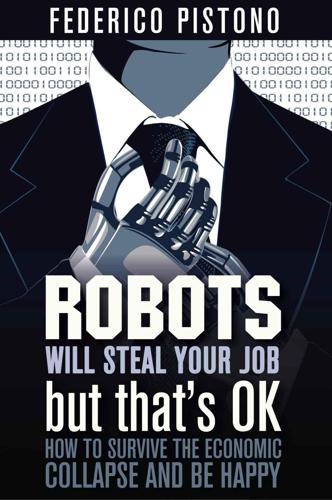
Robots Will Steal Your Job, But That's OK: How to Survive the Economic Collapse and Be Happy
by
Pistono, Federico
Published 14 Oct 2012
Frankly, I do not think it really matters (not at this point in time anyway, but maybe it will in 15 years.149) Look at it this way: the majority of your happiness is not genetically determined, that means there is a lot of room for improvement! Not to mention that genes are not the whole story, their expression is what counts, and some of them depend on epigenetic effects. Our biology might be responsible for a sort of ‘baseline happiness’, what social scientists refer to as ‘set points’; but external factors, our actions, and our reactions undoubtably play a major role. Being happy, feeling happy, having happy memories, happy experiences, these are all different states of mind, and they cannot be represented by a single unified number.
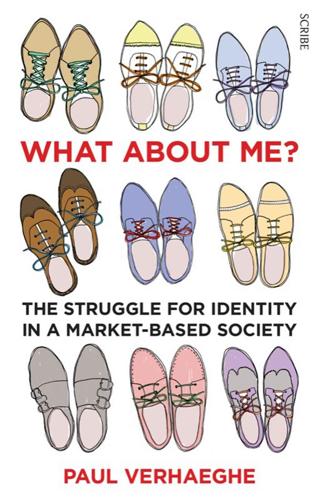
What About Me?: The Struggle for Identity in a Market-Based Society
by
Paul Verhaeghe
Published 26 Mar 2014
So ‘we are our brains’ doesn’t entirely exclude external influence, but what about our genes? Our environment can’t change them, except on an evolutionary timescale, which takes centuries at the very least. Here, too, the scientific picture is much more nuanced than people tend to think. External factors can, for instance, affect gene expression — a field known as epigenetics. Moreover, the link between genes and behaviour is extremely complex, though you’d never guess this from the newspapers. Hardly a day goes by without a jubilant announcement suggesting a direct connection between genes and traits or conditions (‘Gene for autism finally discovered!’). One gene gives you brown eyes; another, blonde hair; and yet another, schizophrenia — they are a hand of cards that determine your luck.
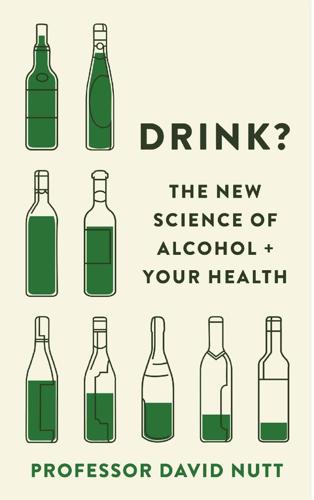
Drink?: The New Science of Alcohol and Your Health
by
David Nutt
Published 9 Jan 2020
Each time you do this, your tolerance builds. At some point, one day as you go into withdrawal, you begin to feel even more anxious because the alcohol has changed your brain chemistry. If we scan the brains of people affected in this way, we can see changes to the amygdala, the fear and stress centre. These adaptive changes are epigenetic – that is, they are changes at the level of gene expression; fear- and stress-promoting genes are being over-expressed. A similar process can happen with other kinds of anxiety-related phobias, for example agoraphobia. The end result? You are addicted to alcohol and are therefore unable to function without it.
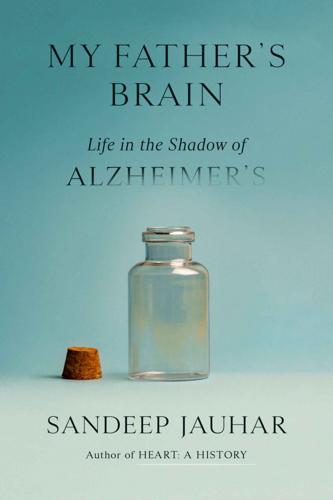
My Father's Brain: Life in the Shadow of Alzheimer's
by
Sandeep Jauhar
Published 11 Apr 2023
“Here you go, young lady,” he said, reaching out to her with a slight tremor. The girl stiffened and pulled closer to her grandmother. “Not now, Dad,” I said softly, putting my arm around him, but he pulled away from me, his hand still extended. The woman smiled and politely accepted the gift. “She is pretty, like her mother,” my father said. “Oh, that’s just epigenetics,” the woman said, smiling. We ate lunch—or rather, my father did; I quietly monitored him, impatient for the ceremony to begin. “Eat something,” he urged, pushing a salad plate over to me, but I set it aside; I wasn’t hungry. “You’re crazy,” he muttered, chewing a mouthful of goat cheese and spinach.

How Emotions Are Made: The New Science of the Mind and Brain
by
Lisa Feldman Barrett
Published 6 Mar 2017
Litwin, Elizabeth C. Breen, and Michael R. Irwin. 2013. “Inflammatory Biomarkers and Emotional Approach Coping in Men with Prostate Cancer.” Brain, Behavior, and Immunity 32: 173–179. Hunter, Richard G., and Bruce S. McEwen. 2013. “Stress and Anxiety Across the Lifespan: Structural Plasticity and Epigenetic Regulation.” Epigenomics 5 (2): 177–194. Huntsinger, Jeffrey R., Linda M. Isbell, and Gerald L. Clore. 2014. “The Affective Control of Thought: Malleable, Not Fixed.” Psychological Review 121 (4): 600–618. Innocence Project. 2015. “Eyewitness Misidentification.” http://www.innocenceproject.org/causes-wrongful-conviction/eyewitness-misidentification.
…
The Face of Emotion. East Norwalk, CT: Appleton-Century-Crofts. ———. 1994. “Innate and Universal Facial Expressions: Evidence from Developmental and Cross-Cultural Research.” Psychological Bulletin 115 (2): 288–299. Jablonka, Eva, Marion J. Lamb, and Anna Zeligowski. 2014. Evolution in Four Dimensions: Genetic, Epigenetic, Behavioral, and Symbolic Variation in the History of Life. Revised edition. Cambridge, MA: MIT Press. James, William. 1884. “What Is an Emotion?” Mind 34: 188–205. ———. (1890) 2007. The Principles of Psychology. Vol. 1. New York: Dover. ———. 1894. “The Physical Basis of Emotion.” Psychological Review 1: 516–529.
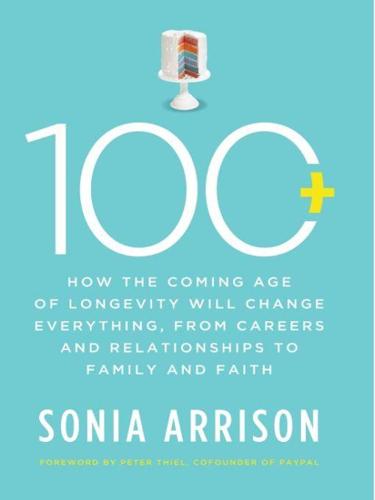
100 Plus: How the Coming Age of Longevity Will Change Everything, From Careers and Relationships to Family And
by
Sonia Arrison
Published 22 Aug 2011
Harley, Weimin Liu et al., “A Natural Product Telomerase Activator as Part of a Health Maintenance Program,” Rejuvenation Research, September 7, 2010, www.liebertonline.com/doi/full/10.1089/rej.2010.1085. 78 Chris Woolston, “Pricey Telomerase Supplements, Touted as Longevity Boosters, Are Unproven,” Los Angeles Times, December 20, 2010, www.latimes.com/health/la-he-skeptic-telomeres-20101220,0,6925196,print.story. 79 See www.tasciences.com/ta-65/. 80 “Genome Announcement a Milestone, but Only a Beginning,” CNN, June 26, 2000, http://archives.cnn.com/2000/HEALTH/06/26/human.genome.05/index.html. 81 Epigenetics is one of these new discoveries. See Brandon Keim, “Early Reports from the ‘Dark Matter’ of the Genome,” Wired News, December 22, 2010, www.wired.com/wiredscience/2010/12/genomic-dark-matter/. 82 John Lauerman, “Complete Genomics Drives Down Cost of Genome Sequence to $5,000,” Bloomberg News, February 5, 2009, www.bloomberg.com/apps/news?
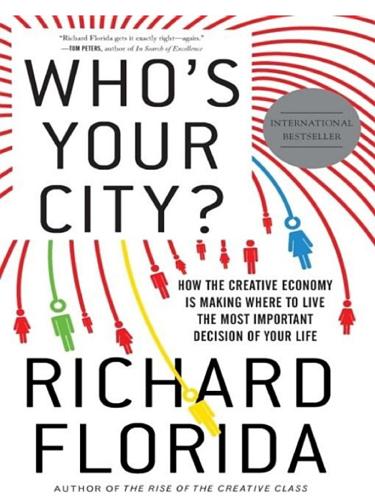
Who's Your City?: How the Creative Economy Is Making Where to Live the Most Important Decision of Your Life
by
Richard Florida
Published 28 Jun 2009
But there is a second, more explosive kind of economic growth—innovation—which according to Jacobs comes from the diversity contained in cities. While companies tend to specialize, places give rise to a wide variety of talents and specialties, the broad diversity of which is a vital spur to innovation. This is an epigenetic process. Cities don’t just get bigger in size; they become multifaceted and differentiated. And in doing so, they—and not firms—are the wellspring of new innovations that generate new work and new branches of industry. The city, Jacobs argued, is a complex, self-organizing ecology whose form cannot be predetermined or controlled from the outside.

Antisemitism: Here and Now
by
Deborah E. Lipstadt
Published 29 Jan 2019
In other words, they constitute a kind of “Jew-baiting.”6 This desire to garner attention may have been what motivated Rutgers University professor Jasbir Puar, who, in a talk at Vassar College, accused Israel of creating a state that “debilitate[s] Palestinian bodies and environments as a form of bio-political control,” collected “body parts” for medical “experimentation,” and “dismantled and dismembered [Palestinian] bodies” for “gendering,” “ungendering,” and “epigenetic deterioration.” She went on to assert that because of its desire to engage in biological “hacking,” Israel chose not to kill Palestinians but “maim[ed]” them so that they could be used for medical experimentation. According to Puar, Israel controlled the Palestinians’ “infrastructure” and “modulate[d] calories…to provide a bare minimum for survival,” resulting in their “stunting.”7 Puar claimed that Israel was subjecting Palestinians to medical “experimentation” by providing them with “the bare minimum for survival” and was using dead Palestinians to “mine for organs for scientific research.”
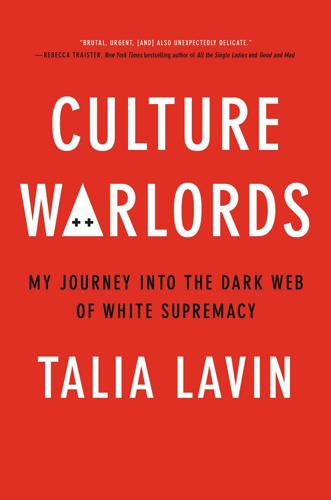
Culture Warlords: My Journey Into the Dark Web of White Supremacy
by
Talia Lavin
Published 14 Jul 2020
Whatever extra humiliations I encountered were the price I paid for looking where others didn’t care to, and it mirrored everything I’d resolved to fight against: the deep hatred of Jews and of women; the casual disregard for human life; the endless stream of incitement toward violence, gun lust, and the humiliation of their enemies. * * * The first time I experienced anti-Semitism, it was on the internet. It’s not that I don’t look like a Jew. I absolutely do: My Ashkenazi heritage and anxious epigenetics are written all over me. I have long, brown, untamable curls I keep up in a bun most of the time so they don’t blind me in an errant wind, and the matronly hips and bosom of a Jewess caricature, or a Venus of Willendorf. I have a nose that could be charitably called “aquiline” and more realistically just “big.”

Cultish: The Language of Fanaticism
by
Amanda Montell
Published 14 Jun 2021
Dispenza shrewdly exploits SEO and other web-marketing strategies to make millions selling an extravagant emporium of self-help workshops and retreats, public speaking engagements, corporate consultations, guided meditations, CDs, gifts, and books like Becoming Supernatural and Evolve Your Brain. Branding himself as the ultimate “scientific” spiritual authority, Dispenza’s Instagram bio reads “Researcher of epigenetics, quantum physics & neuroscience,” and he proudly flaunts his studies in biochemical sciences at Rutgers University, as well as his “postgraduate training and continuing education”—whatever that means—“in neurology, neuroscience, brain function and chemistry, cellular biology, memory formation, and aging and longevity.”
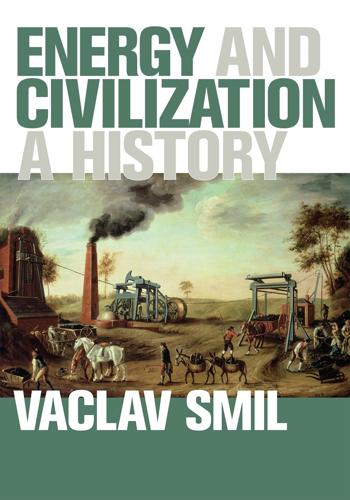
Energy and Civilization: A History
by
Vaclav Smil
Published 11 May 2017
The Earth suffused with radiation could not host carbon-based life without an adequate availability of elements indispensable for biochemical conversions, including phosphorus in ATP, nitrogen and sulfur in proteins, cobalt and molybdenum in enzymes, silicon in plant stems, or calcium in animal shells and bones. Epigenetic information channels energy into maintenance, growth and differentiation, and reproduction; these irreversible transformations dissipate both matter and energy and are affected by the availability of land, water, and nutrients and by the need to cope with interspecies competition and predation.
…
. … It is an organism’s intrinsic properties that determine how energy will flow, not the opposite. If the flow of energy were deterministic for biological systems, it would be impossible for anything living to starve to death. … We suggest that organisms are physical systems with genetically and epigenetically determined individual characteristics, which utilize energy that is flowing through the environment in a relatively stochastic manner. But these fundamental realities do not justify ignoring energy’s role in history; rather, they argue for its properly qualified inclusion. In modern, complex human societies energy use is clearly much more a matter of desires and displays rather than of mere physical needs.
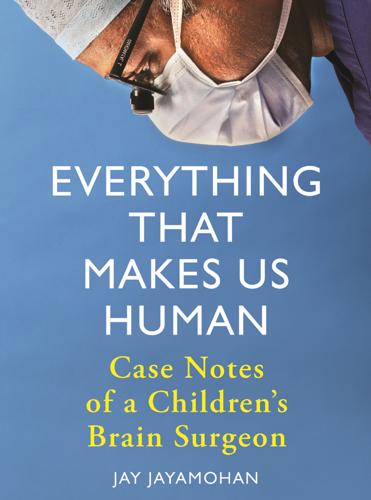
Everything That Makes Us Human: Case Notes of a Children's Brain Surgeon
by
Jay Jayamohan
Published 20 Feb 2020
It isn’t necessary. Even so, Baby is sent to SCBU – Special Care Baby Unit – while I request the MRI. Tumours appear for different reasons. First guess historically has always been genetics. Our tests found no obvious cause in either parent’s lineage. These days there is a whole area called epigenetics, which studies the way that the environment changes your genes, even in utero. It’s interesting stuff, but not particularly helpful when you’re staring at a tumour that’s only going to keep growing. Despite their bad press, it can be malignant brain tumours that pose a lesser threat than their ‘benign’ cousins.
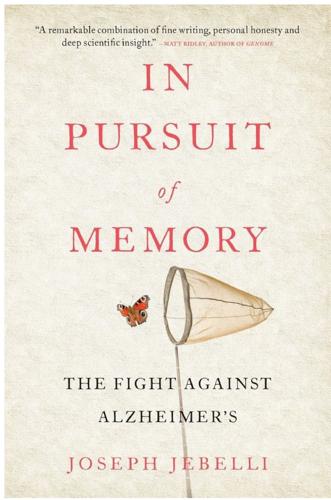
In Pursuit of Memory: The Fight Against Alzheimer's
by
Joseph Jebelli
Published 30 Oct 2017
F., and Porter, R, Dictionary of Scientific Quotations, Oxford University Press, 2006 Callaway, E., ‘Alzheimer’s drugs take a new tack’, Nature, 489 (7414), 2012, 13–14 Caraci, F., Copani, A., Nicoletti, F., Drago, F., ‘Depression and Alzheimer’s disease: neurobiological links and common pharmacological targets’, European Journal of Pharmacology, 626 (1), 2010, 64–71 Carey, N., The Epigenetics Revolution: How Modern Biology is Rewriting Our Understanding of Genetics, Disease and Inheritance, Columbia University Press, 2012 Carper, J., 100 Simple Things You Can Do To Prevent Alzheimer’s and Age-Related Memory Loss, Vermilion, 2011 Catindig, J. A., Venketasubramanian, N., Ikram, M. K., Chen, C., ‘Epidemiology of dementia in Asia: insights on prevalence, trends and novel risk factors’, Journal of Neurological Sciences, 321 (1–2), 2012, 11–16 Chandra, V., DeKosky, S.

AIQ: How People and Machines Are Smarter Together
by
Nick Polson
and
James Scott
Published 14 May 2018
Ironically, this probably would have been easier back in the days of paper charts. Moreover, Heller pointed out, it’s not just one set of readings to look at but hundreds or even thousands: blood tests, urine tests, EKG, heart rate, blood pressure, clinical symptoms, social factors—and soon, information on a patient’s gene expression and epigenetic profile. There’s just so much data. It’s hard for a human being to comprehend it all even as a single snapshot, much less as a story that unfolds over time. Finally, there’s the issue of how such a hypothetical “look for trends” item on a checklist would fit into a doctor’s usual workflow. When you show up to the emergency room, your doctor’s main concern is: How bad is your case right now?
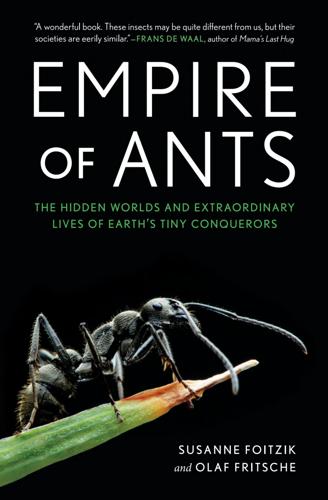
Empire of Ants: The Hidden Worlds and Extraordinary Lives of Earth's Tiny Conquerors
by
Susanne Foitzik
and
Olaf Fritsche
Published 5 Apr 2021
Archives of Insect Biochemistry and Physiology, 1. some species of ants have smaller minor workers and larger major workers Holley, J. A. C. et al. (2016). Subcaste-specific evolution of head size in the ant genus Pheidole. Biological Journal of the Linnean Society, 118, 472–85. Simola, D. F. et al. (2016). Epigenetic (re)programming of caste-specific behavior in the ant Camponotus floridanus. Science, 351, aac6633. Wheeler, D. E. (1991). The developmental basis of worker caste polymorphism in ants. American Naturalist, 138 (5), 1218–38. Wheeler, D. E., & Nijhout, H. F. (1981). Soldier determination in ants: New role for juvenile hormone.
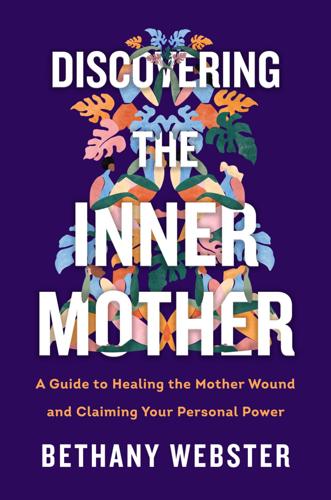
Discovering the Inner Mother: A Guide to Healing the Mother Wound and Claiming Your Personal Power
by
Bethany Webster
Published 5 Jan 2021
Trauma from the past is not really in the past, but rather lives on powerfully and experientially in the present, unless intensive healing is undertaken. Fortunately, our brains have remarkable neuroplasticity and are able to change throughout life. Research within the past decade in brain imaging, molecular biology, neurobiology, and epigenetics has revealed that long-term psychotherapy can effect changes and modifications in synaptic plasticity, neurotransmitter metabolism, and even gene expression. Characterological False Self–Defensive Organizations: These are a hallmark of complex relational developmental trauma because the child’s brain, sense of self, and personality were formed within the crucible of a traumatizing and threatening family system within which the child had to survive.
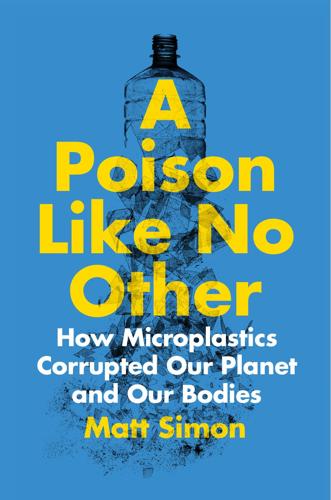
A Poison Like No Other: How Microplastics Corrupted Our Planet and Our Bodies
by
Matt Simon
Published 24 Jun 2022
Mothers not only pass the harms of endocrine-disrupting chemicals 143 144 a poison like no other on to their fetuses but on to even more distant generations. When a mother is exposed to EDCs, so too are her fetus’s germ cells, which develop into eggs or sperm. “It’s thought that during that exposure, the chemical can target those germ cells and do what we call reprogramming, or making epigenetic changes,” says Flaws. “That can be a permanent change that gets carried through generations, because those germ cells will eventually be used to make the next generation, and those fetuses will have abnormal germ cells that would then go on to make the next generation.” In the mid-20th century, scientists documented this in women who took a synthetic form of estrogen, called diethylstilbestrol or DES, to prevent miscarriages.95 The drug worked as intended, and the women gave birth to healthy babies.

The Children of the Sky
by
Vernor Vinge
Published 11 Oct 2011
Even the packs perked up heads here and there. Start with the bad news, build up to the good—but it was taking so long to get there! Okay, she was almost to her ideas for repairing more of the coldsleep caskets and creating an emergency medical committee. “For now we can treat only minor injuries. We have only basic epigenetic triggers. Ultimately, all that will change. In the meantime, how are we to deal with ageing? It’s what our ancestors accepted for thousands of years…” Ravna never got to the “but.” “We are not your fucking ancestors!” It was Jefri Olsndot. He was halfway back in the crowd; she hadn’t seen him before this moment.
…
But Nevil wanted a more direct payoff, some new and tasty food for humans. That was tricky, since Oobii didn’t have the computational power to avoid ecological disasters with modified plants that were fully human-compatible. In the end, Ravna made a minor tweak in natural hardicore grass—well within natural selection bounds—and then enabled another of the epigenetic triggers that most humans had carried since their earliest stargoing civilizations. The Children who used the trigger would be able to eat and enjoy the new hardicore grass. The combination mod should be safe for both humans and Tines World, though Ravna wouldn’t have done it she had still been in charge: every new human compatibility carried a small risk of making the user more susceptible to local diseases.
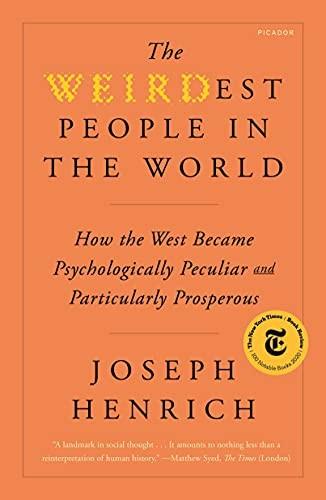
The WEIRDest People in the World: How the West Became Psychologically Peculiar and Particularly Prosperous
by
Joseph Henrich
Published 7 Sep 2020
Baron and Dunham, 2015; Buttelmann et al., 2013; Dunham, Baron, and Banaji, 2008; Henrich, 2016; Kinzler and Dautel, 2012; Moya, 2013; Moya et al., 2015; Shutts, Banaji, and Spelke, 2010; Shutts, Kinzler, and DeJesus, 2013; Shutts et al., 2009. 40. Frankenhuis and de Weerth, 2013; McCullough et al., 2013; Mittal et al., 2015; Nettle, Frankenhuis, and Rickard, 2013. Mothers may even pass certain calibrations down to their children epigenetically, through modifications to their DNA expression machinery or through other biological mechanisms (Wang, Liu, and Sun, 2017). 41. Alcorta and Sosis, 2005; Henrich and Boyd, 2016. 42. Henrich, 2016. 3. Clans, States, and Why You Can’t Get Here from There 1. Ferrero, 1967. 2.
…
Cultural determinants in experiencing shame and guilt. In J. P. Tangney and K. W. Fischer (eds.), Self-Conscious Emotions: The Psychology of Shame, Guilt, Embarrassment, and Pride (pp. 465–87). New York: Guilford Press. Wang, Y., Liu, H., and Sun, Z. (2017). Lamarck rises from his grave: Parental environment-induced epigenetic inheritance in model organisms and humans. Biological Reviews of the Cambridge Philosophical Society 92 (4), 2084–2111. Wann, D. L. (2006). Understanding the positive social psychological benefits of sport team identification: The team identification-social psychological health model. Group Dynamics 10 (4), 272–96.
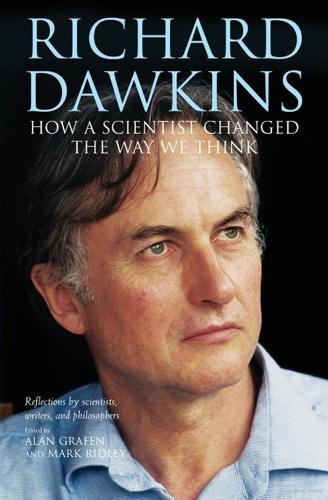
Richard Dawkins: How a Scientist Changed the Way We Think
by
Alan Grafen; Mark Ridley
Published 1 Jan 2006
What are the developmental and other processes that generate variation in the characteristics of organisms? What are the agents of differential survival and differential reproductive success? What are the necessary conditions for recreating successful characteristics in the next generation? Simplicity and Complexity Richard recently had a go at me when he discussed the abuse of the term epigenetics which, he claimed, ‘has become associated with obscurantism among biologists’. This is followed by a reference to a footnote which reads: ‘I am reminded of a satirical version of Occam’s Razor, which my group of Oxford graduates mischievously attributed to a rival establishment: “Never be satisfied with a simple explanation if a more complex one is available.”
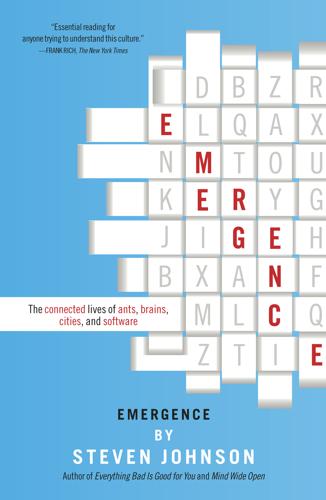
Emergence
by
Steven Johnson
There is no indication that a cell’s exact position in this collective is critical, but its fate can be determined by how many cells of similar history are located close by. A cell’s fate thus depends upon its competence and upon its neighborhood.” Edelman, 1988, 22. Since every cell: Ridley, 175. The words seem: Many brain researchers also draw upon the language of neighborhoods to describe how the brain develops. “Imagine now this epigenetic drama in which sheets of nerve cells in the developing brain form a neighborhood. Neighbors in that neighborhood exchange signals as they are linked by CAMs and CIMs. They send processes out in a profuse fashion, sometimes bunched together in bundles called fascicles. When they reach other neighborhoods and sheets they stimulate target cells.”
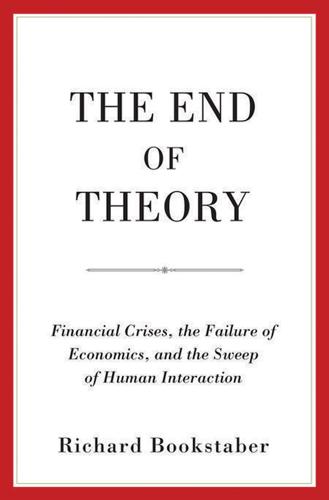
The End of Theory: Financial Crises, the Failure of Economics, and the Sweep of Human Interaction
by
Richard Bookstaber
Published 1 May 2017
We go with winners and prune away anything inefficient in the current environment. I will not treat this point further, but it is another route we could take in thinking about why we end up in so many crises. 8. A technical point while I’m on the topic: the mechanism by which genes are expressed is known as epigenetics, a system of molecular processes that tell specific genes when to turn on or off. The reason we humans can share so many genes with other species is that, although the genes might be the same, the sequences making up switches, and thus the nature of the genes’ interaction, have evolved to be different.
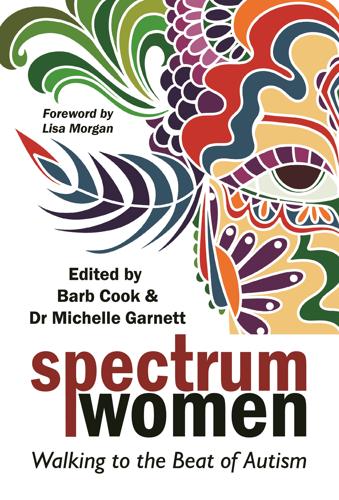
Spectrum Women: Walking to the Beat of Autism
by
Barb Cook
and
Samantha Craft
Published 20 Aug 2018
At the Minds & Hearts Clinic we find that it is rare to meet a girl or a woman who has only ASD, and it is the co-occurring conditions that need treatment. To be clear: we do not treat ASD at Minds & Hearts. We do treat the psychological sequelae of living in a world of social zealots who do not understand ASD. We also make many referrals for the medical conditions that co-occur due to genetics or epigenetics, where there is a genetic propensity for the condition and environmental trigger/s for its onset. Unfortunately, as Anita states, the long list of conditions that co-occur with autism has absolutely nothing to do with fairness. If fairness came into it, whoever decided this would no doubt consider that autism alone would present enough challenges for anyone to deal with.

Been There, Done That: A Rousing History of Sex
by
Rachel Feltman
Published 14 May 2022
Joseph Carey Merrick, more commonly known as the Elephant Man, lived a full century later but still blamed his distinctive growths on his mother’s having been frightened by a circus animal. There’s a surprising kernel of roundabout truth in there. Researchers now know that various circumstances of our gestations can affect epigenetics, or the way certain genes are expressed. This is a pretty new area of research, but it seems clear, for example, that experiencing extreme stress during pregnancy can affect your descendants for generations to come.19 But none of these potential effects are so obvious or magical as historically presumed.

Heart of the Machine: Our Future in a World of Artificial Emotional Intelligence
by
Richard Yonck
Published 7 Mar 2017
From early autism detection to facilitating instruction that is paced appropriately for even the most gifted learner, affective computing stands to transform our approach to the entire education process. Autism is a lifelong condition that is thought to be brought on by an accumulation of genetic, epigenetic, and environmental factors. Contrary to some widely held ideas, individuals with autism certainly experience emotions. However, research indicates they often have greater difficulty reading and dealing with subtlety and nuance of emotion in others and in negotiating the social interactions that go along with this.
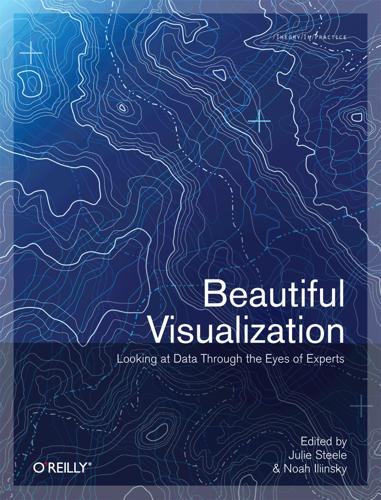
Beautiful Visualization
by
Julie Steele
Published 20 Apr 2010
Fields are a type of regular lattice in space (possibly time-varying) and serve as the substrata of complex systems. They provide the underlying architecture of structure and dynamics within a system. Fields represent things like density distributions, fluids, and waves. The concept of a field exists in many disciplines: developmental biology has the morphogenetic field and epigenetic landscape, evolutionary biology has the fitness landscape, and physics has quantum fields and wavefunctions. Agents are collections of position/value pairs and serve as the superstrata of complex systems. Agents represent actual discrete entities, possibly mobile, in continuous space. They allow us to observe fields more clearly by focusing finely on parts of the entire system and filtering it to see its patterns of invariance.
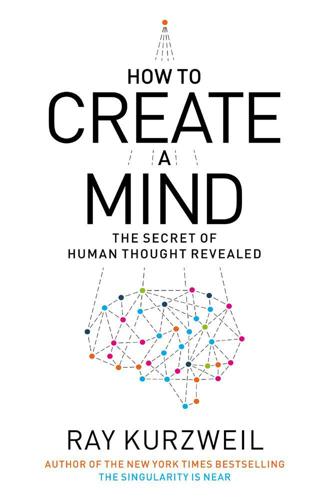
How to Create a Mind: The Secret of Human Thought Revealed
by
Ray Kurzweil
Published 13 Nov 2012
This contention that every structure and neural circuit in the brain is unique and there by design is simply impossible, for it would mean that the blueprint of the brain would require hundreds of trillions of bytes of information. The brain’s structural plan (like that of the rest of the body) is contained in the genome, and the brain itself cannot contain more design information than the genome. Note that epigenetic information (such as the peptides controlling gene expression) does not appreciably add to the amount of information in the genome. Experience and learning do add significantly to the amount of information contained in the brain, but the same can be said of AI systems like Watson. I show in The Singularity Is Near that, after lossless compression (due to massive redundancy in the genome), the amount of design information in the genome is about 50 million bytes, roughly half of which (that is, about 25 million bytes) pertains to the brain.7 That’s not simple, but it is a level of complexity we can deal with and represents less complexity than many software systems in the modern world.
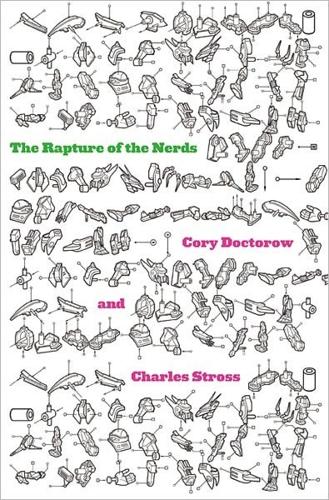
The Rapture of the Nerds
by
Cory Doctorow
and
Charles Stross
Published 3 Sep 2012
Suggested by his earlier encounter with Sam and Doc, she turns out to be incredibly well-documented for a second-rate Communist-era Russian philosopher: video, audio, tracts, and treatises. No tissue samples survive, but enough relatives have been exhaustively sequenced to make her core genome reasonably accessible, and from her visuals, it’s possible to get a handle on some of the epigenetic modulation. Huw tweaks, and there are three people in the room—one of them an elderly female ghost. She coughs unproductively, then looks surprised. “Where am I? What is—?” Her eyes widen farther. David is staring out the window, where a couple of armies in Napoleonic-era drag are duking it out with AK-47s upon a darkling plain.
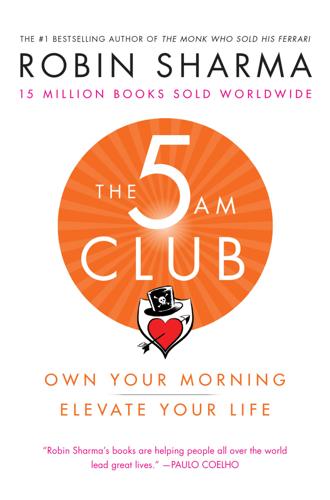
The 5 AM Club: Own Your Morning. Elevate Your Life.
by
Robin Sharma
Published 4 Dec 2018
The entrepreneur was fascinated. “This is just one of the SOPs I run daily to stay on peak. Good science is confirming that this practice helps me upregulate my genome by turning on genes that were previously asleep. Your DNA isn’t your destiny, you know. Not to worry, cats. You’ll learn about the breakthrough field of epigenetics when you’re on the island. You’ll also learn some beautiful neuroscience on multiplying your success in this age of scattered attention, so the weapons of mass distraction don’t destroy your amazingness. I’ll reveal everything I’ve discovered about creating projects that are so masterfully done they endure for generations.
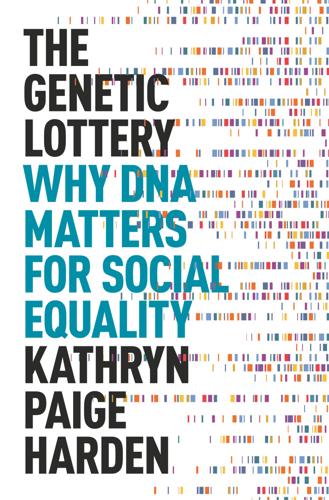
The Genetic Lottery: Why DNA Matters for Social Equality
by
Kathryn Paige Harden
Published 20 Sep 2021
Across many species, from rodents to rabbits to primates, animals who are higher in the pecking order of social hierarchy live longer and healthier lives.4 In the United States, the richest men live, on average, 15 years longer than the poorest, who have life expectancies at age 40 similar to men in Sudan and Pakistan.5 In my lab’s research, we found that children growing up in low-income families and neighborhoods show epigenetic signs of faster biological aging when they are as young as 8 years old.6 It might be easier for a camel to pass through the eye of a needle than a rich man to enter the gates of Heaven, but the rich man has the consolation of being able to forestall judgment day. These income inequalities are inextricable from inequalities in education.

Calling Bullshit: The Art of Scepticism in a Data-Driven World
by
Jevin D. West
and
Carl T. Bergstrom
Published 3 Aug 2020
But when genetic sequencing became inexpensive and new molecular biology techniques gave us ways to measure how genes were being activated, strong evidence began accumulating that this was not the full picture. In addition to passing their genes to their offspring, parents sometimes pass a second layer of nongenetic information about what genes to activate, when. This became known as epigenetics. Because our scientific understanding of the world can change in light of new evidence, science has proven resilient to the occasional wrong turn and even to deliberate misdirection in the form of scientific fraud. Around the turn of the twenty-first century, replication problems began to crop up in a number of fields at unexpectedly high rates.
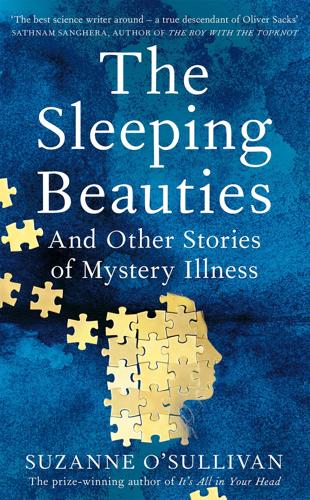
The Sleeping Beauties: And Other Stories of Mystery Illness
by
Suzanne O'Sullivan
Published 31 Mar 2021
Their response to the asylum experience is unlikely to be purely biological, but rather comes from an expectation that has been programmed in them, with contributions from all the people in their environment – in their country of origin, but even more so in Europe. The children are embodying a sociocultural phenomenon. Their story has been written across nations, in a combination that has made them unique. It has been impacted by poor social circumstances, poor nutrition, epigenetics, abusers, authority figures, politicians, parents, doctors and the media. Without the correct combination of these, resignation syndrome would not exist. There are more than two sides to all psychosomatic and functional illnesses, not just resignation syndrome. The cultural specificity of resignation syndrome acted as a crucial reminder to me that the social element should never be underestimated in other similar disorders.

Israel: A Simple Guide to the Most Misunderstood Country on Earth
by
Noa Tishby
Published 5 Apr 2021
At the time, Zionism seemed crazy revolutionary, but the Jews had been talking about reestablishing their homeland for two millennia. Each year on Passover, as we read the Haggadah, we tell, yet again, the story of the Jewish exodus from Egypt and complete the saga by saying: “Next year in Jerusalem.” This had been going on for many centuries, so the epigenetic memory of the homeland has always been potent, to say the least. But it was more of a theoretical concept, a dream. The thought of actually returning to Israel, to reestablish an actual country, became a necessity with the rising tides of antisemitism. It originally started with dudes like Rabbi Alkalai of Serbia, who wrote a detailed plan to rebuild the Jewish homeland in Israel back in 1843.
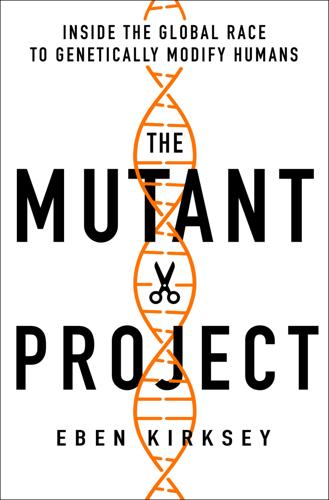
The Mutant Project: Inside the Global Race to Genetically Modify Humans
by
Eben Kirksey
Published 10 Nov 2020
Twenty years ago, during the heyday of the original Human Genome Project, renowned biologists were bandying about similar claims. Scientists have largely failed to produce evidence supporting grand theories about genetic determinism. Genes are just a small part of the story about life. Excitement about stem cells, gut microbes, and epigenetics—a new field exploring how genes are regulated—has displaced DNA from center stage in biology. We were standing in the largest DNA repository in the world, she said. Living materials were being stored in live cultures, while a digitization platform transformed their DNA into bits of code: ATCG, for example, was becoming 00011110.
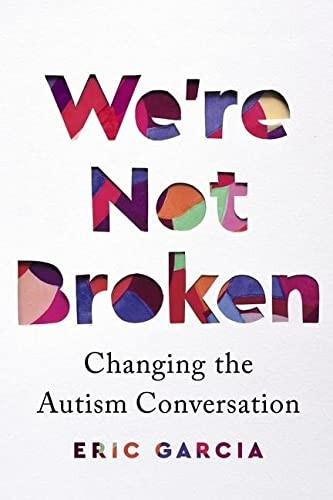
We're Not Broken: Changing the Autism Conversation
by
Eric Garcia
Published 2 Aug 2021
Furthermore, the leading cause of death for the “low-functioning” group was epilepsy; the most common cause of death for autistic individuals without intellectual disabilities was circulatory conditions, like heart disease, followed by suicide. Of the $364,435,254 spent on autism research in 2016, only 2 percent went toward researching life-span issues. By comparison, that same year, the United States spent 35 percent on autism and biology and 24 percent on risk factors, which included the role of genetics, epigenetics, and environment in autism’s development and the interaction of these factors. Combined, these two areas of research account for more than half the money spent on autism, yet they are mostly about what causes its symptoms. That means only a small fraction of the money goes toward helping autistic adults as they age.
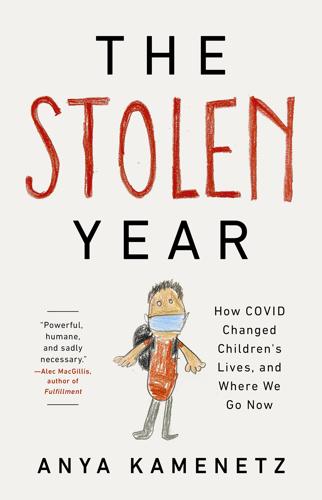
The Stolen Year
by
Anya Kamenetz
Published 23 Aug 2022
Teens report forgoing food so that their younger siblings can eat or trying to stay away from home during meals. The impact of hunger can be surprisingly long lasting. Tragically, studies of the Dutch “hunger winter”—a wartime season of extreme deprivation caused by the Nazis in Holland in 1944–1945—actually seem to show an epigenetic impact. That means that the hunger appeared to affect genetic expression for babies in utero during this time. Most strikingly, that generation grew up to have a higher risk of schizophrenia. Ending hunger should be a social priority. It’s the fundamental human need. And hunger in children, from infants to teenagers, has reverberating effects.

This Will Make You Smarter: 150 New Scientific Concepts to Improve Your Thinking
by
John Brockman
Published 14 Feb 2012
Unfortunately, we usually forget these warnings. Francis Bacon argued that we are, first, victims of evolution (SHA)—that is, that our genes (SHA) define constraints that necessarily limit insight (SHA). Second, we suffer from the constraints of imprinting (SHA); the culture (SHA) we live in provides a frame for epigenetic programs (SHA) that ultimately define the structure (SHA) of neuronal processing (SHA). Third, we are corrupted by language (SHA), because thoughts (SHA) cannot be easily transformed into verbal expressions. Fourth, we are guided, or even controlled, by theories (SHA), be they explicit or implicit.

Choked: Life and Breath in the Age of Air Pollution
by
Beth Gardiner
Published 18 Apr 2019
The study “has gone off in all kinds of directions,” Avol says. “We sort of grew from just looking at respiratory health, which was our original interest, to looking at cardiovascular health, looking at neurological health, looking at obesity and metabolic syndrome, looking at genetic predispositions, looking at epigenetics.” It has drawn in experts from a multitude of disciplines—geographical mapping, toxicology, molecular biology—even teams examining mice to trace pollution’s pathways through living bodies. It’s that intellectual richness, the interplay of so many disciplines, that has kept the men engaged for all these years.

The Quantum Magician
by
Derek Künsken
Published 1 Oct 2018
He was like a regular person, almost; even his non-fugue brain was hard-wired to ferret out mathematical patterns and new understandings. Without magnetosomes, he was epistemologically adrift, with no baseline with which to calibrate visual information. He couldn’t believe it. He knew what had been done, genetically and epigenetically, to make him. It was an enormously complex and planned process. He was an advanced iteration of a multi-generational product. But nothing in his training or his bioengineering had foreshadowed this possibility. This was an unplanned evolutionary leap, new functions building themselves onto existing biological tools.
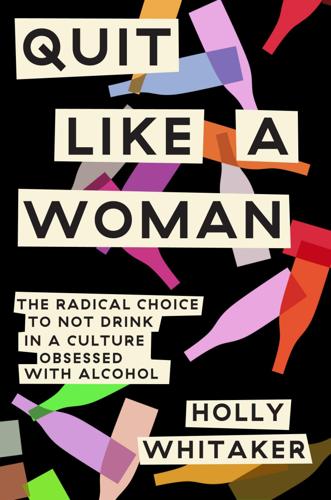
Quit Like a Woman: The Radical Choice to Not Drink in a Culture Obsessed With Alcohol
by
Holly Glenn Whitaker
Published 9 Jan 2020
If our alcoholism is running the show from the dark corners of our soul, and all our shortcomings are products of this chronic, incurable condition, then, well, fuck us. The truth is we can change. From what we now know of neuroplasticity, we can rewire our brain with meditation and chanting and yoga and food and CBT and DBT and a whole host of other evidence-based modalities, practices, and treatments. Epigenetics tells us we can even change our gene expression and the predeterminants of addiction. Our absolute nature as human beings is that we are always evolving and growing and changing—in fact, over the course of seven years, our entire cellular structure changes. But when we hold tight to an idea of “I’m just this way,” we settle for being just this way.
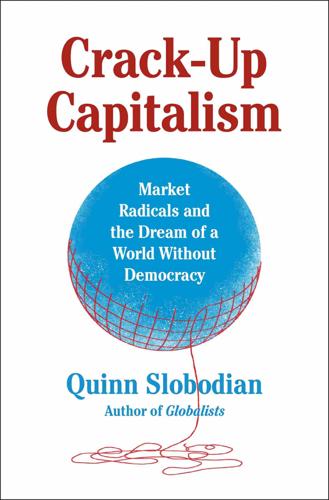
Crack-Up Capitalism: Market Radicals and the Dream of a World Without Democracy
by
Quinn Slobodian
Published 4 Apr 2023
“Cybercash,” they said, would let people take their money wherever they wanted through anonymous transactions; as the wealthy fled high-tax jurisdictions, this portability would starve the welfare state. They combined this observation about capital flight with a speculative argument, drawn from epigenetics, that humans had entered a more rapid phase of evolution. The result, they said, would be the emergence of a hypermobile superclass of high-IQ individuals, who could remotely coordinate placid low-IQ workforces while stashing their wealth far from the grasping hands of governments. Davidson and Rees-Mogg called this tiny, rarefied fraction of the world’s population “sovereign individuals,” and estimated their coming number at a hundred million worldwide.9 The nation-state form was dysgenic.

Age of Discovery: Navigating the Risks and Rewards of Our New Renaissance
by
Ian Goldin
and
Chris Kutarna
Published 23 May 2016
At least some of that “junk,” it’s now known, stores different instructions: not to make proteins, but to more finely regulate the proteins already being printed. What makes humans so much more complex than fruit flies is only partly that our DNA prints more proteins, but mostly that our bodies manipulate those proteins with far more sophistication. Research has also discovered that some inherited traits aren’t coded in our DNA at all. “Epigenetics” is the name of this field of study, so new that scientists only agreed upon its definition in 2008. Most profoundly, science is now asking us to give up the idea that DNA is a blueprint at all. It is, rather, a warehouse—full of useful ideas that nature has been accumulating since life began.

Wireless
by
Charles Stross
Published 7 Jul 2009
New recruits were expected to practice the formalities diligently, for a mastery of Urem was important to their future—and none of them were native speakers. “I speak to you today of the structure of human history and the ways in which we may interact with it.” Yarrow, the Honorable Scholar, was of indeterminate age: robed in black, her hair a stubble-short golden halo, she could have been anywhere from thirty to three hundred. Given the epigenetic overhaul the Stasis provided for their own, the latter was likelier—but not three thousand. Attrition in the line of duty took its toll over the centuries. Yarrow’s gaze, when it fell on Pierce, was clear, her eyes the same blue as the distant horizon. This was the first time she had lectured Pierce’s class—not surprising, for the college had many tutors, and the path to graduation was long enough to tax the most disciplined.
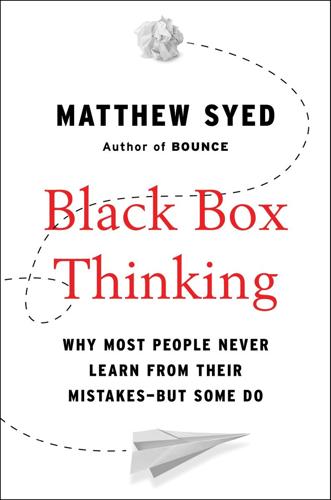
Black Box Thinking: Why Most People Never Learn From Their Mistakes--But Some Do
by
Matthew Syed
Published 3 Nov 2015
*Some refused the interview request, others did not respond. One of the signatories had died during the intervening period. *Interviews by the author with twelve economists, three academic and nine working for financial institutions. *An element of Lamarckism has resurfaced in recent years due to advances in epigenetics, which refers to changes in organisms caused by modification of gene expression rather than alteration of the genetic code itself. But this should not be held up as evidence that Lysenko was, in some curious way, right. After all, the phenomenon is being debated via testing and data rather than threats and intimidation.
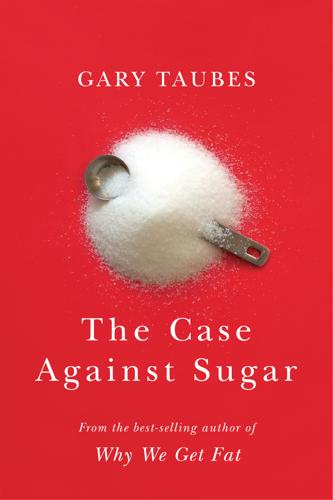
The Case Against Sugar
by
Gary Taubes
Published 27 Dec 2016
Despite their faith in the notion that obesity causes or accelerates diabetes and that therefore (in what I will argue is a mistaken assumption) both are diseases of overconsumption and sedentary behavior, they will also defend their failure to curb the ongoing epidemics of these diseases on the basis that these are “multifactorial, complex disorders” or “multidimensional diseases.” By this they mean that so many factors are involved in the genesis and progression of these diseases—including genetics for sure, epigenetics (the modification of how genes are turned on and off in cells), how much we eat and exercise, perhaps how well we sleep, toxins in the environment, pharmaceuticals, possibly viruses, the effect of antibiotic use on the bacteria in our guts (dysbiosis, as it’s now commonly called, or microbial imbalance)—that to identify one ultimate trigger, or one critical component of our modern diets, is to be naïve.
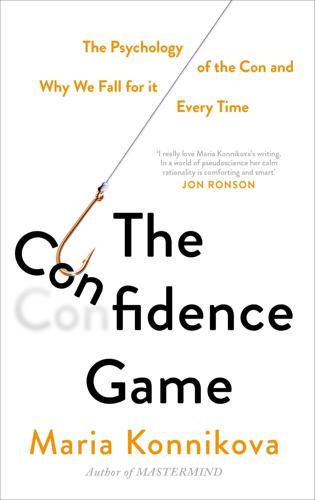
The Confidence Game: The Psychology of the Con and Why We Fall for It Every Time
by
Maria Konnikova
Published 28 Jan 2016
Luck out, you become a high-functioning psychopath, like Fallon, and, perhaps, some of the con artists in this book. Get the bad draw, you become a violent psychopath, like the ones who fill up jails and sit on death row. Apart from the period in utero, a time that we now know is crucial for the development of your genome’s epigenetic markers—that is, the methylation patterns that will determine how, precisely, your genes will be expressed—Fallon believes that the first three years of life play a crucial role in determining your psychopathic future. In that period, a child naturally develops so-called complex adaptive behaviors, like the ability to deal with fear, to smile, to react to those around her.

Deep Medicine: How Artificial Intelligence Can Make Healthcare Human Again
by
Eric Topol
Published 1 Jan 2019
For example, PathAI advertises an error rate with algorithms alone of 2.9 percent, and by pathologists alone of 3.5 percent, but the combination drops the error rate to 0.5 percent. Pathologists do not only interpret slides. They can also examine samples at the molecular level, for example, by identifying the epigenetic methylation patterns on tissue DNA to improve cancer diagnosis. Like digital pathology and WSI, there’s an overall lag of incorporating molecular diagnostics into routine pathologic assessment of cancer tissue. A study comparing machine analysis of methylation of brain cancer samples with pathologists’ review of slides demonstrated the superiority of accuracy for algorithms when such methylation data was available.55 In another study of pathology slides by researchers from New York University, the algorithmic accuracy for diagnosing subtypes of lung cancer was quite impressive (AUC = 0.97); half of the slides had been misclassified by pathologists.

The Coming Wave: Technology, Power, and the Twenty-First Century's Greatest Dilemma
by
Mustafa Suleyman
Published 4 Sep 2023
GO TO NOTE REFERENCE IN TEXT Its chief scientist, Richard Klausner Antonio Regalado, “How Scientists Want to Make You Young Again,” MIT Technology Review, Oct. 25, 2022, www.technologyreview.com/2022/10/25/1061644/how-to-be-young-again. GO TO NOTE REFERENCE IN TEXT This experimental approach aims Jae-Hyun Yang et al., “Loss of Epigenetic Information as a Cause of Mammalian Aging,” Cell, Jan. 12, 2023, www.cell.com/cell/fulltext/S0092-8674(22)01570-7. GO TO NOTE REFERENCE IN TEXT A world where life spans See, for example, David A. Sinclair and Matthew D. LaPlante, Lifespan: Why We Age—and Why We Don’t Have To (New York: Atria Books, 2019).
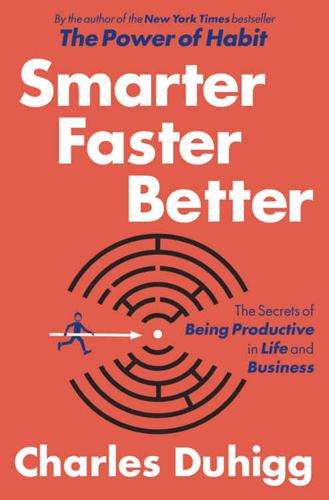
Smarter Faster Better: The Secrets of Being Productive in Life and Business
by
Charles Duhigg
Published 8 Mar 2016
Worthy et al., “With Age Comes Wisdom: Decision Making in Younger and Older Adults,” Psychological Science 22, no. 11 (2011): 1375–80; Pat Croskerry, “Cognitive Forcing Strategies in Clinical Decisionmaking,” Annals of Emergency Medicine 41, no. 1 (2003): 110–20; Brian J. Reiser, “Scaffolding Complex Learning: The Mechanisms of Structuring and Problematizing Student Work,” The Journal of the Learning Sciences 13, no. 3 (2004): 273–304; Robert Clowes and Anthony F. Morse, “Scaffolding Cognition with Words,” in Proceedings of the Fifth International Workshop on Epigenetic Robotics: Modeling Cognitive Development in Robotic Systems (Lund, Sweden: Lund University Cognitive Studies, 2005), 101–5. make a choice For more on disfluency, please see Adam L. Alter, “The Benefits of Cognitive Disfluency,” Current Directions in Psychological Science 22, no. 6 (2013): 437–42; Adam L.

When Computers Can Think: The Artificial Intelligence Singularity
by
Anthony Berglas
,
William Black
,
Samantha Thalind
,
Max Scratchmann
and
Michelle Estes
Published 28 Feb 2015
Scientists have refined the ideas of Darwin and Wallace, and much more is known about how species to evolve. Higher animals have cultural factors that are learned rather than passed on genetically, which is known as the Baldwin effect. Some immunological effects may also be passed extra-genetically. Epigenetic effects causes various genes to be turned on and off as cells divide within an organism. But overall, the underlying process of natural selection is now accepted as the main driver for evolution by virtually all credible scientists. The cooperation game Public http://cliparts.co/clipart/2380995 To better understand the evolutionary source of our moral values, we can leave the world of science and instead consider a simple cooperation game which is similar to the prisoner’s dilemma.

Geek Heresy: Rescuing Social Change From the Cult of Technology
by
Kentaro Toyama
Published 25 May 2015
Economist James Heckman’s (2012) usage of the phrase “noncognitive traits” also overlaps considerably with the idea of judgment and self-control, but his definition lacks the element of intention. 17.Intrinsic growth is internal to, and under the partial control of, the person or the society. Heart, mind, and will are neither external advantages nor purely inborn talents, even though circumstances, genetics, and maybe even epigenetics can play a part in forming them. How healthy you are depends on your genes and the larger environment, neither of which you can personally control. Yet, you do have within your control the ability to gain the intention to have good health, the discernment to choose nutritious foods, and the self-control to go for a daily walk. 18.Oppenheimer (2003) and Toyama (2011) both have strong things to say about television’s poor performance in education.

What to Think About Machines That Think: Today's Leading Thinkers on the Age of Machine Intelligence
by
John Brockman
Published 5 Oct 2015
The more we use the solitary term mind to refer to human thinking, the more we underscore our lack of understanding. At least this is an emerging view of many researchers in fields as varied as neuroanthropology, emotions research, embodied cognition, radical embodied cognition, dual-inheritance theory, epigenetics, neurophilosophy, and the theory of culture. For example, in the laboratory of Professor Martin Fischer at the University of Potsdam, interesting research is being done on the connection of the body and mathematical reasoning. Stephen Levinson’s group at the Max Planck Institute for Psycholinguistics in Nijmegen has shown how culture can affect navigational abilities, a vital cognition function of most species.
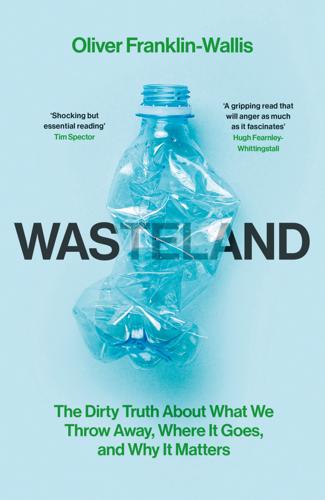
Wasteland: The Dirty Truth About What We Throw Away, Where It Goes, and Why It Matters
by
Oliver Franklin-Wallis
Published 21 Jun 2023
‘Bad Chemistry’, The Intercept (2019): https://theintercept.com/collections/bad-chemistry/ 59 CHEM Trust, PFAS: the “Forever Chemicals”, 2019: https://chemtrust.org/wp-content/uploads/PFAS_Brief_CHEMTrust_2019.pdf 60 Sharon Lerner, ‘The Teflon Toxin: The Case Against DuPont’, The Intercept, 17/08/2015: https://theintercept.com/2015/08/2017/teflon-toxin-case-against-dupont/ 61 Nathaniel Rich, ‘The Lawyer Who Became DuPont’s Worst Nightmare’, New York Times, 06/01/2016: https://www.nytimes.com/2016/01/10/magazine/the-lawyer-who-became-duponts-worst-nightmare.html 62 Sharon Lerner, ‘Chemours is using the US as an unregulated dump for Europe’s toxic GenX waste’, The Intercept, 01/02/2019: https://theintercept.com/2019/02/01/chemours-genx-north-carolina-netherlands/ 63 Ali Alavian-Ghavanini and Joëlle Rüegg, ‘Understanding Epigenetic Effects of Endocrine Disrupting Chemicals: From Mechanisms to Novel Test Methods’, Basic & Clinical Pharmacology & Toxicology 112(1), 2018, pp. 38–45: DOI: 10.1111/bcpt.12878 64 Linda G. Kahn, Claire Philippat et al., ‘Endocrine-disrupting chemicals: implications for human health’, The Lancet Diabetes & Endocrinology (2020): DOI: 10.1016/S2213-8587(20)30129-7 65 Andrea Di Nisio, Iva Sabovic et al., ‘Endocrine disruption of androgenic activity by perfluoroalkyl substances: clinical and experimental evidence’, Journal of Clinical Endocrinology & Metabolism (2019): DOI: 10.1210/jc.2018-01855 66 Andreas Kortenkamp, Martin Scholze et al., ‘Combined exposures to bisphenols, polychlorinated dioxins, paracetamol, and phthalates as drivers of deteriorating semen quality’, Environment International (2022): DOI: 10.1016/j.envint.2022.107322 67 Credit here: Max Liboiron makes this argument in more detail in their excellent Pollution Is Colonialism (2021). 68 Tom Perkins, ‘EPA imposes stricter limits on four types of toxic “forever chemicals”’, The Guardian, 15/06/2022: https://www.theguardian.com/environment/2022/jun/15/epa-limits-toxic-forever-chemicals 69 Ibid. 70 Waste Dive, ‘Disposing “forever” toxics: How the waste and recycling industry is tackling the PFAS chemicals crisis’, 2021: https://www.wastedive.com/news/pfas-chemicals-toxic-disposal-waste-crisis/587045/ 10.
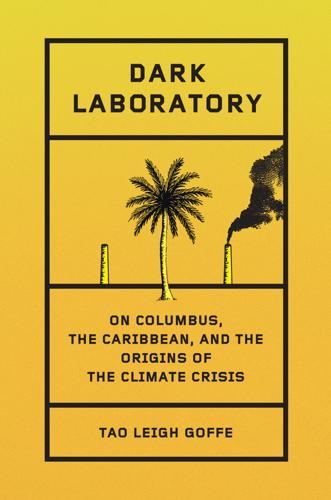
Dark Laboratory: On Columbus, the Caribbean, and the Origins of the Climate Crisis
by
Tao Leigh. Goffe
Published 14 Mar 2025
When I taught a graduate class at Cornell University’s Architecture School on Black and Indigenous Metropolitan Ecologies, none of my students had heard about the devastating eruption. We talked about this knowledge gap and the boundaries of climate aid. BBC global coverage showed the nation—its former colony—blanketed in ash. The carcinogenic impact is untold, and, tragically, the epigenetic effect of the sulfur and noxious fumes will continue to unveil itself. Home to one of the largest Afro-Indigenous communities, the twin island nation St. Vincent and the Grenadines has long been a sovereign haven. But in majority Black countries such as these, the sirens fail to trigger a global affective or aid response.

More Everything Forever: AI Overlords, Space Empires, and Silicon Valley's Crusade to Control the Fate of Humanity
by
Adam Becker
Published 14 Jun 2025
“Are there any genetic contributors to differences between groups in cognitive abilities? It is not my area of expertise, and I don’t have any particular interest in the question. I would leave to others, who have more relevant knowledge, to debate whether or not in addition to environmental factors, epigenetic or genetic factors play any role.” (A subsequent monthslong investigation into Bostrom conducted by Oxford University concluded that “we do not consider you to be a racist or that you hold racist views, and we consider that the apology you posted in January 2023 was sincere.”)138 There is no serious scientific controversy that could offer a fig leaf for Bostrom’s willingness to equivocate about the status of racist pseudoscience.
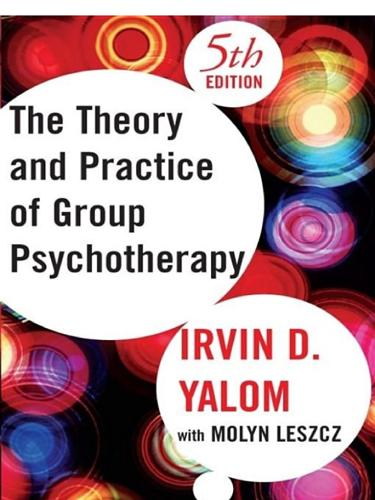
Theory and Practice of Group Psychotherapy
by
Irvin D. Yalom
and
Molyn Leszcz
Published 1 Jan 1967
This phase is followed by one with a focus on control, power, status, competition, and individual differentiation. Next comes a long, productive working phase marked by intimacy, engagement, and genuine cohesion. The final stage is termination of the group experience. These models also share a premise that development is epigenetic—that is, each stage builds on the success of preceding ones. Hence, early developmental failures will express themselves throughout the group’s life. Another premise of development is that groups are likely to regress under conditions threatening group integrity.† As group development unfolds, we see shifts in group member behavior and communication.
…
Fromm-Reichman, Frieda Future determinism The Future of an Illusion (Freud) Galilean concept of causality Gamblers Anonymous Gay Alcoholics Genetic insight Genuineness Geriatric groups; therapeutic factors and Gestalt therapy The Gift of Therapy (Yalom) Global accusations Global group characteristics Global historical survey Go-Go Stroke Club Groundlessness Group behavior: of dropouts; extragroup; operant techniques in; prediction of; pretherapy; pretherapy encounter and Group boundaries Group climate Group cohesiveness; attendance influenced by; attendance/participation and; attributes of; condition of; consequences of; contributions to; development of; early stages of; effects of; espirt de corps and; expression of hostility and; impact of; importance of; intense emotional experiences and; as mediator for change; monopolists’ influence on; not synonymous with comfort/ease; precondition for; research on; self-disclosure essential to; self-esteem influenced by; sexual love relationship and; subgrouping and; therapist-client relationship and; therapy-relevant variables and; wish to be favored and Group cohesiveness precondition: precondition for therapeutic factors Group communication Group conflict; change and Group culture: designed by therapist; techniques for shaping Group current Group demoralization Group development: antigroup forces; chance and; clients’ impact on; clinical application of theory; conflict in; as epigenetic; first group meeting and; formative stages of; hostility as part of; initial stage of; membership problems in; overview of; problems in; regression and; research on; second stage of; “storming” stage of; third stage of Group developmental theory Group deviancy; research on Group deviant: definition of; development of; group members v.; group support and; schizophrenics as; screening for Group dynamics; research in Group engagement; resisting Group environment Group evaluation: individual’s self-evaluation vs..

Bourgeois Dignity: Why Economics Can't Explain the Modern World
by
Deirdre N. McCloskey
Published 15 Nov 2011
Augustine, Martin Luther, John Calvin, Jonathan Edwards, and Stephen Pinker in articulating the betting odds that we are probably hopeless sinners lacking grace in the hands of an angry God. “Grace,” says Aquinas to the contrary, “does not abolish nature; but perfects it.”7 You could use it as a motto in a paper on epigenetics. Smith, then, is less a neo-Stoic, as he has often been called, than he is a secular follower of Aquinas, the urban monk making room for the active life. Stoicism is above all antibourgeois, even antisocial—proud and heroic and solipsistic. Its founder, Zeno, is an early example of a recurrent character in bourgeois culture, the antibourgeois son—Zeno’s father appears to have been a Cypriot merchant.
…
See beer Alfani, Guido: plague in Italy, 18 Alger, Horatio, 313–314; thrift, 481; trade-tested betterment, 678n24 Aliano, Italy: Levi’s village, 12 Aligica, Paul Dragos: acknowledged, xxxviii Allen, Emma: work in novels, 590 Allen, Robert: coal, 439; cost of British labor, 473; open source, 395; testimony against, 652n26 Alm, Richard: recent betterment, 37 Alpers, Svetlana: Golden Age moralizing, 330–334 Ambassadors, The (James), 590 Amsterdam: accounting, 271; bourgeois, 221, 264; charity, 339–340, 342; corruption, 328; size, 32; toleration, 346, 349 analytic egalitarianism, 653n37, 669n23, 670n13, 670n21, 699n6 Andrew, Donna: dueling, 223–224 Angner, Erik: acknowledged, xxxviii Anscombe, Elizabeth: virtue ethics, 194, 668n4 Anti-Americanism, 600 Antioch, Gerry, 494 Anti-Remonstrants, 312, 352 Appleby, Joyce: economic ideology, 382, 546; Polanyism, 546, 547; “rooted in human nature,” 683n13 A-Prime, C-Prime Theorem, 652n27 Aquinas, St. Thomas: the active life, 200; epigenetics, 200; ethical trade, 451, 557; ethics, 185, 190, 195, 200; original sin, 200; and Smith, 182, 196; zero sum, 434 Arce M, Daniel G.: quotes Friedman, 662n17 Ardagh, John: German internal tariffs, 693n13 Arendt, Hannah: dignity of Jews, 403; equality, xxxii, 653n41 Aristotle: aristocracy, 452; economics, 164; endless accumulation, 279, 312, 323; friendship, 188, 215, 280; full-information, 438; Nicomachean Ethics and choice, 115; Politics, 312; slavery, 404; virtue ethics, 185, 454, 603; zero sum, 434 Arkwright, Sir Richard: bourgeois, xxxv, 465 Armour brothers: entrepreneurship in meat, 539 Armstrong, Karen: belief, 505; natural theology, 237, 238 Arnold, Matthew: ethics and betterment, 25 Arrow, Kenneth, 651n9 Art of War, The: prudence, 166 Arts and Crafts movement, 592 Astill, James: cricketing imperialism, 661n13 Attenborough, David: population control in nature, 656n13 Auden, W.

Martians
by
Kim Stanley Robinson
Published 6 Jul 1999
Certainly the structure of feeling had changed; that was culturally determined; and thus the brain must necessarily have changed too. A century later their brains depended on great dollops of mediated stimulation, quick-cut inputs which had not even existed for earlier generations. So that reliance on inner resources was harder. Patience was harder. They were different animals than the people in this photo. The epigenetic interplay of DNA and culture was now changing people so fast that even a century was enough to make a measurable difference. Accelerated evolution. Or one of the punctuations in the long tale of punctuated evolution. And Mars would be more of the same. There was no telling what they would become.
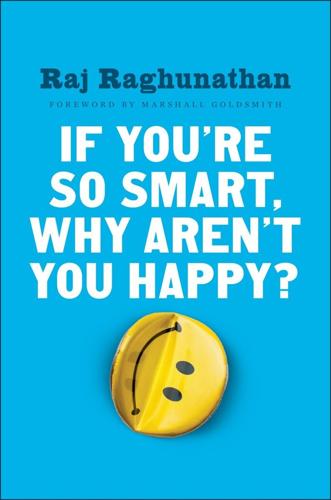
If You're So Smart, Why Aren't You Happy?
by
Raj Raghunathan
Published 25 Apr 2016
Findings proved Harlow right: See figure 5 (on p. 676) in ibid., which summarizes the results. In follow-up experiments: These experiments are described in Blum, Love at Goon Park; see also H. F. Harlow, “Love in Infant Monkeys,” Scientific American 200(6) (1959): 68–74. monkeys’ capacity for love and nurturance: For similar findings on rats, see T. Y. Zhang and M. J. Meaney, “Epigenetics and the Environmental Regulation of the Genome and Its Function,” Annual Review of Psychology 61 (2010): 439–66. These researchers found that rat pups that had been licked and groomed by their mothers (or mother figures) grew up into psychologically healthier adults. René Spitz was one of the pioneers: R.

Advances in Artificial General Intelligence: Concepts, Architectures and Algorithms: Proceedings of the Agi Workshop 2006
by
Ben Goertzel
and
Pei Wang
Published 1 Jan 2007
Technical Report SS-04-02. Stanford University, Palo Alto, California, USA: American Association for Artificial Intelligence; March 22–24, 2004. [71] Franklin, S., and U. Ramamurthy. 2006. Motivations, Values and Emotions: 3 sides of the same coin. In Proceedings of the Sixth International Workshop on Epigenetic Robotics, vol. 128. Paris, France: Lund University Cognitive Studies. Advances in Artificial General Intelligence: Concepts, Architectures and Algorithms B. Goertzel and P. Wang (Eds.) IOS Press, 2007 © 2007 The authors and IOS Press. All rights reserved. 55 A Working Hypothesis for General Intelligence Eric Baum Baum Research Enterprises ebaum@fastmail.fm http://whatisthought.com Abstract.

Overwhelmed: Work, Love, and Play When No One Has the Time
by
Brigid Schulte
Published 11 Mar 2014
Kessler et al., “Lifetime Prevalence and Age-of-Onset Distributions of Mental Disorders in the World Health Organization’s World Mental Health Survey Initiative,” World Psychiatry 6, no. 3 (October 2007): 168–76, www.ncbi.nlm.nih.gov/pmc/articles/PMC2174588/. 3. Robert L. Leahy, “How Big a Problem Is Anxiety? In Any Given Year, About 17% of Us Will Have an Anxiety Disorder,” Psychology Today Anxiety Files blog, April 30, 2008, www.psychologytoday.com/blog/anxiety-files/200804/how-big-problem-is-anxiety. 4. M. J. Essex et al., “Epigenetic Vestiges of Early Developmental Adversity: Childhood Stress Exposure and DNA Methylation in Adolescence,” Child Development 84, no. 1 (January-February 2013): 58–75, www.ncbi.nlm.nih.gov/pubmed/21883162. 5. Emily B. Ansell et al., “Cumulative Adversity and Smaller Gray Matter Volume in Medial Prefrontal, Anterior Cignulate, and Insula Regions,” Biological Psychiatry 72, no. 1 (July 1, 2012): 57–64, www.ncbi.nlm.nih.gov/pubmed/22218286. 6.

Rule Britannia: Brexit and the End of Empire
by
Danny Dorling
and
Sally Tomlinson
Published 15 Jan 2019
page_id=1326 77 DWP (2015) ‘Mortality Statistics: Employment and Support Allowance, Incapacity Benefit or Severe Disablement Allowance: Additional information on those who have died after claiming Employment and Support Allowance (ESA), Incapacity Benefit (IB) or Severe Disablement Allowance (SDA)’, London: Department for Work and Pensions, August, https://www.gov.uk/government/uploads/system/uploads/attachment_data/file/459106/mortality-statistics-esa-ib-sda.pdf 78 Sahlberg, P. (2015) Finnish Lessons: what the world can learn from educational change in Finland, Columbia: Teachers’ College Press. 79 Pearl, R. (1927) ‘Differential Fertility’, Quarterly Review of Biology, Vol. 2, No. 1, p. 116. 80 Turkheimer, E. (2000) ‘Three laws of behavioural genetics and what they mean’, Current Directions in Psychological Science, Vol. 9, No. 5, p. 160. 81 This is why Mendelian randomisation is such a good method of testing hypotheses, along with understanding that ‘the basic notion that what is near-random at one level may be almost entirely predictable at a higher level is an emergent property of many systems, from particle physics to the social sciences’. Davey Smith, G. (2011) ‘Epidemiology, epigenetics and the “Gloomy Prospect”: embracing randomness in population health research and practice’, International Journal of Epidemiology, Vol. 40, No. 3, pp. 537–62, https://academic.oup.com/ije/article/40/3/537/747708 82 ‘While all of you are brothers, we will say in our tale, God in fashioning those who are fit to rule mingled gold in their generation, for this reason they are most precious, but in the helpers are silver, and iron and brass in the farmers and craftsmen.

The Controlled Demolition of the American Empire
by
Jeff Berwick
and
Charlie Robinson
Published 14 Apr 2020
The United Nations wants to make sure that these major cities are free from hateful people, so to fix this problem they plan to identify and deter potential extremists through the use of “fusion centers”, of which there are 78 currently in America, to collect data on the people, use behavioral scientists to analyze that data, review people’s social media accounts, compared to information provided by their corporate partners, use facial recognition software, initiate predictive policing like in the movie and book, Minority Report, collect personal biometric data, and even something known as behavioral epigenetics which examines a person’s life experiences and genetic makeup. And the United Nations is going to be in charge of this. Again, what could possibly go wrong? This will obviously lead to zero tolerance policing and stop-and-frisk practices like it did in New York City with equally disastrous results.
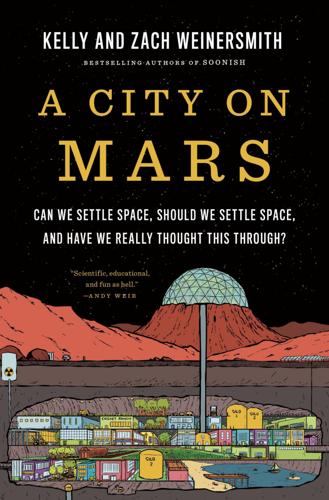
A City on Mars: Can We Settle Space, Should We Settle Space, and Have We Really Thought This Through?
by
Kelly Weinersmith
and
Zach Weinersmith
Published 6 Nov 2023
Accessed October 20, 2022. https://history.state.gov/milestones/1989-1992/breakup-yugoslavia. Ogneva, Irina V., Maria A. Usik, Sergey S. Loktev, Yuliya S. Zhdankina, Nikolay S. Biryukov, Oleg I. Orlov, and Vladimir N. Sychev. “Testes and Duct Deferens of Mice during Space Flight: Cytoskeleton Structure, Sperm-Specific Proteins and Epigenetic Events.” Scientific Reports 9 (2019): 9730. https://doi.org/10.1038/s41598-019-46324-3. O’Kane, Sean. “Space Birth Startup’s CEO Halts Project over ‘Serious Ethical, Safety and Medical Concerns.’ ” The Verge, July 3, 2019. https://www.theverge.com/2019/7/3/20680006/space-birth-startup-project-ceo-serious-ethical-safety-medical-concerns-halt.

The Sovereign Individual: How to Survive and Thrive During the Collapse of the Welfare State
by
James Dale Davidson
and
William Rees-Mogg
Published 3 Feb 1997
In other words, the human mind is not a tabula rasa, or blank slate, but a hard drive with prewired circuits that make certain responses more readily learned and attractive than others. Thus the proposition that the mind is disposed to think in terms of an out-group that excites enmity or hostility and an in-group to which one feels great amity or loyalty usually reserved for kin.60 This epigenetic tendency to behave with an in-group as if it comprised close relatives creates a vulnerability to manipulation that has commonly been exploited by nationalists to engender sacrificial support for the state. In that sense, it is not a 220 coincidence that nationalist propaganda everywhere is dressed up in the vocabulary of kinship.

The Relentless Revolution: A History of Capitalism
by
Joyce Appleby
Published 22 Dec 2009
All cultures are natural in that they draw upon inherent human qualities and there are many potentialities planted in the human breast. Not all human qualities are called into play in every culture. Culture is a selecting mechanism, choosing among the diverse human skills and propensities to fashion a way for people to live together in a specific location at a certain time. A growing field in biology, epigenetics, studies how particular environments activate certain genes in human beings that can then be passed on to their progeny. Without the environmental trigger, the gene remains inert. This suggests that there is a very intricate interchange between our biology and our culture, one that goes well beyond the familiar nature-nurture relationship.
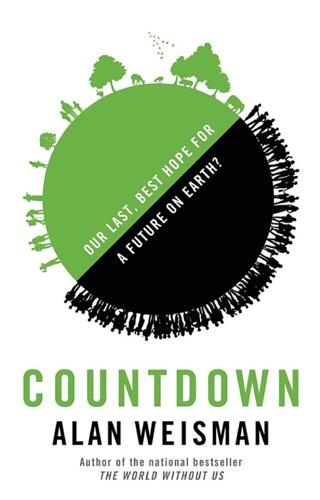
Countdown: Our Last, Best Hope for a Future on Earth?
by
Alan Weisman
Published 23 Sep 2013
Endocrine Reviews (2009) 30(4):293–342. “Difference Engine: Waste Not, Want Not.” Economist, January 20, 2012. Doherty, Leo F., Jason G. Bromer, Yuping Zhou, Tamir S. Aldad, Hugh S. Taylor. “In Utero Exposure to Diethylstilbestrol (DES) or Bisphenol-A (BPA) Increases EZH2 Expression in the Mammary Gland: An Epigenetic Mechanism Linking Endocrine Disruptors to Breast Cancer.” Hormones and Cancer, June 2010, 1(3):146-55 Draper Jr., William H. “Oral History Interview with General William H. Draper Jr.,” by Jerry N. Hess. Harry S. Truman Library, January 11, 1972. http://www.trumanlibrary.org/oralhist/draperw.htm.

Nexus: A Brief History of Information Networks From the Stone Age to AI
by
Yuval Noah Harari
Published 9 Sep 2024
In our brains, new synapses form within hours.6 Just reading this paragraph, for example, is changing your brain structure a little, encouraging neurons to make new connections or abandon old links. You are already a little different from what you were when you began reading it. Even at the genetic level things are surprisingly flexible. Though an individual’s DNA remains the same throughout life, epigenetic and environmental factors can significantly alter how the same genes express themselves. So an alternative health-care system may instruct its algorithm not to predict my illnesses, but rather to help me avoid them. Such a dynamic algorithm could go over the exact same data as the rigid algorithm, but instead of predicting a heart attack at fifty, the algorithm gives me precise dietary recommendations and suggestions for specific regular exercises.
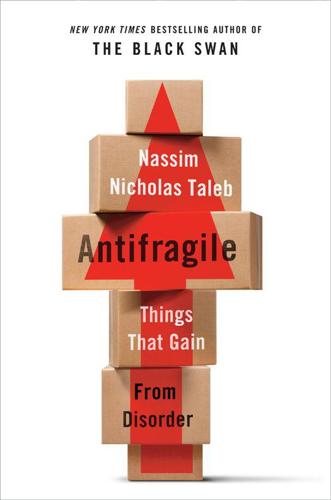
Antifragile: Things That Gain From Disorder
by
Nassim Nicholas Taleb
Published 27 Nov 2012
Gigerenzer, et al., 1999, “How Good Are Simple Heuristics?” Dahl, Robert A., and Edward R. Tufte, 1973, Size and Democracy. Stanford: Stanford University Press. Danchin, A., P. M. Binder, et al., 2011, “Antifragility and Tinkering in Biology (and in Business) Flexibility Provides an Efficient Epigenetic Way to Manage Risk.” Genes 2(4): 998–1016. Darnton, Robert, 2010, The Devil in the Holy Water, or The Art of Slander from Louis XIV to Napoleon. University of Pennsylvania Press. Daston, Lorraine, 1988, Classical Probability in the Enlightenment. Princeton, N.J.: Princeton University Press. Davidson, P., 2010, “Black Swans and Knight’s Epistemological Uncertainty: Are These Concepts Also Underlying Behavioral and Post-Walrasian Theory?”
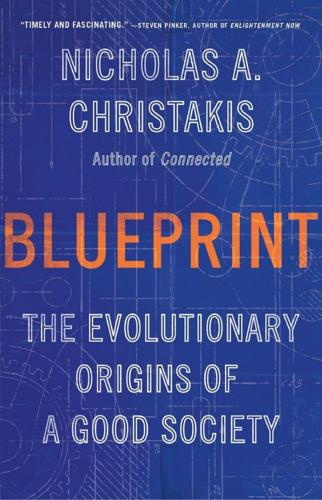
Blueprint: The Evolutionary Origins of a Good Society
by
Nicholas A. Christakis
Published 26 Mar 2019
Knafo et al., “Individual Differences in Allocation of Funds in the Dictator Game Associated with Length of the Arginine Vasopressin 1a Receptor RS3 Promoter Region and Correlation Between RS3 Length and Hippocampal mRNA,” Genes, Brain and Behavior 7 (2007): 266–275. Other experiments have shown that partner preference is not just regulated genetically; it is also regulated epigenetically. This refers to a set of biological processes that affect how genes are expressed through processes outside the genetic sequence itself—like a set of biological on/off switches. H. Wang, F. Duclot, Y. Liu, Z. Wang, and M. Kabbaj, “Histone Deacetylase Inhibitors Facilitate Partner Preference Formation in Female Prairie Voles,” Nature Neuroscience 16 (2013): 919–924.
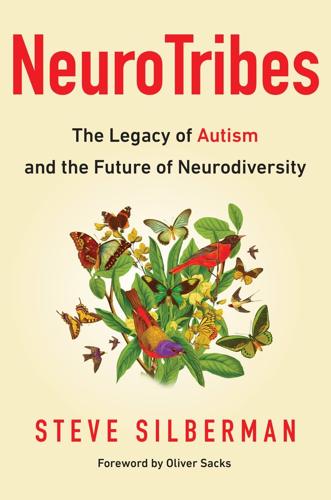
NeuroTribes: The Legacy of Autism and the Future of Neurodiversity
by
Steve Silberman
Published 24 Aug 2015
The organization’s vice president of scientific affairs, Andy Shih, promised that the project would generate “a transformative level of information.” By the end of the decade, it was clear that the scientists had done just what they had been paid to do. Molecular biologists had identified more than a thousand candidate genes and hundreds of de novo mutations associated with autism. They had also come to a greater understanding of epigenetics, the science of factors that mediate interactions between genes and the environment. The list of suspected environmental triggers for autism seemed to grow longer every day, encompassing dozens of chemicals in common use, prompting Forbes science writer Emily Willingham, the mother of an autistic son, to write a blog post with the headline, “This Just In . . .
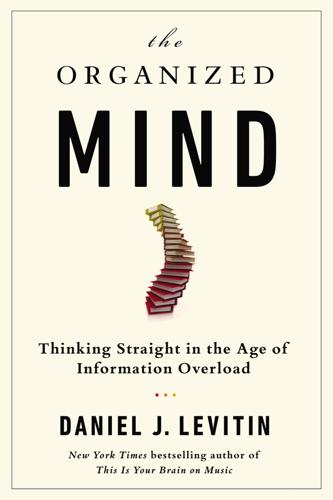
The Organized Mind: Thinking Straight in the Age of Information Overload
by
Daniel J. Levitin
Published 18 Aug 2014
The correlation is not perfect: Not every smoker dies of lung cancer and not everyone who dies of lung cancer was a smoker. Some smokers live long lives and die of other things—there are many people who continue to smoke into their eighties and nineties. Some lung cancers appear in nonsmokers, and could be based on genetic or epigenetic factors, exposure to radiation, or other factors. But the correlation between smoking and lung cancer is strong—90% of lung cancers occur among smokers—and scientists have identified a plausible underlying mechanism: toxic chemicals within the smoke-damaged lung tissue. No one has proven that smoking causes lung cancer with a controlled experiment, but we infer causation.
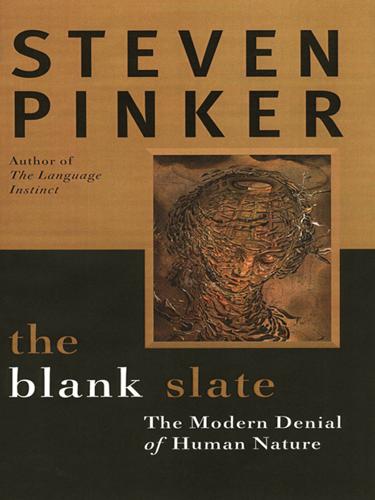
The Blank Slate: The Modern Denial of Human Nature
by
Steven Pinker
Published 1 Jan 2002
Krebs (Eds.), Handbook of evolutionary psychology: Ideas, issues, and applications. Mahwah, N.J.: Erlbaum. Krech, S. 1994. Genocide in tribal society. Nature, 371, 14–15. Krech, S. 1999. The ecological Indian: Myth and history. New York: Norton. Krubitzer, L., & Huffman, K. J. 2000. A realization of the neocortex in mammals: Genetic and epi-genetic contributions to the phenotype. Brain, Behavior, and Evolution, 55, 322–335. Krueger, R. F., Hicks, B. M., & McGue, M. 2001. Altruism and antisocial behavior: Independent tendencies, unique personality correlates, distinct etiologies. Psychological Science, 12, 397–402. Kubovy, M. 1981. Concurrent pitch segregation and the theory of indispensable attributes.

Growth: From Microorganisms to Megacities
by
Vaclav Smil
Published 23 Sep 2019
The multidisciplinary nature, the growing extent, and accelerating pace of these advances means that new findings are now reported overwhelmingly in electronic publications and that writing summary or review books in these fields are exercises in near-instant obsolescence. Still, among the recent books, those by Macieira-Coelho (2005), Gewirtz et al. (2007), Kimura (2008), and Kraikivski (2013) offer surveys of normal and abnormal cellular growth and death. Consequently, there will be no systematic treatment of fundamental genetics, epigenetics and biochemistry of growth, and I will deal with cellular growth only when describing the growth trajectories of unicellular organisms and the lives of microbial assemblies whose presence constitutes significant, or even dominant, shares of biomass in some ecosystems. Similarly, the focus with plants, animals, and humans will not be on biochemical specificities and complexities of growth at subcellular, cellular, and organ level—there are fascinating studies of brain (Brazier 1975; Kretschmann 1986; Schneider 2014; Lagercrantz 2016) or heart (Rosenthal and Harvey 2010; Bruneau 2012) development—but on entire organisms, including the environmental settings and outcomes of growth, and I will also note some key environmental factors (ranging from micronutrients to infections) that often limit or derail organismic growth.

Blue Mars
by
Kim Stanley Robinson
Published 23 Oct 2010
Some of the gardeners, Nanao said, worked according to the precepts of Muso Soseki, others according to other Japanese Zen masters; others still to Fu Hsi, the legendary inventor of the Chinese system of geomancy called-feng shui; others to Persian gardening gurus, including Omar Khayyam; or to Leopold or Jackson, or other early American ecologists, like the nearly forgotten biologist Oskar Schnelling; and so on. These were influences only, Tariki added. As they did the work, they developed visions of their own. They followed the inclination of the land, as they saw that some plants prospered, and others died. Coevolution, a kind of epigenetic development. “Nice,” Sax said, looking around. For the adepts, the walk from Sabishii up onto the massif must have been an aesthetic journey, filled with allusions and subtle variants of tradition that were invisible to him. Hiroko would have called it areoformation, or the areophany. “I’d like to visit your soil labs.”
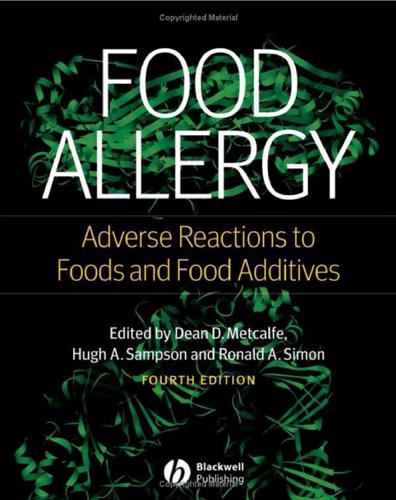
Food Allergy: Adverse Reactions to Foods and Food Additives
by
Dean D. Metcalfe
Published 15 Dec 2008
Although genetic factors are clearly important in the development of food allergy, the increase in food allergy has occurred over a short period of time and is therefore unlikely to be due to germ-line genetic changes alone. It seems plausible therefore that one or more environmental exposures may, through epigenetic changes, result in the interruption of the “default immunological state” of tolerance to foods. Strategies are therefore required for the prevention of food allergy: primary prevention strategies seek to prevent the onset of IgE sensitization, secondary prevention seeks to interrupt the development of food allergy in IgE-sensitized children, and tertiary prevention seeks to reduce the expression of “end-organ” allergic disease in children with established food allergy.